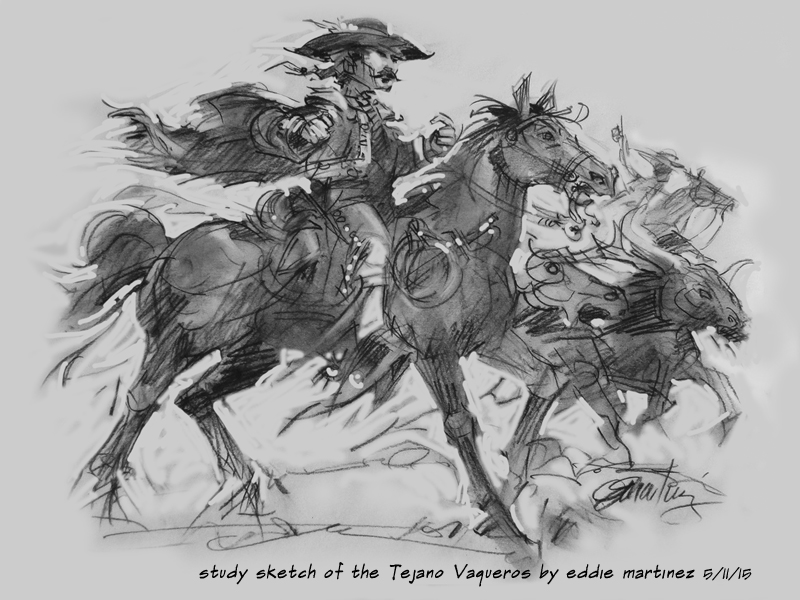
For more of
Eddie's sketches, click |
Somos Primos Editor: Mimi
Lozano ©2000-2015 To receive free monthly notification
|

For more of
Eddie's sketches, click |
Somos Primos Editor: Mimi
Lozano ©2000-2015 To receive free monthly notification
|
|
| "It is well that war is
so terrible - we should grow too fond of it." Robert E. Lee |
|
|
|||
| The Statue
of Father Serra Needs to Remain in
Washington, D.C. by Mimi Lozano 2015 LULAC National Convention, July 7-11, 2015, Salt Lake City, Utah 2015 NCLR National Convention, July 11-14, 2015, Kansas City, Kansas Review by Jose Antonio Lopez of new Hollywood movie, "Texas Rising" Patriotism and the American Flag A.J. Jacobs and the World’s Largest Family Reunion by Alex Williams Latino Book Awards Into Movies Awards War Bride by Daisy Wanda Garcia Mid-May marks two key anniversaries in conflict between United States and Mexico Reflections on the Treaty of Guadalupe Hidalgo and the Border it Established Commentary by Refugio L. Rochin 10th Summer Institute on Migration and Global Health |
|
CALIFORNIA SENATE HAS APPROVED THE REMOVAL OF FATHER
SERRA FROM THE |
|
The Statue of Father Serra Needs to Remain in
Washington, D.C. |
| When I first became aware of the action by
the California Senate, to remove Father Serra from the National Statuary
Hall, I was really puzzled, especially since the effort is being lead by
a Latino, California State Senator, Ricardo
Lara. Senator Lara's resolution is for California to remove
Father Junipero Serra statue from the National Hall of Statuary and replace
Father Serra with a statue of astronaut Sally Ride. The stated reason for
this action was in response to the goal of the art archivist for the Capitol:
United States history should be more representative of the nations diversity. This
should include the goal of more
women in the National Statuary Hall. However, considering the fact that
the Hispanic/Latino is the largest US minority, to remove one of
the few Hispanic figures (3 out of 100) appears to be a major
contradiction to the goal of diversity. "The National Statuary Hall Collection in the United States Capitol is composed of statues donated by individual states to honor persons notable in their history. Originally set up in the old Hall of the House of Representatives, renamed National Statuary Hall, the expanding collection has since been spread throughout the Capitol. With
the addition of New Mexico's second statue in 2005, the collection is
now complete with 100 statues contributed by 50 states. Alabama,
Arizona, California, Iowa, Kansas, and Michigan each replaced one of
their first two statues after Congress authorized replacements. A
special
act
of Congress, Pub.L.
109–116,
signed on December 1, 2005, directed the Joint Committee on the Library
to obtain a statue of Rosa
Parks
and to place the statue in the United States Capitol in National
Statuary Hall in a suitable permanent location. On February 27, 2013,
Parks became the first African American woman to have her likeness in
the Hall.[1]
Though located in Statuary Hall, Parks' statue is not part of the
Collection; neither Alabama (her birth state) nor Michigan (where she
lived most of her later years) commissioned it, and both states are
represented in the Collection by other statues." |
|
In the data below, using the term "white"
represents historic figures whose heritage was northern European. Very
early the United States
set quotas, opening doors very slowly to southern
Europeans.
The concept of a National Statuary Hall originated in the middle of the nineteenth century in 1857. The creation of a National Statuary Hall became law on July 2, 1864. In 1870 Rhode Island placed the first statue in place and a second in 1872, joined by Connecticut who placed two statues in 1872. http://en.wikipedia.org/wiki/National_Statuary_Hall_Collection Between 1870 and 1899 . . 30 years 24 statues were put in place, all were white European males.
Between 1900 and 1929 . . . 30 years
28 statues were put in place, 26 white European males, two females, one white European and the other indigenous
Between 1930 and 1959 . . . 30 years
24 statues put in place, 22 white European males,
two females and Father Serra, Southern European white male |
|
Currently, the statues
represent:
3 Native-American Males 2 Native-American Women 1 Native-Hawaiian 3 Hispanic/Latino Males: Father Junipero Serra Father Eusebio F. Kino Dennis Chavez 1 African American, by special act of Congress: Rosa Parks Thirty six (36) states have statues of two white male figures. Eleven other states have a white male statue, joined by either one of seven white females, and/or a minority. Those numbers 72+11+7= equals 90 statues. Thus 90% of all the statues on view in the Capitol are of white historic figures. See how your state represents itself historically in the National Hall of Statuary. |
|
|
| AK Alaska AR Arkansas CT Connecticut DE Delaware FL Florida GA Georgia IA Iowa ID Idaho IN Indiana |
KS Kansas KY Kentucky LA Louisiana MD Maryland ME Maine MA Massachusetts MI Michigan MO Missouri MS Mississippi |
NC North
Carolina
NE Nebraska NH New Hampshire NJ New Jersey NY New York OH Ohio OR Oregon PA Pennsylvania RI Rhode Island
|
SC
South Carolina SD South Dakota TN Tennessee TX Texas UT Utah VT Vermont VA Virginia WV West Virginia WI Wisconsin |
|
Below are the 14
states which have a statue dedicated to a woman
or a minority. |
|
AL Alabama
Helen Keller Joseph Wheeler AZ Arizona Barry Goldwater Father Eusebio F. Kino CA California Ronald Reagan
Junipero Serra
CO Colorado Florence R. Sabin
Jack Swigert
HI Hawaii
Father Damien
Kamehameha I
|
IL
Illinois
James Shields
Frances E.
Willard
MN Minnesota
Henry Mower Rice Maria L. Sanford
MT
Montana
Charles Marion Russell
Jeannette
Rankin
ND North
Dakota
John Burke
Sakakawea
NV Nevada
Patrick Anthony McCarran
Sarah
Winnemucca
|
New Mexico
Dennis Chavez
Po'pay
OK
OklahomaSequoyah
Will Rogers
WA Washington
Marcus Whitman
Mother Joseph
WY Wyoming
Esther Hobart Morris
Male Chief
Washakie
|
| I called California State Senator Ricardo Lara's office and voiced my strong disapproval of removing Father Serra. He sent the following communication. I followed up with a letter which is also included below. | |||||
|
In a message dated 5/28/2015 2:29:11 P.M. Pacific Daylight Time, Senator.Lara@outreach.senate.ca.gov writes:
|
|
Dear Senator Lara:
I thank you for responding to my query about SJR 4. Simply stated: as an educated Latino and an elected official, I truly can not understand why you would choose to remove one of only two historic Hispanic figures out of all the 100 statues in the National Hall of Statuary, and would even consider replacing it with anyone other than a Hispanic/Latino. Those of us who have been laboriously fighting for knowledge of the facts that we Latinos were part of this United States, before there was a United States, are dismayed. Latino activist historians have fought the Ken Burns, and those that would deny us inclusion, many out of ignorance. But you . . . must we also battle for inclusion with someone who carries a Spanish surname. Hispanic/Latinos are all over the United States, and increasing in visibility. Think of all the American tourists, foreigners, bus loads of students who will view the statues and come away wondering about us. How is it that we are the largest minority and DC has no real historic explanation? Ask yourself. We are not all newly arrived (legal or not legal) Mexicans, South Americans, Puerto Ricans, and Cubans. My ancestors were among the earliest European explorers and colonizers. One ancestor, Juan Bautista Chapa was exploring northern Texas in the 1630s, while the English colonists were starving at Plymouth. My Arocha and Urrutia ancestors were among the civil founder of San Antonio in 1731.
Why do you take it so lightly, and have convinced some of your
colleagues that removing our small representation in the Hall
of Statuary, currently 2%, to 1% would not be a shock
to all the groups, individuals, and organizations that are actively
engaged in promoting an understanding of the Spanish presence in
both the founding and development of the United States. [Readers
this is corrected to 3%]
I understand that the archivist in DC has suggested that she would
welcome inclusion of women in the Hall of Statues. That sounds
reasonable; but, why does it have to be California who sacrifices a
space, and why the removal of a Hispanic figure, leaving only one
Hispanic statute among the 100? Certainly there are outstanding
women among the other 49 states who could fill
that void.
I am sad, hurt, and bewildered that the leadership to remove
Father Serra's statue is being lead by you, a Lara.
Indeed, if you want to promote Sally Ride, place her statue in
the Space Museum. She will probably get more visibility there than
among the 100 statues of the National Hall of Statuary.
When I first read about the removal of Father Serra, it hit me like the first brick was being thrown, a new battle against us. What came to mind was the Night of Broken Glass, November 9-10, 1938 when Germans citizens turned against the German Jews, breaking shop fronts and much more. We have been and it appears once again Spanish/Hispanic/Latinos are being targeted for demeaning. The message which this act carries is that again our community is unimportant, we are inconsequential and don't matter. We will vote Democrat regardless. Hum m m? Your suggestion that Father Serra be placed, some where in California, or bounce from Mission to Mission, I would think as fiscally untenable.
We need a presence in Washington, DC. . . not in California. We
are 50% of the population in California. We are seen,
but not understood by the general population.
The removing of Father Serra from the National Hall of Statuary will add to the confusion which exclusion and blackened distorted history has placed on Hispanics/Latinos in the United States.
Please reconsider what you are doing. Surely you do not
understand the harm. Our youth have got to connect to
their history. Do not erase it from Washington, D.C.
|
| Dear Primos . . The
Resolution has not
passed the California House yet, and if it does, it will require Governor
Brown's signature.
I hope that the figures above shock you into taking action. If striving for diversity is the intent of the National Hall of Statuary archivist, where is the justification to remove Father Junipero Serra to put in another white historic figure, even if it is a female? Currently white females, are 7% of the figures, and Hispanic/Latino figures are 3%. If Father Serra is removed, Hispanic/Latinos who are the largest US minority will be represented by only 2 figures (2%) out of a 100 statues. Washington needs to know that we are here, and have been here since before the United States won its freedom from England. To remove the foundation laid by the sacrifices of the selfless Catholic priests in the earliest colonization of the United States is inaccurate history . . . perpetuated, it is false history. God bless America, our Country . . . .
Mimi For sainthood information: Click
to article by Nicole Winfield, The Associated Press |
| H |
 H |
|
2015 LULAC National Convention,
July 7-11, 2015,
Salt Lake City, Utah |
H
http://www.nclr.org/index.php/events/nclr_annual_conference/ |
|
|
| To All: Of the many early Texas history articles I’ve written, none is more meaningful to me than this one. To put it bluntly, Hollywood & Hollywood-inspired movies are our biggest obstacles in carving the memory of our brave Spanish Mexican pioneers into the seamless telling of Texas history. We must not let post-1836 stories keep us from having our ancestors (men & women of faith, courage, & tremendous resourcefulness) recognized as the true founders of this great place we call Texas. In the words of Admiral David Farragut, “Damn the torpedoes, full speed ahead!”, my sincerest wish is for each of us to ignore this latest torpedo called “Texas Rising”. 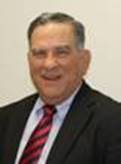 Instead, let’s look ahead and continue on our path carrying early Texas history from the Tejano Monument in Austin directly to the pages of Texas social studies & history text books. If we stay together, we’ll make it happen. Thanks. Instead, let’s look ahead and continue on our path carrying early Texas history from the Tejano Monument in Austin directly to the pages of Texas social studies & history text books. If we stay together, we’ll make it happen. Thanks. Saludos, José Antonio “Joe” López |
|
NEW HOLLYWOOD MOVIE: TEXAS RISING |
|
In 1960, at the height of the Cold War, John Wayne released a movie to display his hatred of communism. Searching for a storyline, he chose (sadly) the 1836 Battle of the Álamo to superimpose his bias. Therein, he portrays the Anglo illegal immigrants in Mexico as the good guys (the U.S.); and the Mexican Army (the legitimate national military force in Texas) as the bad guys (the Soviet Union). |
| Patriotism and the American Flag Editor Mimi: With so many anti-American flag incidents across the country, thought these would be an encouragement, there are still American patriots willing to stand up. |
| The
Greatest Play In Baseball
On April 25, 1976 at Dodger Stadium, Rick Monday of the Chicago Cubs, grabbed and secured the American flag from two individuals as they were attempting to burn our flag in the middle of the playing field. It was an outstanding display of American Patriotism. http://agencypages.net/AgencyPages/11-52/ Texas Tenors https://www.youtube.com/embed/daqwGRdRIsk?feature=player_detailpage Sent by Oscar Ramirez osramirez@sbcglobal.net The Accurate Story Behind the Star Spangled Banner by Dudley Rutherford |
|
A.J. Jacobs and the World’s Largest Family Reunion |
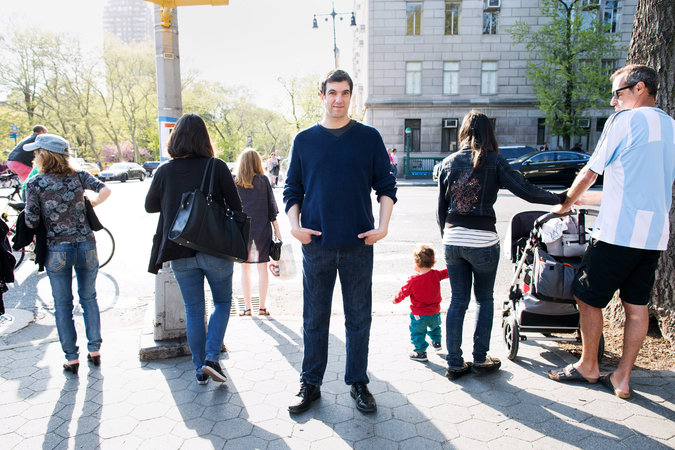 |
|
A. J. Jacobs is organizing a Global Family Reunion to celebrate the premise that essentially everyone on earth is related.
Photo Credit Brian Harkin for The New York Times A. J. Jacobs, the best-selling author and humorist, was hoping to get former President George H. W. Bush on the telephone for a project involving genealogy. There was only one way to accomplish that, he reasoned: nepotism. “I called his chief of staff and explained that I was a long-lost cousin,” he said. It was not exactly a fib. Mr. Jacobs and the 41st president can be found 21 genealogical steps from each other, through marriage, on interlocking family trees, according to data Mr. Jacobs unearthed on genealogy sites like Geni.com, he said. He used the same “we’re cousins” approach with Ludacris (39 steps) and Daniel Radcliffe (29). “It’s one of the best icebreakers,” Mr. Jacobs, 47, said. “It’s the new LinkedIn.” Mr. Jacobs’s relation to these notables, however tangential, was the precise reason he was reaching out: He was inviting them to participate in the Global Family Reunion, a celebrity-dotted, convention-size mega-reunion he is organizing for June 6 in New York in celebration of his family, and your family — in short, everyone’s family. 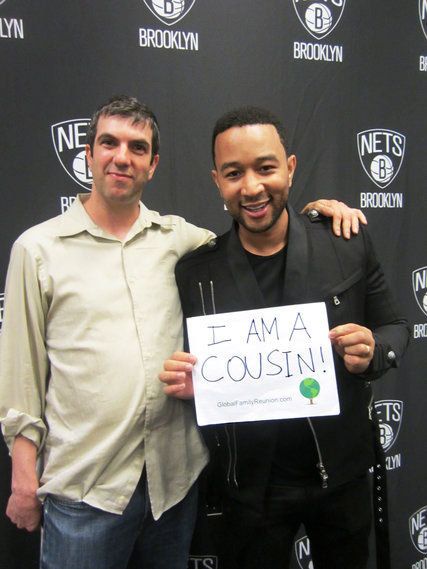 Mr. Jacobs with one of his extremely distant cousins, John Legend.
The “family of man,” it seems, is no longer just an Age of Aquarius-era cliché. Research, like a 2002 study published in the journal Science, has shown that humans share 99.9 percent of their DNA. And our family ties to each other are becoming increasingly transparent in the era of mail-in DNA-testing services like 23andMe that purport to provide detailed data on shared bloodlines, and online genealogy databases that compile family super-trees that include millions of people from around the globe. Mr. Jacobs with one of his extremely distant cousins, John Legend.
The “family of man,” it seems, is no longer just an Age of Aquarius-era cliché. Research, like a 2002 study published in the journal Science, has shown that humans share 99.9 percent of their DNA. And our family ties to each other are becoming increasingly transparent in the era of mail-in DNA-testing services like 23andMe that purport to provide detailed data on shared bloodlines, and online genealogy databases that compile family super-trees that include millions of people from around the globe.Realizing these vast familial connections, Mr. Jacobs said to himself, “I have millions of relatives — why not throw the biggest family reunion ever?” The daylong event, which he sees as part TED talk, part Coachella and part family picnic, will be held at the New York Hall of Science on the old World’s Fair grounds in Queens. Benefiting Alzheimer’s research, it features scheduled appearances by dozens of notables, including a keynote address by Henry Louis Gates Jr., the Harvard professor and host of the PBS show “Finding Your Roots”; speeches by Dr. Mehmet Oz and Morgan Spurlock; illusionist feats by David Blaine; and performances by Sister Sledge (“We Are Family”) and Paul Williams (“Rainbow Connection”). The 41st president is sending a greeting by video. As with any family reunion, there will be scavenger hunts and sack races, too, not to mention plenty of food, in this case from around the world. In addition, thousands more are expected to join through more than 30 satellite parties worldwide, including ones in Cusco, Peru; Invercargill, New Zealand; and Park Hill, Okla. (for Cherokee Nation members). Since everyone, theoretically, is invited, Mr. Jacobs hopes to challenge the Guinness World Record for the largest family reunion, currently held by the Porteau-Boileve family in France, whose 2012 bash drew 4,514. (With nearly a month to go, more than 1,000 tickets, most going for $30, had been sold). The question one may ask is why? Mr. Jacobs, an Esquire writer and a contributor to The New York Times, is the author of four books and is best known for his journalistic stunts, like s his 2008 comic best-seller, “The Year of Living Biblically,” in which he attempted to follow the literal decrees of the Scriptures while living in New York. But the reunion, he said, is not a gag, nor is it a promotion for his book on genealogy, “It’s All Relative,” which he has yet to finish. “I fell in love with this idea that for the first time in history, we can show that humans are all part of one big family,” he said. “If we’re so close, so interconnected, maybe we should treat each other with a little more kindness, a little less jerkiness.” He certainly picked an auspicious moment to throw an ancestry Lollapalooza. Genealogy, once considered a fusty hobby for retired librarian aunts, has exploded as a mainstream obsession, thanks to sites like Ancestry, WikiTree and MyHeritage and television shows like “Finding Your Roots” and “Who Do You Think You Are,” which started on NBC and is now on TLC. Mr. Jacobs’s own fascination with the topic started two years ago, when he received an email from a fan that began, “You don’t know me, but I’m your 12th cousin.” “Of course, I thought he was going to ask me to wire $10,000 to a bank in Nigeria,” Mr. Jacobs said. “But it turned out, he’s part of a group of people compiling these massive, mega-family trees. They’re not even ‘trees’ anymore, they’re forests.” Familysearch.org, for example, has stitched together tens of thousands of user-contributed family trees from around the world. The single-largest tree contains 240 million people; Geni.com’s World Family Tree has 91 million. Part of the swelling interest is simple vanity. Such giant trees allow users to search for long-hidden ties to any number of luminaries, like (in his case) Albert Einstein or Mila Kunis, he said. “It’s ‘Six Degrees of Kevin Bacon,’ ” he added. “But everyone is Kevin Bacon.” A version of this article appears in print on May 10, 2015, on page ST11 of the New York edition with the headline: Cousin Boris Can Bring the Borscht. Order Reprints| Today's Paper|Subscribe
|
|
Latino Book Awards Into Movies Awards |
|
The second edition of the Latino Books Into Movies Awards were held on April 21st at the University of Southern California as part of the Los Angeles Times Festival of Books. The awards were presented from the HOY Stage during the very active weekend of book related activities. The judges for these awards are film industry professionals: Producers, Directors, Screenwriters, and Film Financiers. The judges were Ruben
Arvizu, Kevin Bender, Nora de Hoyos Comstock, Benjamin Esparza, Paul Espinosa, Evelina Fernandez, Jackie Gil, Marcos Gonzalez, Danny
Haro, Bel Hernandez, Ruth Livier, Alma Martinez, Dave Mendez, Lymari
Nadal, Luis Orozco, Gabriel Reyes, Baldemar Rodriguez, Carlina Rodriguez, Margarita de la
Vega-Hurtado, and Richard Yñiguez. Kirk Whisler and Annie Perez oversaw the awards process. While film making is a very slow business, one of the books from the first batch of winners has already gotten a production deal. Latino Literacy Now appreciates the sponsor support it has received this year for the upcoming International Latino Book Awards. Sponsors include Scholastic, Libros Publishing and Las Comadres Para Las Americas. The 14th Annual Int’l. Latino Book Awards will be held June 5th at Instituto Cervantes in New York City. Latino Literacy Now’s Latino Book & Family Festival earlier this month held it’s 49th event in Chicago. The Festivals have drawn over 800,000 attendees over the past two decades. For more information about the Festivals and the Awards, please visit www.LBFF.us. For more information, please contact Kirk Whisler, Latino Print Network, 760-434-1223 |
|
|
|
When the Garcia family in Mercedes
TX heard that their brother Hector was getting married, they were so
elated. The bride to be was
an Italian with a Ph.D. Captain
Garcia served as an officer in the U.S. Army Infantry, engineer
Corps and Medical Corps in the European theater and attained the rank of
major. He met Wanda Fusillo, my future mother, while she worked for the
Americans. Mama said Nini
Dauria her best friend introduced them at a supper at their house.
Papa married Wanda, a month after she finished her doctoral
studies in liberal arts. The Garcia family valued education
above all, so this was a big plus in their eyes. According to Dr. Dalia
Garcia, She and Cleo, Papa’s sisters were tasked with buying the
wedding dress, veil and shoes. They
took the bus to Brownsville, because in those days cars were scarce.
When they arrived at Brownsville, they went to Manitou the most
elaborate store in town. They bought the dress and veil but had problems
with the shoes because of my mother’s shoe size.
|
| H |
| My grandfather Jose bought the wedding ring.
Then wedding paraphernalia was shipped to Naples, Italy in two
shipments according to Dalia. When the package holding the dress was unloaded, it slipped and fell in the water and was ruined my mother recalled. Lucky for my mother a local seamstress had experience with wedding dress catastrophes, washed the dress and it looked like new. Meanwhile my father persuaded the priest to shorten the time for the publishing of the bans so they could marry. When my father told mama about the waiver, she was shocked because in Italy this was unheard of. I do not know much about the wedding since I was not yet on the scene except that Mama’s two neighbors were the flower girls. One of them had a serious heart condition caused by rheumatic fever. Because it was after the war, wedding favors were simple and for their wedding the favors were Jordan almonds in different containers. I still have two of the containers. I don’t remember Mama saying much about the cake. |
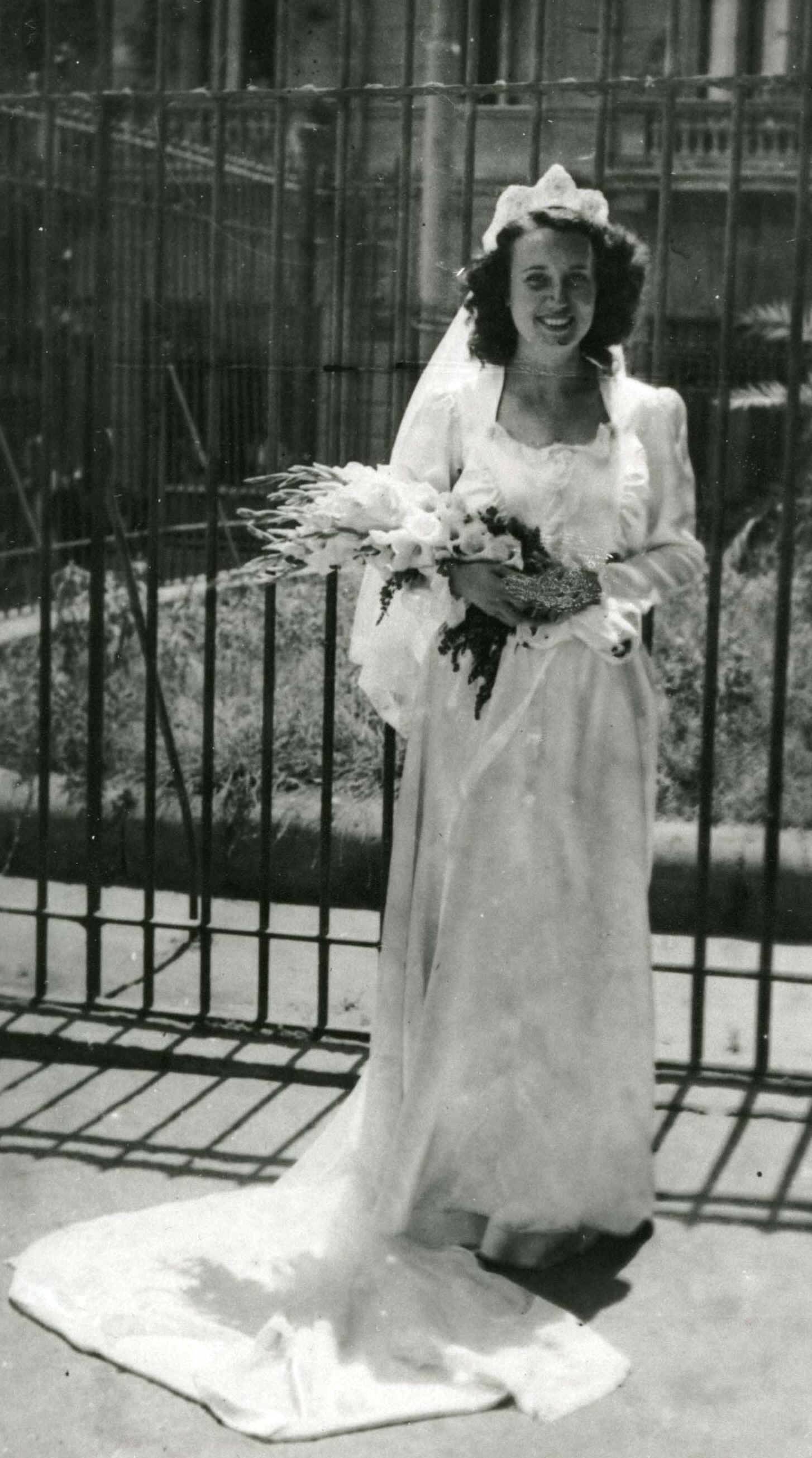 |
| H |
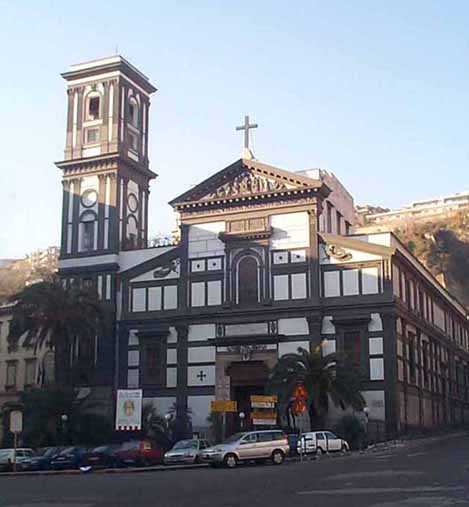 |
The wedding was held on June 24, 1945, at the Church of Santa Maria de La Piedigrotta. The church has a history rooted in Italy’s ancient past. It was built at the site of an older chapel sheltering a wooden Byzantine icon of the Virgin dell'Itria (Odigitria) which was at the site originally. Legend holds the Virgin appeared to three individuals requesting the church to be built. Photo: Around Naples www.napoli.com |
| H |
| The church of the Santa Maria de la
Piedigrotta was built and consecrated about 1353 and dedicated to the
Birth of the Virgin. In 1453, it was ceded to the Canons Regular of the
Lateran, and it is still belongs to the order.
It was in these ancient walls under the loving gaze of the Blessed Mother that my parents exchanged their vows and became husband and wife. There are many pictures of the new couple in front of the church. My favorite is one with the bridesmaid holding up the elaborate veil. The veil had hearts made of lace and a lace crown holding the veil on my mother’s head while she held white gladiolas. Of course Papa wore his army uniform. H |
|
|
| H |
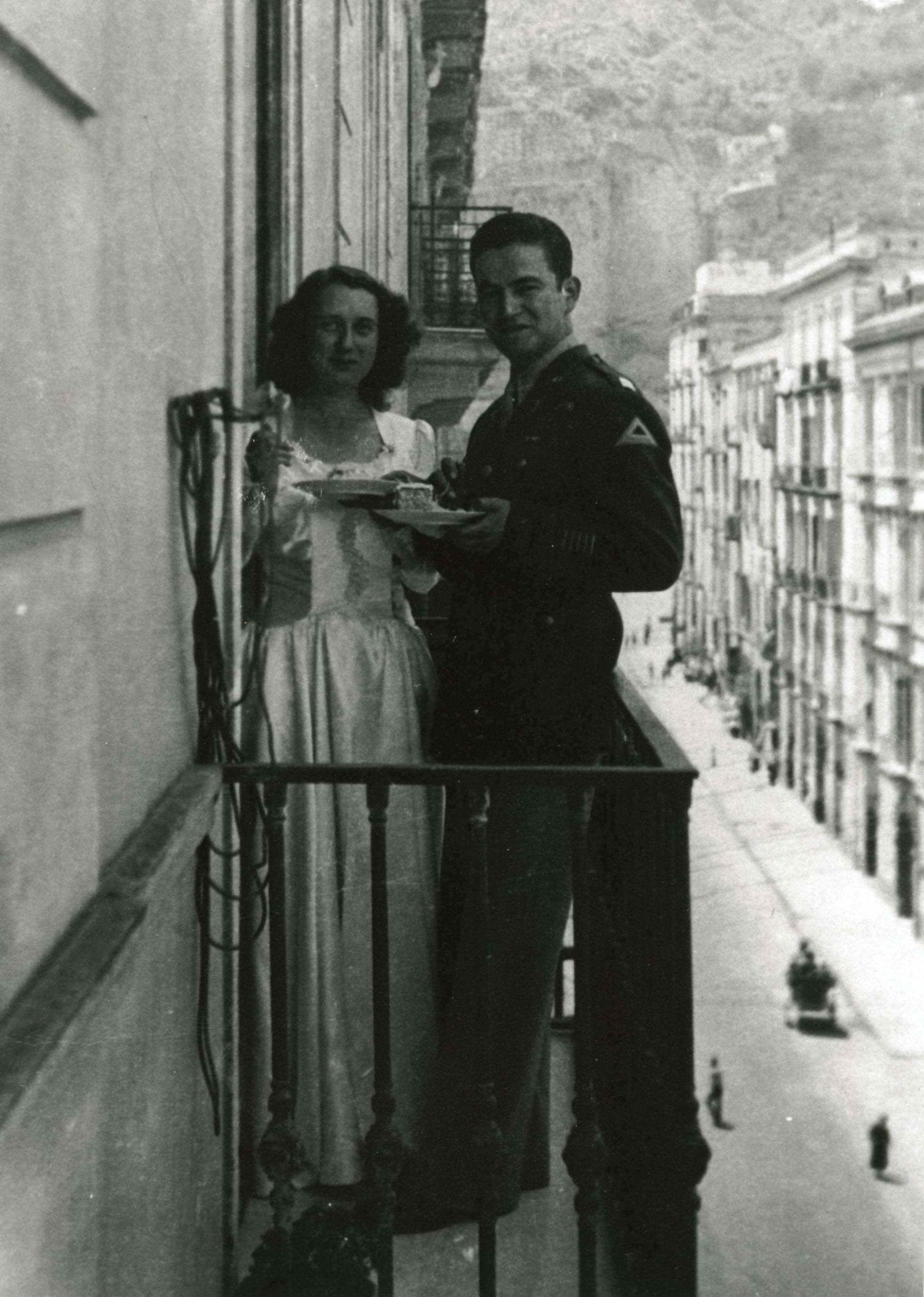 After the reception, the couple went to Ischia for their honeymoon. Later, my father returned to the United States to begin his career. My mother stayed in Italy awaiting the birth of her first child. I was born in Naples, Italy and lived with my grandmother and her brothers. One of my earliest memories was of my Grandmother and uncles, Manrico, Peppino and Ruggero, pointing to the light fixture saying “il fiamma” while I lay in the bed. When I was baptized, Nini Dauria, my mother’s best friend, was my godmother and gave me a gold charm of an elephant. The elephant signified good luck. I treasure this charm. One year later, Mama and I journeyed to the United States to join Papa in Corpus Christi, Texas, where he set up his medical practice and the rest is well-known history. |
|
|
| H |
| H |
|
|
Mid-May marks two key anniversaries in the conflict between the United States and Mexico that set in motion the Civil War—and led to California, Texas, and eight other states joining the Union. By National Constitution Center Staff
|
|
| On May 13, 1846, the United States Congress declared war on Mexico after a request from President James K. Polk.
Then, on May 26, 1848, both sides ratified the peace treaty that ended the conflict. In between those dates was enough drama to last for generations and the appearance of some familiar names that would dominate the Civil War, from President Abraham Lincoln to General Robert E. Lee. To save space and make a long story short, the conflict centered on the independent Republic of Texas, which opted to join the United States after establishing its independence from Mexico a decade earlier. The new U.S. president, James K. Polk, also wanted Texas as part of the United States, and his predecessor, John Tyler, had a late change of heart and started the admission process before he left office. Polk and others saw the acquisition of Texas, California, Oregon, and other territories as part of the nation’s Manifest Destiny to spread democracy over the continent. The U.S. also tried to buy Texas and what was called “Mexican California” from Mexico, which was seen as an insult in Mexico, before war broke out. Mexico considered the annexation of Texas as an act of war, and after border skirmishes, President Polk asked for the war declaration, since in Article I, Section 8 of the Constitution, only Congress can declare a war. In the fighting that followed, the mostly volunteer United States military secured control of Mexico after a series of battles, and the Treaty of Guadalupe Hidalgo was signed on February 2, 1848. It was the first large-scale success of a United States military force on foreign soil. Mexico received a little more than $18 million in compensation from the United States as part of the treaty. The pact set a border between Texas and Mexico, and ceded California, Nevada, Utah, New Mexico, most of Arizona and Colorado, and parts of Oklahoma, Kansas, and Wyoming to the United States. In today’s terms, those 10 states account for 136 electoral votes, more than half of the votes needed to secure a win a presidential election. It also cut the territorial size of Mexico in half. On the surface, the war’s outcome seemed like a bonanza for the United States. But the acquisition of so much territory with the issue of slavery unresolved lit the fuse that set off the Civil War in 1861. The underlying issue of how adding new states and territories would alter the balance between free and slave states was critical. The Missouri Compromise of 1850 attempted to appease Southern concerns about the shifting balances, but the die was cast as the nation headed toward the Civil War in 1861. The Treaty of Guadalupe Hidalgo also set in motion a whole range of issues for Mexican-Americans and Native Americans. During the conflict, one of the vocal objectors in the Whig party was Representative Abraham Lincoln from Illinois. Key players on the political side included Jefferson Davis and Stephen Douglas. On the battlefield, Robert E. Lee, Ulysses S. Grant, and Stonewall Jackson were among the dozens of commanders who would later emerge in the Civil War. http://news.yahoo.com/mexican-american-war-nutshell-095604272.html |
||
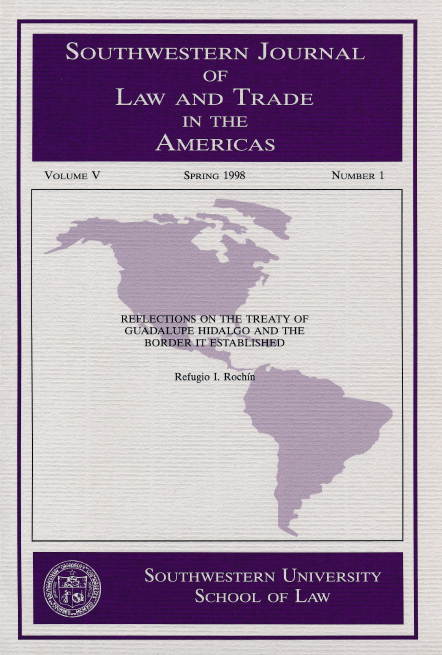 |
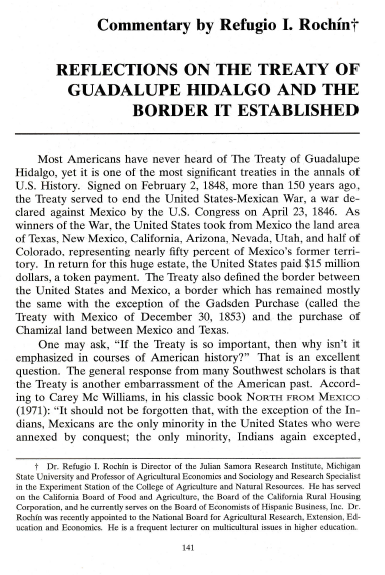 |
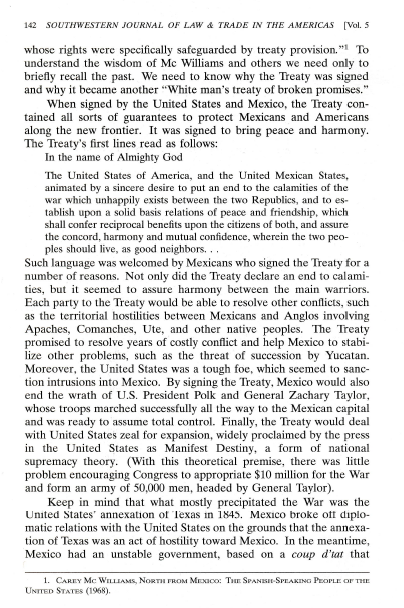 |
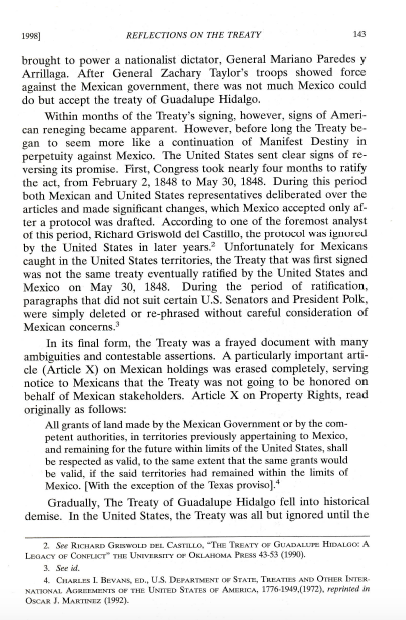 |
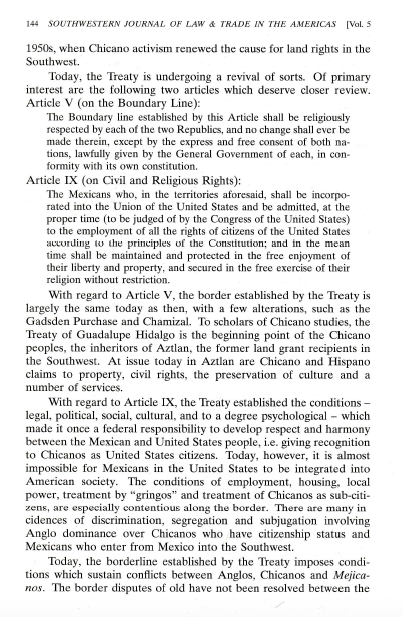 |
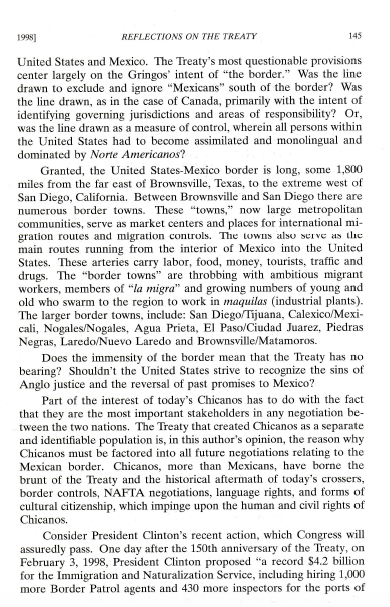 |
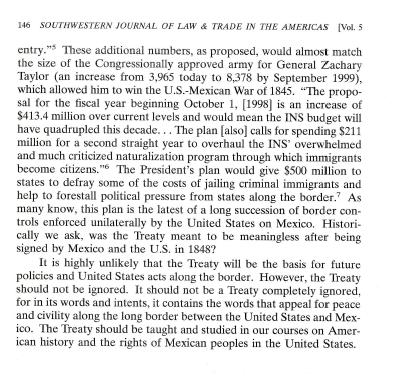 |
|
The Civil War's Forgotten Battlefield Blog by Mark Yzaguirre, Houston attorney and writer Posted: 05/04/2015 May 12 and 13 will mark the 150th anniversary of the last battle of the American Civil War: the Battle of Palmito Ranch. Chances are, most of the people reading this piece have never heard of that battle. Speaking personally, the main reason I'm aware of it is because it occurred on a tract of land that was owned by some of my ancestors. The battle was really more of a skirmish than a major engagement and it was located far from the famous battlefields of the Civil War, on the Texas-Mexico border near Brownsville, Texas. It took place over a month after General Robert E. Lee's surrender at Appomattox, even though the participants were well aware of Lee's surrender. While insignificant in the larger drama of the Civil War, the Battle of Palmito Ranch was a strange coda to the war that was in many ways a harbinger of the conflict over the postwar order that raged for decades throughout the South. The Confederacy won the Battle of Palmito Ranch and in doing so was able to maintain a stronger position in setting the terms of the postwar world in Texas. For example, the leader of the Confederate forces at Palmito Ranch went on to become a successful Texas journalist, Texas State Senator and the Mayor of Brownsville, Texas. Tom Zoellner has written an excellent piece about the battle in the Texas Observer, and I suggest that anyone reading this post read his article at the Texas Observer. Zoellner describes how the battle was fought by "a confusing array of French nationals, Yankees, African Americans, Tejanos and hardcore insurrectionists fighting each other for reasons that were hazy to most everyone concerned" as part of a larger struggle for access to port facilities across the border in Mexico, namely smuggling via a port with the evocative and ironic name of Bagdad. This lucrative trade helped provide a trickle of international commerce for the Confederacy during the Civil War as well as revenue for businessmen in Mexico, which was embroiled in its own civil war at the time. There's a detail in Zoellner's article that I think is worth noting and which I think tells us a lot about why the Battle of Palmito Ranch was linked to broader post-Civil War matters. Zoellner writes that "incredibly, French soldiers then occupying Mexico under the puppet emperor Maximilian I began taking potshots at [Union soldiers] from across the river. At least a few French officers were said to be on the north side of the Rio Grande helping the Confederates aim their cannons". Actually, that isn't so incredible, given American alliances in Mexico's civil war. Those who supported the Confederacy also generally supported the French-backed Imperialist forces in Mexico and the Union supported Benito Juarez's Republican army. President Abraham Lincoln supported Juarez and the United States probably would have intervened in France's installation of Maximilian as the Emperor of Mexico had it not been otherwise engaged in the Civil War and Reconstruction. (Events in Mexico played themselves out quickly anyway, as exhibited in these famous artworks by Edouard Manet.) In many ways, the Battle of Palmito Ranch was a minor battle over the much larger issues that would define the political terms in North America in the middle of the 19th Century. It had implications related to Manifest Destiny and the Monroe Doctrine as well as the epic struggle over slavery. While it can't be mentioned in the same breath as Gettysburg or Antietam, it does tell us something about the political and military machinations of that era and how intrigues on both sides of the US-Mexico border played themselves out during that era with terrible human costs. That is something worth remembering, as such intrigues aren't relegated to history books. Follow Mark Yzaguirre on Twitter: www.twitter.com/markyzaguirre Sent by Dorinda Moreno From: Gil Chavez barrioguy@yahoo.com |
|
10th Summer Institute on Migration and Global Health |
| If you are interested in migration and health issues, this is an event for you. The Summer Institute on Migration and Global Health provides a special opportunity to learn about the many health topics that affect mobile populations across the globe. Twenty-eight international experts from the U.S. and abroad will present updated and relevant information on the relationship between migration and health. From climate change to mental health, carefully selected speakers will offer different perspectives of public health, public policy, and social sciences. The Institute also includes workshops, poster presentations, field trips and social events that allow for the creation of new professional relationships. Participants can look forward to hearing presentations by these experts in this growing field, and many more. A detailed agenda is available on the event's website: www.Regonline.com/MigrationHealth2015 Dr. Davide Mosca, Director of Migration Health at the International Organization for Migration (IOM) in Geneva. A native of Taranto, Italy, Dr. Mosca has worked 26 years in Africa and the Middle East. He joined IOM in Mozambique in 1994. In 2003, Dr. Mosca coordinated the emergency health programs of IOM in the Middle East and Gulf Region, and implemented a program of medical evacuation of civilians affected by the war in Iraq in addition to health sector rehabilitation. More recently Dr. Mosca has played an important role in building cross-border public health capacity and safe migration systems in West Africa to contain Ebola and other infectious diseases. Dr. Cristina Tirado, associated with the UCLA School of Public Health Centers of Global Health and Immigrant Health and the Center of Public Health and Disasters. She has been involved in food, health and environment international research programs and policy making with the UN, international organizations and universities in Europe, Central Asia, North Africa, Middle East, South Asia and the Americas. Dr. Tirado is currently focused on addressing the challenges of climate change on health, food and nutrition security. Dr. Alfonso Rodriguez-Lainz, Migrant Health Specialist for the Centers for Disease Control and Prevention, Division of Global Migration and Quarantine. Dr. Rodriguez’s main responsibilities include acting as a liaison, coordinator, planner and project lead for domestic migrant health activities for the Division. Prior to joining the CDC, Dr. Rodriguez was the senior epidemiologist for the California Office of Binational Border Health, California Department of Public Health. He has extensive experience in coordinating cross-border surveillance and public health projects between California, Mexico and Latin America. More information about the Summer Institute and online registration is available below: https://www.regonline.com/builder/site/Default.aspx?EventID=1639230&Response MemberId=dUxcTbInU8RvCeywjgnT1A==&jID=474358 The 10th Summer Institute on Migration and Global Health is organized by the Health Initiative of the Americas at University of California, Berkeley; the UC Center of Expertise on Migration and Health; and the Center of Expertise on Women's Health and Empowerment. |
|
From Tejas to Bernardo de Gálvez & American
Revolutionary War, Eddie Martinez |
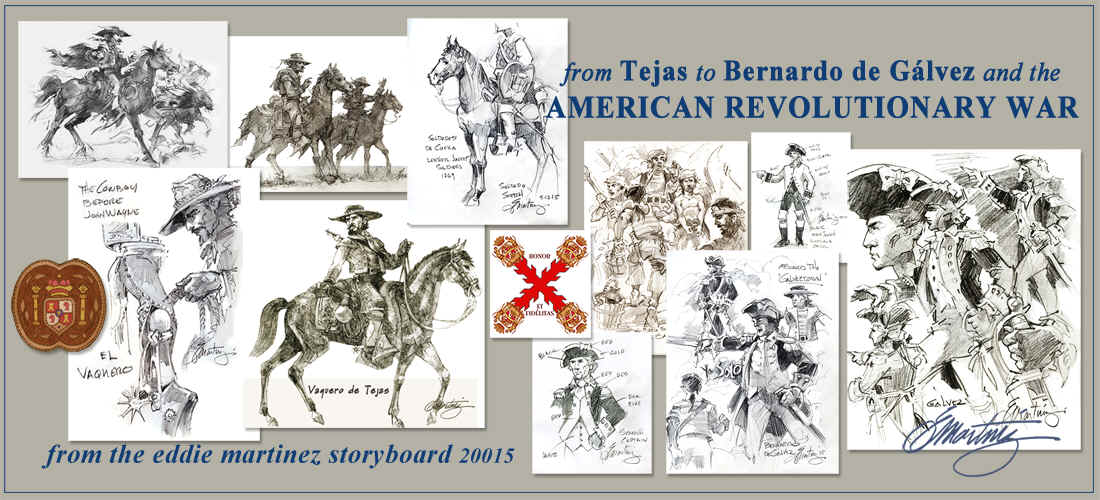 |
| In May Eddie and his wife traveled in the footsteps of
General Galvez speaking to historians, taking photos, and making
sketches. In July we will be starting a series in Somos Primos based on
their travels. Be sure and look for it and share with friends and
family. |
|
|
| Seldom has an eighteenth century figure prominent in the history of early California received such an enormous amount of media attention as the Franciscan Father Junípero Serra with so little understanding by the general public of his actual role during that period. This most recent work by Rose Marie Beebe and Robert M.
Senkewicz, professors at the University of Santa Clara, has at last resulted in a balanced account of Serra's life based wholly upon original documentary sources of the years under consideration.
Serra, in his own words, along with those of his contemporaries, has literally spoken through the authors about their deeds, their disappointments, their feelings, and the conditions of the times. Junípero Serra, born Miquel Josep on November 13, 1713, in the town of Petra on the island of Mallorca, joined the Order of Friars Minor (OFM) in Palma at a young age. He studied at the local Franciscan convent and remained as a teacher in Mallorca after receiving a doctorate in theology. Serra spent 18 years as a student and well-respected professor at the Llullian University. With the encouragement of his students, in 1749 he bid his family farewell to devote his life to preaching the gospel to those who were far removed from the teachings of Christ. The current announcement of Serra's canonization by Pope Francis I and the proposed removal of his statue from the Statutory Hall of Fame in Washington, D.C. have both increased the knowledge, as well as the lack thereof, about Serra's role as founder of the Alta (Upper) California mission system. Unfortunately there have been works unfairly characterizing the Spanish policy of missionization as genocide-a word that could not be further from the truth--and other phrases that simply do not reflect the documents of the period. The Spaniards under Serra were carrying out the Christian evangelization of the California natives with the goal of saving their souls, preparing them for a role within Spanish society, and offering them citizenship within the European community. That the natives often died of disease was a constant source of unhappiness among the Franciscans, who knew little about contagion and lacked modern medical practices, and became the subject of much of their writings. Oral traditions handed down by natives have more often been about later injustices rather than actions taken by missionaries during the period under consideration. This seminal work by translators and historians Beebe and Senkewicz has corrected the record with Serra's own words. It should be first on the list of sources used by those writers and media commentators who judge the actions of Serra during his lifetime. More accurate interpretations need to be adopted such as that formulated by California State University Professor Reuben Mendoza in an article entitled "History, truth, and politics: Researcher seeks to clear the record on Junípero Serra." Mendoza was trained in the Native American tradition of portraying Serra as a cruel and heartless soul who enslaved the Indians. He had not realized that his lack of understanding of the facts colored his viewpoint and those like him who had received false information from teachers, tour leaders at the missions, and from writers who had confused the cruel treatment of the Indians during the later Mexican and American periods with the efforts of the earliest Spaniards. There is no doubt that the indigenous peoples would have preferred to continue their existence as they had for thousands of years, but discoveries and the advance of civilization would not have left the natives in their natural state, isolated from contact. Nevertheless they often did suffer from inadequate food supplies and illnesses. With this in mind, the reading of Serra's thoughts and desires in contrast to the policies of other conquering European nations, as well as learning about the actions of soldiers and settlers under the Spaniards, one can reach conclusions that are long overdue. Many of Serra's letters speak about the poor treatment that the natives received from the soldiers and how difficult it was to interact with the presidio captains who favored military privileges over the welfare of the Indians. After the natives burned the San Diego Mission and killed Father Luis Jaume, the priest in charge, Serra wrote to the governor advising that the natives "should be forgiven after giving them a moderate punishment for their offense, which would show them that we practice the laws we teach them about returning good for evil and of forgiving one's enemies."(333). In contrast to detractors who have based their writings on partial truths and hearsay evidence, Beebe and Senkewicz have carefully translated not only Serra's own letters and diaries, but those of his fellow priests, the military governors, and other Spanish officials who recorded the activities of the missionaries, pointing out numerous instances of Serra's doing his utmost to protect the Indians from excessive punishments. Throughout Serra's tenure as Father President of the California missions, there were instances of returning runaways to the missions, and records of punishments that might be considered "cruel and unusual" today, but not so in a different era. For example, flogging was a common practice to punish soldiers and sailors, schoolchildren, and petty offenders throughout Europe. These actions must be understood in the context of the times. This is a book about truth and seeks to provide both a background of information and a detailed look at the actual events that occurred during Serra's thirty-four years in Mexico and California. As the evidence shows, he was a man mourned by the native peoples at his death in 1784 at Mission San Carlos (Carmel). His canonization has long been proposed by the Catholic church, and in this effort every detail of his life has been analyzed. As historian Janet Fireman has pointed out, this book has been successful in "challenging mainstream opinion and bringing balance to the multiple controversies surrounding the Franciscan priest." It should be placed in the libraries of California and on the bookshelves of those seeking to clarify the true role of Father Junípero Serra during his life as a missionary in California. Iris Engstrand is a Professor of History at the University of San Diego, and author of several books on the history of California and the Spanish Southwest. These include Spanish Scientists in the New World: The Eighteenth Century Expeditions and San Diego: California's Cornerstone. (Norman: University of Oklahoma Pfess, 2015) 514 pp. $39.95 hardcover.) |
Texas Tejano.com visits the Texas General Land Office |
|||||
On April 29, 2015: Texas Tejano.com visited one of its affiliates; Texas General Land Office in Austin, Texas. The purpose of the visit was not only to congratulate and welcome the new Land Commissioner; George P. Bush, but also to update the Land Office on current and upcoming heritage projects as well as to continue building our relationship with the Land Office and other Texas Historical organizations across the state. "Texas Tejano.com is proud to continue to provide the leadership in championing Tejano heritage and legacy along with the Land Office and others." says President and Founder Rudi R. Rodriguez. Texas Tejano.com will continue to develop heritage projects and to work with the Land office to tell the story of Tejanos and their role in the development of Texas. For more information on Texas Tejano.com, please visit http://www.texastejano.com |
|
Crowdfunder Campaign: Librería Donceles |
There are millions of Spanish speakers in the US and yet a scarcity of books in Spanish. The situation has been made more critical by rapid transformations in publishing, with the rise of e-books and the demise of bookstores of all sorts. The used-book store in general is becoming extinct. Only a handful remains in New York City, none of which is Spanish. Libreria Donceles is a non-profit organization launched in 2013 in the Big Apple, in response to the fact that there are 2 million Latinos in the city and there is a lack of access to Spanish-language books. Bookstores are on the way out in the age of the e-book and the used bookstore in particular is today a rare species. Donceles has operated as a cultural hub, social and activity center and a space where the love of books can be reignited. Keeping a bookstore open, and finding a home for 25,000 books is no easy task. Donceles has miraculously persevered for two years and they are trying to continue fulfilling their mission of promoting the knowledge of the Spanish language for one more year. The main challenge they face right now is shipping and operating costs to keep the programming of the bookstore running. They have an invitation from the Henry Art Gallery in Seattle to travel out west and establish the bookstore there. Funding from this campaign will allow them to keep the project alive and continue with the mission of the project. Their goal is to raise enough to fund the bookstore for one more year and continue its travel out west to Seattle and ending in Chicago. The campaign's goal is $3,500 and ends on May 16. [Editor Mimi: Even though this date has passed, I am sure that support would be appreciated any time.] Source: Latina Lista: News from the Latino perspective Latina
Lista: News from the Latino perspective - News from the Latino perspective.
Crowdfunder: Only Spanish-language used bookstore in NYC, to travel through the US promoting Latino culture by Latina Lista
|
| Interview by Jimmy Franco, Sr. with Veteran Activists, Joe Razo and Tom Baca “Political Salsa y Más” blog, “Everybody loves Mexicans…,” Sal Baldenegro May 18, 1871: Attack on Wagon Train precipitates decisive Indian War April 30, 1768 -- Spanish college official meets Indian lady |
 |
| Latino Point of View: 42 minute discussion
and interview by Jimmy Franco, Sr. with Veteran Activists, Joe Razo and Tom Baca
http://www.latinopov.com/blog/?p=11891 |
|
|
|
|
Young girl at a protest selling ” La Raza” newspaper with the headline. “La Raza raided & its staff jailed” |
The headline of the newspaper “Inside EastSide” which focused on high school students declares, “Chicano Kids Walk Out” in March 1968. |
Two long-time East Los Angeles community activists discuss issues that were pertinent to the late 1960 and 1970s, issues which directly affected people’s lives such as an inequitable educational system, widespread police misconduct and the unjust war in Vietnam. In addition, Joe and Tom evaluate the important role played by 1960’s-era Chicano Movement newspapers whose articles politically educated the community by bringing vital issues to their attention and demanding concrete solutions to these problems. They contrast this historical period of time and its issues to our present situation. Editor Mimi: These points were of special interest to me: In contrast to efforts in other parts of the country, the movement in Los Angeles focused on the younger generation, the high school level. The leaders saw themselves as organizers, and were associated with La Raza newspaper. The high school drop-rate was 50%, resulting in a very high level of Mexican Americans fighting in the Vietnam War. Although the Mexican American population in the United States was only 10%, one third of the deaths in Vietnam were Mexican American. It appears that the drop-out rate has not improved greatly because there continues to be a first generation of Spanish speaking entering the United States. Chicano studies may be the foundation, the very needed tool for educating our youth who are looking for direction, for an identity of who they are within the United States. |
| Estimadas/os:
For those who may be interested, my latest “Political Salsa y Más”
blog, “Everybody loves Mexicans…,” in
which I focus on the phenomenon of politicos taking our community for
granted and on the legacy of La Raza Unida Party is on “Latinopia”—the link is below. |
|||
|
Chicano
media pioneer Jesús S.Treviño, who created and runs Latinopia,
participated in and documented on film the most important events
in the Mexican American/Chicano Civil Rights Movement of the late 1960s
and early 1970s, including the historic 1972 La Raza Unida Convention.
His book, “Eyewitness: A Filmmaker's Memoir of the Chicano Movement,”
is an excellent account of that period. “CHICANO! History of the
Mexican American Civil Rights Movement,” the 1997 four-part PBS
documentary series that Jesús co-produced remains a classroom staple
throughout the country. Latinopia
is a video-driven website with sections on Art, Literature,
Theater, Music, Cinema and Television, Food, History, and Sci Fi, which
you’ll find to be a treasure
trove of information. Check it out! Jesus has directed episodes
of many popular television series, such as Law and Order, Criminal
Minds, ER, NYPD Blue, Crossing Jordan, The Practice, and Chicago Hope.
Among the dozens of national and international awards and recognitions
Jesús has received are: ALMA Award for Outstanding Director of a
Television Drama and Outstanding Co-Executive Producer of Best
Prime-time drama series, and (twice) Directors Guild of America award. Salomón
Baldenegro HERE’S
THE LINK TO LATINOPIA:
|
|||
May 18th, 1871 -- Attack on wagontrain precipitates decisive Indian warOn this day in 1871, more than 100 Kiowas, Comanches,
Kiowa-Apaches, Arapahoes, and Cheyennes from the Fort Sill Reservation
in Oklahoma attacked Henry Warren's wagon train on the Butterfield
Overland Mail route. They killed the wagonmaster and six teamsters and
allowed five to escape. The Indians, who suffered one dead and five
wounded, returned to the reservation. One of the escaped teamsters
reached Fort Richardson, where he told his story to General Sherman and
Colonel Mackenzie. Chiefs Satank, Satanta, and Big Tree, leaders of the
raid, were subsequently arrested. Satank was killed while trying to
escape, and Satanta and Big Tree were tried by civil courts in Texas
(the first time Indians had been tried in civil courts), found guilty,
and sentenced to hang. Governor Edmund Davis commuted the Indians'
sentences to life imprisonment. |
|
April 30th, 1768 -- Spanish college
official meets Indian lady |
| On this day in 1768, Gaspar José de Solís
wrote in his diary of a striking encounter with a Tejas Indian woman in
what is now Houston County. Fray Solís was inspecting missions for the
College of Nuestra Señora de Guadalupe de Zacatecas. His diary presents
a valuable contemporary account of the missions, country, and Indians of
Texas. The woman, Santa Adiva, held high status in her village. There, Solís writes, the inhabitants were nearly naked, "much painted with vermillion and other colors," and wearing beads and feathers. Solís states that the Indians were "drunkards because whiskey and wine are furnished to them by the French." Santa Adiva, whose name was said to mean "great lady" or "principal lady" and who was accorded queen-like status, lived in a large, multi-room house, to which other Indians brought gifts. Solís reports that she had five husbands and many servants. Source: Texas State Historical Association Day by Day |
|
|
|
|
Ernest Eguia: World War II soldier made mark for Latino rights Ricardo R. Elizondo: Outstanding Genealogist Louis Nuñez: Champion of educational and economic opportunity for Puerto Ricans |
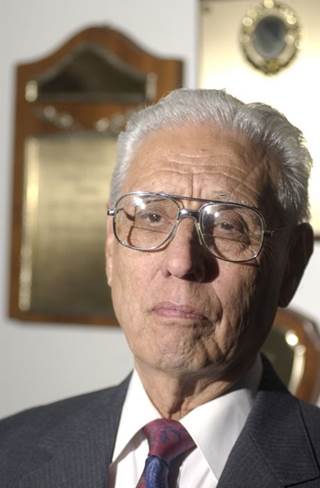 WWII veteran Ernest joined LULAC in its early years after serving a war stint in Europe. Photo: Ben DeSoto, Staff / Staff |
Houston Chronicle Obituary for Ernest Eguia: World War II soldier made mark for Latino rights
Eguia, who died Sunday May 3, 2015 at 95, was an early leader with the Houston chapter of the League of United Latin American Citizens and helped it to become one of the most prominent groups within the organization. He saw his mission as challenging discrimination wherever he came across it, which began almost as soon as he returned from Europe in 1945.
|
|
Eguia joined the fledgling advocacy organization when he learned of the notorious case of Macario Garcia, a fellow Houstonian and a Medal of Honor recipient who was denied service at a hamburger stand because he was Mexican American. For decades Eguia served LULAC as a local and national officeholder. It was an era when Latinos in America faced much of the same discrimination as African Americans. "I remember going to a church here in Houston - I was in LULAC already - and they asked me to go ask the pastor in the Catholic Church (to see) if we could rent a dance hall for a fundraiser," Eguia recalled in an interview last year. "Would you believe that a Catholic priest told me to go to a Mexican church? That was in 1947." Speaking to blogger and journalist Kristina Puga, whose Wiser With Age website relates inspirational stories from all walks of life, Eguia said the determined work of LULAC and other organizations eased the way for local Latinos. A large first step was taken when Houston's police and fire departments began to accept minority applicants. His brother, Leon Eguia, also was very involved in LULAC and became one of the city's first Latino firefighters. "We went after the city government, and pressed them so much that eventually there were many young men who started joining," Eguia told Puga. 'Last one standing': Eguia was politically active and involved in arranging President John F. Kennedy's address to Latino veterans and civil rights leaders in Houston on Nov. 21, 1963, the day before Kennedy was assassinated in Dallas. The meeting, which included a brief address in Spanish by Jacqueline Kennedy, was an early recognition of the emerging Latino electorate. During the 2013 LULAC celebration honoring JFK's visit to Houston after 50 years, Eguia was recognized as "the last man standing" from the committee who organized the historic meeting. "I'm the last one standing," he told a crowd at the Rice Hotel, where it had been held a half-century earlier. "But I'm standing on the shoulders of ... World War II veterans." Asked what he would say to today's younger people, Eguia responded with simple suggestions. "The first thing I would tell them is, 'Be a good citizen. We live in a country that is free, and we could do whatever we want and live comfortably,' " he said. "The second thing I would say is, 'Get yourself educated, because once you get education, no one can take that away from you.' … The important thing is to be honest to the country, yourself, and the community, and if you have a good education, I think a youngster could get very far. Shortcuts are not going to get you anywhere." Growing up in Houston: Eguia was born in Lockhart on Nov. 17, 1919, and was the oldest of six children of Narciso and Maria Eguia. Eguia's father, a railroad pipefitter for Southern Pacific, moved his family to Houston in 1921 and they struggled amid poverty and discrimination. Ernest and his brother helped the family by working at the city's farmers' market, selling newspapers and shining shoes at a barber shop. An excellent student, Eguia attended Sam Houston High School, where a young Lyndon B. Johnson worked as a teacher. Though never in Johnson's class, he remembered him as a young and lanky instructor from the Hill Country. Eguia dropped out of high school in the 10th grade so that he could take full-time employment. He was working at a menswear store, Buck's Dry Goods, when he was drafted in 1941. Eguia was assigned to a 1st Army artillery battalion and trained as a forward observer for coastal defense units in the U.S. He was sent to Europe before the D-Day invasion of Normandy and witnessed heavy combat for much of the war's remainder, including the Battle of the Bulge. His unit also was involved in the liberation of the Norhausen concentration camp. Beloved by family: After the war, he came home to Houston and married Maria - in November 1947. They had four children. He worked briefly for a pipeline company before returning to Buck's Dry Goods, where he worked many years as a salesman and manager. Besides his wife of 67 years, Eguia is survived by children Diane DeYoung, Rebecca Eguia Curry, David Ernest Eguia, and Mark Steven Eguia; four grandchildren; and two great grandchildren. He was preceded in death by brother Leon and sisters Ida, Tillie, Theresa and Ruth. A celebration of his life will be held from 5 to 8 p.m. Wednesday at Heights Funeral Home. Services will be at 10:30 a.m. Thursday, also at Heights Funeral Home, followed by burial at Houston National Military Cemetery at 11:30. Mike Tolson Sr. Reporter, Houston Chronicle Sent by Roberto Calderon Roberto.Calderon@unt.edu forwarded for Jaime Puente mailto:jrpuente@utexas.edu http://www.houstonchronicle.com/news/houston-texas/houston/article/World-War-II-soldier -made-mark-for-Latino-rights-6242039.php LULAC Mourns the Passing of Ernest Eguia, A Member of LULAC for 67 Years WASHINGTON, D.C. – Today, LULAC National Executive Director, Brent Wilkes, issued the following statement following the death of Ernest Eguia: “The League of United Latin American Citizens (LULAC) is saddened over the passing of Ernest Eguia, an active and well respected member of LULAC for 67 years. A dedicated member of the community, Mr. Eguia worked to help bring diversity to local government, including being instrumental in helping to ensure that the Houston Fire Department and the Houston Police Department recruited Hispanics. In addition, Mr. Eguia helped to create important national programs which included the Service, Employment and Redevelopment (SER) and the Little School of 400. The latter was used as the model for the establishment of Head Start. Mr. Eguia was also a driving force behind bringing President John F. Kennedy and then-Vice President Lyndon B. Johnson to the Houston Rice Hotel on November 21, 1963 to address LULAC members. With his passing, LULAC has lost a beloved member whose commitment to his community, country and family set a standard we should all work towards." |
||
|
|
RICARDO R. ELIZONDO Outstanding Mexican American historian. Editor Mimi: I had the privilege of meeting Ricardo at various genealogy conferences, Mexico, California, and Salt Lake, Utah. His knowledge of both historical and genealogical information was enthusiastically shared with all. He was a blessing. |
| H |
 |
La Sociedad Genealógica y de Historia Familiar de
México,
Genealogía de México,
y sus grupos de intercambio genealógico
expresan su más sentido pésame a los familiares y amigos de nuestro
querido amigo, genealogista e historiador familiar quien ayer 25 abril de 2015 falleció en San José, California. Rogamos a Dios el Eterno Padre de todos los hombres que envíe consuelo y fortaleza a toda la familia. Que la esperanza que nace de la promesa de que todos los hombres y mujeres volverán a vivir nos aliente. Y esperamos ese día en que volveremos a reunirnos todos. Mandado por Benicio Samuel Sánchez García Genealogista e Historiador Familiar Email: samuelsanchez@genealogia.org.mx Website: http://www.Genealogia.org.mx y http://www.GenealogiaDeMexico.com |
|
|
| Louis Nuñez was sworn in as deputy staff director of the United States Commission on Civil Rights at the White House in 1972. Credit United Press International Louis Nuñez, a champion of educational and economic opportunity for Puerto Ricans for more than three decades, died on April 30 at his home in Rockville, Md. He was 83. The cause was leukemia, his daughter Carolyn Ozcan said. Since the mid-1960s, Mr. Nuñez served on New York City’s Board of Higher Education; as national executive director of Aspira, a leadership development and educational counseling agency; as staff director of the United States Commission on Civil Rights; and as president of the National Puerto Rican Coalition. In each of his roles, he appealed to government and the private sector to create jobs and training programs to reduce high unemployment among Puerto Ricans on the island and the mainland. In 1976, he pressed for recognition of Puerto Ricans as an official minority group after the rights commission conducted the first national study of Puerto Rican migrants by a federal agency and found that “a dismayingly high percentage of Puerto Ricans are still trapped in poverty.” He also accused the news media of denigrating undocumented immigrants. Louis Felipe Nuñez was born in East Harlem on Oct. 31, 1931. His father, Miguel, a Peruvian, was a cook and grocery store owner. His mother, the former Josephine Parmias, was a garment worker from Puerto Rico. Mr. Nuñez graduated from Morris High School in the Bronx and City College with a degree in business administration and served in the Army in Korea from 1953 to 1956. He married the former Cecilia Viguie. She survives him, along with another daughter, Victoria Nuñez, and two grandchildren. Interviewed by his daughter Victoria for an oral history, he recalled applying for a job as a marketing representative with Pan American World Airways in New York and being told: “We don’t hire people like you here. Now, if you want to seek a position with one of our Latin American offices, that’s a possibility.” He also remembered calling a landlord about an apartment rental and being asked, “Nuñez, what kind of name is that?” When he replied that he was Spanish, the landlord asked, “Are you Puerto Rican?” When he replied yes, the landlord hung up. In 1962, a year after the agency was founded, he was recruited to be business manager for Aspira (Spanish for Aspire), a Latino youth organization supported by private and government grants, that encourages academic advancement. In New York, Mr. Nuñez was active in supporting the movement to decentralize the administration of the public school system and to make the City University of New York system accessible to more high school graduates. In 1971, he was named by an upstate judge to a five-member panel to protect the inmates at the Attica Correctional Facility after the violent revolt and fatal encounter with state troopers and National Guardsmen who retook the prison. The panel concluded that “the danger of harassment of inmates continues.” He served on the civil rights commission in various roles for nine years, including acting director during the administration of President Richard M. Nixon. In 1979, he was named staff director by President Jimmy Carter, a post he held until 1981. He retired as president of the National Puerto Rican Coalition in 1994. In 1968, Aspira commissioned a report on how Puerto Rican students were faring in the nation’s public schools. It was titled “The Losers.” Mr. Nuñez wrote the preface, in which he said all children should have the opportunity to fulfill their potential. “America has not yet made this commitment and all of us have been ‘the losers,’ ” he wrote. “With pride in our Puerto Rican heritage and with faith in the American dream we now have an opportunity to make our children the winners.” A version of this article appears in print on May 8, 2015, on page A23 of the New York edition with the headline: Louis Nuñez, 83, Champion of Puerto Ricans. http://www.nytimes.com/2015/05/08/nyregion/louis-nunez-champion-of-puerto-ricans-dies-at-87.html?_r=3 Sent by Mercy Bautista Olvera scarlett_mbo@yahoo.com |
|
How
one high school is closing
the AP gap by Adriene Hill Search Online College & Universities The Establishment of the Chicano-Latino Faculty Association of UC Berkeley The Ring by Russell Contreras Revisiting Education in the New Latino Diaspora Life Through the Eyes of an Undocumented Child by Berenice Hernandez Strength through our roots: National Rosenwald Schools Conference, Durham June 17-20, 2015 The History & Current Status of Historically Black Colleges and Universities by Mimi Lozano |
|
How
one high school is closing the AP gap By Adriene Hill |
|
Spending $100 million to break down AP class barriers
Eleanor
Roosevelt High School students Christian Esplana and Joelle Carreon |
|
|
If anyone knows the halls and classrooms of Eleanor Roosevelt High
School in Eastvale, California, it's Adan Esperza.
About the author
Go to the website and enter your high school's name
and find out about their record of involvement in Advancement Placement
for minority studies. Sent by Mercy Bautista Olvera scarlett_mbo@yahoo.com |
|
SEARCH ONLINE COLLEGES & UNIVERSITIES |
| Hey Mimi,
Thank you for reaching out! I appreciate you
letting me tell you a bit about my organization, Accredited Schools
Online. Each year, millions of college students use online learning
to earn a degree in a fast and flexible way. The question facing
many of these students is: which program is going to be the best fit
and where does one start? Our site helps anyone explore accredited
online schools by major, state or degree level to narrow the field
and find a higher education option that fits.
Would
you be open to including our guide to accredited schools in your
list of educational resources? For your consideration, please visit
us here: http://www.accreditedschoolsonline.org/ If you have any questions about who we are, or the data we have used to create our tools and guides, please don’t hesitate to reach out via phone or email at any time. Otherwise, thank you for your time and have a wonderful day. With respect, David Osnoe
Marketing Associate
Accredited Schools Online
775 432 5107
Editor Mimi: Please do investigate very, very carefully. The recent online Corinthian Schools bankruptcy is a tragic example of what can happen to aspiring students. Many universities are now offering classes online. One of my grandsons, working full-time, completed some his lecture-type classes online, along with standard classroom classes. |
|
The Establishment of the Chicano-Latino Faculty Association of UC Berkeley |
|
PRESS RELEASE Date: May 7, 2015 Contact persons: Professor Patricia Baquedano-Lopez pbl@berkeley.edu , 510-642-6903 Professor David Montejano montejano@berkeley.edu , 510-684-7690 Today we are delighted to announce the formation of the Chicano-Latino Faculty Association of the University of California, Berkeley. A select number of faculty, concerned about the poor representation of Latinos at all levels on this campus—among faculty, students and staff—have come together with the goal of making the campus look more like the rest of California. This is the flagship university of the State of California, where 38% of the population is Latino. 48% of the graduating high school class in 2014 was Latino, and this percentage promises to grow much higher in the foreseeable future. Yet only 14% of our student body is Latino. Of the 1,524 ladder faculty at UC Berkeley, only 25 are Mexican American with another 57 identified as Hispanic or Latino. In the case of staff, of the 8,959 staff, barely a thousand (1,156) are Mexican American or Latino. Obviously there is much room for improvement. What gives this situation some urgency is that UC Berkeley plays a critical role in developing the future intellectual and political leadership of California and the country. We are at the premier public university in the country. Thus as faculty, we wish to create a vibrant intellectual community that is inclusive and representative of California society. The Chicano-Latino Faculty Association looks forward to working with the administration in addressing these shortcomings. Specific recommendations will be forthcoming in the near future. To mark the founding of this Association, and to emphasize the need for a much more visible Chicano-Latino presence on this campus, we have invited Assemblyman Luis Alejo, the Chair of the Latino Legislative Caucus, for a conversation with interested faculty at the Center for Latino Policy Research. This will take place at the Shorb House, corner of Bowditch and Channing, on Thursday, May 7, at 4 pm. Patricia Baquedano-López Associate Professor Chair, Center for Latino Policy Research David Montejano Professor Chair, Center for Research on Social Change Sources: • http://quickfacts.census.gov/qfd/states/06000.html • California Department of Education: http://dq.cde.ca.gov/dataquest/GraduateReporting/GraduatesByEth.aspx?cTopic=Graduates&cChoice= StGrdbyEt&cYear=2013-14&level=State&cType=All&cGender=B&cGroup=G12 • Office for the Vice Chancellor for Equity and Inclusion Shorb House clpr@berkeley.edu Mailing address; |
|
|
The Ring by
Russell Contreras
It was the fall of 1991, and I was in a Houston
neighborhood we only visited when someone died. Deceased family members
had services at nearby Crespo Funeral Home.
|
|
|
There at the Latino Learning Center, University of Houston Professor
Lorenzo Cano told an enthusiastic crowd of potential UH students and
their families that attending UH was not only a realistic option—it
was a duty. Look around and see how we are living today, he said. Now
think about how you want to live in ten years. The crowd erupted.
As a 17-year-old high school baseball player, I had no idea how I wanted to live the next day. Little interested me beyond Major League Baseball homerun records and my booming stereo. I shunned most books because I didn’t see myself. In sum, I felt I didn’t belong in a classroom of thinkers. Had I not attended that Center for Mexican American Studies information session, it’s possible I would have dropped out a year later as a struggling undergraduate. But the excitement in the hall stuck. It kept pushing me. Eventually, I took the Mexican-American Literature course taught by Maria Gonzalez. Then I signed up for Dr. Tatcho Mindiola’s class on Mexican Americans and film. Dr. Nestor Rodriguez captivated me about his studies of Guatemalan migrants in his sociology course. My grades rose. The Daily Cougar offered me a weekly column, and I wrote (or rather experimented writing) pieces about race, ethnicity, and campus politics. Just a few months before, I had been on the verge of failing out of freshman composition. “Your columns,” Dr. Mindiola said, “are provoking reaction.” I think he meant the angry letters to the editors were more entertaining than my pieces calling for the boycott of Frontier Fiesta over the event’s Old West themes that might offend some American Indians . Later I became president of the Hispanic Student Assocation, graduated, and took an internship at The Nation Magazine in New York. I got into a heated argument with a well-known columnist who said she didn’t think “Hispanics face much discrimination back in Texas. But then again I don’t know much about them.” No, you don’t. Back in Houston, I enrolled in the graduate history program, thanks to a CMAS fellowship. I continued my studies under historian Dr. Emilio Zamora and took to spending my evenings in the library closely studying the stories I never heard as a child. By 2000, I found myself as a graduate writing student at Columbia University in New York. I no longer felt I didn’t belong. Before I was to give my thesis reading for graduation, my father called. My grandfather, Carlos, died of complications from Alzheimer’s. He was a WWII vet and a UH graduate. So was his brother Nick. So was his brother Ciprian. So was his brother Lencho. All Mexican-American UH engineering graduates. I couldn’t return for the funeral on such short notice. Just a few months after Sept. 11, getting emergency plane tickets were expensive and difficult to obtain. Instead, I walked alone in the streets of Harlem, feeling guilty that I had come so far on the backs of others. I didn’t even know if my grandfather’s services would be held at Crespo like we had done for generations. I wouldn’t be joining my family in the neighborhood where we had always held our funerals. But out of that neighborhood also came a call to live. And there I found myself on the steps of Columbia’s Low Memorial Library, looking up at a clear sky and recalling that plea for action I heard at the Latino Learning Center. I wondered what the call to action was for my grandfather. I never asked. Back in my suite, I pulled out my dusty UH undergraduate class ring and put it on. I’ve worn it everyday since. As a journalist who has worked for The Associated Press and the Boston Globe, the ring serves as a reminder of how CMAS and my family shaped my intellectual growth and my professional and personal life. I wore the ring during the New York blackout. I wore the ring when I interviewed former New Mexico Gov. Bill Richardson and former UN weapons inspector Hans Blix. The ring was on my hand when I covered the last election victory of Sen. Ted Kennedy in Boston and when I stood in line to talk to people who said goodbye during his memorial service. I wore the ring when I asked my wife to marry me in Boulder, Colorado, and I wore the ring during the birth of my daughter in Albuquerque, New Mexico. I’m wearing it now as I type these words. When Sen. Kennedy passed, I wrote a story on his legacy with immigrants. While in Albuquerque, I wrote a story about how New Mexico had no school named after civil rights scholar and home-grown George I. Sanchez. (That’s about to change.) And, when I drive by the Sandia Pueblo everyday, I see the poverty and struggle of a community. That’s not how we should be living, and I need to write about that. I’m no longer a lost 17-year-old. I’m 40 and working on a book on JFK’s last night with Mexican Americans in Houston. When the book is complete, I intend to return to the Latino Learning Center where I hope to find the next generation of 17-year-olds. Look around, I want to say. And tell me where you want to be in 10 years. I’ll be wearing my ring. Source: CMAS Spring 2015 Newsletter, pg.5 |
||
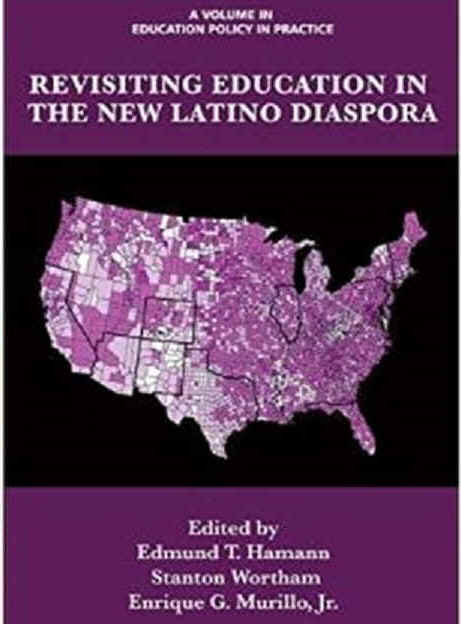 |
Revisiting Education |
For most of US history, most of America’s Latino population has lived in nine states—California, Arizona, New Mexico, Colorado, Texas, Illinois, Florida, New Jersey, and New York. It follows that most education research that considered the experiences of Latino families with US schools came from these same states. But in the last 30 years Latinos have been resettling across the US, attending schools, and creating new patterns of inter-ethnic interaction in educational settings. Much of this interaction with this New Latino Diaspora has been initially tentative and improvisational, but too often it has left intact the patterns of lower educational success that have prevailed in the traditional Latino diaspora. Revisiting Education in the New Latino Diaspora is an extensive update, with all new material, of the groundbreaking volume Education in the New Latino Diaspora (Ablex Publishing) that these same editors produced in 2002. This volume consciously includes a number of junior scholars (e.g., C. Allen Lynn, Soria Colomer, Amanda Morales, Rebecca Lowenhaupt, Adam Sawyer) and more established ones (Frances Contreras, Jason Irizarry, Socorro Herrera, Linda Harklau) as it considers empirical cases from Washington State to Georgia, from the Mid-Atlantic to the Great Plains, where rural, suburban, and urban communities start their second or third decades of responding to a previously unprecedented growth in newcomer Latino populations. With excuses of surprise and improvisational strategies less persuasive as Latino newcomer populations become less new, this volume considers the persistence, the anomie, and pragmatism of Latino newcomers on the one hand, with the variously enlightened, paternalistic, dismissive, and xenophobic responses of educators and education systems on the other. With foci as personal as accounts of growing up as an adoptee in a mixed race family and the testimonio of a ‘successful’ undocumented college graduate to the macro scale of examining state-level education policies and with an age range from early childhood education to the university level, this volume insists that the worlds of education research and migration studies can both gain from considering the educational responses in the last two decades to the ‘newish’ Latino presence in the 41 U.S. states that have not long been the home to large, wellestablished Latino populations, but that now enroll 2.5 million Latino students in K-12 alone. "Timely and compelling, Revisiting Education in the NLD offers new insight into the Latino Diaspora in the US just as the discussions regarding immigration policy, bilingual education, and immigrant rights are gaining steam. Drawing from a variety of perspectives, contributing authors interrogate the very concept of the diaspora. The wide range of research in this volume thoughtfully illustrates the nuanced phenomena and provides rich descriptions of complex situations. No longer a simple question of immigration, the book considers language and legal status in schools, international adoption, teacher preparation, and the relationships between established and relatively new Latino communities in a variety of contexts. Comprised of rich, thoughtful research Revisiting Education provides a fascinating window into the context of Latino reception nationwide. ~ Rebecca M. Callahan, Associate Professor - University of Texas-Austin As the leader of a 10-years-and-counting research study in Mexico that has identified and interviewed transnationally mobile students with prior experience in U.S. schools, I can affirm that in addition to students with backgrounds in California, Arizona, Texas, and Colorado, migration links now join schools in Georgia, Minnesota, Oklahoma, Alabama, etc. to schools in Mexico. For that reason and many others I am excited to see this far-ranging, interdisciplinary, new text that considers policy implementation through lenses as different as teacher preparation, Latino adoption into culturally mixed families, the fate of Latino newcomers in 'low density' districts where there are few like them, and the misuse of Spanish teachers as interpreters. This is an relevant book for American educators and scholars, but also for readers beyond U.S. borders. Hamann, Wortham, Murillo, and their contributors should be celebrated for this fine new collection. ~ Dr. Víctor Zúñiga, Dean of Research and Extension, Universidad de Monterrey CONTENTS Foreword, Amanda Morales. I. Intro (Revision of Edmund T. Hamann & Linda Harklau [2010]) II. Actors and improvisational local practice (Grassroots to policy) 2: Erika Bruening: Doing it on their own: the experiences of two Latino English language learners in a low-incidence context. 3: Luis Urrieta, Lan Kolano, and Ji-Yeon O Jo: Learning from the testimonio of a “successful” undocumented Latino student in North Carolina. 4: John Raible and Jason Irizarry: Racialization and the Ideology of Containment in the Education of Latino Youth. 5: Casimiro Leco Tomas: Migrantes Indígenas Purépechas: Educación Bilingüe México-Estados Unidos. 6: C. Allen Lynn: A Cultural Political Economy of Public Schooling in Rural South Georgia: The Push/Pull Dynamics of Immigrant Labor. 7: Stephanie Flores-Koulish: The Secret Minority of the New Latino/a Diaspora. 8: Linda Harklau and Soria Colomer: Defined by language: The role of foreign language departments in Latino education in southeastern new diaspora communities. 9: Stanton Wortham & Catherine Rhodes: Heterogeneity in the New Latino Diaspora. III. Existing infrastructure responds 10: Frances Contreras, Tom Stritikus, Kathryn Torres, & Karen O’Reilly Diaz: Teacher Perceptions, Practices and Expectations Conveyed to Latino Students and Families in Washington State. 11: Jennifer K. Adair: Early Childhood Education Barriers between Immigrant Parents and Teachers within the New Latina(o) Diaspora. 12: Socorro G. Herrera and Melissa A. Holmes: The 3 R's: Rhetoric, Recruitment, and Retention. 13: Rebecca Lowenhaupt: Bilingual Education Policy in Wisconsin’s New Latino Diaspora. 14: Sarah Gallo, Stanton Wortham, and Ian Bennett: Increasing “Parent Involvement” in the New Latino Diaspora. 15: Adam Sawyer: Professional Development Across Borders: Binational Teacher Exchanges in the New Latino Diaspora. 16: Katherine Richardson Bruna: The Iowa Administrators' and Educators' Immersion Experience: Transcultural Sensitivity, Transhumanization, and the Global Soul. 17: Jennifer Stacy, Edmund T. Hamann, & Enrique G. Murillo, Jr.: Education Policy Implementation in the New Latino Diaspora. BUY ONLINE Paperback 9781623969936 Web price: $39.09 (Reg. 45.99) http://www.infoagepub.com/products/Revisiting-Education-in-the-New-Latino-Diaspora Sent by Enrique G. Murillo, Jr., Ph.D. EMurillo@CSUSB.EDU
|
|
|
|
|
| My parents brought me, along
with their dreams, to the U.S. when I was an infant. Growing up, I
realized the limited opportunities, access, and even freedom that I had
as an undocumented student. In school I followed classroom rules,
recited the Pledge of Allegiance, faithfully fulfilled my classwork, and passed all the standardized tests. More importantly, I formed dreams that would guide my life. In high school, my teachers instilled in me the belief that I could pursue any career, but I knew my lack of legal status precluded my being able to make the career choices that others had. I dreamed of going to college, but I could not get a social security number which meant I had no opportunity to acquire legal work to help pay for higher education. Even if I could find a way to go to college, I could not use my education without legal status. I considered going back to the country where I was born, but that country was unfamiliar to me. I had grown up as a Hispanic American but lacked the security of belonging. Out of this time of intensive reflection and worry came the formation of a resolve to go as far as my potential would take me. With encouragement from school counselors, mentors, college recruiters, and my family, I was able to get full scholarships from Texas A&M University. I graduated with a Bachelor’s in Interdisciplinary Studies with a 4.0 GPA in 2014. The educational journey of many of my fellow undocumented students is not always as bright as mine. According to a Pew Research Center project there are 1.1 million undocumented children who will face the same myriad of challenges I have encountered. My personal experience has given me insights into the obstacles, injustices, and other social issues that immigrant students face. This has inspired me to focus my education and career on serving and supporting the Latino community, especially its children. As an undergraduate student, I became a leader for an organization that prepared DACA (Deferred Action for Childhood Arrivals) informational forums and clinics for the community. I was also involved in local immigrant community organizations that served underrepresented children and families. I took part in research that advocated new policy changes on improving working conditions in the construction industry. Surveying construction workers in Houston and encouraging them to advocate for their rights gave me an understanding of the changes that needed to be brought into the community. Additionally, through a research grant I was awarded, I was able to conduct a pilot study that analyzed in-depth interviews with Mexican foreign-born adolescents. The study hoped to provide the necessary elements to constitute the criteria that would enable institutions to understand exactly what factors and resources facilitate the transition from high school to college for undocumented students. For this service, I was awarded the 2014 Jane Stallings Student Service Award and was chosen as the Department of Educational Psychology’s Distinguished Honor Graduate. The work I did there helped me recognize the importance of the effort and the work that needed to be continued in this community. Following graduation, I decided that as an educated Latina Woman I could bring vital insights into enabling our society to establish new ways of bringing social justice to the Latino community. As a graduate student at the Graduate College of Social Work and a Center for Mexican American Studies Fellow, I am currently pursuing a master’s in social work to help me develop abilities to better serve the Latino community. I am primarily assisting Dr. Isabel Torres in a National Institutes of Health K01 research study, End of Life Treatment Preferences of Latino Medicare Beneficiaries with Cancer. This position allows me to conduct structured telephone interviews with both Spanish and English speaking older Latinos. This has provided me with opportunities for establishing relationships with staff at MD Anderson Cancer Center and understanding the functioning of this agency in the Latino community. My current social work internship with Texas Children’s Pediatrics-Gulfton has provided opportunities to see the psychosocial factors that hinder the lives of children and families. The experiences and relationships that I form with the community are giving me an understanding of the obstacles that they encounter while obtaining primary care and mental health services. This knowledge has presented me with valuable perspectives into what the community needs to be able to provide children with a foundation for growth and health. In an effort to give back to my community, I am a mentor for Collegiate Challenge at Northbrook High School where I graduated. Not only have I been able to contribute what I have gained from my experiences as an undocumented student, but I also have been given an opportunity to understand the current challenges that Latino students face as they pursue higher education. Through my current experiences and the knowledge that I am gaining as a graduate student, I know that I am preparing myself to be able to bring social justice and equity and help individuals reach their fullest potential in life. It is my ultimate goal to develop an organization that creates healthy and productive Latino families by bringing parents and children together through education and support programs. This goal will be addressed through the creation of programs and resources that school districts can implement throughout their campuses and communities. Furthermore, I hope to strengthen families and encourage educational aspirations within the family unit. I appreciate the setting the University of Houston provides to help me understand the anatomy of creating successful programs to help underrepresented students achieve their dreams. I have overcome various obstacles, but I know my journey is beginning. Source: CMAS Spring 2015 Newsletter, pg.4
|
|
|
|
Looking for the coolest place to be for the National Rosenwald Schools Conference? Look no further: indoor screenings and post-screening discussions of three new documentaries will be featured at the conference in Durham June 17-20, 2015. Strength through our Roots will kick off the conference films Thursday morning, June 18th. This documentary illustrates the struggles and successes of students, families and the community associated with the Nansemond County Training School in Suffolk, Va. Our second screening is Carrie Mae: An American Life. A story told by Carrie Mae Sharpless Newkirk that conveys her deep commitment to service and education, values instilled in her through a Rosenwald school education. Wrapping up the film series Friday morning June 19th, is Rosenwald, a feature -length historical documentary by Aviva Kempner about businessman and philanthropist Julius Rosenwald joining Booker T. Washington and southern African American communities to build schools during the Jim Crow years of the early 20th century. The historical partnership and the modern-day attempts to restore the schools is an inspiring story of philanthropy and local self-determination. All documentaries and discussions are included in conference registration and will show at Carolina Theater's Cinema 2 adjacent to the Durham Convention Center. The
keynote speakers are in place for the Welcoming Plenary and now we have
the music too! Mel Melton and the Wicked Mojos with special guest John
Dee Holman will set the mood at Carolina Theater's Fletcher
Hall, Thursday, June 18 at 3:30 p.m. Holman hails from Durham County and
is known as a Piedmont blues legend. He is a National Heritage
Fellowship recipient—the National Endowment of the Arts highest
cultural award—and his music reflects a distinct African American
music tradition from the region. Mel and John Dee will show us why
Durham County is known as fertile music ground. The
Welcoming Plenary is open to the public and is co-sponsored by the
Durham County Library.
|
|
|
| I first became interested in the history
and presence of Historically Black Colleges and Universities when Nellie Kaniski
on staff at Santa Ana College, and current executive director of MANA of
Orange County, CA gave me a copy of a list identifying the colleges and
universities. I believe it was 1998 and I was going to a meeting in
D.C. I seem to remember the list included 108 (not the
current list of 103). The list included the federal funds being
received by each school for the year. The range of federal funding
received per college/university was between one and four million dollars
for the fiscal year. I was amazed, wondering how many years a specifically identified segregated school had been receiving funds. Cheyney University of Pennsylvania was the first school organized, almost 200 years ago, in 1837. Wondering how much federal funding had been allocated for African American education, to these 100 plus schools, contrasted sharply with the lack of Hispanic serving colleges and universities. To my knowledge in 1998 there were two, a budding effort in San Jose, California and a Hispanic serving university on the East coast. Most of the colleges/universities below are identified
with a beginning date. I thought it would be interesting to analyze
by date when each was organized. The organization of new Black serving schools continued until 1975 when the Morehouse School of Medicine became the first medical school established among Historical Black Colleges & Universities in Atlanta, Georgia, and the last of the colleges/universities organized as Black serving facility. I was surprised that following the 1954 Brown vs Board of education desegregation case, six Black serving colleges and universities were established. A study by Marybeth Gasman with the University of Pennsylvania
Graduate School of Education, "The Changing Face of Historically
Black Colleges and Universities" identified ethnic changes: http://www.gse.upenn.edu/pdf/cmsi/Changing_Face_HBCUs.pdf I have not been able to trace the history of any Hispanic serving universities. I was aware that in the late 1990s, there was one college on the East coast and one college in San Jose identifying themselves as Hispanic serving. Apparently, a solution to the problem of serving the Latinos was approached differently by the government. Rather than a move to organize and fund colleges specifically for the needs and increasing population of Hispanic/Latino students, the government allocated grants to colleges and universities, based on the percentage of Latino students attending, Hispanic serving campuses. If anyone has information
about any college or university (not community/Jr. colleges) identified
as a Hispanic serving college or university, I would be very interested
in sharing the information. |
|
Numbers of Black serving Colleges and Universities by state. |
|||
|
|
Each year below represents a Black serving college or university which was begun that year. There are some years in which a explosion of new schools were organized, such as 1867 when eight schools were opened in different locations. Overall the foundation for the effort of education the Black/African American community was diverse, with Christian churches, private, and government efforts involved and assisting in the effort. 1837 Cheyney University of Pennsylvania |
| 1851 1852 1854 1856 1856 1857 |
| 1865 1865 1865 1866 1866 1866 1866 1867 1867 1867 1867 1867 1867 1867 1867 1868 1869 1869 |
| 1870 1871 1871 1872 1873 1875 1875 1875 1876 1877 1877 1877 1878 1879 1879 |
| 1881 1881 1881 1881 1882 1882 1882 1884 1886 1887 1888 |
| 1890 1890 1891 1891 1891 1892 1894 1894 1895 1896 1896 1897 1897 1898 1898 |
| 1900 1901 1903 1908 |
| 1910 1912 1913 1913 1917 |
| 1922 1924 1925 1925 1927 1928 |
| 1947 1947 1947 1948 |
| 1950 1958 |
| 1961 1962 1963 1967 |
| 1975 Morehouse School of Medicine, Georgia |
|
Alphabetical Listing of Historical Black Colleges and
Universities A brief summary of the history of each school is included below. Do search the web for more information the schools. I found it very inspirational to read of the mix of leadership and collaboration involved. I offer the history and information in Somos Primos
about historically Black serving colleges/universities, as possible
educational opportunities for Latinos. They are located primarily
in the South and East coast. |
||||
There
are 103 HBCUs, located mainly in the Southeastern United States, the
District of Columbia and the Virgin Islands. HBCUs
are responsible for 22 percent of current bachelor’s degrees granted
to Blacks. Among Blacks, 40 percent of all congressmen, 12.5 percent of
CEOs, 40 percent of engineers, 50 percent of professors at non-HBCUs, 50
percent of lawyers and 80 percent of judges are HBCU graduates. The
top 21 undergraduate producers of Blacks with doctoral degrees are HBCUs.
W.E.B. Dubois (Wilberforce), Ralph Ellison (Tuskegee), Martin Luther
King, Jr. (Morehouse), Thurgood Marshall (Lincoln), Ruth Simmons
(Dillard), and Oprah Winfrey (Tennessee State) headline a long list of
famous HBCU alumni. Below is a complete list of HBCUs.
Alabama
Agricultural and Mechanical University is one of the land-grant Black
Colleges providing baccalaureate and graduate studies to individuals
interested in developing scholastic, professional, and technical skills. It
is one of two four-year public universities in Alabama on the White
House Initiative on Historical Black Colleges and Universities List of
HBCUs. It provides excellent education to capable students with
previously limited educational access by fully integrating technology
into university life.
Alabama
State University is one of two public four-year historically black
colleges in Alabama. Nine freed
slaves known as the "Marion Nine" created this school almost a
century and a half ago. The university offers 31 bachelor's
degrees and 11 master's degrees. Well-respected
among Historical Black Colleges and Universities, they are known for
their Marching Hornets band. Like other HBCU colleges and African
American Universities, they offer a unique learning environment.
Arkansas
Baptist College is dedicated to integrating quality academic and
Christian principles common among African American Universities. Started
in 1884, Arkansas Baptist College is the only HBCU west of the
Mississippi River. Like many Historical Black Colleges &
Universities, ABC is small, at just over 600 students. With strong
religious roots and popular Associate and Bachelor of Arts degree
programs, Arkansas Baptist College is a top choice among black colleges
in the region.
Benedict
College is one the largest private, HBCU in the region. It was started
in 1870 by a Baptist mission society to help educate former slaves from
the Civil War era. Among historical black colleges & universities,
it offers numerous degree programs in a wide range of studies including
liberal arts, education, science, and engineering. With several black
colleges in the South Carolina region, Benedict College has built a
reputation among African American Universities.
One
of only a few private women's colleges in the region, Bennett College
serves over 600 female students. Located in Greensboro, North Carolina,
Bennett College is a four-year, HBCU liberal arts school offering 24
degree programs. Ranking 16th among other black colleges and African
American universities, Bennett College prides itself on the academic
achievements its students and faculty have accomplished. Bennett College
began by educating newly freed slaves.
Bishop
State Community College is a two-year, public HBCU. Started
in 1927 to offer additional courses for teachers, this school has
grown into one of the top black colleges in the region. Now providing
both technical and academic programs, Bishop State Community College is
a popular alternative to other larger African American universities.
Students often move onto other historical black colleges &
universities to pursue a four-year undergraduate degree program.
Established
in 1895, Bluefield State College is dedicated to providing an
excellent learning experience for all students in the area. Like other
historical black colleges & universities, it wasn't integrated until
the 1950's but has always prided itself on its core values of
excellence, community diversity and growth. As an HBCU, Bluefield State
College stands out not just amongst African American universities and
black colleges, but all venues of higher education.
Since
its 1865 trailblazing beginning as one of America's few Black
colleges, Bowie State University has evolved into a multi-level degree
school. As an HBCU, or historical black colleges & universities, it
has an ethnically varied faculty and student population. As part of the
network of African American universities, it gives students of color
in-depth tools for exploring their own culture while preparing them to
work in America's diverse society.
One
of the oldest HBCU in America, Central State University has a
long tradition of extra-curricular and academic excellence. Like many
other historical black colleges & universities, CSU began as a
center for teacher education. As one of many African American
universities in the country, CSU stands out as a leader in the field of
urban education. Also, CSU is one of few black colleges offering
graduate degree programs.
Cheyney
University of Pennsylvania is the oldest of the Black Colleges and
African American Universities on the list of Historical Black Colleges
& Universities (HBCU) in America. It was founded
in 1837 by Richard Humphreys. Cheyney
offers baccalaureate degrees in over 30 disciplines and a Master's
Degree in education. Graduates of Cheyney have assumed leadership roles
in the fields of government, education, law, science, and journalism, as
well as other areas.
Claflin
University, one of many traditionally African American Universities and
Black Colleges on the list of Historical Black Colleges &
Universities (HBCU), is affiliated with The United Methodist Church and
offers undergraduate and graduate degrees. Undergraduate
degrees provide a foundation in the liberal arts, while the graduate
program allows students to increase their specialization in specific
fields of study as they prepare to take roles of leadership in their
communities and chosen fields.
Clark
Atlanta University is one of many African American Universities on the
Historical Black Colleges and Universities (HBCU) list. Atlanta
University was one of the
original Black Colleges providing teachers and librarians to
southern schools. In 1988, Clark College and Atlanta University merged
forming Clark Atlanta University. Clark
Atlanta University is dedicated to developing students intellectually
and personally, preparing them to be leaders in their communities and
fields of study.
Established
in 1894 and listed as one of many historical black colleges &
universities, Clinton Junior College offers students higher education
with spiritual development. One of many HBCUs founded by the African
Methodist Episcopal Zion Church, its original mission was to give
education to descendants of slaves. Today, of all black colleges, it has
distinguished itself among other African American universities by having
a primary focus in Liberal Arts studies. Coahoma
Community College Coahoma
Community College is one of the Black Colleges and African American
Universities on the Historical Black Colleges & Universities (HBCU)
list. It began as an Agricultural High School for Negroes in 1924. The
Junior College curriculum was added in 1949. In 1989 it became Coahoma
Community College and provides educational services to a five-county
service area. Coahoma offers 2-year
associate's degrees, community classes and GED and online testing
services.
Concordia
College, Selma, is one of the 10 universities operated by the Missouri
Synod of the Lutheran Church. A member of the country's Historical Black
Colleges & Universities (HBCU), Concordia College, Selma, while
considered as one of the nation's African American universities or black
colleges, represents a diverse racial, geographic and economic
cross-section of students. It is the only HBCU in the Concordia system. Coppin
State University Coppin
State University is one of the Historical Black Colleges &
Universities (HBCU). Coppin is one of the African American universities
offering courses at the undergraduate and graduate levels. Like many
black colleges, Coppin has famous alumni in such fields as law
enforcement (Bishop L. Robinson), politics (Vera Welcome), and
professional sports (Larry Stewart). Delaware
State University Delaware
State University is one of the Historical Black Colleges &
Universities (HBCU). DSU is one of the African American universities
that offers degrees through the doctoral level. Like many black
colleges, DSU has famous alumni in such fields as politics (Wayne
Gilchrest), the media (Maxine Lewis), and professional sports (Shaheer
McBride). Denmark
Technical College Denmark
Technical College, one of the country's Historical Black Colleges &
Universities (HBCU), provides cost-accessible education to students with
various educational and socioeconomic backgrounds. Denmark Tech, like
several black colleges, offers courses in a variety of fields. Programs
offered by Denmark include associate degrees, certifications, and
diplomas. Upon completion of programs, students are equipped to continue
on to other colleges and African American universities, should they
choose. Dillard
University Dillard
University, one of the Historical Black Colleges & Universities (HBCU),
was ranked as one of the top ten HBCUs among African American
universities, and as one of the top ten liberal arts schools. Like many
black colleges, DU has famous alumni in such fields as medicine
(Mitchell Spellman), law (Revius Ortique), and higher education (Dr.
Sandra Harris-Hooker). Edward
Waters College Edward
Waters College offers undergraduate degrees. Edward Water College is one
of the Historical Black Colleges & Universities (HBCU) and, as is
the case with African American universities throughout the country,
serves students who may otherwise find higher education inaccessible.
Like many black colleges, EWC has a racially and socio-economically
diverse student body. Elizabeth
City State University Elizabeth
City State University, one of the Historical Black Colleges &
Universities (HBCU), maintains a student-centered environment and
approach to learning. ECSU is one of the accredited African American
universities to offer courses in a number of fields. Like many black
colleges, ECSU has alumni of notoriety such as Larry Johnson, Sr., and
Johnnie Walton, who have gone on to be recruited by professional ball
clubs. Fayetteville
State University Year
Founded: 1867 Fayetteville
State University, one of the Historical Black Colleges& Universities
(HBCU), has become a highly respected postsecondary institution within
the University of North Carolina System. Fayetteville State is one of
the fully accredited African American universities to offer courses in a
number of fields. Like many black colleges, FSU has a number of alumni
who have become professional ball players, such as Blenda Gay and
Sylvester "Junkyard Dog" Ritter. Fisk
University Fisk
University, one of the historical black colleges & universities (HBCU),
has been ranked by Princeton Review among the top 15 percent of the
nation's universities. Fisk is one of the fully accredited African
American universities to offer courses in several fields at
undergraduate and graduate levels. Like many black colleges, Fisk has
notable alumni, including W.E.B. DuBois, Ida B. Wells, Percy Julian,
John Hope Franklin, Alma Powell and Mandisa. Florida
A&M University Florida
A&M University is one of the Historical Black Colleges &
Universities (HBCU), is one of the State University System of Florida's
institutions. FAMU is one of the fully accredited African American
universities to offer courses in the undergraduate, graduate, and
doctoral levels. Like many black colleges, FAMU has a number of alumni
who have achieved positions of notoriety within their respective fields. Florida
Memorial University Florida
Memorial University offers courses in a number of fields. As one of the
Historical Black Colleges & Universities (HBCU), it has a stellar
track record for graduating students who become teachers. Like many
black colleges/African American universities, FMU has many alumni who
have achieved positions of infamy in their respective fields, such as
Barrington Irving, Jr. (the first and youngest black pilot to fly around
the globe solo). Fort
Valley State University For
120 years, Fort Valley State University has built a student body rich in
African-American culture. One of three Historical Black Colleges &
Universities in Georgia, it offers 50 bachelor and masters degrees. This
HBCU boasts the second largest public campus not only among African
American universities, but in Georgia also. Like many black colleges, it
encourages students to build a strong commitment to personal and
intellectual growth. Gadsden
State Community College Gadsden
State Community College is a member of the Historical Black Colleges
& Universities, offering two-year associate degrees and technical
training. Many students transfer to African American universities after
completing two years of their penultimate four-year degrees. Like other
black colleges and HBCUs, Gadsden State Community College emphasizes
preparing its students for lifetime professional success at an
affordable cost. The school hosts an annual beauty pageant. Grambling
State University Grambling
State University is a leader among Historical Black Colleges &
Universities with a 384-acre campus. The school is one of many African
American universities home to legendary football coaches like Eddie
Robinson. The HBCU offers 46 academic programs across a variety of
subjects, with nationally-recognized excellence nursing, business,
computer science and education. It was the first of the black colleges
to host a sitting President in its marching band. Hampton
University Hampton
University is one of oldest privately funded historical black colleges
& universities on the east coast. This well-established HBCU offers
undergrad, masters and doctoral courses in technical and liberal arts
fields. Hampton University has been rated among the top African American
universities in the world, with a community of students from 35
countries and territories and nearly every state in America, making it
one of the most popular black colleges. Harris-Stowe
University Harris-Stowe
University, formerly Harris-Stowe College, is the first of the
Historical Black Colleges & Universities to be an education
institution for public teachers. With HBCU, they are one of the oldest
black colleges, their degree programs focus on education. As many
African American universities, they currently offer 12 different
academic studies in Information Systems, Computer Technology, Business
Administration, Urban Specialization, Teacher Education, and General
Education. Hinds
Community College at Utica Hinds
Community College at Utica is part of a six-campus community college,
making it the largest of black colleges in Mississippi. Of the local
African American Universities, Hinds is known for two-year degree
programs. Howard
University Year
Founded: 1867 Howard
University, one of the great African American universities and flagship
of the Historical Black Colleges & Universities (HBCU), offers a
comprehensive set of academic programs. The distinguished black college
has a long list of notable alumni, including poet Toni Morrison, actress
Phylicia Rashad, Sen. Ed Brooke, Mayor David Dinkins, Ambassador
Patricia Harris and many others. It is located on 258 acres in the
vibrant Washington, D.C. Huston-Tillotson
University Huston-Tillotson
University is one of the black colleges whose graduates succeed in the
real world. HT readies students for careers in business and liberal
arts. As one of many Historical Black Colleges & Universities (HBCUs),
it assists students in exploring their religious identity. As part of
the network of African American universities, it prides itself on giving
students effective communication tools for participating in American
life. Interdenominational
Theological Center Year
Founded: 1958 The
Interdenominational Theological Center is an affiliation of
denominational seminaries located in the Atlanta, Georgia area. Founded
in 1958, the Interdenominational Theological Center is one of the 105
Historical Black Colleges& Universities (HBCUs) in the United
States. The Interdenominational Theological Center works with HCBUs, as
well as with other black colleges and African American universities, to
jointly provide an array of resources for its students. J.
F. Drake State Technical College Year
Founded: 1961 J.
F. Drake State Technical College, one of many black colleges, offers
certificates, diplomas and associates degrees in the applied
technologies. One of the Historical Black Colleges & Universities (HBCU)
in the US, Drake State is a two-year institution divided into five
divisions. With diverse course offerings creating a variety of career
paths, their motto "Our Graduates Work" compliments this
African American University's educational mission. Jackson
State University Year
Founded: 1877 A
member of the 105 Historical Black Colleges & Universities (HBCUs),
Jackson State University has grown from one of many small black colleges
in the late 1800s to one of the major African American universities
today. JCU welcomes capable students of all diverse backgrounds who
strive for excellence. JCU has built a reputation for its achievements
in computational computing, education and human development,
communications technology, homeland security and nanotechnology. Jarvis
Christian College Jarvis
Christian College is one of several private black colleges founded in
the early 1900s by prominent citizens with Christian affiliations. As a
prestigious HBCU, Jarvis Christian College is dedicated to empowering
students and providing a global college experience students expect from
larger African American universities. Like many historical black
colleges & universities, the Jarvis Christian College focuses social
responsibility, ethics and faith along with a traditional liberal arts
college curriculum. Johnson
C. Smith University Year
Founded: 1867 Johnson
C. Smith University (JCSU), a member of the 105 Historical Black
Colleges and Universities (HBCUs) in the United States, is one of the
Best Comprehensive Colleges in the South. Historically a Black College,
JCSU is ranked highly among its fellow HBCUs and other African American
Universities and has a great reputation for its technological
integration. JCSU currently provides laptop computers to every student. Kentucky
State University Year
Founded: 1886 Kentucky
State University, Kentucky's smallest public university, has proud
history as one of the country's first black colleges. Knoxville
College Year
Founded: 1875 Founded
in 1875 and now considered one of 105 Historical Black Colleges &
Universities (HBCUs), Knoxville College enrolls 600 black students in a
private, four-year, coeducational, liberal arts curriculum. Knoxville
maintains a strong history of commitment to its surrounding community
and black colleges, encouraging its students to work with members of the
local community, while advancing the educational and practical
experience of its students at the same time. Lane
College Year
Founded: 1882 Founded
in 1882 and established primarily for the education of freed slaves and
black college, Lane College today flourishes as a small, private,
coeducational, liberal arts center of higher learning. Along with other
distinguished African American universities, Lane College is a member of
the Historical Black Colleges & Universities (HBCUs). The Lane
College faculty work together with students to provide a culture of
technology throughout their educational experience. Langston
University Year
Founded: 1897 Founded
in 1897 as one of many black colleges and African American universities,
Langston University is a part of the nation's Historical Black Colleges
& Universities (HBCUs). Langston University has developed an
international reputation for excellence in the field of agricultural
research. Langston University currently maintains an open door
admissions policy, enrolling a diverse student body and strives to
educate individuals to become leaders in their communities. Lawson
State Community College Year
Founded: 1949 By
enactment of the Wallace Patterson Trade School Act of 1947, Lawson
State Community College opened its doors with other black colleges to
make post-secondary education available to all individuals. As one of
the nation's Historical Black Colleges & Universities (HBCUs),
Lawson State Community College, as with other African American
universities, pursues a mission to provide an excellent education to all
its students. LeMoyne-Owen
College Year
Founded: 1871 Founded
in 1928 and located in Detroit, Michigan, Lewis College of
Business is one of many black colleges, distinguished by its inclusion
in the Historical Black Colleges & Universities (HBCU). Lewis
College of Business offers business and liberal arts degrees. Lewis
College of Business seeks to provide socially relevant applications of
knowledge, as do other African American universities. Lincoln
University Year
Founded: 1854 Lincoln
University, founded in 1854, was the first Historically Black College (HBCU)
in the US. In the African American university's 150 year-history, alumni
include Thurgood Marshall, Langston Hughes and the Presidents of Nigeria
and Ghana. Lincoln offers undergraduate and graduate programs and its
422-acre campus, located in rolling Pennsylvania between Philadelphia
and Baltimore, reveals an inviting and vibrant black college. Lincoln
University of Missouri Year
Founded: 1856 Jefferson
City, Missouri (314)
681-5074 Founded
in 1866 as one of the black colleges, Lincoln University of Missouri is
a distinguished member of the national Historical Black Colleges&
Universities (HBCU). Lincoln University of Missouri now offers degrees
in the liberal arts, business and the sciences. While historically one
of the African American universities, Lincoln now provides a compressive
array of educational programs to a diverse student population. Livingstone
College Year
Founded: 1879 Founded
in 1879 as a black college, Livingstone College is one of the nation's
105 Historical Black Colleges and Universities (HBCUs). Livingstone
College is a private, four-year college affiliated with the African
Methodist Episcopal Zion Church. Livingstone College offers programs to
award the B.A., B.S., and other degrees. Notable alumni of this African
American university include Ben Coates and Wilmont Perry, both former
NFL players. Meharry
Medical College Year
Founded: 1876 Founded
in Nashville, Tennessee in 1876, Meharry Medical College was the first
black medical college in the south for African Americans. As a
distinguished member of the nation's Historical Black Colleges &
Universities (HBCUs), Meharry Medical College is the largest private
African American University dedicated to educating health care
professionals and scientists. Notable alumni of Meharry Medical College
include accomplished physicians across the United States and throughout
the world. Miles
College Year
Founded: 1898 A
member of the United Negro Fund, Miles College was established in
Fairfield, Ala. as a black college. Recognized as one of the nation's
Historical Black Colleges and Universities (HBCU), Miles College
maintains an open admissions policy and offers liberal arts degrees to
students as one of the elite African American universities. Notable
alumni of Miles College include business leaders, teachers, physicians
and legislators. Mississippi
Valley State University :
Year Founded: 1950 Mississippi
Valley State University is one of the leading Historical Black Colleges
and Universities (HBCU) in the south. This black college prepares
students for life following school, training graduates with skills
designed for success. MVSU faculty, counselors and staff are present to
develop skills at undergraduate and graduate levels. MVSU is a leader
amongst African American universities, with curriculum tailored for a
successful education and career. Morehouse
College :Year
Founded: 1867 Morehouse
College is one of the Historical Black Colleges & Universities in
the United States and is known for producing African-American leaders.
Many Black Colleges and African American Universities are considered
HBCU. However, Morehouse College is the only all-male African American
HBCU. It came into distinction internationally under Dr. Benjamin E.
Mays, a mentor to Dr. Martin Luther King, Jr., the leader of the civil
rights movement. Morehouse
School of Medicine :Year
Founded: 1975 Founded
in 1975, Morehouse School of Medicine has made a name for itself by
being the first medical school established among Historical Black
Colleges & Universities. This HBCU is fully accredited and offers
the best medical doctorate and master degrees throughout all black
colleges and African American universities. Morehouse School of Medicine
created the Satcher Health Leadership Institute to eliminate disparities
in public health. Morgan
State University :Year
Founded: 1867 Morgan
State University is the largest of the Historical Black Colleges and
Universities (HBCU) in Maryland and a designated public urban
university. A historically black college, Morgan State has a diverse
student body of all socio-economic backgrounds. While a public African
American university, Morgan State is not part of the University System
of Maryland. Morgan State offers several graduate programs, including an
African American studies degree. Morris
Brown College :Year
Founded: 1881 Founded
in 1881 and considered a historically black college, Morris Brown
College is one of 105 Historical Black Colleges and Universities (HBCU)
in the United States. Located near Atlanta, this African American
university offers technology programs, scientific research opportunities
and a liberal arts education to African American men and women in a
small classroom setting. Among notable alumni are business leaders and
former and current NFL athletes. Morris
College : Year
Founded: 1908 Known
as South Carolina's Best Kept Secret, Morris College helps students
using traditional Christian values. This four-year private school is
part of HBCU and former WWII Tuskegee Airman Dr. Leroy Bowman is an
alum. Like other black colleges and African American universities,
Morris College uses a Baptist foundation to promote leadership and
community activism. Historical black colleges & universities like
Morris provide college educations to underprivileged via financial aid
programs. Norfolk
State University : Year
Founded: 1935 For
75 years, Norfolk State University has served as a HBCU and member of
the Thurgood Marshall Scholarship Fund. Boasting one of the largest
student bodies among black colleges and African American universities in
Virginia, Norfolk State offers two doctorates, 15 masters and 36
undergraduate degrees. Norfolk State University strives to offer the
highest quality yet most affordable education throughout all historical
black colleges & universities. North
Carolina A&T State University :Year
Founded: 1891 North
Carolina A&T State University is the largest public HBCU (Historical
Black Colleges & Universities) in North Carolina. Boasting one of
the largest enrollments among black colleges and African American
universities, NC A&T offers nationally-ranked degree programs in
engineering and a major partnership with NASA. North Carolina A&T
State University is one of the most sought after of all black colleges. North
Carolina Central University: Year Founded: 1910 Boasting
the #1 public HBCU ranking by US News & World Report two years in a
row, North Carolina Central University is a prominent member of
Historical Black Colleges & Universities. Offering over 80
undergraduate and 40 graduate degrees, North Carolina Central University
provides students one of the biggest varieties of educational
opportunities among black colleges and African American universities in
North Carolina. Oakwood
University :
Year Founded: 1896 Oakwood
University, a private HBCU, is ranked among the best Historical Black
Colleges & Universities. Among black colleges, Oakwood is a leader
in preparing students for medical professions. Extra-curricular
activities include an award-winning choir and championship sports teams.
The alumni of Oakwood, including musicians Little Richard and Brian
McKnight, civil rights activists, politicians and a number of
evangelists, help distinguish it as one of the nation's top African
American universities. Paine
College :
Year Founded: 1882 Founded
by the United Methodist Church, Paine College is a small HBCU located in
Augusta, Georgia. Providing quality liberal arts education is its
mission, and like many black colleges and African American universities,
Paine instills ethical and spiritual values into graduates. Among the
oldest historical black colleges & universities, Paine boasts a long
list of notable alumni, including Shirley McBay, the first
African-American Dean at MIT, and author, film writer Frank Yerby. Paul
Quinn College : Year
Founded: 1872 With
the distinction of being the oldest among Historical Black Colleges
& Universities in Texas, Paul Quinn College is a private, HBCU
located in Dallas. Started by the African Methodist Episcopal church,
Paul Quinn College has educated students based on core Christian
principles for over 138 years. Paul Quinn College strives to provide a
quality, affordable liberal arts education common among black colleges
and African American universities. Philander
Smith College : Year Founded: 1877 Like
many black colleges and African American universities across the
country, Philander Smith College was founded on the principles of
educating recently freed slaves. As a four-year undergraduate HBCU,
Philander Smith College offers major and minor degree programs in
business, education, social sciences, arts and physical sciences.
Philander Smith College is known among Historical Black Colleges &
Universities as having the youngest HBCU president, Dr. Walter M.
Kimbrough. Prairie
View A&M University : Year Founded: 1876 Prairie
View A&M University has been educating students in the deeply rooted
traditions of an exemplary HBCU. Striving to be best among Historical
Black Colleges & Universities in Texas, Prairie View offers a
variety of degrees. Prairie View A&M University is known among Texas
black colleges and African American universities as one of three
institutions designated as first-class by the Texas constitution. Rust
College : Year Founded: 1866 One
of ten Historical Black Colleges & Universities founded before 1868
and still operating, Rust College continues to educate students in the
values of the United Methodist Church and HBCU. Using a fast-paced
8-week semester system not typically found among black colleges and
African American universities, Rust College offers associates and
bachelor degrees in 16 areas of study, including Biology, Business and
Computer Science. Saint
Paul's College: Year Founded: 1888 Saint
Paul's College is a four-year HBCU situated on 185 acres in
Lawrenceville, Virginia. Although smaller than most Black Colleges and
African American Universities, Saint Paul's College focuses on
leadership skills development in their students. With degrees in liberal
arts, business and mathematics, Saint Paul's College is the only college
among Historical Black Colleges and Universities to offer a residential
Single Parent Support System. Savannah
State University : Year Founded: 1890 Savannah
State University is known as the oldest of the Historical Black Colleges
& Universities (HBCU) in Georgia. The campus is over 173 acres to
hold its growing alumni enrollment. One of the very few black colleges
that offer four different research centers, of the African American
universities in existence, this may be the fastest growing. Selma
University : Year Founded: 1878 Selma
University, a four-year HBCU, was founded by the Baptist Theological
School in 1878 and has offered religion education as its primary focus
ever since. Like many black colleges and African American universities,
Selma University seeks to create spiritual leaders in the African
American community. Selma University has the unique distinction of being
one of the few Historical Black Colleges & Universities to offer
degrees in religion and bible theology. Shaw
University : Year Founded: 1865 As
the oldest HBCU in the South, Shaw University has humble beginnings
among Black Colleges and African American Universities. The first
college organized for African Americans, Shaw University was created at
the end of the Civil War to teach freedom to a new generation of
students. Undergraduate and graduate degrees are offered in Education,
Theology and Liberal Arts at one of the original Historical Black
Colleges and Universities. Shelton
State Community College : Year Founded: 1852 Shelton
State Community College is a two-year HBCU school located in Tuscaloosa,
AL. Shelton State offers technical and occupational programs in music,
theater and art at one of the largest Black Colleges and African
American Universities in Alabama. Shelton State Community College is one
of the nation's Historical Black Colleges and Universities. This two
campus college offers many opportunities to the diverse West Alabama
population. South
Carolina State University : Year Founded: 1896 South
Carolina State University is a public, four-year college. Although this
school is one of many Historical Black Colleges & Universities, it
welcomes people of all races and ethnicities. It strives to deliver the
highest standard of education possible, as do all African American
universities. Graduates of this school have become scholars, just as
others have from other black colleges. Southern
University at A&M College Southern
University at A&M College is one of the Historical Black Colleges
and Universities (HBCU) that originally had less than 500 students
studying in a small building. This is one of the African American
Universities offering students the chance to study in the Law program.
It was one of the first Black Colleges to be visited by Eleanor
Roosevelt. Southern
University at New Orleans : Year Founded: 1956 Southern
University at New Orleans is one of the Historical Black Colleges and
Universities (HBCU) offering comprehensive curriculums tailored to the
cultural and educational needs of the New Orleans metro area. Like other
African American Universities, it has an Honors Program producing
distinguished alumni. Though this Black College was decimated by
Hurricane Katrina in 2005, has been rebuilt and renovated with new
resources and refurbished facilities. Southern
University at Shreveport : Year Founded: 1967 Southern
University at Shreveport (SUSLA) is one of the Historical Black Colleges
& Universities (HBCU) of the Southern University System (SUS). SUSLA,
as one of the African American universities, is the third best two-year
university, and has a high graduation rate. Like many black colleges,
SUS has famous alumni, such as Hubert Humphrey and Shaquille O'Neal. Southwestern
Christian College : Year Founded: 1948 Members
of Churches of Christ founded Southwestern Christian College and
continue to sponsor it. Offering a Bachelor's Degree in Bible and
Religious Education and an Associate Program in Liberal Arts, SCC is
home to one of only twenty still-standing historical Round Houses in the
nation. It is one of nine Black Colleges and African American
Universities on the list of Historical Black Colleges & Universities
(HBCU) in Texas. Spelman
College : Year Founded: 1881 Spelman
College is an all-women's liberal arts college named after Laura Spelman,
wife of John D. Rockefeller. Spelman students come from all over the
U.S. to attend the school, which is part of the Historical Black
Colleges & Universities (HBCU). Famous alumni of this black college
include Bernice Johnson Reagon and actress LaTanya Richardson. African
American universities like Spelman help black women attain quality
educations. St.
Augustine's College : Year Founded: 1867 St.
Augustine's College is one of the Historical Black Colleges and
Universities (HBCUs) founded in 1867 by Episcopal clergy for the
education of freed slaves. This private institution serves the African
American students of North Carolina and the United States. The college
offers a degree in film production and it was the first HBCU operating
its own commercial radio and television stations. St.
Philip's College : Year Founded: 1898 Founded
as St. Philip's Normal and Industrial School, St. Philip's College is an
African American University in the Texas Alamo Community College
District that offers Liberal Arts and Applied Technology courses. Though
originally opened to educate emancipated slaves, today this Black
College is the only federally designated Historical Black College and
University (HBCU) and Hispanic-serving institution with this diverse
population. Stillman
College: Year Founded: 1876 Stillman
College is the second-oldest HBCU in Alabama. This private liberal arts
college, one of 11 black colleges in Alabama, is noted for its
biological sciences, teacher education and business administration
programs. A leader among African American universities, Stillman scored
in the top tier for Southern schools according to the U.S. News and
World Report. A leader among historical black colleges &
universities in the south, Stillman offers a well-rounded education. Talladega
College : Year Founded: 1867 Talladega
College is distinguished to be the oldest of the African American
universities in the state of Alabama. Talladega College is an accredited
liberal arts institution and one of relatively few Historical Black
Colleges & Universities (HBCUs) in the US. Talladega College
maintains, as all black colleges do, a tradition of educating its
students by offering workshops, forums and lectures by a diverse array
of leaders. Tennessee
State University: Year Founded: 1912 Tennessee
State University, while undergoing numerous changes since its founding,
is one of 105 Historical Black Colleges & Universities (HBCU) in the
US. Located in Nashville, TSU is a comprehensive land-grant university,
offering many degrees, including numerous doctoral programs. TSU has a
history of promoting athletics as exemplified by it being the first of
the black colleges/African American universities to win a national
basketball title. Texas
Southern University : Year Founded: 1947 As
one of the largest HBCU's, Texas Southern University had bold beginnings
among black colleges and African American universities. In 1946, after
being declined admission to University of Texas Law School, Meman Sweatt
won a lawsuit, resulting in the creation of the first African American
law school in Texas. Among Historical Black Colleges & Universities,
TSU is popular and offers programs in business, education, law, science
and technology. Texas,
College : Year Founded: 1894 Texas
College, one of the Historically Black Colleges and Universities, is
located in Tyler, TX, and is affiliated with the Christian Methodist
Episcopal Church. As a HBCU, this African American university provides
quality academics to a diverse array of students, and awards
baccalaureate and associate degrees. Texas College is renowned for the
commitment to service at this black college, as well as for personal
attention for students. Tougaloo
College : Year Founded: 1869 Tougaloo
College, the second-oldest HBCU in Mississippi, is one of the top 20
best black colleges in the nation. Renowned among African American
universities for its science and engineering programs, Tougaloo is among
the few historical black colleges & universities to offer doctorate
degrees. The college is home to the prominent Tougaloo Art Collection
and the Civil Rights Library and Archives. Notable alumni include
politicians, civil rights activists, lawyers and scholars. Trenholm
State Technical College : Year Founded: 1963 Founded
in 1963, Trenholm State Technical College is a two-year technical
college that is one of the Historical Black Colleges & Universities
(HBCU). Just like other black colleges or African American universities,
Trenholm State offers its career-oriented programs to a diverse range of
students. The emphasis to the educational programs offered by Trenholm
State is on preparing its students for careers in global, national and
local industries. Tuskegee
University: Year Founded: 1881 A
landmark African American University, Tuskegee University was founded in
1881 by Booker T. Washington and is distinguished as one of the nation's
Historical Black Colleges and Universities (HBCU). Located in Tuskegee,
Alabama, this private Liberal Arts institution offers a rigorous
educational program to its diverse students. The faculty has included
famous people like George Washington Carver, and the campus is a
National Historic Landmark. University
at the Virgin Islands: Year Founded: 1962 Although
one of the youngest among black colleges and African American
universities in the country, The University at the Virgin Islands was
founded in 1962 and is a fully accredited four-year HBCU. It officially
became one of the Historical Black Colleges & Universities in 1986
and offers undergraduate and graduate degree programs in business,
education, liberal arts, nursing and mathematics. University
of Arkansas at Pine Bluff: Pine Bluff, Arkansas The
University of Arkansas at Pine Bluff, the first HBCU in Arkansas, has a
rich history among Black Colleges in Arkansas. Over 3,000 students, UAPB
is one of the most popular African American Universities in the region.
UAPB has one of the top aquaculture programs among historical black
colleges & universities. The University of Arkansas at Pine Bluff
offers Mathematics and Sciences degrees emphasizing computer science and
industrial technology. University
of Maryland Eastern Shore: Year Founded: 1886 The
University of Maryland Eastern Shore, one of the Historical Black
Colleges & Universities, is a public institution providing both
graduate and undergraduate degrees. As an HBCU, the University offers
quality academics to a diverse array of students, focusing on those who
are first-generation college attendees. As one of the black
colleges/African American universities, it provides values-based
learning opportunities and a unique focus on multiculturalism. University
of the District of Columbia: Year Founded: 1851 Founded
in 1851, the University of the District of Columbia remains the only
public university in Washington, D.C. Recognized as a Historically Black
College, UDC now offers 75 degree programs. In addition, this African
American university also includes a community college to improve the
lives of the residents of D.C. On the list of Historical Black Colleges
and Universities (HBCU), UDC upholds an open admissions policy. Virginia
State University : Year Founded: 1882 Virginia
State University (VSU) was established as an African American university
and is among the Historical Black Colleges and Universities (HBCUs). VSU
founder, John Mercer Langston, was the first black man elected to the
United States Congress. Following this example, VSU alumni are known as
business leaders, artists, public servants and military officers. This
black college offers a comprehensive educational program, concentrating
on liberal arts, engineering, business and agriculture. Virginia
Union University: Year Founded: 1865 Established
in 1865, Virginia Union University was formed to provide emancipated
slaves with an opportunity for educational advancement. Four
institutions merged in order to create VUU, now considered one of the
nation's Historical Black Colleges & Universities (HBCU). Now
culturally diverse, as are most black colleges and African American
universities, VUU seeks to provide an intellectually challenging and
spiritually enriching environment for its students. Virginia
University of Lynchburg: Year Founded: 1886 Founded
in 1886, Virginia University of Lynchburg is distinguished as one of the
nation's 105 Historical Black Colleges & Universities (HBCU).
African-American Baptists founded the coeducational black college, which
is committed to relying upon Judeo-Christian values and a philosophy of
self-help. The Just as all of the other black colleges and African
American universities, VUL offers degrees in various fields and
concentrations. Voorhees
College : Year Founded: 1897 Voorhees
College has grown to become a private liberal arts college with a
diverse student body. Voorhees College has a strong African-American
heritage and is considered one of the nation's Historical Black Colleges
& Universities (HBCU). Originally created as an industrial trade
school for black students, just as many other black colleges and African
American universities were, Voorhees now operates as a black liberal
arts college. West
Virginia State University: Year Founded: 1891 Founded
in 1891 as a land grant Black College, West Virginia State University
has evolved from offering an applied education in agriculture and
mechanical arts to a career-oriented curriculum. As one of the African
American Universities, West Virginia State University is one of 105
Historical Black Colleges and Universities (HBCUs) in the United States
that offers a range of Associate and Bachelor degrees. Wilberforce
University : Year Founded: 1856 Wilberforce
University is distinguished as one of the nation's Historical Black
Colleges& Universities (HBCUs). Wilberforce was the first of the
African universities and participates in the United Negro College Fund
as part of the black colleges. Wilberforce University now requires its
students to participate in a cooperative education, where students must
work as interns in order to gain practical experience to supplement
their academic experience. Wiley
College: Year Founded: 1873 Wiley
College is a historically black college in Marshall, Texas. There are
many Historical Black Colleges & Universities in the United States.
Wiley College, however, is one of the oldest black colleges west of the
Mississippi. Like many African American universities, Wiley College
played an instrumental role in the U.S. Civil Rights movement. As an
HBCU today, it has a powerful debate team and instills a strong work
ethic in students. Winston-Salem
State University : Year Founded: 1892 Winston-Salem
State University is among the top public comprehensive baccalaureate,
black colleges of the south. Historical Black Colleges &
Universities (HBCU) like Winston-Salem State are dedicated to diversity.
The university is dedicated to presenting engaging curriculum through
flexible modes of delivery. World renowned artist Selma Burke, who
sculpted the bust of Franklin D. Roosevelt that appears on the dime, is
among the esteemed graduates of Winston-Salem State University. Xavier
University at Louisiana : Year Founded: 1925 Xavier
University at Louisiana is the only Catholic traditionally black college
In America and is often referred to as the Emerald City. Xavier, one of
many black colleges, is devoted to creating a just and compassionate
society by preparing its students to become leaders. Historical Black
Colleges & Universities (HBCU) welcome all nationalities and Xavier
prides itself on its commitment to diversity. ©
1995-2014 The Network Journal. All Rights Reserved. Privacy
|
2012 article on the U.S. Education Department awarding $228 million in grants to historically black colleges and universities. http://www.huffingtonpost.com/2012/09/18/black-colleges-228m-grants-from-government_n_1894624.html |
|
The
five-year grants will go to schools in 19 states plus the District of
Columbia and the U.S. Virgin Islands. Schools can use the money to
expand their campuses, acquire science equipment, develop counseling
programs and train faculty. Education
Secretary Arne Duncan says the grants will enable historically black
colleges to help students who grapple with financial challenges as they
pursue post-secondary education. Most
of the schools receiving grants are in the South.
|
|
|
|
| Bordertown: New
Animated Series Viola Delgado Taps into the "Ticker-Tape Machine in Her Barin to Create Her Art Jose-Luis Orozco, Bilingual Educator Children's Author Recording Artist About VOCES |
|
BORDERTOWN: New animated Series |
| We don’t think we can be any more excited for our friends Lalo Alcaraz and Gustavo Arellano, who are both of the creative team behind BORDERTOWN, the new animated series premiering January, 2016 on FOX. The show’s official trailer premiered
May 12th.
http://www.latinorebels.com/2015/05/11/the-bordertown-trailer-is-out-video/ |
|
|
|
|
These days, Viola Delgado is an artistic inspiration in Dallas-Fort Worth. But since she was just a kid living in South Texas near Corpus Christi, she knew she wanted to be an artist. "My mom was really the first one to give me my tools to become an artist," she says. In the mid-1950s, her mother was a stick figure artist and made coloring books out of flour bag material commonly used to make dresses and shirts. Even then she was coloring outside the lines. From there she never stopped drawing and painting, but went through somewhat of a dry spell in high school and college. Thinking that being an artist wasn't a real possibility, she has a background in psychology. "No one advised me that I could actually do something with it," she says. After working for years as a migrant recruiter for DISD, Delgado left her career in 1986 to focus on being an artist. She had no grants or previous success, which made it quite a gamble. She has been single all her life and recalls years of living on sweetbread and cigarettes. Sometimes her electricity or gas were shut off for long periods of time. Delgado has an interesting creative process that leans on her background in psychology. She never sketches on the canvas, instead just painting what she sees in her head. "In my head I already see where everything needs to go," she explains. Most artists would find this remarkable, but it's natural to Delgado. Staring at a person or a tree will trigger images in her head, but Delgado doesn't want to simply replicate them with a representational painting. "My brain is like a ticker-tape machine," she explains. Her mind is constantly flooded with images, even in dreams. Some of these visuals demand to be on canvas more than others. This artistic awareness is unquestionably a gift, but sometimes it can tug on her attention when she is painting or trying to put together a series of work for, say, the retrospective that recently filled the Latino Cultural Center. "Art is an everyday, 24-hour thing for me," she says. "It's line, it's concept, it's tangible, it's texture, it's color." Conversation is also a key element of Delgado's work. She is one of the most agreeable people with whom to sit-down and have a long conversation. Glancing around a coffee shop, she sees people sitting together, but looking at their phones or laptops more than talking to each other. She has no disdain for technology, but laments its inescapable effects on daily life. Delgado thrives on the conversations between viewers and her paintings. With paintings based on images that flood her mind, she often doesn't know what the narrative is. "I like the fact that people have the answers," Delgado says. "I paint more for the viewer. Perhaps there's something I need from them." She mentions a painting with a woman, a table and a chair. Her focus was on a red box sitting on the table, but someone looked at it and said the woman was preparing to leave. In the next painting of that series, the woman is actually leaving. "How did that person know that?" she wonders. Sometimes Delgado knows what she's doing, but not necessarily at first. For over 20 years she painted a woman and had no idea who she was. But then she eventually realized it was a lady that lived next door to her when she was a kid, someone she hadn't seen in over 50 years. An anachronism in the mid-20th century, the woman still cooked on a wooden stove and had an outhouse. When Delgado's family bought a TV, this neighbor would tell her to pull her dress down and hide her legs when a man appeared on screen. Unaccustomed to the technology, the neighbor assumed that if she was looking at a man in a box he must have been looking right back at her. Much of Delgado's work contains stories like this one. In other paintings, Delgado intentionally leaves her work open to interpretation. It may seem like social commentary to paint faceless women, but to her mind, she is simply leaving it up to the viewer to decide who these people are. "It has an identity once you put a face to it," she says. Perhaps these ticker-tape people are grandmothers, sisters or old friends. Delgado would not describe her current financial status as stable, but recently she has had some big successes. In addition to a recent retrospective at the Latino Cultural Arts Center, she has painted murals at elementary schools, has permanent installations at two DART stops and one at the DFW airport. The piece at the airport is nearest and dearest to her heart. She thinks of the countless people who have looked at it and considered what it means. 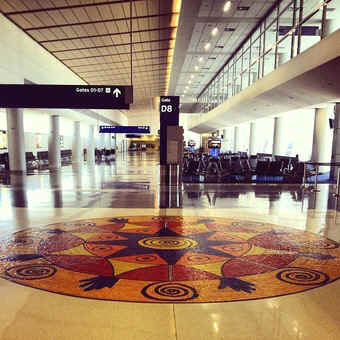 The blue hands on the piece represent the hands of blue-collar workers,
her father's in particular. She has had family she barely knows
call her from its location. More than any other piece, Delgado refers to
that when talking about her legacy. But it is also a lightning rod for
all her tenets as an artist. There is certainly a dialogue between this
work of art and its viewers. She consciously knew whom the piece was
for, but it still came from an image on the ticker-tape machine. She
didn't realize it until someone pointed it out, but this work of art has
eight hands, eight swirls and eight points. When she was installing the
piece, the gate number was yet to be determined. But, as fate would have
it, Delgado's piece sits in terminal D at gate 8.
The blue hands on the piece represent the hands of blue-collar workers,
her father's in particular. She has had family she barely knows
call her from its location. More than any other piece, Delgado refers to
that when talking about her legacy. But it is also a lightning rod for
all her tenets as an artist. There is certainly a dialogue between this
work of art and its viewers. She consciously knew whom the piece was
for, but it still came from an image on the ticker-tape machine. She
didn't realize it until someone pointed it out, but this work of art has
eight hands, eight swirls and eight points. When she was installing the
piece, the gate number was yet to be determined. But, as fate would have
it, Delgado's piece sits in terminal D at gate 8.
Courtesy Viola Delgado |
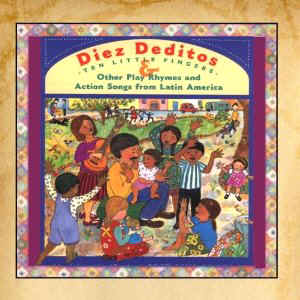 |
Jose-Luis Orozco Bilingual Educator
|
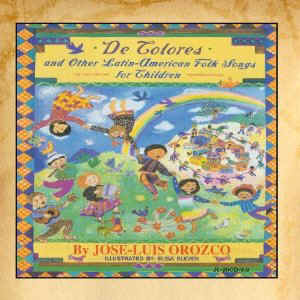 |
|
Diez Deditos & Other Play Rhymes and Action Songs from Latin Americas
This bilingual collection of finger rhymes and action songs highlights
the richness of the Latin American culture to support a child's
language development, listening skills and basic concepts. Your kids
will have fun singing, clapping, dancing and enjoying vibrant themes
such as languages, parts of the body, animals, sounds and musical
instruments. This collection also teaches kids the importance of
family and self-esteem
|
Here are a few of my favorites,
|
De Colores and Other Latin American Folk Songs for Children
Get ready to move, sing and have a great time with your kids, as José-Luis
presents some of the all time favorite collection of folk songs filled
with the colors and spirit of Latin American culture. Whether
celebrating your own culture or learning about the language and
traditions of others, this is a wonderful celebration of the diversity
of Latin music.
|
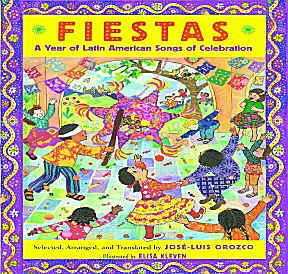
|
|
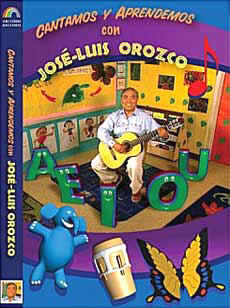 |
|
Fiestas: A Year of
Latin American Songs of Celebration
A rich collection of magical songs that celebrate holidays and
festivals that occur throughout the year, representing the diversity
of Latin American cultures. Catchy rhythms and lyrics are selected to
make learning easy
|
Caramba Kids
A new collection of bilingual children's songs presented by renowned
songwriter-musician Jose-Luis Orozco, includes educational songs in
both Spanish
and English that entertain, enhance self-esteem, teach and reinforce necessary early language skills. The album's songs uses the best in technology to help in building vocabulary and emphasize such basic language skills and concepts as counting, learning the alphabet, body parts and colors and developing a basic phonological awareness of language– in both Spanish and English.
|
Cantamos y Aprendemos con José-Luis Orozco DVD
This popular educational DVD introduces kids to the Spanish and
English language as well as the rich tradition of Latin American
children's music. Your kids will learn and be entertained with José-Luis
Orozco's interactive songs.
Jose Luis Orozco |
| About VOCES Produced by Latino Public Broadcasting, VOCES is PBS' signature Latino arts and culture documentary showcase and the only ongoing national television series devoted to exploring and celebrating the rich diversity of the Latino cultural experience. The series is presented by PBS SoCaL and supported in part by the National Endowment for the Arts, the National Association of Latino Arts and Cultures, the Ford Foundation, and the Surdna Foundation through a grant from the NALAC Fund for the Arts Grant Program. More information about VOCES is available at VOCES on Facebook or Twitter. |
|
|
BOOKS and PRINT MEDIA |
| Int'l
Latino Book Awards Is Setting A High Cultural Standard by Kirk
Whisler Latino Books Into Movies, by Kirk Whisler The Wise Latina Club by Viviana Hurtado, Ph.D. by Monica Brown New book: My Way by Ernesto Uribe Western History Association |
|
|
The 17th International |
The 2015 International Latino Book Awards is a major reflection that the fastest growing group in the USA has truly arrived. The Awards are now the largest Latino cultural Awards in the USA and with the 246 finalists this year, it has honored the greatness of 1,914 authors and publishers over the past two decades. These Awards are a great reflection that books by and about Latinos are in high demand. In 2015 Latinos will purchase over $600 million in books in English and Spanish. In order to handle the large number of entries the 2015 Awards had 192 judges, 50% more than 2014. The judges glowed about the high quality of the entries - and that they covered so many topics so well. The Awards celebrates books in English, Spanish and Portuguese. Finalists are from across the USA and from 18 countries outside the USA. In recognition of the quality and variety of books now available, Latino Literacy Now, the organization that oversees the Awards, is also carrying out the Award Winning Author Tour. Displays of the Finalists books and Award Winning Authors will be presented at events like American Library Association Convention; the Latino Book & Family Festivals in Chicago, LosAngeles, and San Bernardino; key national Latino conference like the NCLR, LULAC, Expo Comida, and CABE; and other key events. The Awards themselves will be held June 27th in San Francisco at the Marriott Marquis as part of the ALA Conference. The Awards are produced by Latino Literacy Now, an organization co-founded by Edward James Olmos and Kirk Whisler, and co-presented by Las Comadres de las Americas and Reforma, the National Association to Promote Library and Information Services to Latinos.Award sponsors include Silver Sponsor Libros Publishing and Bronze Sponsor Scholastic. Click here for a complete list of Finalists for the 2015 Int'l Latino Book Awards https://app.box.com/s/6rhhqph69me7ypbnslnaav6n0d6k41e2 |
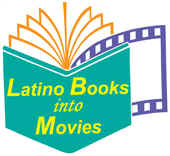 |
The 2015 Latino Books into Movies Awards
|
|
Many
of us would love to see more movies being produced that star Latinos and
feature Latino themes. Realizing that many movies start with a great
book, Latino Literacy Now has created a second competition within the
framework of its International Latino Book Awards: The Latino Books Into
Movies Awards. Judges
for these awards will include screenwriters, playwrights, producers, and
other entertainment industry professionals. MOST
IMPORTANTLY: Winning books will be distributed to pertinent Motion
Picture Studios, Television Networks, Producers, and Agents, depending
on genre. Winners agree to supply an additional 15 books (minimum) to
assure proper distribution. Awards will not necessarily be given in each
category that receives entries; only books and screenplays that the
judges feel merit being made into a movie or television show will be
judged a winning entry. Go to the Award Application: https://app.box.com/s/hwvtpmerrrfma5ly1xcs
You have until July 6, 2015 to enter the Latino Books into Movies Awards. The Awards are open to books written in any year. The winners will be announced at the 2015 Los Angeles Latino Book & Family Festival, October 10th, 2015
|
|
Award-winning author Monica Brown |
Crisp storytelling. Compelling characters. Beautiful illustration. Author Monica Brown, Ph.D. captured my imagination. My co-founder Monica Olivera at the education and literacy-focused organization Latinas for Latino Lit (L4LL) introduced me to Brown’s books. I quickly fell head over heels because Brown writes a story that is as well written as it is vibrantly illustrated, one that appeals to an adult. This is important because as a children’s literature author, I am not Brown’s target audience. Yet the fact that I’ve been drawn to her writing tells me that she respects her child readers enough to write clearly for them, while engaging older readers. The tricky balance she has struck is a testament to the mastery of her craft which has been recognized with awards and recognitions, including being invited to the Library of Congress’ National Book Fair. Brown has become one of my favorites who I spotlight when L4LL appears in the media such as Univision’s top-rated national morning show Despierta América. I love checking out her books from the library and bringing them onto the set to share with a national audience. I was especially excited to be paired up with her for this year’s Latinas for Latino Lit (L4LL) Día Blog Hop celebrating the literacy-focused event El día de los niños, el día de los libros on April 30th. Enjoy Brown’s thoughtful, soulful answers to the questions I posed which aim to explore the theme of immersion in her life and work! Note: Minor editing for style. ~~~ Viviana Hurtado, Ph.D: You have a Ph.D. and teach literature to college students. Why write children’s books and not, for example, literary criticism or novels for adults? Monica Brown: I’ve written a great deal of literary criticism, including my scholarly book, Gang Nation: Delinquent Citizens in Puerto Rican, Chicano, and Chicana Narratives, and for over a decade I wrote and taught about Latino/a Literature. Then I decided to create it—Latino/a literature for children. This was inspired first and foremost when I became a mother and look and saw what was out there, or rather, what wasn’t in terms of children’s literature. Our stories were not being told, the beauty and complexity of our mestizaje and “mixed” race families weren’t being told, and there weren’t enough stories focusing on fierce, funny, brave girls, in my opinion. My first professional writing job, just out of college, was as a journalist, then I went to graduate school and became a scholar and literary critic, become a children’s author was the next step in my evolution as a thinker, a writer, and someone who believes down to my bones that words matter, stories matter. I feel called to write for children, perhaps because it is a hopeful enterprise—their minds are so open and creative and free. As they learn more of the world through family, school, news, etc. I want to give them stories that will inspire and instill pride, and joy, and fun and adventure. VH: Why make larger-than-life figures such as soccer legend Pelé, civil rights icons Cesar Chavez and Dolores Huerta, musical great Tito Puente, and Nobel literature laureates Pablo Neruda and Gabriel García Márquez the main characters of your children’s picture-books? MB: I write both non-fiction biographies for children, and books with fictional characters. My biographies allow me to share the lives of my political heroes, like Dolores Huerta and Cesar Chavez, my literary inspirations, like Pablo Neruda and Gabriel García Marquez, and those who lived extraordinary lives. I also wanted to highlight the rich contributions of people of the Américas to all aspects of our culture here in the United States. VH: Some of your characters’ names–Marisol McDonald or Lola Levine–reveal a dual view of identity, in this case both Latino and American. Is this the way you see yourself? What does this say about today’s America? MB: It’s so interesting, because one of the most important, messages, if you will is that people who have multi-ethnic, multiracial backgrounds, are NOT fractions. We are not half this and half that. We are whole and complex and our children should not be subject to comments like “You don’t look . . . .” or “What are you?” I don’t see it as a duality of identity in that I don’t see my identity and that of my children in terms of binary oppositions. I was raised and baptized Catholic, for example, but am also Jewish by heritage and choice. My mother is South American and my father is North American. In my children’s books, like my Marisol McDonald picture book series and my forthcoming Lola Levine chapter book series, I want my characters to exist in a world that doesn’t oppress with labels and definitions that rely on the colonizer’s language. My characters, my children, myself—to quote Walt Whitman, we “contain multitudes.” VH: L4LL celebrated when you, along with illustrator Rafael López, were chosen to present at the Library of Congress’ 2013 National Book Festival. Do you believe that U.S. Latino children’s literature has “arrived” in the world of mainstream publishing and readers? MB: We haven’t fully “arrived,” in one sense of the word, not when our numbers are still so small. Are there talented, successful Latino/a writers and illustrators publishing amazing work? Yes! Absolutely. Are we receiving recognition for that work? Yes, and it’s wonderful. I’ve been lucky to work with publishers like Lee and Low and Little Brown & Co who have opened doors and made a difference. But if you look only at numbers, comparing for example, the numbers of children’s books published by Latino/as this year compared to last, they will still be very small, and not representative of the growing population. On a more positive note, I do think our books are speaking to more mainstream audiences in that our subject matter, like our lives, are infinitely broad. VH: What support and recognition is needed for our authors and illustrators to succeed and become household names? MB: Well, efforts like Latinas for Latino Lit (L4LL) and websites like yours are doing an amazing job! You are literacy activists and you help put our books in the hands of children, so thank you!! VH: This year’s Día Blog hop theme is immersion. Can you share with our readers what role immersion has in your life and work? MB:Well, my life has been immersed in words, in literature. As a professor teaching U.S. Latino/a literature, it’s been an immersion in the history, writing and cultural production of Chicano/a, Puerto Rican, Peruvian-American, Cuban-American and Dominican-American writers, and the teaching of writing, critical thinking and cultural studies to my students. As a public intellectual, I’ve immersed myself in political words, with political essays like this and this one. As a creative writer immersed in the poetry of Pablo Neruda and Gabriela Mistral, the activism and inspiration of Dolores Huerta and Cesar Chavez, the artistry of Celia Cruz, I have been able to transform and translate those lives into stories for children. And in immersing myself in my past and my children’s present, I believe that I’ve been able to create two amazing characters, Marisol McDonald and Lola Levine, which I hope have and will touch the lives of children and give them courage to be fully themselves. ~~~ Click here for the L4LL 2015 Día blog hop schedule featuring 13 award-winning U.S. Hispanic authors and illustrators on leading Latina blogs. We hope that you will follow along this week and share with your families and friends! |
|
MY WAY by Ernesto Uribe
|
| New book by author Uribe should be out
this summer. Ernesto has written three historical fast moving
adventure novels, "Rumors of a Coup", "Tlalcoyote",
and "Unforgiving", all of which I have read. He has also
published, "The Family of Ernesto Uribe" and now his own life,
appropriately entitled "My Way". In addition to reading Ernesto's novels, he has sent tidbits of his life to Somos Primos, so I was quite agreeable to reading "MyWay" in its final draft. Ernesto's autobiography, like his novels, are full of adventures, intrigue and challenges, for him, his wife and children. I could not put it down, finally had to go to bed. However, the first thing the next morning, I finished it, thoroughly enjoyed every adventure of Ernesto serving in numerous locations in South America for the government agency of USAID. Ernesto wrote of the influence of the Boy Scouts in his life in Laredo. In my comments on his book, I asked him: "
I do have another thought . . Why were
the Boy Scouts so important to you? What did they mean
and represent? Obviously being in the scouts meant a lot
to you and shaped you. I seem to remember you had an
older relative that respected the Scouts and encouraged your
involvement.
The reason I asked is because at the same time in East L.A. (30s and 40s) we looked at the Scouts as soft, as funny. Now that I have three grandsons who are Eagle Scouts, I know what it all about. I wonder if other Latinos feel the same way, even now, as I did 70 years ago." "Mimi,
I was maybe in the third or fourth grade when I saw
my grandmother going through an old trunk at the ranch and she
pulled out an old Boy Scout uniform that had belonged to my
father. My father Heberto Uribe had joined the first Boy Scout
that was formed in Laredo back in the early 1920s. My father died
when I was eight months old.. so this really impressed me. I
should have taken the uniform home with me, but I was only 10
years old at the time. Years later, when I saw the trunk at the
ranch and opened it, the BS uniform was gone. Someone had thrown
it out.
I never had to prove myself regarding my toughness
to anyone. I was a tough kid and no one would dare call me soft or
funny. So I never had that to worry about. As a matter of fact,
the second BS troop that I started in the Chacon neighborhood was
made up of all poor, tough kids. The other boy who was very active
in our troop was Luis Vargas, Luis was also active in the JrROTC program
in high school and was selected along with me to go to the
Boy Scout Jamboree in Irvine Ranch California in 1953.
Luis entered the US Army upon graduation from high school and was
a paratrooper with over 100 jumps the 101 Airborne Division
and retired a Master Sergeant. Yes, scouting had a very positive influence
on him also.
I liked scouting from the start. I enjoyed the
camp-outs, working on merit badge advancement, and that was
the only way I could ever have afforded going to summer camp every
year where I picked up all my aquatic merit badges --
swimming, life-saving, rowing and canoeing. Not to mention a bunch
of other merit badges that I would never have been able to get in
Laredo.
By the way, both my sons are Eagle Scouts, as is my
oldest grandson Fernando Cespedes who is now 27 and works for
one of the Military Industrial Complex companies in Huntsville,
Alabama. He works in logistics and statistics for the Apache
helicopter. He is also getting his Master's degree in Business
Administration from the University of Alabama, Huntsville campus."
I will let readers know when "My Way" is
available. . . good reading. Mimi |
| H |
|
New
Book Celebrates |
|
“I
hope this book will provide insight into this beautiful area and
its diverse tapestry of cultures,” said the author. The
Turquoise Trail National Scenic Byway is located in the heart of
Central New Mexico. Linking Albuquerque to Santa Fe, the trail
weaves its way north from Tijeras to the Lone Butte area, ending
just south of the “City Different.” The trail is renowned for
its mountainous landscapes, brilliantly painted skies, and
diversity of cultures, all of which are reflected in local theater
and dance traditions that are found along this 62-mile route.
These arts have been important to Native American, Hispanic, and
Anglo cultures. There is also a chapter that highlights the
flourishing film industry and the popular entertainments of the
Turquoise Trail.
|
Local New Mexico author
pens new book sharing history using stunning images |
|
Available
at Barnes & Noble, independent retailers, and Amazon.com, or
through Arcadia Publishing at (888)-313-2665 or online.
Price: $22.99 96 pages/ softcover Sent
by Dawn-Marie Lopez, lopezdawnmarie77@gmail.com |
| Western History Association I am delighted to announce that the Western Historical Quarterly has secured a new editor, institutional home and publisher. The WHQ will move to the University of Oklahoma effective January 1, 2016. Anne Hyde will be joining the OU history faculty and will serve as editor of the Quarterly. The journal will be published by Oxford University Press. David Rich Lewis has agreed to serve as Executive Editor during the transition. The journal will enjoy the editorial leadership of Anne Hyde, a historian of extraordinary talents and academic stature; substantial institutional and professional support at the University of Oklahoma (OU), one of the leading centers of western history scholarship; and the marketing and publishing support of Oxford University Press (OUP), a leading publisher of academic journals, including the American Historical Review, Environmental History, and the Journal of American History. Members will continue to receive the journal as a benefit of membership; as an added benefit, WHA members will receive a 50 percent discount on all OUP books. All of these promising circumstances required the hard work of many talented people. On behalf of the WHA, I thank: Al Hurtado, Janet Fireman, and Durwood Ball who solicited proposals from the leading publishers of history journals; Jeff Ostler, Susan Gray, Marsha Weisiger, Karen Leong, and Elliott West, who conducted the search for a new institutional home; and David Wrobel, Kathy Brosnan and their colleagues at OU who generated the institutional support and enthusiasm for the undertaking and shepherded the somewhat awkward process of inviting applications to edit a journal before OU had been selected to house it. I am grateful, too, to John Heaton, Executive Director extraordinaire, and the WHA Council for helping to guide the process through to completion. Most of all, of course, on behalf of WHA members past and present, I thank David Rich Lewis, Colleen O’Neill and their predecessors at Utah State University who established the Western Historical Quarterly as the flagship journal in western history and who have made it a model teaching publication. I also thank the History Department and administration at USU for their long support of the journal, and the staff and editorial fellows who have contributed to its success. Your demanding standards earned the high regard in which the WHQ is held for quality scholarship, impeccable editing, and for the humanity that authors have come to expect through all stages of the publishing process. The professional standards and quality of your work made it much easier to attract our new editor, publisher, and institutional home. And now, as we reflect on the proud tradition of the WHQ and look forward to its future, please spread the word: The Western Historical Quarterly remains open for business. It will continue to be the premier journal in western history. Submit your manuscripts, and look forward to many more years of fine reading. Betsy Jameson President, Western History Association admin@westernhistory.org Sent by Roberto R. Calderon Roberto.Calderon@unt.edu |
|
The Realism of Magic, review of: |
|
A Review of Armando Rendón 's Noldo and his Magical Scooter at the Alamo, Bilingual Edition (Spanish/English), 179 pp., Floricanto Press, 2013 and Noldo and his Magical Scooter on the March with the St Patrick's Battalion, Bilingual Edition (Spanish/English), 196 pp., Starry Night Publishing, 2014. The Argentinian writer Jorge Luis Borges had it right with his literary concept of magical realism. That "off-the-wall" view of life perked up public interest in his literary works. He deserved a Nobel Prize for his body of work with magical realism. Instead Gabriel Garcia Marquez received the Nobel Prize for his works of magical realism. In a related way, T.S. Eliot had it right also with his notion that to get the heart of a literary work one has to suspend one's disbelief and accept a literary work for what it is. In the 20th century, the strengths of literary works derive from the coupling of Borges' concept of magical realism and Eliot's notion of suspension of disbelief. Uncannily, Armando Rendón has found the key to a literary franchise that melds magical realism and the suspension of disbelief in a pair of works that are ostensibly children's stories but have import beyond that designation. Yes, Noldo and his Magical Scooter at the Alamo and Noldo and his Magical Scooter on the March with the St. Patrick's Battalion are books for children, wonderfully woven as historical adventures in the midst of Ameri-can events that have become legend and myth in the making of the American mind. But this pair of stories cloaked as fantasy for children is also a pair of literary fifth-columnists dredging through American history culling out what is purportedly American verities and hanging them out for view from a perspective long absent in the American narrative--truth--especially that part of the narrative dealing with the history of Mexico and the United States. From a child's perspective, these verities have not yet crept into a child's consciousness. Nor even into the consciousness of the adult reader of the Noldo books. But there will be adult readers of the Noldo Books--especially adult Mexican American readers--for whom the Noldo books will raise perturbing thoughts or questions. In a canon of verities about the American story, the Noldo books would be banned. To occult these verities, especially from children, only inculcates deeper the proposition: "my country, right or wrong, but my country" strengthening the scaffold of Myth America. The Noldo forays into history are delightfully inventive, well-crafted, and straight forward. Noldo is in good company with Frodo and Harry Potter. Perhaps a notch above his con-frères since the Noldo books are also in Spanish as bilingual editions. Noldo gets to the historical dimension from the present on a scooter much like Marty McFly's hover-board in Back to the Future but less snazzy. It's a scooter Noldo and Rafa and the guys build from a skate Noldo picked up in a neighbor's yard. It's the kind of wooden scooter I used to tool around with in the same neighborhood as Noldo's--a depression-type scooter. Build-ing it made it more valuable than a "store-boughten" one. Throughout, Noldo and his Magical Scooter is a "down-home" story with Abuelita's tortil-las and frijoles and the authenticity of Spanish and English mingling with each other in meaningful communication. The story teeters between building the scooter and being at the Alamo. Testing the scooter was an "awesome" ride that ended up with Noldo crashing through a time warp and landing momentarily unconscious in his neighborhood but back in the San Antonio of 1846. Surprisingly, Noldo doesn't come across any of the Gascas, my forebears who lived through the US-Mexico War as dwellers of San Antonio. My Gasca forebears arrived in San Antonio in 1731 as 16 families from the Canary Islands as part of a royal grant to found La Villita, the original name of San Antonio. The historical part of Noldo and his Magic Scooter at the Alamo begins when an old man who looks a lot like a junk peddler from Noldo's time picks him up after his blackout and takes him to his home. In the distance is the sound of cannons bombarding the Alamo. One can say as Noldo tries to figure out what has happened and where he's at that he's no longer in Kansas--and there are no ruby slippers. The history lesson begins in earnest. The import of the Noldo story begins to unfold. This is the other side of the story--the side occulted by myth and legend of the dominant and victorious side. This part of Noldo at the Alamo is poignant and touching. And there is always la cultura (the culture); warm food--comida casera (homemade food). Noldo and his new-found friend Enrique are in the fray of the Battle at the Alamo--a time or two perilously close to the action. Noldo gets nicked with shrapnel. The plan is to get supplies into the Alamo for the besieged defenders. As a time-traveler, Noldo knows the outcome of the Battle at the Alamo. He's saddened by the surety of the future for all of the de-fenders of the Alamo perish (which will include his new-found friends). But history is his-tory and Noldo cannot change it. Nor will I tell more about the story--read the book! Has it all been a dream for Noldo? Like Dorothy, Noldo gets back to his own time. The history of the Battle of the Alamo gets tweaked to overcome the historical pull of gravity by myth and legend. For me, it's a good read. I'm recommending it for a Newberry Prize. Interesting and captivating how Armando Rendón uses Dream Sequences to transport Noldo across the pages of history. I'm reminded of Calderon de la Barca's play of 1635 La Vida es Sueño whose ending has always fascinated me: "La vida es sueño y los sueños sueños son" (Life is a dream and dreams are but dreams). In the second story of Noldo's adventures with his magic scooter, Noldo is transported to 1846 and the start of the U.S.-Mexico War which lasts until 1848. Thoreau labeled the war unjust. Lincoln, Grant, and Whitman criticized the war as well. Driven by Manifest Destiny and President Polk's ambition to stretch the nation from sea to shining sea, the U.S. War with Mexico was not America's shining hour which is why the Noldo stories are needed. Per the Treaty of Guadalupe-Hidalgo which brought the U.S.-Mexico War to an end on February 2, 1848, Mexico ceded more than half its national territory which today com-prises the states of Texas, New Mexico, Arizona, California, Nevada, Utah, Colorado, and parts of Wyoming, Kansas, and Oklahoma. The Mexicans who stayed with their homes in the newly acquired territory became Mexican Americans by Treaty and fiat. The origins of my mother's family The Gascas begins in Texas as I've already mentioned. Like Noldo at the Alamo, the narrative of Noldo and the San Patricio's is inseparable from home and hearth, from family and Mexican food, from abuelas and abuelos, from tías and tíos, from primos and primas--in other words, from the extended family. The prime question in using two languages in a narrative is how to render one of them into an intelligible part of the narrative. I encountered this dilemma when I was writing Madre del Sol/Mother of the Sun, a play commissioned by Archbishop Flores of San Anto-nio, Texas to commemorate the 450th anniversary of the appearance of Our Lady of Gua-dalupe to Juan Diego in 1531 at Tepeyac near what is now Mexico City. I was working with 3 languages: Nahuatl, the language of Guadalupe (Tonantzin), the Spanish lan-guage of the Spaniards in 1531, and the English language of the audiences who would see the play during its premier run in San Antonio from October to December 12 of 1981, the 450th anniversary date of the appearance of Our Lady of Guadalupe. English would be the mediating language of the play. The tri-lingual play worked. It worked in Mexico City in 1982 where Mrs. Leon Portillo (wife of the President of Mexico) opened the play for us; it worked in Dallas in 1983; and at La Mama Theater in New York City in 1984.For bi-lingual (Spanish/English) audiences the use of two languages would be no problem, ex-cept when Guadalupe spoke. I resolved that problem by having Juan Diego respond in Spanish. The dialog of the priests was in English with large sprinklings of Spanish whose meanings were encapsulated in English responses. Surprisingly that worked. This was after all the dawn of a Chicano theater experimenting with performance. I was not a nov-ice in the theater, neither as actor, director, nor playwright. Armando Rendón's solution to this dilemma of two languages in the narrative is for the narrator to translate the Spanish part of dialog into English immediately following the Spanish. That works. In some places the Spanish is not translated much the way Ezra Pound used multiple languages in much of his poetry, arguing that it was the readers' responsibility to ferret out the meanings of non-English words in the poems. This is not a critical problem in the Noldo stories. What drives the verisimilitude of the narrative is that Rendón invests Noldo with the curi-osity of a historian and the imagination of youth. Noldo has read a lot of history and ac-quired a lot of Mexican American history from his Mexican American teachers. Ergo the need for Mexican American Studies in the schools, especially as Mexican American de-mographics grow. Two-thirds of the Hispanic population of the United States are Mexican Americans. As I surmised there is a critical sub-text in the Noldo stories. In Book 2, the narrative provides us with a keen sweep of Mexican American life and culture before Noldo gets in-to the nub of the story--on the march with the St. Patrick's Battalion. A keen bit of fore-shadowing on Rendón's part is the introduction of an Irish-American kid who speaks Spanish and becomes friends with Noldo. A trip to the library for information about a pair or spurs Noldo has found in what appeared to be a junk-trove moves the action of the story toward Noldo's adventure with the San Patricios. Turns out the spurs had come ne-fariously into Abuelita's family and had lain forgotten in the barn. At the library Mr. Sandoval, the librarian, provides more information about the San Patri-cios and the Irish lad's ancestor in that fray on the Mexican side of the U.S.-Mexico War (1846-1848). Reliable information about the Irish in Mexico is shrouded in jingoism but Rendón plows through that shroud and jingoism to tell the other side of the story of the San Patricios and their exploits in Mexico. I like the story and the way Rendón cuts to the heart of the Irish in Mexico through the character of the librarian. The crux of the story turns on an accident that Noldo and Pat (the Irish kid) have with the scooter; Pat gets hurt, and tuckered from the accident they both fall asleep. They wake up in the midst of an American Army regiment camped near the Rio Bravo (Grande) on the eve of a skirmish with the Mexican Army camped nearby--It's May 1846. They learn that some of the Irish troops in the American regiment are deserting to join the Mexican Army, figuring Catholics shouldn't be fighting Catholics. An interesting intertextual ligature pops up in the story when a character from the Alamo narrative shows up in the San Patricio narrative. The Noldo stories are works of creative art. But something Armando Rendón posited in an email to me brings the philosophical content of the Noldo stories to the forefront. Rendón writes: "I want young people to ponder why the scooter was magical? What caused Noldo to hit a time warp or is the na-ture of history such that it is somehow always present, in some way, through memory, insight, even DNA?" Chispas! |
|
|
|
| Artist's final project tells stories of WWII Latino Americans Jim, One good sea story deserves another !!!! Pablo Trejo |
|
|
Austin
veteran, artist's final project tells stories of
|
|
There was no guarantee the late Austin artist Sam Coronado would make it out of Vietnam alive. But after he did, he spent the next few decades of his life dedicated to the arts. His last project is “Hard Fought: Sam Coronado’s WWII Series.” The series features narrative prints depicting the stories of Latino-Americans during World War II. The exhibit draws inspiration from the “VOCES Oral History Project,” a collection of more than 650 interviews and ephemera that give voice to the American Latino experience in World War II, Korean War and Vietnam War. “Hard Fought” will be on exhibit at the Benson Latin American Collection through May 15. “Sam Coronado brought his own eye to something we’ve been looking at for several years,” said Maggie Rivas-Rodriguez, journalism associate professor and director of “VOCES.” “We would never have seen what he saw, what he selected, what color he used. He really lent it his vision, and we’ll always be very grateful for that.” Exhibition curator Tatiana Reinoza said she believes that through this exhibit, Coronado, who died in 2013, conveys the pride he had for his people. “A lot of Latinos are really proud that they served, but they haven’t really been given credit for that honorable work,” Reinoza said. “That’s why this show is called ‘Hard Fought’ because it’s a hard-fought battle to gain that recognition, to gain that validation and to know that their sacrifices are valued in the end.” Reinoza said Coronado created the prints through the serigraphy process, also known as screen printing. Some prints in the collection are mixed media, which incorporates collage elements in the piece. The narrative prints are coupled with oral elements such as interview excerpts taken from the “VOCES Oral History Project.” Reinoza said Coronado enjoyed serigraphy so much that he opened his own studio in Austin in 1991. Coronado, a Vietnam veteran who identified as Chicano, knew firsthand the struggle to feel validated for his services to this country. This prompted him to collaborate with Rivas-Rodriguez in 2006. Julianne Gilland, associate director of scholarly resources and special collections curator at the Benson Latin American Collection, said it has been interesting for viewers to relate to the exhibit. “This is true whether as American families, who remember their service and sacrifice in wartime with pride, [or] as Latinos, who have had to reconcile those proud histories with some of the social justice and racism that their families have experienced,” Gilland said. The exhibition resonated with Reinoza, who said she thinks it is vital for young Latinos to understand the importance of their historical presence in this country amid the current immigration debates and anti-immigrant rhetoric. “Young Latinos need to understand that we have a long history in this country, and we have been a part of that special fabric,” Reinoza said. “I think that’s really important for young Latinos to learn and acknowledge.” http://www.dailytexanonline.com/2015/04/29/austin-veteran-artists-final-project-tells- stories-of-latino-americans-in-wwii Sent by Mercy Bautista Olvera scarlett_mbo@yahoo.com |
|
Jim,
One good sea story deserves another !!!! |
|
This happened during an ASW exercise in Japan (1954) with the Bairoko CVE-115. At the time, that ship was part of Carrier Division Three, which consisted of Bairoko and Badoeng Strait CVE-116. ComCarDiv 3 at the time was a rear admiral named James Russell. While drinking in the Brass Hat Bar one night, with our Skipper, Commander Harold "Tut" Fry, they got into a discussion on why ASW exercises invariable ended up in favor of the Submarine. Fry, half joking, said admiral, why don't you come on board a boat and see for yourself. The next morning when making preparations to get underway, I (the duty officer) was sitting in the wardroom grabbing a cup of coffee when the deck watch sent a panic message to me and the captain that an admiral had walked on board, unannounced, and was standing on the quarterdeck. There was Russell. All he carried was a pigstick in one hand with his admiral's flag, and a small valise in the other, with a change of socks and underwear !! All alone, with no ceremonies, no Flag Lieutenant, nada !! Naturally, "Tut' offered him his Commanding Officer's stateroom, but he refused, saying that his Task force was going to give the sub a bad time, and the CO would need his sleep. Adm. Russel ended up with a bunk in the CPO quarters. On this particular exercise, we ( Bashaw SSK-241) were operating out of Kobe, Japan, while conductiing a standard Hunter Killer exercise. Here, the surfaced submarine is caught on the surface by a carrier plane, then dives and evades. The plane drops a 25 pound practice depth charge on the sub to say "hey, I've got you". He then drops a yellow dye marker on the point of submergence, radios to his carrier the sub's position and circles that position until destroyers arrive. The carrier promptly dispatches a division of two destroyer to the spot. They gain contact, and make standard runs over the submarine. However, the rules were very explicit, in that the plane was forbidden to drop his practice depth charge if any part of the submarine was still visible. He was supposed to drop it on the "swirl" left behind when you submerge. This is really a completely artificial exercise, in that you must purposely make sure the plane spots you and marks your diving point. In the real world, the chances of a plane getting anywhere near a sub, is pretty remote, given sharp lookouts and a functioning air search radar. However, no contact, no training, so here we are !! Later on, we were allowed "free reign" in that we were permitted to dive the instant we detected the plane on our air search radar or visually. When this happened, they not once achieved contact on us. In fact, we made a standard approach on the Task Force, got under a surface layer, penetrated the destroyer screen, and made a successful simulated torpedo attack on the carrier. We then surfaced square in the middle of the group (on the Adm's orders) and ran his flag up in the periscope. To make a long story short, on the second day, on one of the plane's detection runs, the plane dropped his 25 pound practice depth charge before we were completely submerged. It landed squarely on the head of the #2 periscope, blowing out all the optics, the seals and packing around the barrel of the scope; and flooding the boat along the periscope barrel into the conning tower and pump room. As a result, all further exercises ended on the spot. We were ordered into Kobe to tie up along side the repair ship USS Vulcan (AR-5). They were the only tender in West Pac that had a crane with the capability of pulling a 70 foot periscope vertically, out of a submarine. The scope was then put on two rail cars and sent to Atsugi Naval Air Station, near Tokyo. Here it was placed on a Air force giant cargo plane where it protruded out the tail end of the airplane. I'm sure the scope ended up in Mechanics Burg PA. at the Navy Supply Depot. A new periscope arrived six weeks later by the reverse process. While tied up alongside Vulcan, the Admiral told them to give us all and anything we requested. We ended up with a new up-dated air conditioning system, a new ice cream machine, and many other items of Cum Shaw nature. The humorous part of the whole story is this. I was drinking in the bar one night at the Officer's Club when a very young and tender looking Ensign wearing wings approached me, and offered to buy me a drink. It turned out he was very apologetic, as he was the one that had dropped the practice depth charge square on our periscope. I told him we should vote him a gold medal, for all the good things alongside Vulcan, and our great liberties in Kobe. I bought him the drinks. That Jim, is a true Sea Story, and I'd like to see you top it ! Pablo Trejo PGBlueCoat@aol.com
|
|
Highlights of the Second Annual George Washington Patriot Prayer Breakfast USS McFaul - DDG 74 Unveiling Ceremony Bernardo de Galvez portrait at Spanish Ambassador's House First reading of the Libretto for the potential opera about Galvez |
|
|
|
|
|
|
The Breakfast Prayer was give by Princess Dina Aguliar of the Cherokee Indian Nation |
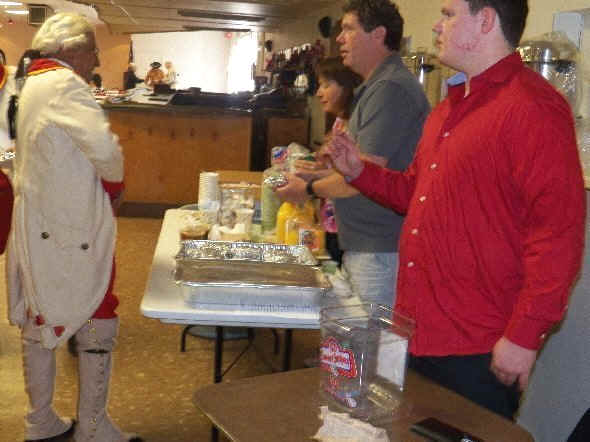 |
|
| The Breakfast line servers were Darien Lynn, Jack Ryan and Carolyn
|
| H |
|
|
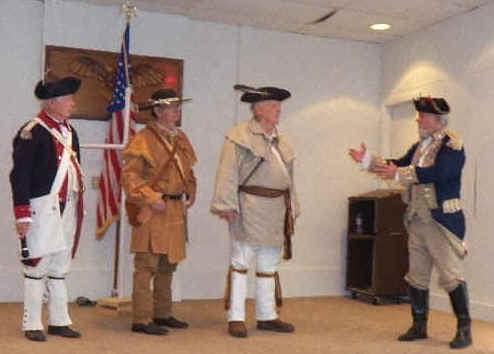 |
| The opening skit was the story of George Washington kneeling in prayer in the woods - Jim Massingill and Prissy Hancock. |
The stories of miracles of the Revolutionary War were given by Frank Rohbough, Fred Soupiset, Bob Hancock and Jack Cowan |
| H |
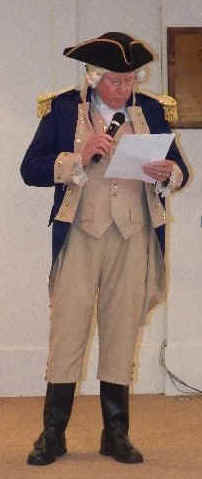 |
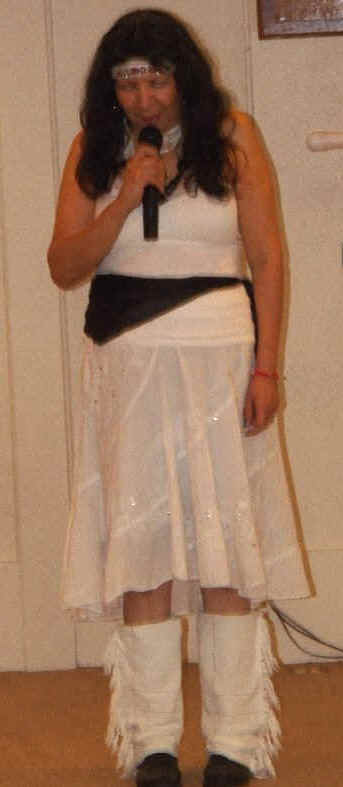 |
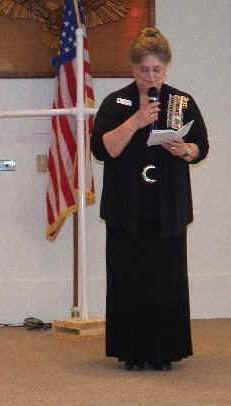 |
| Jim Massingill introduced the prayers |
First to pray was Princess Dina Aguliar of the Cherokee Indian Nation |
The Daughters of the American Revolution was represented in prayer by Gail Fox |
| H |
|
|
|
| Corinne Staacke represented the Daughters of 1812 - David Crockett Chapter in prayer |
|
|
|
|
| H |
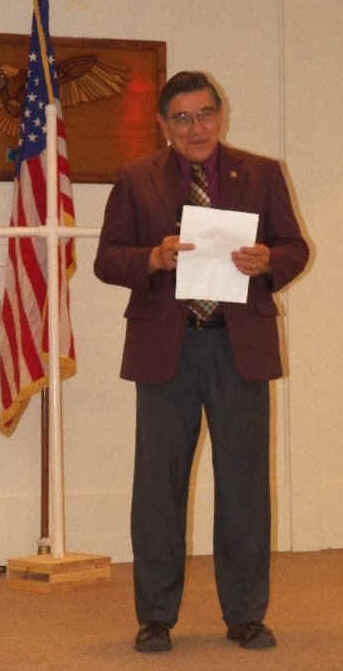 |
|
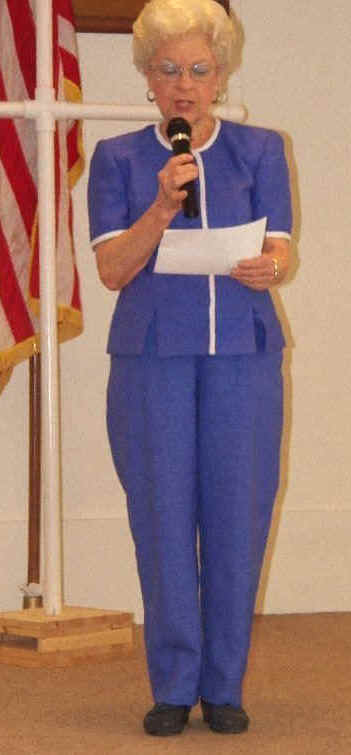 |
| The Granaderos de Galvez - San Antonio Chapter was
represented in prayer by Able Araiza |
Michael Byrne gave prayer for the Society of Mayflower Descendants - San Antonio Chapter |
Peggy Jared gave the prayer for the Magna Charta Dames and Barons |
| H |
|
|
|
| Judge Ed Butler gave prayer for the Order of the Founders of North America 1492 - 1692, First Families of Maryland, and the Order of the Founders and Patriots of America |
| H | |
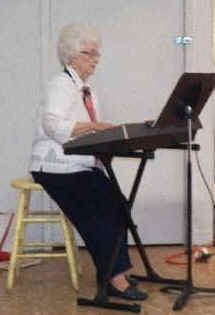 |
Mary Eck played the piano as all sang the National Anthem , God Bless America, America the Beautiful and entertained with songs of tribute to America
The closing prayer was given by Jim Massingill The Granaderos de Galvez retired the Colors Below is a copy of letter written by George Washington to John Hancock on 11 June 1783. |
I now make it my earnest prayer, that God would have you and the State over which you preside, in his holy protection, that he would incline the hearts of the Citizens to cultivate a spirit of subordination and obedience to Government–to entertain a brotherly affection and love for one another, for their fellow Citizens of the United States at large, and particularly for their Brethren who have served in the Field, and finally, that he would most graciously be pleased to dispose us all, to do Justice, to love Mercy, and to demean ourselves with that Charity, Humility, and Pacific temper of mind which were the Characteristicks of the Divine Author of our blessed Religion, and without an humble imitation of whose example in these things, we can never hope to be a Happy Nation. I have the honor to be with the greatest esteem & respect Sir Your Excellency’s Most Obedient and very Humble Servant Go: Washington |
|
USS McFaul - DDG 74 |
McFAUL sailors participated in a joint ceremony with the armed forces of Spain honoring fallen members of the military throughout history. The ceremony is the hallmark event of McFaul's visit to Spain, which coincides with the 234th anniversary of the Spanish General Bernardo de Galvez's capture of Pensacola during the American War of Independence on May 8, 1781, resulting in the eviction of the British forces from the Florida territory and the establishment of a crucial Southern front to provide relief to General Washington's forces. The Bernardo de Galvez Association, United States Embassy in Spain, Spanish military, and government of Malaga worked in concert with one another to achieve McFaul's participation in the ceremony - marking the first time a United States Navy warship has ever participated in an activity of this kind in Spain!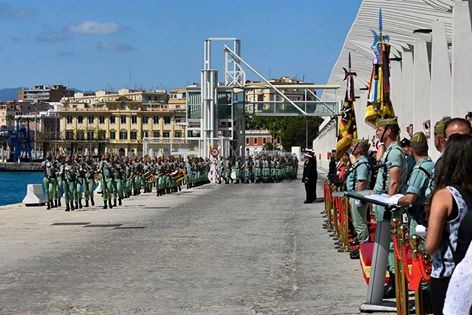
Sent
by María Ángeles O'Donnell de Olson
Cónsul
Honorario de España en San DiegoTeléfono: 1-619-448-7282 conhon.espana.sd@gmail.com
|
|
|
Un ejemplo precioso de los
resultados de nuestro trabajo
a favor del reconocimiento de
España en la independencia de
los EEUU es el título y
contenido de la
conferencia anual de los Hijos
de la Revolución Americana (SAR):
“El Marques de Lafayette y
los Amigos Europeos de la
Revolución Americana”. Ademas
del añadido al titulo de la
conferencia, el programa
tendra una
ponencia sobre Bernardo de
Galvez y otra sobre el papel
de España en la guerra de la
independencia americana. Los
SAR también han estado
siempre a mi lado, fieles a
mis esfuerzos por el
reconocimiento de España en
la creacion de EEUU. ¡¡Gracias!!
Por favor, informad sobre la
conferencia a vuestros
contactos.
Por otra parte, el Centro de Historia y Cultura Militar de Canarias celebró en Santa Cruz de Tenerife el pasado mes la conferencia “Bernardo de Gálvez un héroe compartido”, impartida por D. Manuel Olmedo Checa, académico de la Real Academia de Bellas Artes de San Telmo y Vicepresidente de la Asociación Bernardo de Gálvez. Esta conferencia forma parte del ambicioso proyecto "Contribución española a la Independencia de EEUU: ISLEÑOS EN LUISIANA". Para recibir información sobre estos eventos, contactad con el general D. José Alberto Ruíz De Oña Domínguez jardod@oc.mde.es Quiero recordaros que Manuel Olmedo es el verdadero héroe de la recuperacion de la figura de D. Bernardo. Fue Manuel quien descubrió los documentos históricos sobre la resolución incumplida del 1783 y quien los hizo públicos en 2007 y tambien es un fenómeno a la hora de amenizar y hacer que las conferencias de historia se hagan cortas. Primicia: como embajadora de la Asociación BDG para EEUU, estoy trabajando a este lado del charco en encontrar el cuadro original de BDG que Oliver Pollock entregó al Congreso continental el 8 de mayo de 1783. Ya sé, ya sé que no es nada fácil, pero como decía María de Villota “Lo conseguí porque no sabía que era imposible” :o) y con un mentor como Manuel Olmedo ¡¡sé que lo conseguiremos!! Si tienes alguna noticia que quieras compartir sobre BDG, por favor no dudes en mandármela. 950 personas reciben este mensaje y tan importante es colgar un cuadro en el Capitolio como leer estas noticias y compartirlas con nuestro círculo social. Hablad, hablad, hablad de D. Bernardo, llevadlo a los bares, a las sobremesas, a las reuniones de amigos. Vuestra colaboración es lo que haciendo de esto algo grande. :o) Por último comparto con vosotros mi primera presentación a estudiantes de sexto curso en un colegio de Virgina sobre el asunto del retrato. Ha sido experiencia inolvidable el llevar a los niños nuestra Historia y conseguir que la disfruten, se rían con ella y la hagan suya. Hay más cosas lindas que compartir ¡¡pero lo dejo para mi siguiente mensaje!! Un abrazo grande desde Washington DC, Teresa Valcarce Graciani teresavalcarcegraciani@yosolo.org Embajadora de la Asociacion Bernardo de Galvez por EEUU
|
|
|
| On April 23rd John Espinosa, Miguel Angel
Mazarambroz, Dr. Caroline Crimm, Dr. Dorothy Caram, and Opera enthusiast Ann Thompson met with Marec Bela Steffens to hear his first reading of the Libretto for the potential opera about
Galvez. Marec had even found a red GALVEZ t-shirt – from the city of
Galvez, Spain! The reading was excellent, and discussion began immediately on how we can get a commission for this opera. We hope to schedule a meeting with
HGO, and possibly other major opera companies, soon. However, many of our members are also recommending music schools and other outstanding venues for a simultaneous premier outside of Houston (such as Pensacola, New Orleans, the Kennedy Center in Washington D.C., and even Madrid! More information on this terrific project will follow! |
|
|
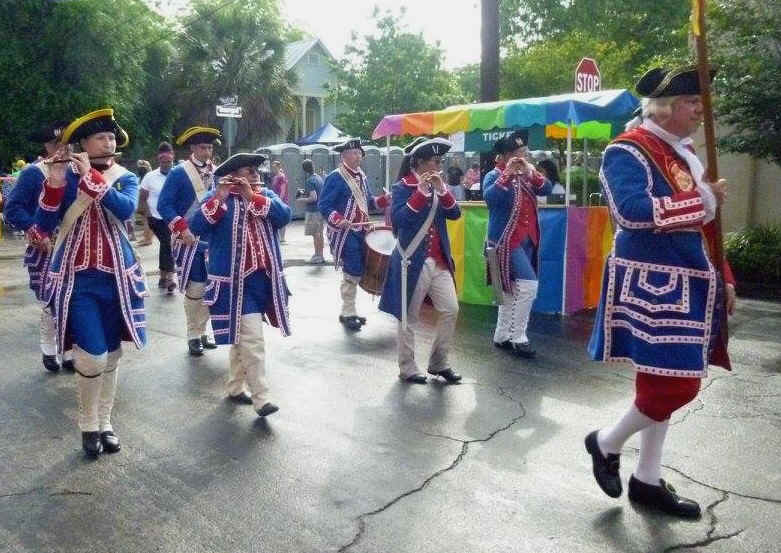
| Hi Mimi, Here are some pictures and short article on our participation in the King William Fair this year. The Order of Granaderos y Damas de Galvez in San Antonio, Texas, served as the first-ever Vanguard for the San Antonio King William Fair Parade on Saturday, April 25, 2015. The fair is an official event of Fiesta San Antonio, which celebrates Texas' independence from Mexico. The Granaderos de Galvez also staffed a living history booth at the fair where they conducted musket firing demonstrations and spoke with several groups of fair goers about General Bernardo de Galvez and Spain's contributions to the American Revolution. This year marks the 40th anniversary of the Order of Granaderos y Damas de Galvez. Thank you, Mimi. Joe Joe Perez
|
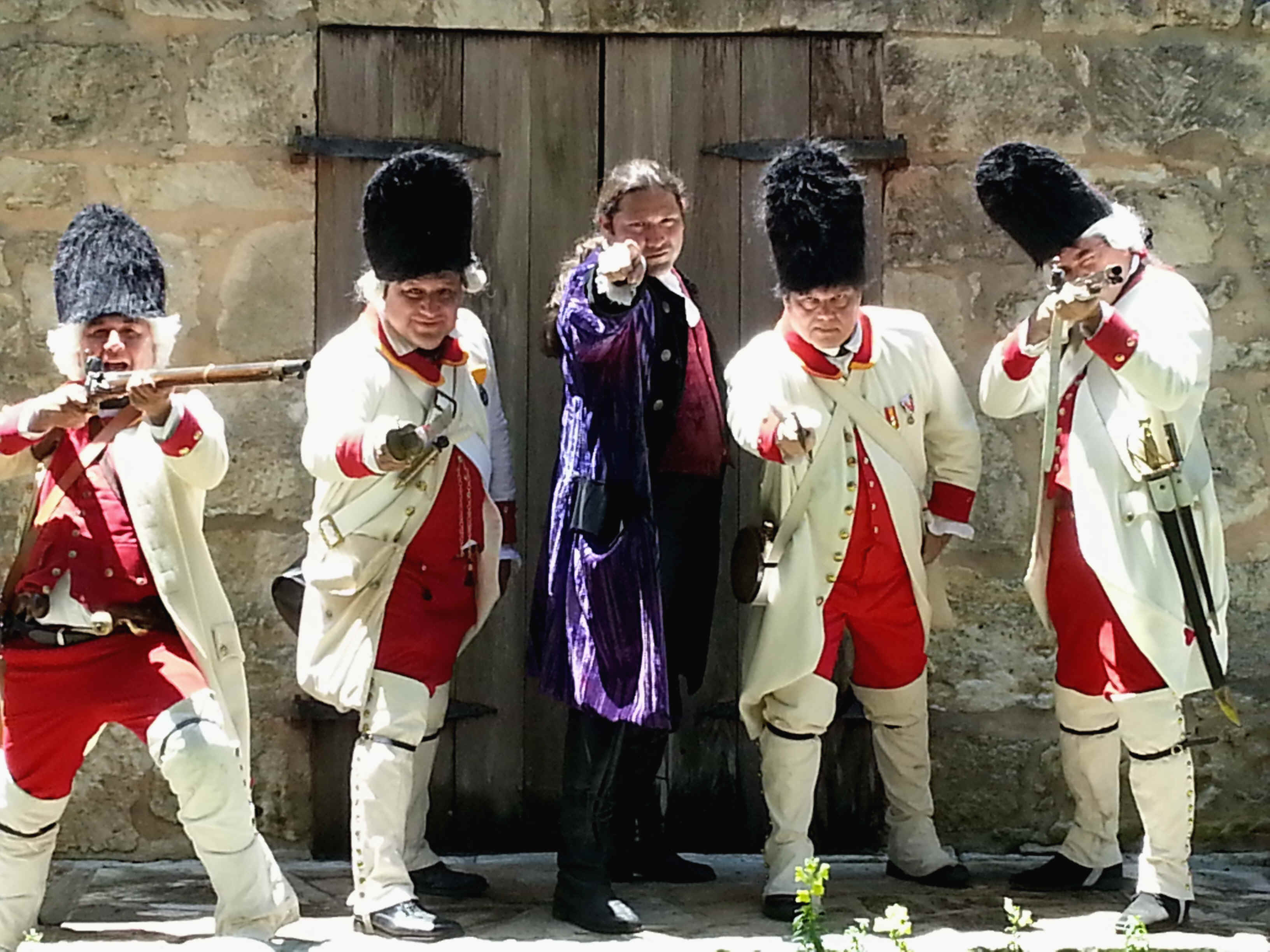
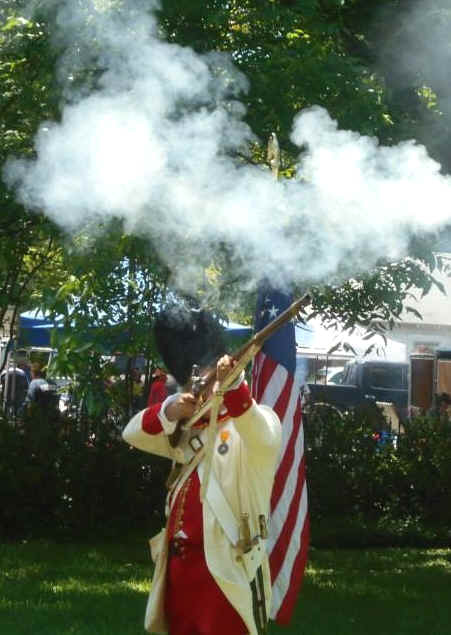
| Granaderos
y Damas de Galvez -- Houston Chapter
|
| Project: Potential Opera about
Galvez
|
On April 23rd John Espinosa, Miguel Angel Mazarambroz, Dr. Caroline Crimm, Dr. Dorothy Caram, and Opera enthusiast Ann Thompson met with Marec Bela Steffens to hear his first reading of the Libretto for the potential opera about Galvez. Marec had even found a red GALVEZ t-shirt – from the city of Galvez, Spain! The reading was excellent, and discussion began immediately on how we can get a commission for this opera. We hope to schedule a meeting with HGO, and possibly other major opera companies, soon. However, many of our members are also recommending music schools and other outstanding venues for a simultaneous premier outside of Houston (such as Pensacola, New Orleans, the Kennedy Center in Washington D.C., and even Madrid! More information on this terrific project will follow! |
| Project: Galvez statue in
Galveston
Houston Granaderos y Damas May 2015
Newsletter |
|
Urrutia |
Captain Joseph de Urrutia Congratulations to John Inclan whose book, The descendents [sic] of Captain Joseph de Urrutia is listed in the Library of Congress, Washington, D.C. |
Joseph de Urrutia (ca. 1678-1741), Urrutia family The descendents [sic] of Captain Joseph de Urrutia commander of the Royal Presidio of San Antonio de Bexar compiled by John D. Inclan. Published 2004 by J.D. Inclan in [Chandler, AZ?] . Written in English. Edition Notes Cover title. "Coahuila, Nuevo Leon, Tamaulipas, Louisiana,Texas." Includes bibliographical references. Open Library | OL22660317M | LC Control Number | 2008351861 Editor Mimi: Captain Joseph de Urrutia is my direct ancestor. Captain Urrutia was commander of the Royal Presidio of San Antonio de Bexar: Having lived among the Cantujuanas, Toos, and Yemes for seven years, He was appointed "protector of the Indians of Nuevo Leon, against the Apache." While Urrutia lived among the Indians, he was made captain general of all the indigenous nations that were hostile to the Apaches.
Source:
Well documented 1937 book, With the Makers of San Antonio by Fredrick C. Chabot
|
|
|
|
|
According to Scripture, God made Earth for one reason: "He did not create it to be empty, but formed it to be inhabited" Isaiah 45:18. He made the earth, then Adam and Eve, and through them, the world was filled with all of us. A story now discredited, I know, yet solidly documented by modern science.
|
| ¿Es usted descendiente por línea directa materna de alguna de las siguientes
mujeres? Pertenece al haplogrupo T2e? |
| Isabel de Castro y Figueroa Inés de la Cerda María de la Cerda (mujer de Tomás Flores de Abrego) Clara Flores de la Cerda ¿Se ha realizado una prueba genética y su ADN mitocondrial (ADNmt) pertenece al haplogrupo T2e? Para más información visite: https://genealogiadelacerda.wordpress.com/2015/03/11/se-buscan-descendientes-portadores- del-adn-mitocondrial-t2e/ ¿Qué es el ADN mitocondrial? El ADN mitocondrial (ADNmt) es el material genético de las mitocondrias, los orgánulos que generan energía para la célula. El ADNmt se hereda únicamente de madre a hijos. Los hijos de las hijas de esta mujer tienen también el mismo ADNmt y así sucesivamente. A través del análisis del ADN mitocondrial (ADNmt) se puede conocer de dónde procedían sus antepasados maternos. Para saber más sobre el ADNmt: Genoma mitocondrial El ADN y nuestra genealogía (I): Fundamentos -------------------------------------------------------------------------------- El artículo a continuación en su original en inglés fue publicado en eSefarad.com por la profesora Felice L Bedford el 22 de diciembre de 2013. Anuncio sobre un nuevo estudio de genética sefardí Hemos encontrado que el origen de un gran número de personas que residen en partes de México se remonta a una mujer sefardí. Esta mujer parece haber llegado de España, muy probablemente al principio del siglo XVII durante la fundación de los pueblos mexicanos. Sin duda ella hubiese sido de origen converso o cripto-judío, debido a que la práctica abierta del judaísmo aun lejos de la madre patria estaba prohibida en la Nueva España. La evidencia está basada en los resultados del ADN (en específico el ADN mitocondrial) de ciertos mexicanos contemporáneos, que es exactamente igual al ADN de sefardíes cuyos orígenes se remontan a su migración de España y Portugal hacia las regiones del imperio otomano incluídas Bulgaria y Turquía. Las regiones de México en cuestión son Coahuila, Nuevo León, y Tamaulipas, y el sur de Texas en los Estados Unidos. Estas son regiones donde se han dado numerosos reportes anecdóticos e históricos sobre fundadores sefardíes. Nuestro estudio provee evidencia sólida de que en efecto estas historias son verdaderas. Además, muestra que mujeres sefardíes fueron ancestros de la población contemporánea, no sólo hombres. Los estudios de genética han más comúnmente encontrado que hombres de origen europeo y mujeres nativas eran los fundadores de muchas nuevas comunidades. Estas regiones de México podrían representar un foco de mujeres fundadoras de origen europeo. Me place saber que el ADN sefardí sobrevive, aun cuando la gente misma no preserve – o ni siquiera tenga conocimiento – de su herencia sefardí. https://genealogiadelacerda.files.wordpress.com/2015/03/genetica_sefaradi.jpg También hemos encontrado otro registro judío dentro del ADN mitocondrial, éste está presente en ambos judíos askenazíes y sefardíes. En este caso la población eran estadounidenses y sorprendentemente, esta variante sólo se encontró entre individuos judíos. Además, debido a los muchos diferentes patrones del mismo tipo básico, este registro parece ser tan antiguo que podría haber ocurrido previo a la división entre los diferentes grupos judíos. Se podría remontar a las tribus judías originales, sino antes. Es impresionante imaginar que el ADN se ha hecho camino virtualmente sin cambios desde que salió del Oriente Próximo y se dispersó eventualmente a través de Europa, incluyendo Bulgaria, Rumania, la República Checa, Polonia y Rusia por sólo nombrar algunos de los lugares donde hemos encontrado este registro. Esta variante es algo inusual y sólo se encuentra en el grupo que afecta el ATP [trifosfato de adenosina] o la energía celular; está por determinarse si esta variante le dio alguna ventaja de supervivencia a los individuos judíos que la poseían. Ambos mecanismos judíos de retrollamadas pueden ser encontrados en un subclado muy específico del ADN mitocondrial conocido como el haplogrupo mitocondrial T2e. Si gusta obtener todos los deliciosos detalles técnicos y otros más, favor de dirigirse al estudio [al pie de esta página] -------------------------------------------------------------------------------- Estudios [en inglés] Bedford, F. L., Yacobi, D., Felix, G., & Garza, F. (2013). Clarifying mitochondrial DNA subclades of T2e from Mideast to Mexico. Journal of Phylogenetics and Evolutionary Biology, 2, 4, 1-8 http://www.esciencecentral.org/journals/clarifying-mitochondrial-dna-subclades-of-te-from- mideast-to-mexico-2329-9002-1-121.php?aid=20717 http://dx.doi.org/ doi: 10.4172/2329-9002.1000121 Bedford, F. L. (2012) Sephardic Signature in Haplogroup T mitochondrial DNA. European Journal of Human Genetics, 20,4, 441-448. (DOI:
10.1038/ejhg.2011.200)
|
|
|
FAMILY HISTORY RESEARCH |
|
FamilySearch
Collections Update The use of social security numbers in family history research 150 questions to ask family members about their lives By Barry J. Ewell Preliminary Survey Home Sources |
|
|
| Searchable
historic records are
made available on FamilySearch.org
through the help of
thousands of volunteers
from around the world.
These volunteers
transcribe (index)
information from digital
copies of handwritten
records to make them
easily searchable
online. More volunteers
are needed (particularly
those who can read
foreign languages) to
keep pace with the large
number of digital images
being published online
at FamilySearch.org.
Learn more about
volunteering to help
provide free
access to the world’s
historical genealogical
records online at FamilySearch.org
.
FamilySearch is the largest genealogy organization in the world. FamilySearch is a nonprofit, volunteer-driven organization sponsored by The Church of Jesus Christ of Latter-day Saints. Millions of people use FamilySearch records, resources, and services to learn more about their family history. To help in this great pursuit, FamilySearch and its predecessors have been actively gathering, preserving, and sharing genealogical records worldwide for over 100 years. Patrons may access FamilySearch services and resources for free at FamilySearch.org or through more than 4,600 family history centers in 132 countries, including the main Family History Library in Salt Lake City, Utah. |
|
Collection |
Indexed Records |
Digital Images |
Comments |
|---|---|---|---|
|
0 |
22,055 |
Added images to an existing collection. |
|
|
Philippines, Biliran, Diocese of Naval Parish Registers, 1818–1978 |
0 |
28,118 |
New browsable image collection. |
|
0 |
354,145 |
New browsable image collection. |
|
|
|
| PRELIMINARY
SURVEY HOME SOURCES
1. ALBUMS - Photograph albums are among the most cherished family records, but they are of no value unless they are identified. Be sure all photographs are marked and dated. 2. BIBLES - Family bibles usually have a few pages devoted to strictly genealogical data. These should be carefully evaluated and where possible corroborated from other sources. 3. BIOGRAPHIES - Unpublished biographies may be found among papers in a desk. 4. CHURCH CERTIFICATES - These would include certificates of baptism, birth, graduation, death certificates, funeral notices. 5. CIVIL CERTIFICATES - Birth, marriage, and death certificates are often available. They generally qualify as a primary or original source. 6. CITIZENSHIP RECORDS - Citizenship papers often contain birth date and place, plus parentage. Often, too, the date of arrival and port of destination are included. 7. DIARIES AND JOURNALS - All such items should be carefully studied for genealogical facts and clues. 8. FRATERNAL RECORDS - Often membership in the Masonic Lodge, Elks, or Knights of Columbus will provide a needed clue. 9. HISTORIES - Perhaps you will find a manuscript by an ancestor that you will be able to use with supporting evidence. 10. LEGAL PAPERS - This category will include wills, deeds, mortgages, and grants, all of which are valuable because of the names, dates, and places mentioned. 11. LETTERS - Old letters may give you a wealth of intimate and informal family history. Addresses, names of writers, postmarks, and dates are also often useful clues. 12. MEMORIAL CARDS - Prior to the present time, deaths were often announced to relatives by means of printed memorial cards. Genealogical data usually consisted of the death date, place of burial, birth date and place, plus age at death. 13. MILITARY RECORDS - These would include discharge papers, pension records, service records, medals, ribbons, etc., and may provide important clues. 14. NEWSPAPER CLIPPINGS - Among these would be such items as birth, marriage, and death notices; anniversaries; civil, church, and social events, etc., all of which could provide clues. 15. OCCUPATIONAL RECORDS - Awards, citations, and other occupational achievements may be of value in compiling a family history. 16. SCHOOL RECORDS - Any record dealing with schools, appointments, attendance, and graduation may be of help in establishing genealogical facts. 17. SCRAPBOOKS - Many of our ancestors kept such books and they may contain helpful genealogical information. ORAL HISTORIES - Take a tape recorder and let your older relatives record the family stories they remember. Be sure to indicate when, where, and by whom these interviews were made. TRADITIONS - Carefully record all family traditions and then try to prove or disprove them. There is always some truth in all traditions and it is up to you to separate the real from the unreal.
|
| H |
| Did
you know that social security numbers can help to determine locality of
a person's residence? The first three digits of the number indicate the
state in which an applicant resided at the time of the
application. Go to: http://www.mrfa.org/ssn.html |
| Genealogy: 150 questions to ask family members about their lives By Barry J. Ewell Posted April 10, 2015 http://genealogybybarry.com/contact/ http://genealogybybarry.com/genealogy-150-questions-ask-family-members-lives/ |
|
Well-crafted, open-ended questions can yield fruitful results when you interview family for purposes of family history. The following is an outline of questions you may want to consider. Take time to tailor the questions to the person you are interviewing. When you are ready to conduct an interview, have the questions in front of you to make sure you are getting the information you desire. Conversations about family can go many directions. When possible, record the interview on audio or video. What is your full name and why were you named that? (Maiden name for females) Were you named after someone else? Did you have a nickname as you were growing up? If you did, what was it and why did they call you that? Have you had any other nicknames as an adult? What do your family members call you now? When and where were you born? When were you baptized, and what was your religion? What was the religion of your parents and your grandparents? What church if any do you attend? Your parents and your grandparents? Where was your first home? Other homes/places you have lived? What were your earliest memories of your home? Your parents? Please give full names. Your grandparents? Please give full names. Could you tell me a story or any memory of your brothers and sisters? What are the full names of brothers and sisters? What did your family do for fun when you were a child? Was there a chore you really hated doing as a child? What kind of books did you like to read? Do you remember having a favorite nursery rhyme or bedtime story? What was it? Do you remember not having enough food to eat because times were hard for your family? What were your favorite toys and what were they like? What were your favorite childhood games? Were there any fads during your youth that you remember vividly? Where did you attend grade school (s)? High school? What were your schools like? How did you like school? What was your favorite subject in school and why? What subject in school was the easiest for you? What was your least favorite subject in school and why? Who was your favorite teacher and why were they special? How do your fellow classmates from school remember you best? Did you get good grades? Did you like school? What did you wear to school? Describe it. What school activities and sports did you participate in? Did you and your friends have a special hang-out where you liked to spend time? Where was it and what did you do there? Were you ever given any special awards for your studies of school activities? How many years of education have you completed? Describe yourself as a young adult. Did you attend any school or training after high school? Do you have a college degree (s)? From where? If so what was your field of study? As a child, what did you want to be when you grew up? What was your first job? How did you decide on a career? What jobs have you had? Did you make enough money to live comfortably? How long did you have to work each day at your job? How old were you when you retired? Or when do you want, or can retire? If you served in the military, when and where did you serve and what were your duties? Rank? Were you ever injured in the line of duty? What were the circumstances? How old were you when you started dating? Do you remember your first date? Who was your first date? Could you tell me something about it? When, where and how did you first meet your present spouse? Describe them. Do you remember where you went on the first date with your spouse? Describe it. How long did you know them before you got married? Describe your wedding proposal. Where and when did you get married? (Include date, place, church, etc.) Describe your wedding ceremony. Who was there? Best Man, Bride’s Maid, other wedding party members? Did you have a honeymoon? Where did you go? How would you describe your spouse (s)? What do (did) you admire most about them? How long have (were) you married? When and where did your spouse die? How died? Where buried? What advice would you give to your child or grandchild on their wedding day? How did you find out you were going to be a parent for the first time? How many children did you have all together? What were their names, birth dates and birthplaces? Why did you give them the names that you did? Do you remember anything that your children did when they were small that really amazed you? What is one of the most unusual things that one of your children did regularly when they were small? What was the funniest thing you can remember that one of your children said or did? If you had to do it all over again, would you change the way you raised your family? How? What did you find most difficult about raising children? What did you find most rewarding about being a parent? Did you spoil any of your children? How? Were you a strict or lenient parent? Did you find that you had to treat each of your children differently? If so Why? How did you feel when the first of your children went to school for the first time? How did you first hear that you were a grandparent and how did you feel about it? What advice do you have for your children and grandchildren about being a parent? Where did your spouse’s parents live? When and where did your parents die? What do you remember about it? How they died, where hospitalized, buried? What do you remember about the death of your spouse’s parents? Do you remember hearing your grandparents describe their lives? What did they say? Do you remember your great-grandparents? What do you know about them? Who was the oldest person you remember as a child? Did you have any of the childhood diseases? Do you have any health problems that are considered hereditary? What are they? What do you do regularly for exercise? Do you have any bad habits now or in the past? What were they? Have you ever been the victim of a crime? What happened? Have you ever been in a serious accident? Has anyone ever saved your life? Describe. Have you ever been hospitalized, if so, what for? Have you ever had surgery? What for? What would you consider the most important inventions made during your lifetime? Do you remember the first time you saw a television; a car; a refrigerator? How is the world different from what it was like when you were a child? Do you remember your family discussing world events and politics? How would you describe yourself politically? Are you Conservative or Liberal and why? Do you remember what you or your parents thought about income tax when it began in 1913? Do you remember anything of the days of prohibition? How did it affect you and yours? How did the depression affect you? What U.S. President have you admired the most and why? What did you think of President Franklin Delano Roosevelt? How did you react to the death of President Franklin Delano Roosevelt? How did you react to the death of President Kennedy? What wars have been fought during your lifetime? How did you feel about them? What were you doing when you heard the news of the Pearl Harbor bombing? How did World War II affect you? How did the Korean War affect you? How did the Vietnam War affect you? Name a good friend that you have known for the longest period of time? How many years have you been friends? Has there ever been anyone in your life that you would consider to be your kindred spirit or soul mate? Who were they and why did you feel a special bond with them? What were the hardest choices you ever had to make? Do you feel like you made the right choices? Who was the person that really changed the course of your life by something they did? Who were they and what did they do? Do you remember someone saying something to you that had a big impact on how you lived your life? What was it? If you could change something about yourself, what would it be? What was the most stressful experience that you ever lived through? What helped you get through it? What is the scariest thing that has ever happened to you personally? What kinds of musical instruments have you learned to play? Would you consider yourself to be creative? What things have you made that others have enjoyed? How would you describe your sense of humor? What is the funniest practical joke you ever played on someone? What activities have you especially enjoyed as an adult? What are your hobbies? What did you like to do when you were not working? What is the most amazing thing that has ever happened to you? Have you ever met any famous people? Describe what happened. What organizations or groups have you belonged to? Have you ever won any special awards or prizes as an adult? What were they for? Describe a time and a place you remember feeling truly at peace and happy to be alive. Where were you and what were you doing? What is the most beautiful place you have ever visited and what was it like? What is the longest trip that you have ever gone on? Where did you go? What has been your favorite vacation? Where did you go and why was it special? What was the favorite place you ever visited and what was it like? What pets have you had? Do you have a favorite story about a pet? Is there anything you have always wanted to do but haven’t? Have you ever been to the world’s fair? What is the single most memorable moment of your life? |
| What or who is your favorite: Animal? Artist? Athlete? Author? Board game? Book? Candy? Card game? Color? Cookie? Drink? Flavor of ice cream? Flower? Fruit? Holiday? Meal? Movie star? Movie? Musical group? Musical instrument? Painting? Poem? Poet? Restaurant? Season? Singer? Song? Sport? Style of music? Tree? TV program? Vegetable? |
If you had to pick a label for your family members (spouse, children, mother, father, brothers, sister…) Who fits the following descriptions? Animal lover; Best cook; Best gardener; Best housekeeper; Best looking; Best memory; Best story teller; Biggest tease; Calmest; Funniest; Hardest worker; Most athletic; Most colorful; Most creative; Most frugal; Most generous; Most mischievous; Most politically active; Most reclusive; Most relaxed; Most sociable; Quietest; Shortest; Tallest; Wildest lifestyle; |
|
|
|
|
|
|
June 13: SHHAR meeting: Myla Collier - Life Story Writing Orange County Imaginology Fair July 30th: Huntington Beach Searches for Greatest Storyteller |
|
|
|
MEETINGS
AND PRESENTATIONS: All
SHHAR monthly meetings are free, open to the public and held at the
Orange Family History Center,
674
S. Yorba St., Orange, CA 92863
|
|
Myla Collier
- Life Story Writing The
Society of Hispanic Historical & Ancestral Research (SHHAR) invites
the public to its June 13, 2015 meeting featuring speaker
Myla Collier who is a Cultural Anthropologist who taught Life Story
Writing for fifteen years at Cuesta Community College in San Luis
Obispo. She has recently moved to Orange County and is now conducting
Life Story Writing classes for Santiago Canyon College at the Orange
Senior Center. The free program, sponsored by the
Society of Hispanic Historical and Ancestral Research (SHHAR), will be
held at the Orange Family History Center, 674 S. Yorba Street, Orange,
CA. Genealogical research assistance will
be available from 9 -10 a.m., and Collier
will speak from 10 -11:30 a.m. May meeting photos. .
|
|
There was a full house for the SHHAR May meeting, a
power point presention. |
|
|
|
Students
from Santa Ana College attended this special presentation by John
Schmal. Since they are enrolled in either Mexican History or
Mexican American History classes, John’s presentation on northern
Native Americans of Mexico enhanced their learning experience.
The students are: Jose Marin, Daniel Cortes, Viviana Rodriguez,
and Fernanda Rivera. Visits to the FamilySearch Library Center,
maintained by the LDS (Mormon) Church, opened new opportunities for
them to learn about their culture and excite them about doing future
family research. They were invited to attend by Professor
Angelina Veyna of Santa Ana. College. Veyna_Angelina@sac.edu
|
|
Upcoming:
July
11th Irene
Foster is presenting “From
Humble Roots to Mars”, the story of the 1st five missions in Baja
and the families who worked and maintained them.
Irene will also touch on the founding families of Baja California
and how they helped establish the Missions of Alta California.
|
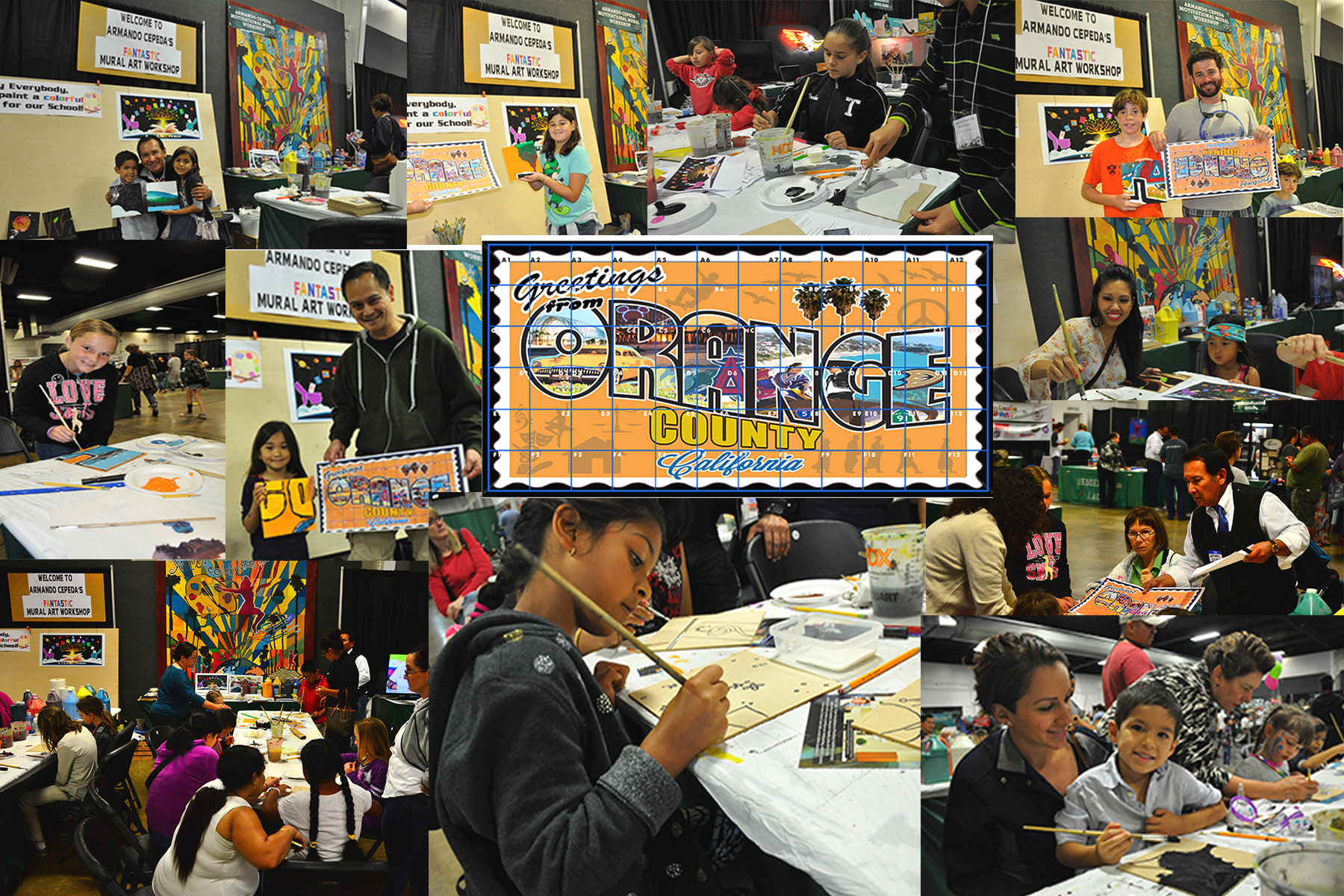
|
April Orange County Imaginology Fair |
 |
Greetings,
I am Armando Cepeda, the artist/educator who conducted the wonderful mural workshop
in the April OC Imaginology Fair. I am writing to you because you participated in helping paint one of our fantastic murals and I thank you for that. We had a great turn out and had a wonderful time. As I put the finishing touches on the murals, I will soon be contacting the winning school sites that won one of the murals. I also want to take this opportunity to offer an exciting 2-hour Motivational Mural Workshop for your school or any other organization you serve at a special introductory rate. I can conduct a great workshop for group sizes from 25 up to 150 participants at a time. I supply all the needed materials. You only need to provide the indoor location and we’re set to go! |
|
Keep in mind that a fantastic Motivational Mural Workshop is the perfect Morale Boosting, Professional Development, In-Service, Collaboration, Team-Building, Back-to-School Ice Breaker. Afterwards, you will have a beautiful, custom designed mural to display for years to come.
Armando Cepeda, Artist/educator armando@arteganas.com Yorba Linda, CA 951-313-1833/714-502-4472 See more information on my Motivational Mural Facebook page |
|
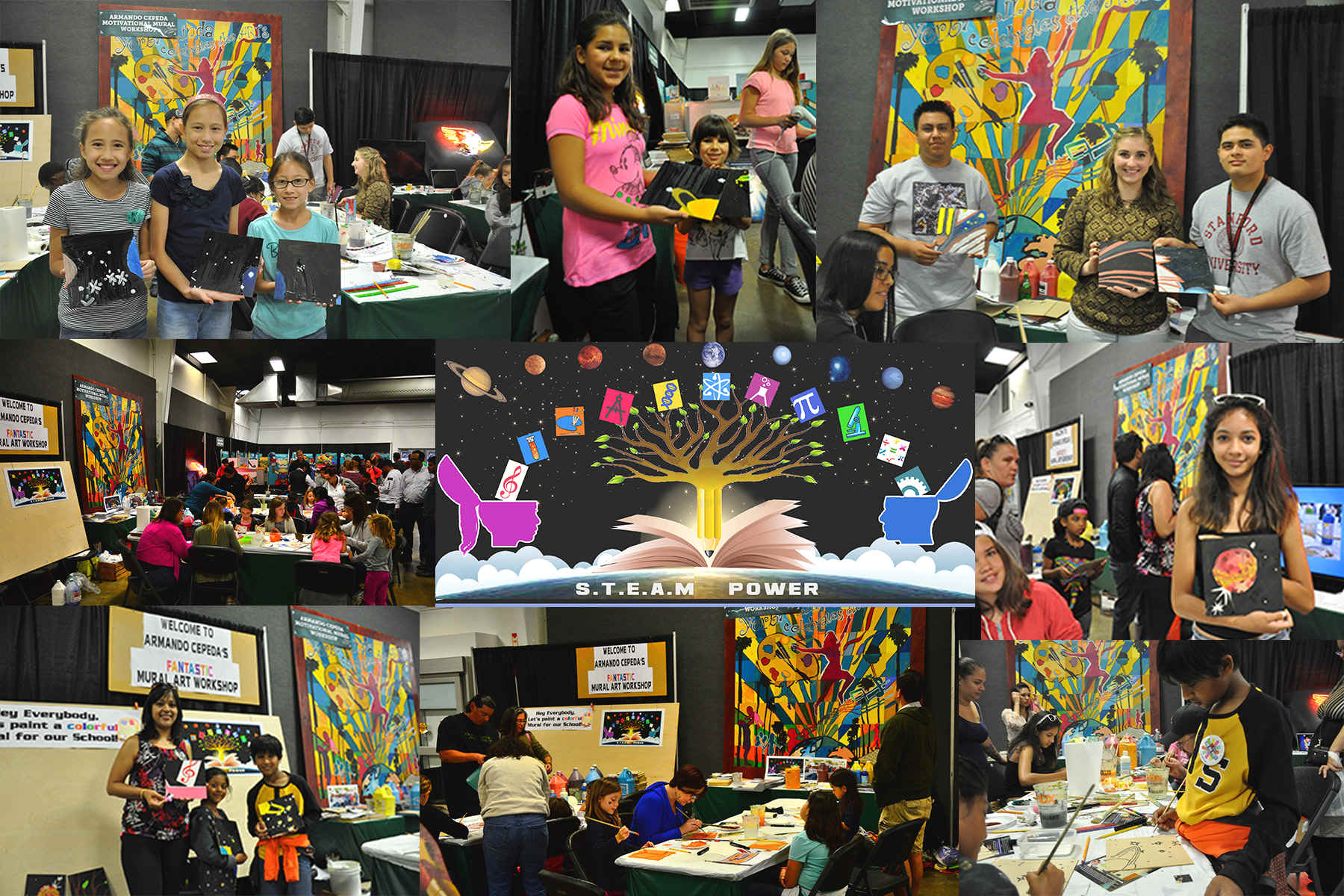
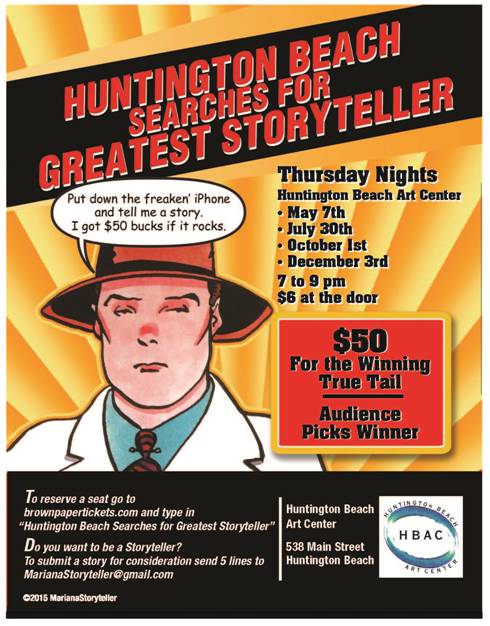 |
|
|
|
|
Special
Memorial Day Performance of “Veteranos: A Legacy of Valor” |
|
|
|
|
Los Angeles, CA – April 22, 2015 - In commemoration of American veterans on Memorial Day, Latin Heat Entertainment will present Veteranos: A Legacy of Valor, a theatrical tribute written & directed by actor/writer Enrique Castillo (Weeds, Blood In Blood Out, Mi Familia). Two live performances will take place at 4:30pm and 7:30pm, followed by a Q&A and reception, on Memorial Day, May 25, 2015 at Plaza de la Raza in Lincoln Heights. Net proceeds will benefit the Eugene A. Obregon Memorial Foundation, a non-profit organization that is raising funds to complete the Medal of Honor monument at Father Serra Park in downtown Los Angeles. |
| Veteranos: A Legacy of Valor pays homage to the countless Latinos who have fought and died in America’s defense highlighting the stories of four American heroes. The special Memorial Day performances are a condensed version of the touring production. This special production tells the real life story of U.S. Marine Corps PFC, Eugene Arnold Obregon who grew up in East Los Angeles and attended Roosevelt High School before enlisting in the Marines. At the young age of 18, PFC Obregon volunteered to fight for his country in the Korean War. It was a time when there was still a deep division between Anglos and Latinos but the story of Obregon and his fellow Marine, a Texan named Bert Johnson, was an exception. Putting your life on the line for a brother Marine – was the right thing to do. The Marine Corps made them brothers; an act of valor would make them immortal. For his actions, ‘Above and Beyond the Call of Duty’, PFC Obregon received the Congressional Medal of Honor, our country’s highest military honor. The full-length theater production of Enrique Castillo’s Veteranos: A Legacy of Valor has toured twice nationally since 2000. He conceived Veteranos years ago due to the lack of representation of Latinos who have courageously defended our country since the American Revolution. Castillo dedicates Veteranos to these heroes with this bilingual production, which includes live music, audio-visuals and a dramatization of the lives of American heroes. “The bravery of our Latino veterans should never be forgotten. Veteranos: A Legacy of Valor honors those who gave their lives so we can enjoy our freedom”, said writer/director Enrique Castillo. Net profits from Veteranos will benefit the Eugene A. Obregon Medal of Honor Foundation ( http://www.obregoncmh.org/indexHome.html ). The foundation has already built an honorary wall dedicated to all Medal of Honor recipients at Father Serra Park near Olvera Street in Los Angeles and is raising funds to complete a monument dedicated to Latino Medal of Honor recipients. With the generous support of local businesses and corporate companies, Latin HeatEntertainment will be able to provide complimentary admission to all U.S Military veterans who wish to attend one of the Memorial Day performances. Veteranos: A Legacy of Valor is open to all ages. General admission tickets are $20 online and $25 at the door. Complimentary veteran admission will be available at the door with proper military ID. To pre-purchase tickets or to make a donation online, please visit:http://www.eventbrite.com/e/veteranos-a-legacy-of-valor-tickets-16590749378 For information and sponsorship opportunities, please contact Bel Hernandez at:bhernandez@latinheat.com Plaza de la Raza 3540 N. Mission Rd. Los Angeles, CA 90031 ### About Veteranos: A Legacy of Valor: Veteranos is a theatrical production written and directed by Enrique Castillo. The full-length production documents the bravery of four American heroes. Their stories are told through four dramatized vignettes of the lives of Medal of Honor recipients and their historic contribution to America's defense. The life stories of David Barkley Cantu (WWI); Macario Garcia (WWII); Eugene A. Obregon (Korean Conflict); and Roy Benavidez (Vietnam Era), are told in this award-winning two-act play, which is narrated by a Pre-Colombian Warrior.Veteranos was honored with a special Congressional Recognition in Washington DC from the Congressional Hispanic Caucus and in 2003, it won an Imagen Award for Best Live Theatrical Production. Media Contact: Brenda Herrera 626-841-3699 brenda@herrera-communications.com  Bel Hernandez, President/CEO Latin Heat Media, 310.464.5290 Ext. 812 bhernandez@latinheat.com www.latinheat.com Creator/Executive Producer HOLA! LA, The TV Talk Show with a Latina POV |
|
|
The House of Aragon |
At twenty-seven years of age, the Korean War was now finished for Michael Aragón. The death of his friend Captain Peter Wellington and Aragón’s own losses left him devastated and broken. He was lost in the anger and hopelessness of it all. He was now the last remaining Raider from Wellington’s WWII crew. It was April of 1951, when he received his medical release and honorable discharge from the Marines. He was headed home. But first he would pick up Wellington’s orphaned son, Kenny, in Boston and return with him to L.A. Booze gets him through for a while until he’s ready to retake the mantle of the Family, La Eme. Michael Aragón is a changed man, colder, harder. Gone was the last of his innocence. The Family business had grown, the barrios were under control. Aragon’s visit with Benjamin Levy confirms that the Family is growing rich, organized, and powerful. When he meets with the Eme Council, Aragón speaks of absolute secrecy and its importance to the Brotherhood’s relationships with the outside world. He tells them that one day the Family will be as powerful as the Italianos, the power will pass from the Italians to the Chicanos, and that the ten-year plan is for the Brotherhood to be in all the western states by 1960. All agree, and he moves next to meet with the Italians. The Italians agreed for only one reason, money. They had the power and knew how to use it. It was Benjamin Levy, the old Jew that tutored Aragón and cautioned him in his dealings with the Italian Don. Levy and Michael became family and their lives would forever be intertwined. If you have an I-Pad you can read the book in its fullness at . . . |
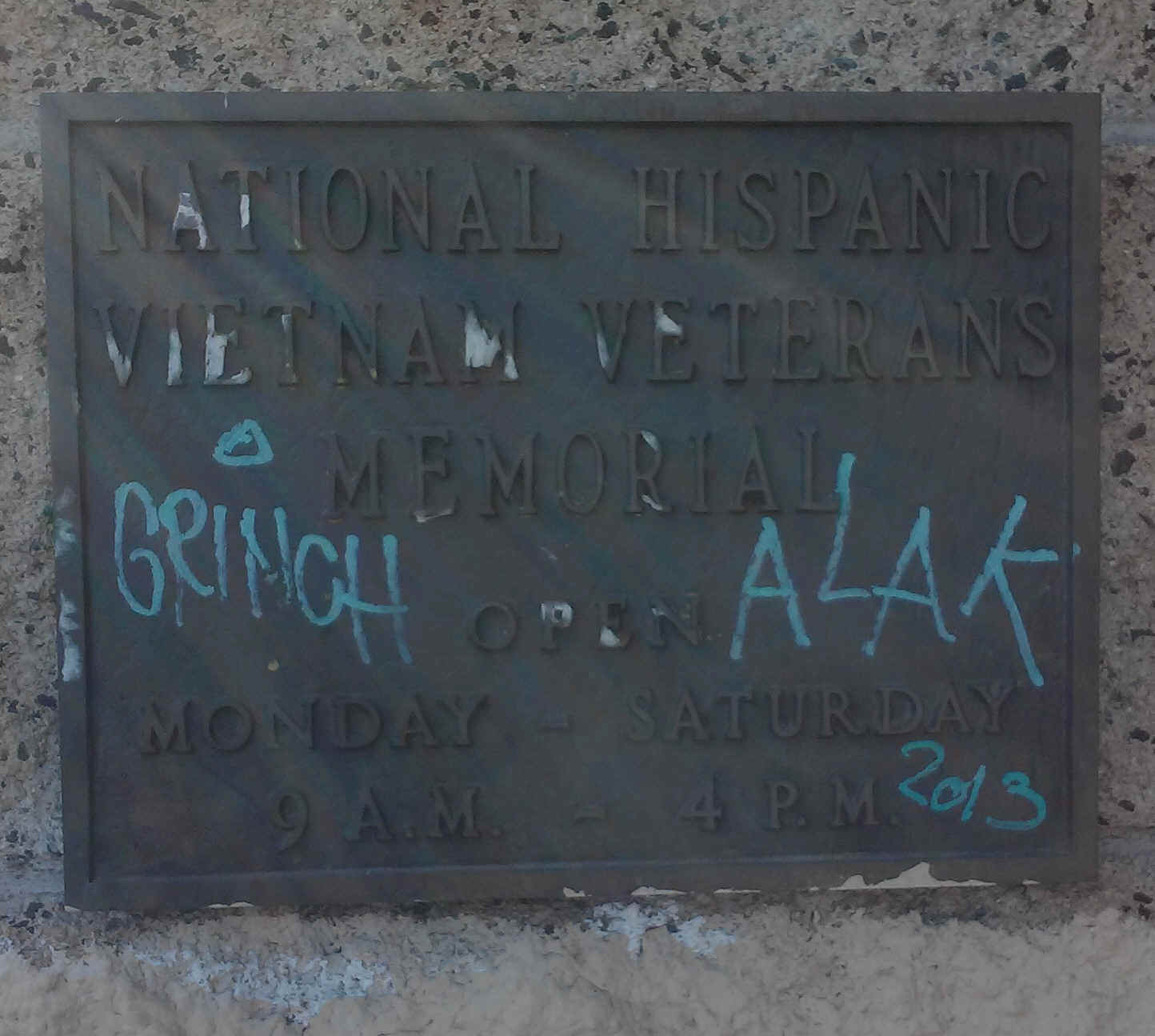
National Hispanic Vietnam Veterans Memorial
Badly in Need of Repair
| Located behind the Payless Shoe Store that's home to the East
Los Streets caper's 1984 mural "Corrido de Boyle Heights" (Soto just south of Cesar E Chavez Ave) a forgotten Vietnam Veteran memorial runs through an alley. I followed the lead of El Random, the L.A. Eastside blogger and took a few moments over the 4th of July weekend to take a look for myself at what is a lost grassroots neighborhood National Hispanic Vietnam Veterans Memorial. According to the plaque, it was to be open Monday through Saturday from 9am to 4pm. The gate has been locked for as far as anyone can remember. Just as tragic is the alley that was converted to a small pocket park and also sits neglected. And if you know us Downtowners; we do not take our pocket parks lightly. Numerous benches sit among dumpsters. Trash lays on the tiled grounds. Taggers have marked the walls and a historic street lamp positioned toward the back half of the alley. A metal frame holds a fading banner that reads "Paseo De Los Flores" is beginning to rust, and concrete blocks are stripped of other plaques that may have been installed. It was the second to last stop after a day of shooting photos around Highland Park, Lincoln Heights, the Pico-Union Area and Lincoln Park. The next stop was the Boyle Heights Concert and Fireworks show where I had a chance to speak with Councilmember Jose Huizar. Knowing District 14 has been helping Boyle Heights Vets secure a memorial site at El Pueblo/Olvera Street, Huizar gave me an update that a substantial donation from the CD14s general fund was made to move forward the proposed memorial. After telling him about this neglected memorial, and showing him one of the photos taken a few moments before arriving at Hollenbeck Park, he and a staffer assured me they would look into the alley this week. El Random admits to having walked past the alley without a second glance but refused to take a "blind eye" any longer. Hopefully, the businesses will clean up the trash so the site can be surveyed by those who want to care, and decide if there is a next step to be taken. Easily, it can be reconfigured to serve businesses in the back half as an alley and the front half can once again be used as public space honoring some local vets. A pedestal stripped of a plaque sits in the alley also used as storage by the business fronting Cesar E Chavez Ave in Boyle Heights. The fountain toward the front of the space is highlighted by ceramic tile, used throughout the neglected "Hispanic" veterans memorial. For more photos, please go to: http://viewfromaloft.typepad.com/viewfromaloft/2008/07/memorial-for-a-memorial.html Photos below sent by Alfredo Lugo alfredo.lugo@verizon.net |
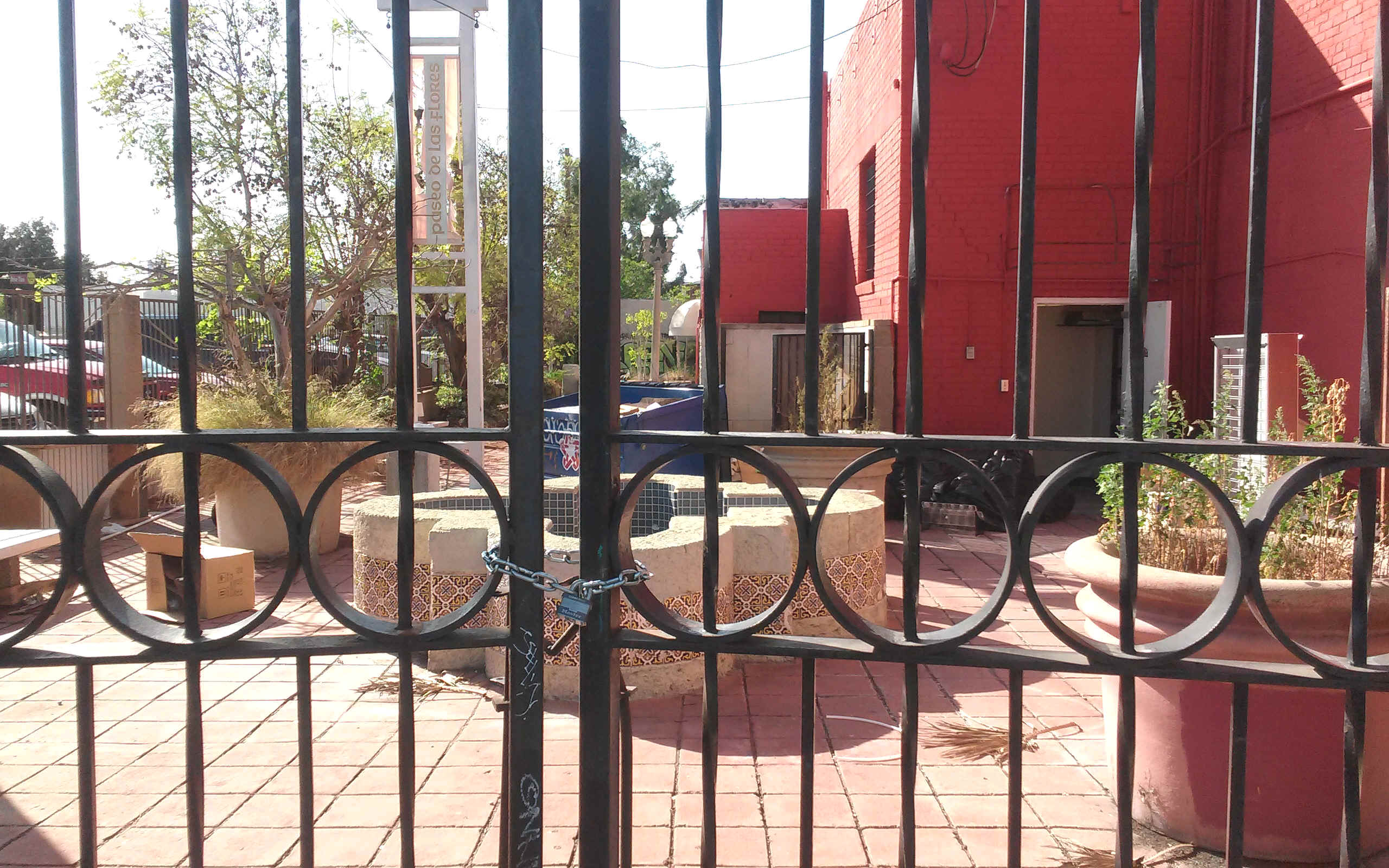
|
|
|
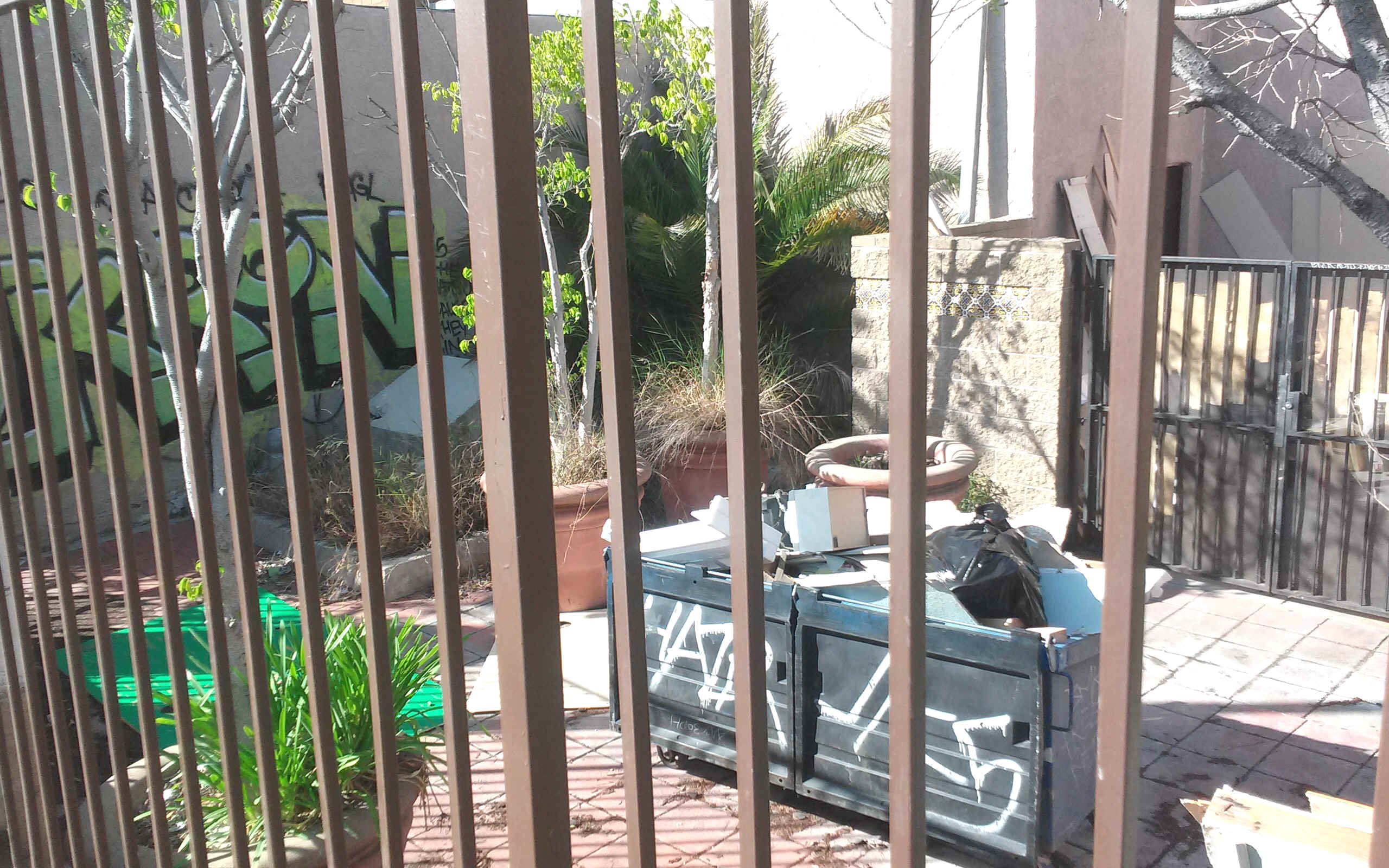 |
|
|
Virtual Wall |
|
This is truly amazing! First click on a state. When it opens, scroll down to the city where you went to high school and look at the names. Click on the name and it will give details of the person's death, a picture or at least their bio and medals, really sobering. This really is an amazing web site. Someone spent a lot of time and effort to create it. Hope that everyone who receives this appreciates what those who served in Vietnam sacrificed for our country. Pass the link on to others, as many knew wonderful people whose names are listed. |
11th Annual Young Artists Exhibit 2015, Long Beach, CA Exhibit ran May 1st – May 30th All young artists were invited to participate in this motivational exhibit. |
|
|
|
|
|
First off we would like to congratulate the Bassett Unified School District (Los Angeles County) on becoming the latest school district making Ethnic Studies a Graduation requirement. We give special thanks to BUSD Board President Paul Solano for his leadership on this issue. NATIONAL ATTENTION: I am so humbled to be a finalist for the NEA Social Justice Activist Award for the work we're doing organizing the Ethnic Studies Now Coalition and making Ethnic Studies a Graduation requirement in Los Angeles and beyond. This is exciting because it will allow us to bring national attention to the growing Ethnic Studies Movement. Please take a minute to vote for JOSE LARA at the link below and let’s continue the struggle for Ethnic Studies and Social Justice Education! http://www.nea.org/home/60579.htm http://www.aacllc.agency/r?u=http://www.nea.org/home/60579.htm&e=5b51120478616c8e7e13641c 2700a0af&utm_source=laprogressives&utm_medium=email&utm_campaign=5_6_15_esnc&n=4 MORE UPDATES: Santa Ana USD also took the first step and will begin to offer Ethnic Studies in their High Schools next year. Students, Teachers and community members in Sacramento have been organizing and have gone to the school board to speak about the importance of Ethnic Studies (see picture below). In San Diego, a coalition has formed to push for Ethnic Studies. Teachers in West Covina and Azusa have also begun meeting and have a petition drive. Lastly, the El Monte Union High School District will be considering a resolution making an Ethnic Studies graduation requirement at their next meeting. Check out this video from Sacramento from School Board Open Hearings: http://www.ethnicstudiesnow.com/ethnic_studies_now_sacramento_school_board_open_hearings San Diego has just kicked off their online petition here, and you can sign here: http://www.ethnicstudiesnow.com/sdusd Save the Date Los Angeles! On June 9th, 2015 the Los Angeles Unified School District is expected to review a report by the LAUSD Ethnic Studies Implementation Task Force. In this report will be a plan for implementation, along with timeline and funding. We will be asking everyone to come out to support Ethnic Studies and ensure the LAUSD fully funds and continues to support implementation. This will ONLY happen if we stay vigilant and continue to push for implementation NOW! Warmly, José Lara Coordinating Committee Member, Ethnic Studies Now Coalition http://www.ethnicstudiesnow.com info@ethnicstudiesnow.com Tel. (213) 267-9031 Fax. (323) 844-0110 |
|
|
|
|
Enhancing awareness
of the California November 13, 1849 election, by Galal Kernahan Los Californianos Alert: Movie Screening June 14 San Gabriel, CA Lucrecia Ygnacio married to Florentino Garcia, Santa Barbara, California The Juanita Salazar Lowe Gallery History of Neighborhood House in Logan Heights: The Korean War Years The last boundary monument along the San Diego-Tijuana line La Peña 40th Anniversary |
| Enhancing
awareness of the California November 13, 1849 election, by Galal Kernahan The Original Bilingual Constitution was adopted with popular approval and election of its first Officers. A month and a half later the first constitutional convention was held. |
According to the California State Association of Counties, On January 4, 1850, a committee of California's first constitutional convention, chaired by General Mariana Vallejo, recommended the creation of eighteen counties. Before deliberations concluded it turned out to be the following twenty-seven: Butte, Calaveras, Colusa, Contra Costa, El Dorado, Los Angeles, Marin, Mariposa, Mendocino, Monterey, Napa, Sacramento, San Diego, San Francisco, San Joaquin, San Luis Obispo, Santa Barbara, Santa Clara, Santa Cruz, Shasta, Solano, Sonoma, Sutter, Trinity, Tuolumne, Yolo and Yuba. It was from these twenty-seven that thirty more
counties were hived off to provide the present fifty-seven. (See
enclosed sheet.) The original twenty-seven played a key role in the
local self-governance "Americanization" of California. |
|
Somos Primos is collaborating with several groups urging that November 13 be designated a voluntary State Commemoration Day. It would be the recognition of the historic fact that early Spanish Californianos and newly arriving non-Spanish speaking immigrants joined together in giving structure and shape to California. |
|
If you are a teacher, a California descendent,
a California County employee, a historian, You may send your letters to:
|
|
|
|
|
COUNTIES FORMED FROM THE ORIGINAL 27 COUNTIES |
| BUTTE | ALAMEDA Contra Costa & Santa Clara 1853 | |
| CALAVERAS | ALPINE Amador**, El Dorado, Calaveras, Mono and Tuolumne 1864 | |
| COLUSA | DELNORTE Klamath 1857 | |
| CONTRA COSTA | FRESNO Mariposa, Merced,TuIare 1856 | |
| EL DORADO | GLENN Colusa 1891 | |
| LOS ANGELES | HUMBOLDT Trinity 1853 | |
| MARIN | IMPERIAL San Diego 1907 | |
| MARIPOSA | INYO Mono,Tulare 1866 | |
| MENDOCINO | KERN Los Angeles, Tulare 1866 | |
| MONTEREY | KINGS Tulare 1893 | |
| NAPA | LAKE Napa 1861 | |
| SACRAMENTO | LASSEN Plumas, Shasta & Lake County, Nevada 1864 | |
| SAN DIEGO | MADERA Mariposa 1893 | |
| SAN FRANCISCO | MERCED Mariposa 1855 | |
| SAN JOAQUIN | MODOC Siskiyou 1874 | |
| SAN LUIS OBISPO | MONO Calaveras, Fresno, Mariposa 1861 | |
| SANTA BARBARA | NEVADA Yuba 1851 | |
| SANTA CLARA | ORANGE Los Angeles, San Diego 1889 | |
| SANTA CRUZ | PLACER Sutter, Yuba 1851 | |
| SHASTA | PLUMAS Butte 1854 | |
| SOLANO | RIVERSIDE San Bernardino & San Diego 1893 | |
| SONOMA | SAN BENITO Monterey 1874 | |
| SUTTER | SAN BERNARDINO Los Angeles 1853 | |
| TRINITY | SANMATEO San Francisco, Santa Cruz 1856 | |
| TUOLUMNE | VENTURA Santa Barbara 1872 | |
| YOLO | Original Defunct Counties: KLAMATH/PAUTAH/BUENA VISTA Original and COSO | |
| YUBA |
| **
Parts of CALAVERAS county's territory were reassigned to Amador
County in
1854 Sent by Galal Kernahan |
|
|
FREE RAMONA Free tickets are available for a June 14 screening of the recovered and recently restored 1928 Ramona staring Dolores del Rio. The movie will be shown at the San Gabriel Mission Playhouse on Sunday June 14, at 2:00 P.M. This event is the result of a unique historical partnership between the Ramona Parlor of the Native Sons of the Golden West, the San Gabriel Mission Playhouse, the Los Angeles Theatre Organ Society and the Rancho Camulos Museum and National Historic Landmark. What IS the connection among these groups? It’s all about Ramona. Helen Hunt Jackson’s epic California novel, “Ramona” was published in 1884. It quickly captured the nation’s interest in the golden west. The Ramona Parlor of the Native Sons of the Golden West, a benevolent preservationist organization was chartered in 1887. San Gabriel, its current location, is known as the birthplace of Ramona. The first president of the Ramona Parlor was Reginaldo del Valle. The del Valle’s were the owners or Rancho Camulos which became famous as the “Home of Ramona”. Thus they share the Ramona legacy. There were four known American movie versions of Ramona. The first was DW Griffith’s 1910 version starring Mary Pickford which was filmed on location at Rancho Camulos and it is shown regularly to visitors. The second was Donald Crisp’s 1915 version starring Adda Gleason which was filmed at Rancho Camulos and other areas in Ventura County. It is considered a lost film as only portions of one reel exist in the Library of Congress. The third was Edwin Carew’s 1928 version starring Dolores Del Rio. It was filmed in Utah and for many years was considered to be lost. The fourth was Henry King’s 1936 version starring Loretta Young. It was filmed in Monterey California and is readily available. Director Edwin Carew's thought to be lost 80 minute silent film classic, which will be shown on June 14, was discovered in the Czech Republic having found its way there by way of Nazi Germany and the Soviet Republic. It was restored by the Library of Congress and re premiered in 2014 at the Billy Wilder Theatre of the UCLA Hammer Museum. A panel discussion including experts Dydia DeLyser and Phil Brigandi who were involved in finding and restoring the film will follow the screening. The showing of the film at the historic 1927 San Gabriel Mission Playhouse, with accompaniment by renowned organist, Robert Salisbury on the playhouse's 1924 Wurlitzer pipe organ, will make this a memorable event. Although admission is free, tickets must be obtained in advance at www.missionplayhouse.org . In addition, after the panel discussion, at 4:00, there will be a $25 VIP reception at the Native Sons of the Golden West Ramona Museum to benefit the Rancho Camulos Museum and National Historic Landmark. The Rancho Camulos Museum is a 501(c) 3 nonprofit dedicated to the preservation of the Rancho Camulos National Historic Landmark (www.ranchocamulos.org) and educating the public about the historical impact of the 1884 novel “Ramona”. Attendees will have an opportunity to interact with the panelists and other VIPs, view artifacts, and enjoy light refreshments. Contact cachristopher1@att.net by June 8 for reservations. Source: Andrea Brooks alcbrooks@yahoo.com Sent by Lorraine Frain lorrilocks@gmail.com |
|
On Saturday, June 27, 2015
|
|
|
Dear Folks:
Lucrecia Ygnacio, was married to Uncle Florentino Garcia, Santa Barbara, California. She was born (circa) 1877.
Lucrecia Ygnacio Garcia was an informant to Dr. John P.
Harrington, while she was married to uncle Florentino. This is an
untold story about my family history--I need to get it out in the
open--I am so proud of these people.
Uncle Florentino was married to Lucrecia Ygnacio, 1909. In 1914 Paul A. Garcia was born, mother listed as Ygnacio. The 1930 U.S.Census lists Florentino Garcia, age 75, Josefa S. Garcia age 49, son Pablo Garcia age 17 years.
|
|
|
Sharing my only known Chumash cousin, Paul Garcia
(1914-1937), WWII Army, Santa Barbara, courtesy of Dr. John Johnson,
Curator of Anthropology, Santa |
||
|
|
More photos shown in link below. Documentary by Dr. John Johnson and Ernestine
De Soto tell parts of their story. Sincerely,
Lorri Ruiz Frain |
|
|
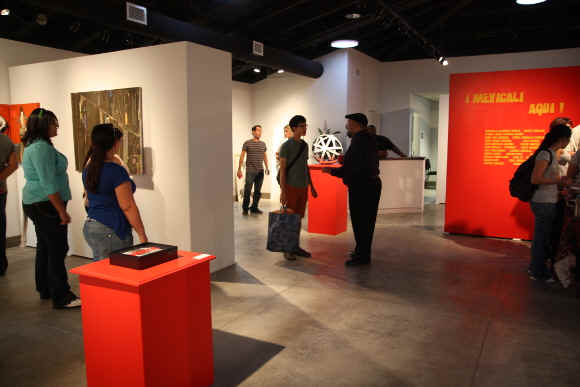 Mexicali Aqui Opening Reception. | Photo: Carol Hegarty In the Spring of 2011, Imperial Valley College (IVC) celebrated the grand opening of the Juanita Salazar Lowe Gallery. "Before then," Carol Hegarty, Humanities professor and director of the Gallery recollects "We had shows in the studio. We'd clean out and put things up in there, we did a show in the library. It was really hard not [having] a gallery." Hegarty arrived at IVC in 2005 to teach Art, and administrate the then "Train Depot" campus gallery: "It was a great community space, there was a porch out front, and people would come to shows and hang out on the porch." The Depot Gallery began as just that: a train depot that was built at the beginning of the 20th century, and serviced the nearby town of Holtville for many years before being moved to Imperial Valley College in the early 70s. In 1971, the building was renovated and served as the campus gallery until 2005 when an electrical fire blazed through the nearly hundred year old building, causing irreparable damage. While the building was insured, it was not insured for replacement, and so the arts community hosted shows in classrooms and libraries, until various community initiatives amassed more than enough funds to build a new gallery. The then president of IVC advocated for the reallocation of funds for the new gallery, a local plaster company donated 13,000 worth of dry wall, and the County of Imperial donated 50,000 to the project marked by the Centennial Pavilion that sits outside the gallery. In the end, the amount of money raised for the new building was around a million dollars.
|
History of Neighborhood House in Logan Heights: Korean War Years May 9, 2015 By Maria E. Garcia Grassroots and Progressive Views & Community News Maria Garcia is a retired school principal and has been an activist in the Chicano movement since 1968. |
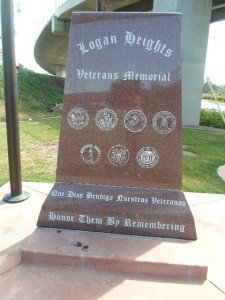 Logan Heights Veterans
Memorial Veterans of World War II returned home deeply changed by their experience. They found that Logan Heights and San Diego had also been changed by the war. The effort to find a new normalcy would be interrupted by the Korean War. Logan Heights Veterans
Memorial Veterans of World War II returned home deeply changed by their experience. They found that Logan Heights and San Diego had also been changed by the war. The effort to find a new normalcy would be interrupted by the Korean War.This is part I of the Korean War and the 1950s, viewed through the experiences of Johnny Leyva who grew up in Logan Heights. To understand the 1950s and the activities at Neighborhood House, you have to become familiar with the role of Latinos in the Korean War, as well as how the nation as a whole reacted to this “police action.” In addition to those two factors, you must consider the transformation taking place in the City of San Diego and across the United States. World War II had brought a unity to the community. Everyone saw it as an “us against them” war. 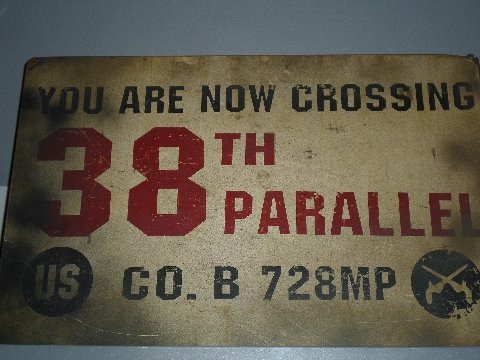 During WWII the women in the community around Neighborhood House not only took the role as bread winner and worked in non-traditional jobs, such as the aircraft industry, but aided in the war effort. During WWII many of the women from Neighborhood House worked as volunteers to wrap bandages to contribute to the war effort. By the time of the Korean War many of those same women were working outside the home. Between these two wars, Latino soldiers returned having proven themselves as loyal Americans. During WWII the women in the community around Neighborhood House not only took the role as bread winner and worked in non-traditional jobs, such as the aircraft industry, but aided in the war effort. During WWII many of the women from Neighborhood House worked as volunteers to wrap bandages to contribute to the war effort. By the time of the Korean War many of those same women were working outside the home. Between these two wars, Latino soldiers returned having proven themselves as loyal Americans. |
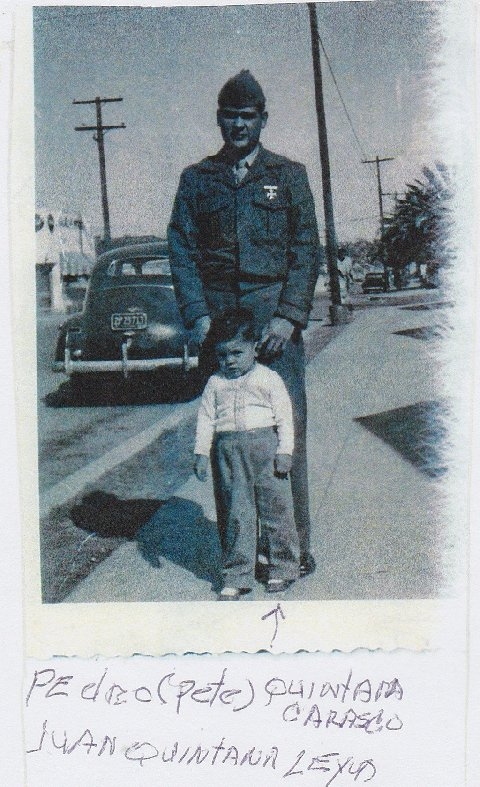 |
They returned as war heroes, recipients of Purple Hearts and Congressional Medals of Honor. They had the distinct honor of being awarded more Purple Hearts than any other ethnic group. Like the rest of the United States, more women were employed and continued to work outside the home. In the five years between the two wars many former GI’s went on to college with the help of the GI Bill.
There was an evolution taking place socially, in Logan Heights as well as across the whole city of San Diego. Part of that evolution stemmed from the anger many returning veterans felt, who had seen themselves as Mexican Americans, but returned to cities across this country where they were simply viewed as Mexicans. This opened the door for activism on the part of many of those returning in the service to THEIR country. |
| positive contribution made by Mexican
Americans. Negative press articles, stereotypical stories and even
celebrations failed to focus on the Mexican American. In 1948 the Cabrillo Highway, also known as Highway 395, opened. It connected downtown and Mission Valley. Today this Highway is known as Highway 163. The San Diego Zoo had reached “world famous” status. Mexico had developed its own port in Ensenada and did not have to depend on the Port of San Diego to send goods to foreign ports. Change had come to San Diego in many different forms. Richard F. Pourade, editor emeritus of the San Diego Union, in his book “City of Dreams” described San Diego as a “critical unemployment area.” This too would change within a few months of the Korean War. Then came the Korean War. This war was labeled a “police action.” In this article I will refer to the “Korean War” for two reasons. One, I could not face the families that lost their loved ones by reducing what had occurred to a police action. Two, out of respect for all the soldiers that served in that war and especially for those that did not return, I feel I must refer to it as a “war.” The Korean War lasted between June 25, 1950 and July 1953. In June of 1950, North Korea, with the support of the Soviet Union and China, invaded South Korea. The United States provided 88 % of the United Nations military personnel. The UN troops had better helmets and enough food supplies for their men. Anyone over the age of sixty remembers the “air raids’ when school students practiced getting under their desk in order to “be protected” from an attack from the Soviet Union. The “cold war,” a struggle between capitalism and communism, had an effect on families throughout San Diego. Then came the Korean War - 38th Parallel To San Diego and the families around the Neighborhood House, war meant employment. The aircraft industry was hiring both men and women to build the airplanes needed for the war. Employment at Convair or Rohr was viewed as a great job. These jobs were well paying and seen as a progressive step for most families. Coach Pinkerton, through his contacts, was very willing to refer one of “his boys” for employment in the aircraft industry. North Island, across the bay, was hiring civilian employees, which was another coveted source of employment and a simple ferry ride across the bay. Billboards urged tourist to visit San Diego, opening employment for the locals as housekeepers, cooks and gardeners. Both World War II and the Korean War, along with the military, added to the conservative climate found in San Diego. This factor still affects San Diego even today. Johnny Leyva and brother PeteOnce again the men from Logan Heights were called upon to fight for liberty in a foreign land. When I spoke to many of those that were in their teens and not of age to volunteer or to be drafted for the Korean War, there was not the same reaction as when I spoke to the youth of World War II. Upon further study it was clear that it was a normal reaction that was found across the United States. Unlike WWII, there was not that constant fear that San Diego would be invaded by Korea. There were no the blackouts or food rationing. For the youth of Logan Heights and at Neighborhood House it, was a much more carefree atmosphere than had been witnessed during previous wars. Dances held at Neighborhood House or the War Memorial were the talk of the youth from Neighborhood House. Johnny Leyva is a Korean War Veteran born in 1933. He grew up across the street from the Neighborhood House in one of the little houses owned by Mike Amador, a well -known Logan Heights businessman and community activist. At the age of nineteen he joined the Marine Corps. He believed as an immigrant that he owed this country something. He says part of the reason was that “it is in his blood.” His grandparents had been involved in the Mexican revolution and fighting in a civil war seemed liked the right thing to do. Armistice signed 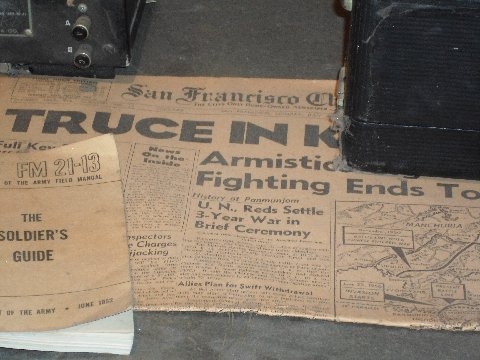 Within a few weeks of his arrival in Korea, the war had come to an end. The armistice had been signed, but the shooting had not stopped. Johnny was sent to an outpost to tear down the bunkers. Shortly thereafter he was given the assignment of driving an ambulance. He says it was not unusual for him to return to the post with bullet holes in the ambulance. Within a few weeks of his arrival in Korea, the war had come to an end. The armistice had been signed, but the shooting had not stopped. Johnny was sent to an outpost to tear down the bunkers. Shortly thereafter he was given the assignment of driving an ambulance. He says it was not unusual for him to return to the post with bullet holes in the ambulance.As a teenager and prior to his enlistment, Johnny held many jobs around San Diego. Like many of the other boys, he delivered newspapers. He did not have enough money to purchase the newspapers to sell so he relied upon a friend lent him the money. Johnny always felt that he had to help his mom, since at that time it was “just the two of us. “ He took a job delivering telegrams. One day he had been given the responsibility of delivering them in Coronado. He was riding his bike around Coronado when several men asked him what he was doing knocking on doors in that community. He explained he was delivering telegrams. Their first response to him was ‘bull shit” and then they proceeded to beat him up. They took his bike, scattered the telegrams on the ground, and took the little money he had. When he told the Coronado Police what had happened, they put him in the police car and drove him to the Coronado City limits sign on the strand and dropped him off. There was no offer of support, or an offer to give him money to return on the ferry. Johnny walked from Imperial Beach to his house on Beardsley in Logan Heights. His employment at the San Diego Zoo came about with the help of a friend, Joe Diaz. Mr. Diaz lived across the street from the Metro Theater and was employed at the Zoo. According to Johnny, Joe’s probation officer has gotten him the job at the zoo. In turn, Joe put in a good word for Johnny. When he was asked why he wanted a job, his reply was very simple; “to put food on the table and to get through high school.” One of duties at the zoo was to care for the bird population. Johnny Leyva’s story continues next week with more more of his memories about his life in San Diego after the Korean War. The complete History of Neighborhood House in Logan Heights series is available here. http://sandiegofreepress.org/author/maria-garcia/
Sent by Dorinda Moreno pueblosenmovimientonorte@gmail.com |
The last boundary monument along the San Diego-Tijuana line sits atop a steep craggy mountain. No fence or wall exists. The monument, like most others, is made of iron. The Mexican IBWC is responsible for the upkeep of this monument, however, it looks as though workers are either unable or unwilling to make the trek. The marker is full of graffiti and the actual number “251” has been pried off. Border Patrol agents were kind enough to take me to this spot. The only way to get there is through unpaved roads owned by the Bureau of Land Management (BLM). The 4.6 miles consists of narrow dirt pathways and although I wish more history lovers would take the boundary monument tours, #251 made me change my mind. Point blank: it’s just too dangerous to come here alone as a tourist. Thanks to Border Patrol agents, Gerardo Gutierrez and Brandon Cazares, I can write about this little gem of a boundary monument. Along the way, they also offered me a glimpse into their work. A Few Facts About Border Patrol Stations A total of eight Border Patrol Stations exist in San Diego County. Two stations are inland: Murietta and San Clemente. The other six reside back-to-back along the U.S.-Mexico boundary line. The Imperial Beach station patrols the line from the Pacific Ocean to the San Ysidro Port of Entry. The Chula Vista station takes over from the SYPOE and runs for 60 miles, ending deep within the Otay Mountains. After Chula Vista, the stations along the border are: Brown Field, El Cajon, Campo, and Boulevard, California. For the entire San Diego Sector, there are about 2,500 agents. Border Patrol training is a rigorous 19-week course. Once completed, you are considered a border patrol agent. Agents, similar to the military, rise through the ranks, becoming watch commanders, then first line supervisors. Each station has their own patrol agent in charge. The San Diego Sector is overseen by a Chief Patrol Agent who is currently Richard A. Barlow. Gutierrez explained that every day the San Diego Sector makes an average of 80-90 apprehensions. The location of apprehensions change, but “it’s always busy,” he says. Here in the San Diego Sector, last year their apprehensions for the full fiscal year of 2014 — from October to September — was 29, 911 people. Cazares explains that their peak year was back in 1986 when Border Patrol apprehended about 620,000 people in the San Diego Sector. Out of the 20 sectors, San Diego is one of the smallest sectors, but in that year they had the highest number of apprehensions. |
| BUREAU OF LAND MANAGEMENT |
| To get to Boundary Monument #251, the border patrol agents took me in a 4-wheel-drive SUV and drove into a no-access dirt road near Donovan Prison. The road was extremely bumpy and very steep. The agents needed to communicate often with other patrol agents to make sure no other vehicle planned to drive along the same path, the road too small to accommodate more than one SUV at a time. The BLM is responsible for maintaining this land and CBP has a working relationship with them for use of the property. BLM agents are also law enforcement. They are armed and can write tickets to those who may be off-roading in these parts or wanting to use the mountains as a shooting range. The White Cross  When we reached our destination, a White Cross overlooked a vast view of Tijuana below. Nobody knows when or how the White Cross got there. Just below this cross, boundary monument #251 edged off the mountain. The monument is in terrible condition, with graffiti on all sides. When we reached our destination, a White Cross overlooked a vast view of Tijuana below. Nobody knows when or how the White Cross got there. Just below this cross, boundary monument #251 edged off the mountain. The monument is in terrible condition, with graffiti on all sides.Glaringly, there is no fence or wall here. Gutierrez explains that of the 60 miles patrolled by the Chula Vista Sector, only 46 miles have a primary fence going along the boundary line. That leaves approximately 14 miles of no fencing. The terrain provides a natural barrier where border patrol agents can respond to crossings quickly. Fencing is important within a city where agents don’t have time to respond. An undocumented individual can jump over a fence within minutes and blend into the general population. Out here, however, it’s not that easy. The Barlow-Blanco Commission: A Grueling History  This “Wild West” territory is an important location in history. In particular, it visually shows the harrowing work once done by the Barlow-Blanco Commission between 1892 and 1894. Although a boundary commission surveyed the line initially after the Treaty of Guadalupe Hidalgo in 1848, a new Boundary Commission was appointed in 1889 to resurvey the line and mark it with 258 monuments of iron or stone. This “Wild West” territory is an important location in history. In particular, it visually shows the harrowing work once done by the Barlow-Blanco Commission between 1892 and 1894. Although a boundary commission surveyed the line initially after the Treaty of Guadalupe Hidalgo in 1848, a new Boundary Commission was appointed in 1889 to resurvey the line and mark it with 258 monuments of iron or stone.The iron monuments were all made in El Paso and shipped westward along the Southern Pacific Railway. Most of the monuments were cast whole and each monument weighed no less than 500 pounds. The Commission placed them at distances apart of no greater than 8,000 meters, or about five miles. The monuments were set in places which seemed impossible. It didn’t matter if the precise boundary point fell on the side of a bristling cliff or upon a dizzy mountain peak, the monument was placed exactly there. Still today, like #251, the iron monuments are six feet high, two feet square at base and twelve inches square at top of shaft, with a pyramidal top. They are bolted to concrete foundations or to solid rock. The San Francisco Chronicle reported on November 25, 1894: “The American Commissioners met again at El Paso about the 1st of February, 1892, engaged employees to the number of about sixty; organized the various field parties; procured necessary animals, wagons, camp equipment and supplies, and on February 12th went into camp near the site of monument 1 on the Rio Grande.” The article went on to explain that often the 800-pound monuments couldn’t be carried by the men, so they used pack mules to carry them. Water for the employees and the animals had to be hauled by rail or by wagon from Yuma, nearly 100 miles. Temperatures often reached 126 degrees. As a consequence, the men got into the field as early as possible in the morning. But from 11a.m. until 3p.m. no outside work was possible, the heat causing the atmosphere to visibly waver or flicker. This rendered the instruments useless for a time. An African-American History Another San Francisco Chronicle also reported the Commission’s work, although in more shocking terms. It wasn’t just the terrain that was harsh. Among other things, the article shows that African-Americans contributed to erecting these monuments, but explains it in way that today we would consider shocking testimony. The journalist reported on October 13, 1893: The writer accompanied the monument party from Nogales to near Dog Springs, in New Mexico, which constitutes the parallel of 31 deg. 20 min. This party, under the direct command of Colonel Barlow, consisted of an assistant engineer and two rod men in the surveying department. Then, under the orders of Major Logan, the quartermaster of the expedition, came an array of teamsters, laborers and cooks. A photographer and a stonemason completed the monument party proper. The medical department was represented by Captain Mearns, U.S.A. a hospital steward and two colored privates of the hospital corps. The military escort, under the command of a second lieutenant, was made up of a detachment of colored infantry of the Twenty-fourth and some ten cavalrymen of the Second. The entire party numbered some sixty people. The Mexican party, having nothing to do with the actual construction and reaction of the monuments, was necessarily much smaller. It was composed of Commissioner V. Gama, Engineer Manuel Rancalari, a few mozzos and some Mexican soldiers of the Twenty-fourth Battalion, the latter was wild-looking villains as ever cut a throat. Every one of the undersized, dark-skinned fellows was serving out in the army a long sentence for some deed of violence and blood. It was anticipated at the time of our departure from Nogales, on the 25th of July that some of these soldiers would desert as soon as they found it convenient and safe, but it was for the United States to take the initiative in this respect, as one day out of town one of our negro privates deserted with all his belongings, which, as he had sold everything portable just previously, consisted of the clothes he wore and his rifle. But to counter-blanace this, when we arrived at Ochonville, on the San Pedro river, the Mexican contingent left en masse, including the non-commissioned officer, and was never heard of again, except one man who returned after a week in the bush, and was made a corporal for his heroic conduct. The article went on to talk of drinking, fighting and a cook of Chinese descent who was beaten up. Apaches Were Here Too The San Diego Union reported on September 21, 1894 that the Commission also came across Native Americans during their work. The newspaper reported: “The Apache Kid and his band hovered about us a little in the San Luis and Guadaloupe mountains, but did not disturb us. They probably concluded we were too many to attach. The Kid, anyway, is a sneak thief, and only attacks travelers or isolated ranchers.” Colonel Barlow went on to explain that during his work on the boundary monuments, he saw many antelope, deer, bear and mountain sheep. A trained naturalist also went along with the commission and collected between 7,000 and 8,000 speciments of plants, animals, birds, fish and insects. Migrants Weather The Terrain Boundary Monument 251All these images of the Barlow-Blanco Commission come to mind when standing atop the Otay Mountains at Boundary Monument #251. It seems impossible to walk through this terrain. Its rugged and rife for falling and twisting an ankle or breaking a leg. The area looks as though nobody can possibly make it through these parts. And then — the border patrol agents spot a man sitting in the bushes right next to the White Cross. They approach and he immediately puts up his hands. The agents ask if he is alright and then ask if he has papers to be in America. After a short time, another border patrol car arrives and the man is taken into the car, apprehended. Agent Cazares mentions as we walk toward the monument, “I’m a little worried about that guy.” Agent Gutierrez explains that border patrol work can often be very dangerous. The roads are rocky and narrow. Agents are required to patrol this area when it gets foggy and during the pitch black of night. People that come through these parts can carry firearms, but rocks can also be used against them as weapons. Also, approximately 3 out of every 10 people apprehended have criminal histories. What will happen to this man specifically? He will go into the station and be fingerprinted. Depending on his case, he might get a voluntary return to Mexico or all the way up to criminal prosecution, depending on what his criminal and immigration history is. Nowadays, the technology is pretty efficient. Border Patrol agents have have a database and can quickly do a background check. Many times also border patrol agents encounter individuals who have been injured or are in distress. CBP will often be the first to render aide, especially in these parts where falling and hurting oneself is common. Cazares explains: “It is also very common, more so in mountainous areas because people dehydrate, it’s very hot, as you saw walking on somewhat of an established road, it would be very easy to twist an ankle, fall and so, just in general our culture here in the United States, like for me personally and for every agent I know, when you do see somebody injured, the thought of enforcement is completely out of your mind. It’s just a humanitarian thing, “I need to help this person.” It’s irrelevant whether he’s here unlawfully or whether he’s a citizen hiking around. It’s the fact that you need to render aide or try to do your due diligence and get this person the help that they need.” A Few Interesting Facts About Fences and Walls “Our main mission is to protect our country,” Agent Gutierrez explains. The immigration issue is actually secondary to protecting the U.S. from criminals and terrorists. What many people don’t know, explains Gutierrez, is that the military landing mat was put up not to keep pedestrians from climbing up, but to keep vehicles from driving through it. Prior to 1994, cars would drive right through the chain link fence, often carrying drugs or people. If they saw border patrol, they would then just drive right back through the fence. As a consequence, border patrol had to be involved in a lot of pursuits. “It doesn’t stop them completely. They can still ramp over it or cut the panels and drive through them, but a lot less than what it used to be.” The secondary fence, however, is pedestrian targeted. While the primary military landing mat is 8-10 feet high, the secondary fence is made of meshed metal and is approximately 16-18 feet high. It is harder to scale, although people do put ladders up. What the secondary fence does is give border patrol agents time to respond. Regardless of fences or natural terrain, border patrol agents are kept busy. The man I saw at the boundary monument is not uncommon. Agent Cazares says it happens every single day. Whether there’s fence or no fence, even where there are two fences with stadium style lighting or steep mountains, crossing the border happens no matter what. http://southbaycompass.com/boundary-monument-251/ Sent by Dorinda Moreno |
|
NORTHERN CALIFORNIA |
Events at La Peña June 1 - 30 View this email in your browser |
|
http://us2.campaign-archive1.com/?u=6c699642208adc920b36aa788&id=80e677dcfb&e=65d44b3874 |
|
|
|
|
When I was a Kid, "Family and the Swimming Pool" Part 1 of 3, by Louis F. Serna " A Documentary Chronology" of the three Anzas by Donald T. Garate In remembering May 5, 1862 Dr. Felipe de Ortego y Gasca, WWar Veteran Receives Quilt of Valor Yearning to be Recognized by Kyle Fields Mexicali Rose: Cultivating Art Across the Border by Amy Sanchez The Chihuahuense Connection by Jaime Pacheco Eye on the Locals by Luciana Corrales |
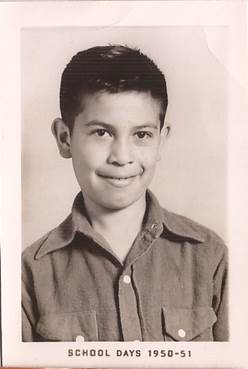 Louis “Frankie” Serna 1950-51 |
When I was a Kid by
Louis
F. Serna (505)
291-0261
|
||||
|
"When
I was a Kid" is a collection of some of the things I did when I
was a kid growing up in Springer, NM in the 40's and 50's. I was born on
January 25, 1941 and I think I was just a "regular" kid, who
did the things that boys did back then... things that were sure to
"put your eye out".. or, "cut a finger off..." or,
"leave you paralyzed...!", and all sorts of other tragedies
that were sure to get us killed.. or worse...!
Yet, to my knowledge, all the kids I grew up with, still have all
their fingers, toes, eyes, and other body parts in good condition, as I
do...! MY PARENTS AND
SPRINGER, My
dad, Vicente, was a carpenter and did work for business people around
town and for people who needed carpentry work done on their homes. He
also built homes and was pretty much in demand for his skills and good
work. Mom, Vangie, was a stay -at - home Mom and always seemed to have
kids in school and kids at home.. Springer was a small town and had no
real "industry". The closest thing to it were the many ranches
around Springer, which seemed to serve as the "hub" for
whatever anybody needed, such as school, a doctor, grocery stores, a
bank, etc.
SPRINGER - MY For
those who have never been to northern The
town of Springer takes its name after Frank Springer, a prominent lawyer
in the late 1800's, who handled the legalities of the sale of the
Maxwell Land Grant, which in the 1800's was the reason for Springer,
Maxwell, Dawson and other local communities coming into being. The Grant
owner, Lucien B. Maxwell, for whom the Grant is named, lived a baronial
life back then, employing most of the local people who in one way or
another, provided him with whatever he needed to run his huge grant. The
town, which in its early days was the County Seat of Colfax County, was
the "crossroad" for communities like Farley, Mosquero, Roy,
Maxwell, Cimarron, Wagon Mound, Ocate and others. Today, it is still a
viable small community with many happy families, mostly Hispanic and
Anglo and most of whom are descendants of the town's earliest settlers
and even related to each other, in one way or another. For
me, growing up, it had everything I could want as a kid... good schools,
good friends, holiday gatherings both at home and in town where the
Mayor, Fire Dept and other citizens hosted Christmas and other holiday
events... this meant candy, peanuts and an apple or orange given out to
the kids. It was also small enough that I knew all the boys my age and
we all came in contact with each other at one time or another and we all
go along well. These were some of my friends back then; Benjie
Apodada,
who lived across the street from me and who was my best friend, Clarence
Mora, older than me but a good friend who taught us "Boy
Scout" knots and other boy things. Robert,
Albert and Gilbert Portillos, older than me but good friends. They
were triplets..! Sam
Roy, Albert
Chavez, Dan Vigil, Eloy
Mondragon, Abel and Narcisso Trujillo, Julian
Trujillo, Jimmy
"Tito" Blea and his brother Danny,
Chris Madrid, Joe Apodaca, Gilbert Lopez all my age. Some of my girl
"friends" were Mariana
Montoya, who later married Dan Vigil, Virginia
Manchego, Dolores
"Dodo" Pacheco, Jennie
Chavez who later married Alfonso
Pacheco and they are our 'Padrinos" of our wedding! There were
others who I knew in school and who were good friends. Some
of my friends and I would go on long hikes out onto the wide meadows
just outside Springer and chase jack-rabbits and catch horned toads. A
favorite place for us was the "pier" on the
GRANDMA LUISITA
AND HER DOG, "SKIPPY" About age 60,
about 1946 Grandma
Luisita was the sweetest grandma and next to my Mom, was the
"adult" person I enjoyed most. She and Grampa Ruben lived in a
nice home next door to us and at one time, we actually lived with them
while Dad built us a home next door. Grampa died in 1946 when I was just
5 years old so I don't remember too much about him, but I remember
Grandma well as I spent a lot of time with her when I was not in school
or doing chores for Mom or doing the things I enjoyed doing. Grandma
loved to sit next to one of her windows where the sun shone through, and
read her prayer books. I would sit by her and listen to her pray and
talk to me and I would bring her a glass of water to drink and anything
else she might ask for. As I recall, I was just starting Catholic school
and learning to read and I remember picking up Grandma's prayer books,
telling her that I was learning to read, but I couldn't read her books
as they were in Spanish. As I already spoke Spanish at home, Mom told me
that reading Spanish was like reading English, except that I had to
think in Spanish when I read Grandma's prayer books and the words would
start making sense to me. Over time, as I became better at reading
English in school, I soon learned to make sense of the words in
Grandma's Spanish prayer books and after awhile, it became easy for me
to read Spanish. Just sitting with Grandma was so relaxing and it made
me feel good to be around her. THE SWIMMING POOL Another
favorite place was the "Swimming Pool" just west of town,
close to the River. We lived a few blocks from the "edge" of
town, where there were no houses built as the area was hilly and sloped
down toward the
It was at this end that the salamanders and frogs would crawl up onto the muddy flat to sun themselves.
It was at this end that the
salamanders and frogs would crawl up onto the muddy flat to sun
themselves. On the other side of the River, across from the swimming
pool, the WPA built a stone walled "City Park", complete with
benches, where the people back then, could go on picnics and the park
could be used as a nice gathering place for City holiday events. The
wall was a neat place to climb onto and just walk and run along the
narrow wall which was some ten feet off the ground. The wall also served
as a "levy" in case the nearby river overflowed its banks
which was often. It kept the park from being flooded. In
winter, the pond would freeze over with ice that was rather thick but
fortunately, around the edges of the pool the sun melted the ice which
was a good thing... else I'd surely have been on the ice..! I noticed
that salamanders and frogs would creep up onto the mud around the pool
to sun themselves and they were easy targets for sling-shot and B-B gun
hunting. I even fashioned a "gigging spear" out of a willow on
which I nailed a large nail in place... I then sharpened the end of the
nail to a point and used it to "gig" the salamanders as they
lay on the mud, although I never had much luck sneaking up on the
critters as they could easily see me or sense me approaching and they
would just swim away. All of that was fun to me as a boy back then, but
they must have caught on to my hunting as they simply moved around to
the other side of the pool where I couldn't get to them... I soon gave
up on them and moved on to other boy things to do... Along
with my trips down to the swimming pool, I always went over to what we
called "the jungle"..! The jungle was a large patch of willow
that grew close to the River. The willows never grew more than six feet
tall and the individual willows were never more than an inch in
diameter. They were mostly about one-half inch in diameter, which made
them perfect for whittling with a pocket knife. From each other and from
the older boys, I learned to make whistles out of a smaller piece of
willow as well as "jigging" spears for catching salamanders
along the banks of the swimming pool and sling-shot handles and even a
bow and arrows.! The swimming pool, the jungle, the park and the river
provided me with everything I wanted for having a great summer day with
lots to do..! As I said
earlier, I enjoyed going down there alone but many times my best friend,
Benjie Apodaca and I would go down there as we both enjoyed everything
there was to do. One
day Benjie and I came down to the pool and found that someone had
fashioned a crude raft and it was beached in the mud at the shallow end
of the pool. Naturally, we decided to see if we it would carry us both
so we climbed on and managed to get if off the mud and into the water
where it quickly sank under our weight! We quickly found that it wasn't
big enough for two boys so we managed to get back to the edge and jumped
off. We decided that rafting on the pool wasn't a good idea!
Not
long after that, Benjie's brother, Tony, my brother Ernie, and I were on
our way down to the pool to hunt for "critters"... As we
neared the pool, we could see that two kids, a small boy and girl, had
managed to get on the raft and were in the deepest water near one of the
walled edges! They were screaming and were in serious trouble! As we got
closer we saw them both try to get the raft next to the wall so they
could climb out. As they got to the edge of the raft it tipped and they
both fell into the water..! We ran down to the pool to try to help
them..! When we got near the edge of the pool I could see that the girl
was my school classmate, Beatrice Sandoval and she was flopping around
trying to reach the wall. The small boy had already sunk to the bottom
and I could see it was her little brother, George and he was lying on
his back on the bottom with little bubbles coming from his mouth. He
wasn't moving. Tony grabbed a broken branch from a nearby cottonwood
tree and Vince told me to run back up the hill and tell the kids' mother
that her kids had fallen into the pool and to come quickly! I ran as
fast as I could and started calling for Mrs. Sandoval. She heard me and
she came flying out of her house and gasping for air, I told her what
happened. She set off at a run straight for the pool with me at her
heels..! When we got there, Tony and Ernie had already hauled Beatrice
out of the water and she was sitting coughing and sputtering. The boys
had somehow managed to hook a small branch under George's suspenders and
had brought him up to the surface and were giving him artificial
respiration, Boy Scout style like we had all learned back then. I could
see that George was conscious and moving his arms and legs...!
He was alive! I had thought when I left to get Mrs. Sandoval that
he was surely drowned when I last saw him..! Mrs.
Sandoval took her kids in her arms and just cried and cried..! The boys
told her how they had fallen into the water and she thanked us all
profusely..! When George was finally on his feet, she took them both by
the hand and headed for home. Tony, Vince and I just stood around
looking at each other, not saying much, and realizing that we had just
saved two kids lives! They grew up to be fine adults and George became a
Banking Executive.! I never saw them after that because my family moved
away from Springer not long after. Later, when I told Mom about what
happened she told me never to go near the pool again as it easily could
have been me in the wate and I might have got killed..!
Needless to say, I went back to the pool often, sometimes to just
sit and watch the snakes, frogs, turtles and fish move around doing
their thing..! The pool was a natural magnet for me as there was always
some critter to watch...
|
|||||
|
" A Documentary Chronology" of the three Anzas |
To all Anza Society members and friends: Due to the many requests for more information on Anza's, trek from Santa Fe to Arizpe and on his return via el Camino Real de Tierra Adentro, I decided to scan and e-mail to all concerned, Anza " A Documentary Chronology" of the three Anza's. Ansa= Antonio de Ansa 1666 - 1737 Anssa = Juan Baptista de Anssa 1693 - 1740 Anza = Juan Baptista de Anza 1736 = 1788 [our subject] To start go to page 17 and look under 9 November and so on. The support to this work can be found at the Presidio de Tubac. This work was sent to me by the late Donald T. Garate, a colleague and good friend, after I not being able to attend the 1999 conference due to being abroad. Enjoy, Phil Valdez DeAnza8g@aol.com
Sent: Monday, April 20, 2015 6:56:57 PM Editor Mimi: Please contact Phil Valdez and
request for a copy of the PDF file. It is very detailed with
almost daily entries concerning the Anza Trek. |
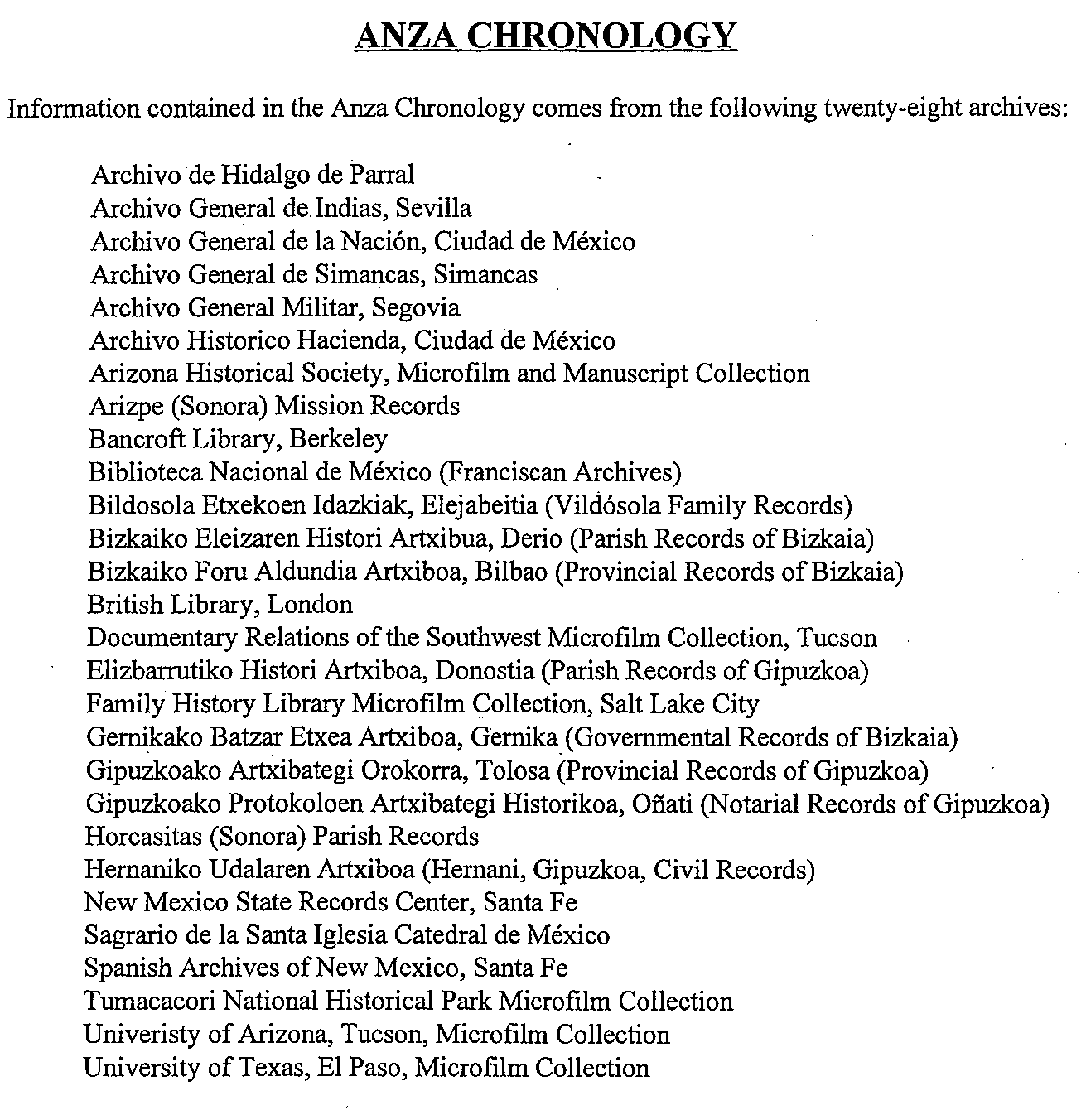 |
|
In
remembering May 5, 1862 (cinco de mayo), we must also recall that in
those days, the U.S. Mexico border was in transition. Since the
early 1700s, the Rio Grande had been a local river, settled on both
sides (ambos lados) by the same Spanish Mexican families. Likewise, our
Native American kin had crossed it for thousands of years as they went
about their daily lives. In
1848, it became a political boundary (permanent Mason-Dixon Line),
forever separating families and a unique way of life that residents of
the region call "The Borderlands". Saludos,
José
Antonio López
|
|
Dr.
Felipe de Ortego y Gasca World
War II Marine Corps Veteran Receives
Quilt of Valor from the Southwest New Mexico Quilters Guild and Silver City, NM, April
8, 2015. Dr Felipe de Ortego y Gasca, Scholar in Residence at Western
New Mexico University, was honored today by the Grant County Ladies of
the National Quilt of Valor Foundation for his World War II service as a
Marine. Four World War II veterans received Quilts of Valor. Military Unit: U.S. Marine
Corps:
First Marine Aircraft Wing, 3rd Marine Expeditionary Force, Marine Aircraft Group 24
|
| Quilt of Valor recipients from left are seated Dr.
Felipe Ortego, Curtis Maxwell and standing behind them from left, Dan
McBride and David Garcia. Presenters from left are Terri Sommers, Jude
Casco, Maria Garcia, Maxwell's son, Nancy Miller and Twila DeVinney. |
|
An amazing gift. Some
of the members of the Southwest New Mexico Quilters Guilt presented a
few of our veterans here in Grant County with a tremendous gift—a
Quilt of Valor. The folks that create these quilts are a special kind of
person. They pour their hearts and souls into every stitch creating a
one-of-a-kind quilt with exacting standards set forth from a national
organization: http://www.
qovf.org A
Quilt of Valor can really get around, as the Disabled Veterans of
America Commander Bryant Jamison found out during the presentation. A
quilt top may be started in Silver City, then be sent to Utah for the
quilting, then maybe to Texas for binding. And at every stop, a
passionate volunteer opens her heart and gets busy pouring love into
every stitch. All this is done with a veteran in mind. "I
cannot begin to explain the love and appreciation that this
creates," Jamison said. "As the DAV Grant Fort Bayard NM
Chapter 1, I would like to thank all those involved in getting some of
our veterans these quilts, and a special thanks to Southwest New Mexico
Quilters Guild President Carol Pickering, QOV Coordinator for the
Quilters Guild Jude Casco, and long-arm quilter Terri Sommers. And, of
course, the veterans who received these quilts." Sent by Juan Marinez jmarinezmaya@gmail.com
|
| Yearning to be Recognized by Kyle Fields |
| Frontera NorteSur: on-line, U.S.-Mexico
border news Editor's Note: May 1 is celebrated worldwide as International Workers' Day. In the United States, commemoration of May Day was broadly revived during the last decade by the struggles of immigrant workers and community members. In 2015, May Day events organized by immigrant workers are scheduled for Los Angeles, San Jose, Albuquerque and many other places. For today's piece, New Mexico State University graduate student Kyle Fields contributes a provocative commentary about the situation of undocumented immigrants in the United States. Fields is a student in sociology in New Mexico State's online graduate program. May 1, 2015 NMSU Student Series Yearning to be Recognized Undocumented immigrants have become the slaves of the United States. The American government complains about an “illegal alien problem,” but undocumented immigrants prove time and time again that they stimulate the struggling American economy which oppresses them. Yet, Americans continue to preach their prejudices against undocumented immigrants in media outlets, and exploit them as cheap labor. The life of many undocumented immigrants consists of waking up before the sun rises to look for work or walk to a low-paying job. An inability to obtain licenses causes many immigrants to rely on public transportation. Men fill crowded city corners hoping to be offered a chance to work while women are commonly on their feet all day with no breaks as they cook and clean. The day ends with little money after most undocumented immigrants’ low wages are taxed under never before used tax identification numbers; they never see the taken money since they are barred from ever receiving any type of social security benefits. The parents return home to find their children with homework in a language they cannot understand. They still need to feed and clothe their kids, so they frequent local American businesses. Most of these businesses are filled with Americans who do not want to and will not work strenuous jobs for low wages and no benefits. Facing a plethora of domestic pressures, children obey and assist their hard-working parents who have traveled treacherous journeys to give them the luxury of education and opportunity. This luxury is something not available to undocumented immigrants, who coming from rural areas, faced discrimination in their homeland and couldn’t finish their education. They have worked tirelessly since childhood. With not enough hours in the day and little education, most struggle to find ways to learn English and rely on their children to interpret for them. At a time when undocumented immigrants are fighting for changes in the American immigration system, President Obama is pushing an executive order to allow approximately 5 million undocumented immigrants the ability to remain in the US, obtain work permits, and receive other benefits. Twenty-seven states are appealing Obama’s order in federal court, in hopes of continuing the oppression of undocumented immigrants yearning for a better life in the US. Controversial immigration issues are growing since undocumented immigrants continue moving to new areas that were not once immigrant destinations, such as the shores of South Carolina and North Dakota’s oil fields. Most Americans imagine an indigenous looking Mexican man in work-stained clothing, who does not speak English. This idea and the notion that undocumented immigrants cause the American economy to plummet are ideas right-wing politicians have engrained in Americans’ minds. Yet, undocumented immigrants continue to stimulate the American economy via purchasing power, opening new businesses, and paying taxes. Meantime, they reap little to no benefits from social services. Undocumented immigrants will never receive money they have paid into the social security system; therefore, a generation of elderly people who have worked their whole lives will have nothing to show for it. They will arrive in the US and die in the US as an undocumented immigrant, never recognized for the years of hard work and money they put into the American economy. Their medical and burial expenses will be placed on struggling American families simply because of the land their family member was born on decades ago. It is commonly believed that undocumented immigrants are living in the shadows, but they are not. They are around us every day. They are our caretakers, our food providers, our neighbors, and our friends. They have no set appearance, language, or culture. They are a people like each and every one of us, who are seeking a better life filled with happiness, success, and what is best for their children. Yet, we treat them as if they are criminals stealing our dreams; however, we have to make our dreams a reality just as they are trying to do. I didn’t do anything to deserve the color of my skin, an education, or the ability to speak English and neither have the majority of American people. We cannot let the land we were born on change how we treat one another. We can no longer oppress, enslave, and not recognize people who have lived their lives giving to the US, creating a better life for their family, and overcoming adversity to reach their dreams. -Kyle Fields Frontera NorteSur: on-line, U.S.-Mexico border news Center for Latin American and Border Studies New Mexico State University Las Cruces, New Mexico For a free electronic subscription> email:fnsnews@nmsu.edu |
Mexicali Rose: Cultivating Art Across the Border Amy Sanchez , December 4, 2012 |
 Top Image: Exterior of Mexicali Rose. | Photo: Courtesy of Amy Sanchez. "Dry those big brown eyes and smile, dear / Banish all those tears and please don't sigh / Kiss me once again and hold me / Mexicali Rose goodbye." In 1939, Gene Autry sang this lonsome ode in the film "Mexicali Rose." Marco Vera, filmmaker and son of the capital of Baja California, knows the tropes that drive Westerns of that period: a corrupt politician, businessman, or general bad guy concocts a plot that will ruin the quaint and picturesque life in a Mexican border village, but a White male hero saves the day and gets the girl (and sings, probably). The title of this film and song, one of the few that references the desert border city on the brink of the United States and Mexico, has been appropriated by Vera, who founded Mexicali Rose Centro de Arte/Medios (Mexicali Rose Art/Media Center), a grassroots community space that hosts art and film making workshops, film screenings, and exhibitions of local and international works of art. Unlike the film and music that characterize the "rose" as a fragile delicate flower wilting in the desert waiting for an American messiah to rescue it, Mexicali Rose has been the community's way of asserting itself, reclaiming the ability citizens have to transform their own communities, and turning the myth of the white savior on its head. Mexicali Rose is located in Pueblo Nuevo, which lies adjacent to the US/Mexico border, and is one of the oldest and most historically significant communities in Mexicali. People who worked in the more affluent parts of the city, but could not afford to live in those areas organized to establish Pueblo Nuevo in 1915. In 2007, inspired by the Echo Park Film Center during the years he lived and worked in L.A., Marco Vera returned home to Pueblo Nuevo with the hope of establishing a space where he and friends could facilitate film and media workshops. Initially, he looked for a space in Mexicali's Downtown area because it would be accessible by public transportation to Mexicali youth, and also to people crossing the border. When that search did not yield any desirable spaces, he began to envision a house in Pueblo Nuevo owned by his uncle as the site for the project. The only problem: the house was occupied by human smugglers. They owed Vera's uncle over a year in rent, but refused to leave the house. He and his uncle struck a deal that if he got the inhabitants of the house to leave he could rent the space and use it as an art center.

Paintings from 'Homenaje a las Voces Pioneras de Mexicali' | Photo: Courtesy of Amy Sanchez. Sent by Dorinda Moreno pueblosenmovimientonorte@gmail.com |
|
The Chihuahuense Jaime Pacheco |
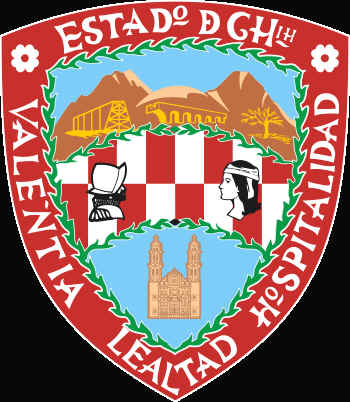 |
|
Jaime Pacheco, |
| Nueva
Vizcaya: Heartland of the Spanish Frontier, a well-researched
book by borderlands author and researcher Oakah L. Jones, details how
significant a role this open and desolate landscape on the far northern
frontier of New Spain had on the eventual colonization of New Mexico.
Nueva Vizcaya comprised virtually all of the present northern Mexican
states ol Sonora, Sinaloa, Chihuahua, Durango and Coahuila.
From early colonial beginnings, the people from the present states of Chihuahua and Durango have had an interdependent relationship with the people of New Mexico. Contrary to popular belief, New Mexico's founding and early settlement under Juan de Onate, a criollo from Zacatecas who married a mestizo, became a reality largely due to the major recruitment efforts that were undertaken in the southern Chihuahua towns of Santa Barbara and Valle de San Bartolome. More than 200 families from Valle de San Bartolome and others from places farther south, including Zacatecas, were recruited to join Onate on his first major expedition to New Mexico in 1598. Many of these early settlers were not only of Spanish descent but also included mestizos, Indians and mulattos, all of whom contributed to them mestizaje of present-day New Mexico. In trying to
demonstrate or prove any basis of truth in genealogical research, one
must always attempt to use as many primary sources as possible. The
reason is simple. Research that is based on original documents provides
the genealogist with the facts that are needed to counter the
extraordinary embellishments often used to propagate myths or
half-truths. It is well established that many of the early families of
New Mexico had roots that connected them to colonial families from
Chihuahua. A great example of this involves the families that fled to El
Paso after the Pueblo Revolt of 1680. Some stayed in El Paso and
participated in the reconquest of New Mexico under Diego de Vargas
between 1692 and 1694, but there were those who left to southern towns
in Chihuahua like Carretas, Papigochic, Bachiniva and Todos Santos. Some
families were even split in two, where family members from different
branches settled in New Mexico and others resettled in Chihuahua. Two influential families that experienced this were the Duran y Chaves and Dominguez de Mendoza families. The vast majority of the Duran y Chaves family settled in New Mexico; however, one branch of that same family made its home in Chihuahua, never to return to New Mexico. The present-day descendants of this family, in Chihuahua and New Mexico can both lay claim to a common ancestor from colonial days. The other, the Dominguez de Mendoza family, originally was among those early settlers who ventured northward, but after the 1680 revolt most of the descendants fled southward into Chihuahua and married into prominent families from Chihuahua. Many people tracing their New Mexican genealogical roots have primarily based their research on Fray Angelico Chavez's book Origins of New Mexico families as well as the archives of the Archdiocese of Santa Fe and the well-known Spanish archives of New Mexico. Other important colonial documents from northern Mexico that shed an important light into the genealogical past of New Mexico include the Archivo Historico del Arzobispado de Durango, the Archivo Historico de Hidalgo del Parral and the Archivo del Ayuntamiento de Chihuahua. These documents contain vast amounts of military, political, religious, mining, merchant and genealogical information that span the whole colonial period of the borderlands frontier. The archives from Archivo Historico del Arzobispado de Durango are probably the ones that are most familiar to New Mexican researchers since there is a copy at New Mexico State University in Las Cruces. These contain multiple documents of detailed information about religious matters, marriages, baptisms and testaments starting from the early 1600s and focusing on the entire area of northern Mexico. Another excellent source is Archivo Historico de Hidalgo del Parral. Since its discovery, historians and genealogical researchers have used the document to reveal many important insights and conclusions about the complex nature of the colonial frontier society of northern Mexico. These archives contain information that spans the period between 1631, when San Jose del Parral was founded and became the most important mining center in Nueva Vizcaya, through 1821, when the Republic of Mexico came into being. These records include more than 9,000 documents that have all been microfilmed and cataloged. The last important source is the Archivo del Ayuntamiento de Chihuahua, These contain documentation relevant to Chihuahua and its surrounding areas and start about 1709, when the Real y Minas de San Francisco de Cuellar was founded. These documents are also on microfilm and a copy of this collection at the University of Texas at El Paso. These records contain an enormous amount of information, including legal transactions concerning government, mining registrations, testaments, criminals and other types that involved early settlers of Chihuahua and the northern frontier. Anyone doing serious historical or genealogical research in New Mexico should consider all of the above sources. There has been a profound connection between New Mexicans and Chihuahuenses throughout both of their histories. To insist that hispanos from New Mexico have a distinct and separate culture from their neighbors south of the Rio Grande only continues to perpetuate a myth that has no basis in truth. y& Jaime Pacheco, a native of East Los Angeles, Calif., is an independent genealogical researcher and historian specializing in colonial Chihuahua, Mexico. Published Fall 2003 / La Herencia pg. 11
|
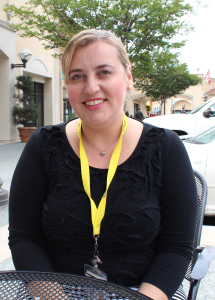 |
Eye on the Locals Luciana Corrales and Border Culture Source: South Bay Compass May 5, 2015 |
| Border culture has some very distinct elements. People who work and live on both sides of the border fuse together two languages and two lifestyles. Latina community activist, Luciana Corrales, represents a quintessential border citizen. | |
| Born In The USA: Born in Chula Vista, her mother came over from Tijuana to give birth in order to ensure that Luciana would be an American citizen. Luciana then lived the next eight years of her life in Tijuana. Her mother, too, was a native of Tijuana. She also was a single mom who found an excellent job with the telephone company. “In Tijuana we used to live in Infonavit. It’s a housing that’s affordable for people who work for the gas and electric companies.” But at the age of eight, Luciana’s mother remarried and brought Luciana to live in Morena Valley near Riverside. Now a part of a blended family, her mother was determined to have Luciana learn English. As a matter of fact, Luciana sees this as a problematic part of the Latina experience in San Diego. Many very highly educated and talented women come over from Tijuana through marriage or their spouse’s work. They had successful careers in Tijuana, but due to the language barrier, they are cleaning houses. There’s nothing wrong with cleaning houses, of course, but are these women meeting their full potential? Luciana asks. Learning English for Luciana, even at the age of eight, was difficult. English Language Learners: “I remember from my ESL classes, they would take me to a separate classroom and they would just throw me into English regular for the different subjects, but I couldn’t understand a word that they were saying. And then they would put me in this little room with Kindergarten books.” When Luciana graduated high school, she immediately returned to her Tijuana. She had her immediate family there, her mother’s two sisters. Although living in Mexico, she commuted back and forth across the border to get her associates degree and also for different jobs. In 1998, she married a native-born Tijuanan. He, too, had spent some years living in El Cajon, having a binational experience like so many of us in this region. By 2000 and 2001, they had two boys and they had planned to always live in Tijuana. 9/11 Changed Everything: However, September 2001 changed everything. The border waits became severe and Luciana decided to move to the U.S. But she wanted to be as close to her culture as possible. She chose San Ysidro because it was a walkable community. A place where she could easily go back and forth between the border, take the bus to the pedestrian crossing or take the trolley to downtown San Diego. At first, her sons went to Smythe preschool and then she enrolled them in Mt. Carmel Catholic Church. The boys received first communion there, something very important to her and her husband. The Recession: But then the recession hit. Her husband, who had received his green card and then became a U.S. Citizen, was a building inspector for the City of San Diego. He received a letter saying that he was going to be laid off. Luciana still has the letter. It was a life-changing moment. Many of their friends had already been hit with the recession, losing their jobs and even their homes. Although her husband got lucky and never completely lost his employment, they switched their sons to the San Ysidro Public School District. Luciana’s friends thought she was crazy. They told her that her boys would get on drugs soon enough and they would never be properly educated. That’s when Luciana said that she would fight to make the public schools in her own community better. That was 2010. “The public system has to work. There’s the rumor that they say students in San Ysidro don’t learn. It has to be false and I need to prove that because this is the community I choose to live in and the boys need to be successful here.” Willow Elementary, a school located a stone’s throw from the U.S.-Mexico border, had just been newly built. Her boys began to attend Willow and Luciana offered to volunteer filing for the secretary, then she joined Willow’s School Site Council. English Language Learner Advisory Committee: She also volunteered to be on the English Language Learner Advisory Committee (formed whenever there are more than 21 English language learners in a school). Soon she was invited to attend the district committee for English language learners. “That’s why I’m so passionate about the English Language learners here in San Ysidro and their opportunities because I experienced that myself and it was shocking.” Community Bike Rides: She also became very passionate about safe walking and bike routes to school for San Ysidro children. She started out going to meetings of Walk San Diego. By April 2013, she applied and got the job as Community Engagement Coordinator for the San Ysidro Walks and Wheels to School, a program that collaborates with the San Diego Bicycle Coalition, Circulate San Diego, the City of San Diego and the San Ysidro School District. Her temporary desk is at the San Ysidro School District offices, but her boss is located at 1111 6th Avenue in downtown San Diego, Circulate San Diego’s office. She is the outreach person and during her last Safe Route bike ride, she was accompanied by Council member David Alvarez of District 8 and Captain Tai of the Southern Division of the San Diego Police Department. The program started by doing an audit of the streets and sidewalks, making it safer for students to arrive to school. Then, she began to recruit volunteer parents to provide safe routes for kids. On Mondays and Fridays parents wear safety vests that identify them. They then become the eyes in the streets, keeping things safe. They often provide children with incentives by giving out informational cards or even providing bikes and helmets. Four schools in San Ysidro have parents who are active in the program. Luciana’s program thus far has been successful in lowering student absences and encouraging parent engagement. As part of the federal grant given to Circulate San Diego, Luciana has also piloted community bike rides into the Tijuana River Valley Regional Park as a way to keep neighborhoods active in recreational activities. She holds community bike rides, but it’s been tough. The community bike rides encourage parents to ride with their children, but parents say their apartments don’t have bike racks and there’s no storage space. Most parents only buy the bikes for their children, not themselves. Luciana has come up with a solution. Bikes del Pueblo have now donated the bikes for everyone to do the rides together. San Ysidro School Board: Luciana is also a trustee on the San Ysidro School Board. In June 2014 a position opened on the San Ysidro School Board and she started to go to board meetings to assess the level of community engagement. There wasn’t much. She also observed to see who was leading the community. She applied for the position because “my dream is to change the reputation and hopefully say there are working families who live here that are binational, that enjoy having this culture, that we do have qualified teachers, that we do have great students that make the San Ysidro School district a good district. We haven’t reached our potential and I saw it as an opportunity.” She also feels leadership needs to include the perspective of mothers. Luciana has spent years as both a stay-at-home mother and as a working mom. After Luciana received the trustee position in June 2014, she won her seat during the November elections. When sworn in as a board member, she talked about the significance of being a mother. Currently, she is the only woman on the board and the only trustee with a child enrolled in the district. “We, as women, we bring children to this world. We face many different challenges, all of us at different stages. We see the schools as a gateway for the success of our children. We need to have leadership that meets the expectations of the new generation, especially leadership from Latina women. “If a Latina woman gets married and decides not to have a career, you still have a career within your household. You still make decisions. You still empower your own community. I really have issues with people who say, if you don’t have a career then you don’t count. And no, I think it needs to be said: if somebody wants to get married, that’s fine. Okay. They should get married, but they should know their rights, they should know that they’re their own person and they should never feel that they’re not going to be contributing to society.” http://i2.wp.com/southbaycompass.com/wp-content/uploads/2015/05/LucianaCorrales.jpg http://feeds.feedburner.com/~ff/SouthBayCompass?a=0QejZDxA6e4:poRZgOL1gLk:yIl2AUoC8zA http://feeds.feedburner.com/~ff/SouthBayCompass?a=0QejZDxA6e4:poRZgOL1gLk:qj6IDK7rITs http://feeds.feedburner.com/~ff/SouthBayCompass?a=0QejZDxA6e4:poRZgOL1gLk:gIN9vFwOqvQ Sent by Dorinda Moreno pueblosenmovimientonorte@gmail.com |
|
|
|
JUNE 4, 2015 The Men of Company E Hispanic Medal of Honor Exhibit at Texas State Capitol We All Lived on Romana Street, by Roland Vela-Muzquiz & Cesar Vela-Muzquiz Global Family Reunion in New York with Live Stream at Clayton Library Center How Deep Are Your Texas Roots? Legacy of Texas: Maps, Art, Books, Flags May 15th, 1755 -- Sánchez family founds Laredo October 8-10 36th Texas State Hispanic Genealogical & Historical Conference The Pink Building Matters Latinas and Latinos: A Growing Presence in the TSHA by Dr. Cynthia E. Orozco Texas State Historical Association moves back to UT Austin campus Texas Tejano & Southern Methodist University Plan Sept Cultural Conference San Antonio Celebrates Mel Casas with Series of Citywide Exhibitions Examples of Cultral Intermarrying, 1800s: Portilla-Power-Welder Can of Texas Laredo, Texas – Cross Cultural Marriages Mexican-American Cultural Center in El Paso |
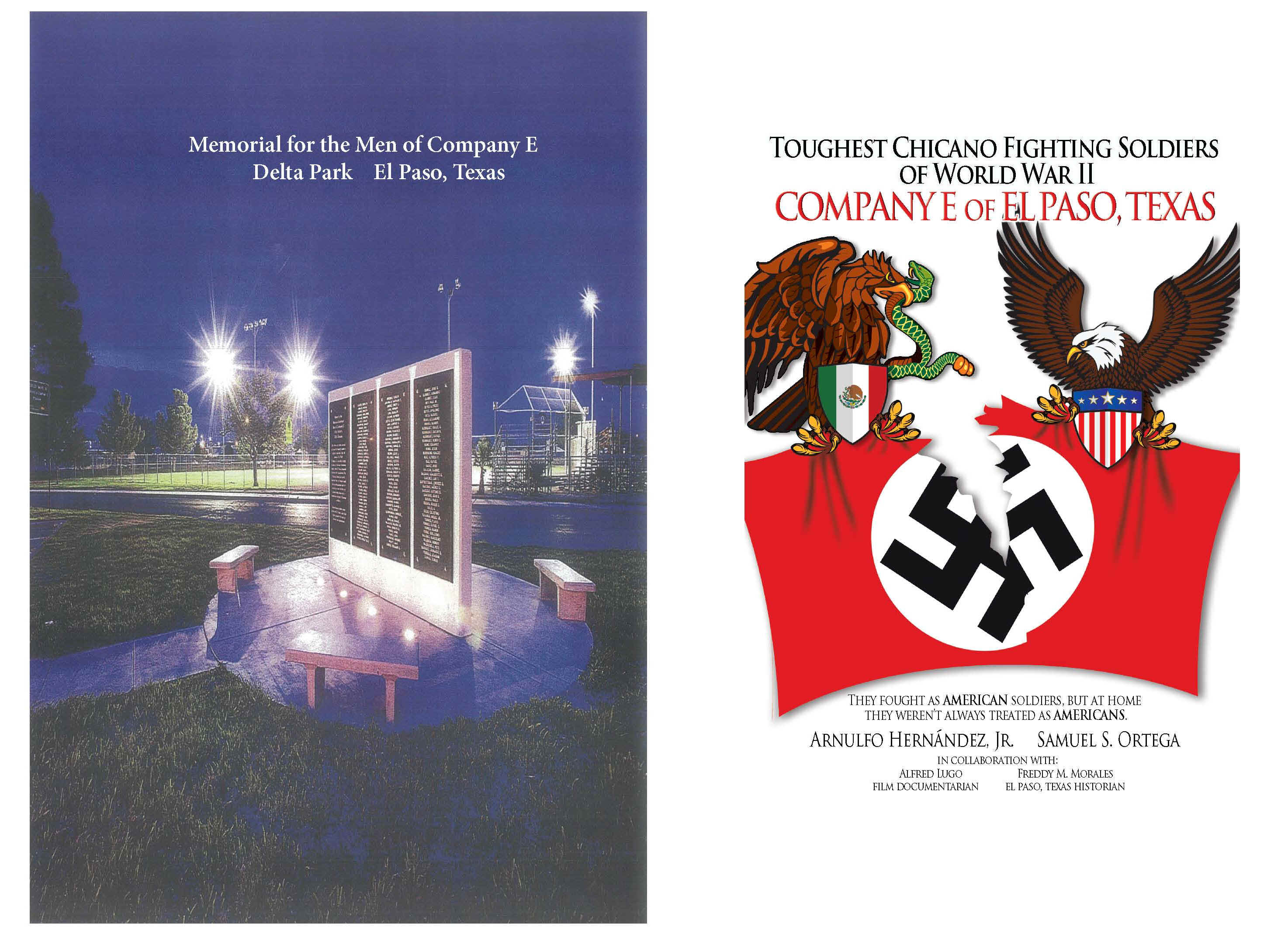
|
JUNE 4, 2015: The Men of Company E |
|
71 years ago on June 4, 1944, Company E, as part of the 36th Texas Division, 5th Army, Italian Campaign, entered and liberated Rome from the grip of Nazi Germany and put them on the run, with their tail between their legs, out of Italy. Two days later, on June 6, 1944, the eyes of our country and the whole world turned to the Normandy landing and the liberation of Rome and defeat of the once-infallible Third Reich war was forgotten and became a footnote in the war against the axispowers.
What a morale boost the troops in Normany must have
gotten to know that the Texano boys, including the "toughest
Chicano soldiers of WW II: Company E of Company E", whipped the
Nazi war machine out of Rome and put them on the run
out of Italy. Company E of El Paso was the only all-Chicano unit
in the entire United States Army in WW II.
71 years later, on June 4, 2015, the city of El Paso, Texas will honor the 5 living members of Compay E and two living widows of Company E soldiers. At 10 am at Delta Park, a wreath placing ceremony will take place at the monument to the men of Company E. The city will issue a proclamation declaring June 4th "Company E Day in El Paso". The mayor will also award the symbolic keys to the city of El Paso to the survivors and widows. Finally, at 6 pm, a "Meet and Greet" our heroes will be held in the Fine Arts Building at Bowie High School where the 1983 Documentary, "The Men of Company E", will be screened by its Los Angeles-based documentarian, Alfred Lugo, and a panel discussion with our heroes will follow. All of our Company E living members are in their mid-90s. The public is invited to both events at no charge. This is a link to an article in Spanish about Company
E of El Paso, Texas. |
|
|
|
A patriotic essay written by in remembrance of a time when men were patriots for
love of flag and country
|
| The
text in this work is protected in its entirety by copyright and by right
of ownership of the authors. No one may copy or use any part of it
without previous, written permission from Roland Vela-Muzquiz or his
assigns. Spring 2011 P.O. Box 51164 Denton, Texas 76206 |
|
The
houses were very old and stood side by side with little or no space for
gardens, back yards or play areas. It was a hard, dusty little street
with almost nothing that could be counted as a positive attribute —
but we loved it, we were almost proud of it; it was, after all other
considerations, our barrio, aw Alma Mater.
La Calle de Romana lay deep in the oldest part of San Antonio, probably less than ten blocks away from the historic Spanish Cathedral built in 1731 by the ancestors of our ancestors of the family Muzquiz. Its location in the flood plain of San Pedro Creek probably made it a place of malaria and dysentery in years past. Undoubtedly, it was opened to make a connection between two major north-south traffic arteries named North Flores and Camaron Streets (see last page, top map). Together with Kingsbury and Belvin, West Romana must have been part of an impoverished blue-collar neighborhood — much as it was in 1936 when we lived there. About the end of the 19th Century, probably after San Pedro Creek was adequately channeled, other streets were added to the area. West Elmira, West Euclid and Marshall were broad, paved streets lined with elegant, expensive houses with St. Augustine grass lawns and attractive gardens (see last page, bottom right). The latter comprised an Anglo and moneyed-Mexican neighborhood that bore the aura of a certain gentility. Without embarrassment, West Romana stood out from all the other streets in the area and did so in several aspects. In contrast to the houses on West Elmira, the houses on West Romana seemed to have been built on lots that were halved and halved again until small oddly-shaped houses filled every piece of open ground from North Flores to Camaron. We lived at 510 West Romana (see maps on last page, top left and middle) in a small two-bedroom one-bath with less then 600 square feet of floor space on a lot not larger than 25 x 50 feet. A store with living quarters above was hard by our west wall, and a two bedroom with no water or sanitary services was immediately behind our house. On another small portion of the original lot were a one-room apartment, a store room and a storage garage, hi brief, there were seven structures on a lot no more than 50 x 70 feet. Also unlike neighboring streets, Romana bore no signs of ever having been paved. There were no rain sewers, no street curbs and no driveway cuts. While all the other streets had good asphalt surfaces and consequent clean environments, Romana was a gravel street bathed in mud to a depth of several inches when it rained and a permanent cloud of white caliche dust at all other times. It was a street very different from the others in every way. Those of us who lived there and were proud of our street made no apologies for it. Collectively, we spoke its name loudly and clearly since we knew everyone would know where we lived. We lived on Romana Street, next to Tech High School. Romana was brimming with life — it seemed that each little house contained one or more boys — and girls that added to the constant clamor of the neighborhood. Healthy, active youths ranging in age from five to twenty filled the street. The boys had long established a unique order that lasted from one generation to the next. The "Romana Rattlers" bound us all to one another and to the street. The Rattlers were a lose semi-gang that formed teams capable of competing successfully with those of other neighborhoods in all athletic events that boys could think of. No initiations or secret words were required; if you lived on Romana you were a Romana Rattler. In most instances we were better than the Riverside Katz, the Euclid Eagles, Cantor ana, La Piedrera and the Snake Hill Gang. Since half of these were Anglos, we grew up knowing that the movies and history books were all wrong about physical prowess and who would win in any contest. Then a sudden shift in world politics brought severe changes to Romana Street. On December 7,1941, Romana Street stopped being the natural habitat of Romana Rattlers and became a national resource of boys / men to serve our country in the coming war. The number of boys / men who served in WWH and Korea that lived in the 200 yards (wild guess) of West Romana should be noted — by someone — by everyone. Every substandard and misshapen little house contributed one or more men to the armed forces. There was a willingness, an urge — to serve in the armed forces — to be part of the war, and most of us volunteered. We, Cesar and I, were part of this cohort and we enlisted as soon as our ages permitted. Roland volunteered for service in the Navy at 17 and Cesar joined the Army at 18. In the absence of a chronicler to tell the story of the boys from West Romana during WWII and Korea, we have undertaken the task. We two brothers who were of Romana Street humbly assume we can do this suitably. But if we don't, we apologize for any and all errors and beg forgiveness. We think the data we show here are fairly reliable, our ages notwithstanding. Roland is 83 and Cesar 81 but we are still quick and alert in almost every respect. It is our firm recollection that almost all the boys from every family that lived on West Romana served in the armed forces. It is also our recollection that of all those who went, only two, Ramon Ramirez and Raymond Mendez, failed to return. Both Ramon and Raymond enlisted in the Marine Corps and both were killed in action in Korea. All the others completed their service and were honorably discharged at the end of the war — and we did so without Ken Burns ever knowing we served our country. But we didn't serve to get our name on a list, we went because our country needed us. Unfortunately, Romana Street was an early victim of Urban Renewal. Seventy years later, we see that Romana Street was replaced by Interregional Highway 35 and that the remnants of our street were cleaned, paved, curbed and renamed Quincy Street. Lamentably, there is no commemorative plaque to describe the willingness of the men who rose from there in the 1940s to answer the call to duty, and few are left who remember that Romana Street ever existed. My brother Cesar and I wish to remind everyone that Romana Street existed and that it was, free of bravado and easy patriotism, indeed a place of the free and a home of the brave.
|
LAST
NAME FIRST/NICK NAME EDUCATION. &
COMMENTS
SERVICE WAR
|
|
An 1889 map
of San Antonio shows Romana, Belvin, California and Kingsbury
Streets in what appears to be undeveloped land between Camaron and North
Flores. It also shows that Elmira (added dotted line), Euclid and
Cadwallader had not yet been extended west of North Flores. Undoubtedly,
the entire area between North Flores and Camaron was in the San Pedro
Creek flood plain creating an undesirable environment for any but very
poor dwellings. It appears that low income families lived in this
neighborhood from the earliest days of street construction to the 1950s
when the neighborhood was razed. |
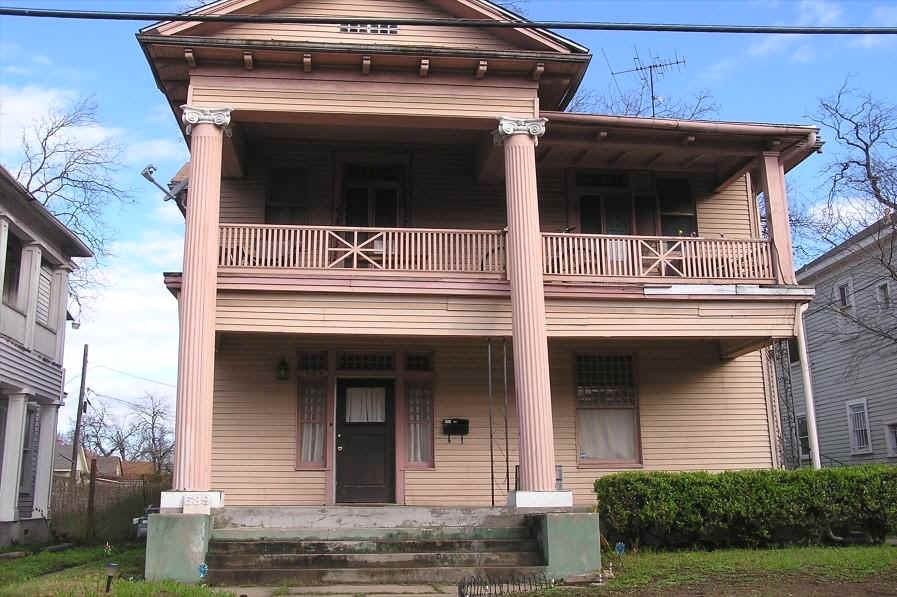 Houses on West Elmira (above) built at the turn of the Twentieth Century as they appear in 2011. The essence of luxury and comfort still shows through the century of their existence and contrasts sharply with the small, crowded houses on West Romana (below).
|
|
Global Family Reunion, New York |
Clayton Library Center for Genealogical Research, Texas is proud to be a satellite location for the Global Family Reunion, hosted by author A.J. Jacobs. It is billed as the largest, most inclusive, most fascinating family reunion in history?. We will be hosting a live-stream of the New York event, so that local attendees can watch the amazing lineup of speakers and performers, including PBS host Henry Louis Gates, comedian Nick Kroll and genealogist D. Joshua Taylor. Reservations required, please call 832-393-2600. Adults/Teens. Sent by Maria Azios ms.azios713@gmail.com Hispanic Genealogical Society of Houston, 6/6/2015
|
|
How Deep Are Your Texas Roots? Legacy of Texas: Maps,
Art, Books, Flags
|
| May 15th, 1755 -- Sánchez family founds Laredo On this day in 1755, Tomás Sánchez de la Barrera y Garza founded Laredo with his family and several others. Sánchez was born near Monterrey, Nuevo León, in 1709. As a young man he served in the army and later ran a ranch in Coahuila. When José Vázquez Borrego established a ranch on the north bank of the Rio Grande in 1750, Sánchez started one on the south side within sight of the new settlement. He was residing there in 1754, when he petitioned José de Escandón for permission to found a town on the north bank of the river. Escandón eventually approved the request and appointed Sánchez captain and chief justice of the new settlement, to be named Laredo. Sánchez was almost singly responsible for maintaining the settlement on the north bank of the Rio Grande, and he held the offices of chief justice and alcalde with only brief intermissions until his death in January 1796. |
|
36TH ANNUAL TEXAS STATE |
LAS VILLAS DEL NORTE: HOSTED BY VILLA SAN AGUSTÍN DE LAREDO GENEALOGICAL SOCIETY CONFERENCE HEADQUARTERS LA POSADA HOTEL, 1000 Zaragoza St., Laredo, Texas $ 99.00 plus tax per room (breakfast included)- One to four persons per room. Be sure to specify Villa San Agustín de Laredo Genealogical Society for this special rate. For reservations call Mara Maldonado at ( 956) 753-4409 or at mlopez@laposadahotel.com . Check in time 3:00 PM; check out time 12 noon. CONFERENCE REGISTRATION $75.00 per person if made before September 1, 2015. After this date $85.00. Saturday lunch is on your own. Registration, tour, banquets and vendor fees are non-refundable. You must wear a badge at all times. FOR ADDITIONAL INFORMATION SANJUANITA MARTINEZ-HUNTER, Ph.D. (956) 722-3497 SYLVIA J. REASH (956) 763-1810 or sjre0348@yahoo.com |
|
|
In 2009, "The Pink Building" faced demolition. As result of that threatened demolition, a group of Westside community members and organizations joined together to help save this building. In the process, a new group emerged known today as the Westside Preservation Alliance (WPA). The members of the WPA have joined together in the past on several occasions to contest and help preserve several structures and spaces throughout the Westside of San Antonio. Contact: esperanzacenter@yahoogroups.com |
|
|
|
|
|
http://tshaonline.us7.list-manage.com/track/click?u=9ac611cecaa72c69cecc26cb8&id=f9cb8e92d6&e=3967c4da92
May 8th, 2015 -- University of Texas Welcomes TSHA Back to Austin On this day in 2015, the Texas State Historical Association announced the move back to The University of Texas at Austin campus, where it was founded and operated for 108 years, to support the teaching and preservation of Texas History. The TSHA, the oldest learned society in the state, has been dedicated to the preservation, protection, and promotion of Texas History for 118 years. Through this partnership, the TSHA will establish an endowed chair for a faculty member in UT Austin's History Department. That faculty member will serve as the TSHA's chief historian, responsible for working to ensure the highest academic standards for its programming and publications, which include the iconic Texas Almanac, the Handbook of Texas, and the Southwestern Historical Quarterly. The Handbook of Texas, with more than 26,000 entries, is publicly accessible online and is constantly expanded and updated. The TSHA returns to UT Austin following a successful 7-year affiliation with the University of North Texas. |
|
Texas Tejano and Southern Methodist University |
|
Texas Tejano visits SMU On April 24, 2015, Texas Tejano visited one of its project partners; Southern Methodist University in Dallas, Texas. Texas Tejano and SMU are planning a major Tejano historical cultural conference which will take place at the university in late September. The conference will feature a historical traveling exhibit which tells the lifestory of legendary Tejano Jose Policarpio "Polly" Rodriguez. There will also be a lecture on the roles Tejanos played in the development of Texas given by our President and noted Historian; Rudi R. Rodriguez. Other notable speakers will be invited to lecture on Tejano heritage and legacy. Texas Tejano will continue to develop heritage projects with various organizations to tell the story of Tejanos and their role in the development of Tejas. For more information on Texas Tejano.com, please visit http://www.texastejano.com Sent by Tom Saenz saenztomas@sbcglobal.net |
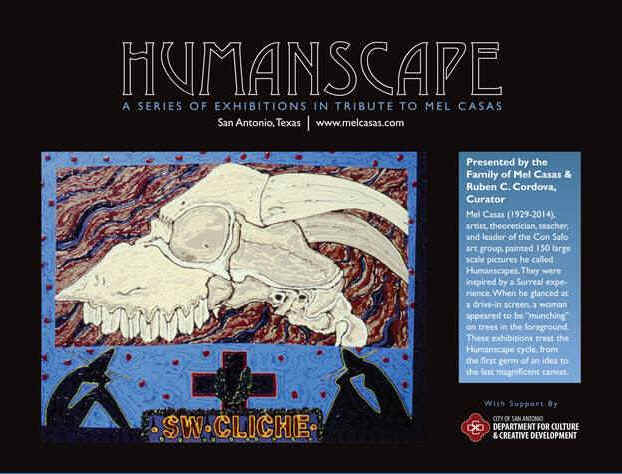 |
San Antonio Celebrates |
SAN ANTONIO (May 14, 2015) – Four major exhibitions devoted to the Humanscape paintings of artist Mel Casas will be on view at various locations throughout San Antonio between June and October 2015. Casas, who passed away in 2014, was an artist of national and international renown. An important leader, theoretician, teacher, mentor and administrator, Casas served as the first president and the leading spokesperson for the San Antonio-based Con Safo art group, one of the most significant Chicano art groups. He taught at San Antonio College for 29 years, where he also chaired the art department for nine of those years. “These exhibitions provide a unique opportunity to witness the entire progression of the Humanscape paintings, from the first germ of an idea to the last magnificent canvas,” said Ruben C. Cordova, curator of all four exhibitions. “Casas’ Humanscape cycle is one of the most remarkable series in the history of American art. Approximately half of the Humanscapes will be on view in these exhibitions. Since most of these paintings have not been exhibited in decades, anyone who can see these shows is in for a rare treat.” The Humanscape series had its origin in 1965, when Casas drove past the San Pedro drive-in cinema in San Antonio. As he glimpsed up at the screen, he beheld a close-up shot of a woman speaking. From his distant perspective, her giant head appeared to be “munching” on trees in the adjacent landscape. This experience of divergent realities inspired 150 large-scale Humanscapes that were painted between 1965 and 1989. Prior to his San Pedro drive-in epiphany, Casas had been an Abstract Expressionist. He transitioned to representational painting with monochrome images of embryos, followed by blurry, dream-like depictions of nebulous spectators who watch films at drive-ins and theaters. Casas gradually endowed his paintings with color and sharper focus. By 1967, the Humanscape spectators rise up from their seats and appear to “vogue” for the viewers of the paintings. In 1968 Casas added subtitles. These subtitles make punning connections with images that appear to be projected on a large screen in the upper portion of each painting, and with figures situated in the foreground. Casas utilizes this three-part structure in his subsequent Humanscapes. “Mel believed that one couldn’t get the ‘full flavor’ of an artist from just a painting or two,” said Grace Casas, the artist’s widow. “It was always Mel’s dream to have a substantial portion of these paintings on view at one time. Mel said that was the only way one could understand their interconnectedness and grasp their true significance.” With support from the City of San Antonio’s Department for Culture & Creative Development (DCCD), these exhibitions offer a unique opportunity for visitors to experience the complete evolution of Casas’ Humanscape cycle of 1965-1989 within thematically focused groupings. Educational programs featuring panels and distinguished lecturers will provide insight into Casas’ art and life, as well as the social and artistic context in which he worked. An accompanying publication is in preparation. “Mel Casas was more than just a well-known artist and teacher,” said Felix Padron, DCCD Director. “His work helped define the Chicano art movement, making him an iconic figure among his contemporaries. But, the work he created also forced mainstream audiences to rethink their cultural views, which made him a figure of influence beyond the art world.” The four exhibitions honoring Mel Casas are: June 5-Oct. 24, 2015 Getting the Big Picture: Political Themes in the Art of Mel Casas, 1968-1977 The Guadalupe Cultural Arts Center, 723 South Brazos St. Casas is best known for a handful of paintings with Chicano themes, such as Humanscape 65 (New Horizons, 1971) and Humanscape 68 (Kitchen Spanish, 1973), which have been featured in many traveling exhibitions. This exhibition provides a full view of Casas’ politically-oriented art, including anti-war paintings and oblique commentaries on Nixon-era politics, censorship, and racial discrimination. Some of these works received considerable exposure soon after they were painted: Humanscape 70 (Anatomy of a White Dog, 1973) was in the 1975 Whitney Biennial, and Humanscape 67 (Ellsberg the Pentagon’s Mocking Bird, 1972) was illustrated in a Roberta Smith article that appeared in Art in America in 1976. This is the first exhibition to focus on Casas’ political paintings. June 11-Sept. 27, 2015 Mel Casas: The Southwestern Cliches, 1982-1989 Texas A&M University San Antonio, Centro de Artes, 101 S. Santa Rosa Ave. Casas believed that artists shouldn’t merely imitate subject matter or painterly styles emanating from Europe or New York, so he made a series of witty paintings he called “Southwestern clichés.” In this series, he made the transition from painting with a brush to pouring and dripping paint. Humanscape 118 (Texas Fantasy, 1982) features a trio of mounted longhorns against a backdrop of cattle brands, suggesting that a cattle ranch is the ultimate Texas fantasy. Humanscape 145 (SW Cliché, 1987), nods to Georgia O’Keefe by taking a bleached goat skull as its primary subject. Humanscape 148 (Texas T’ang, 1988) works on multiple levels. The dripped paint and the equine subject matter refer to the glazes that Chinese Tang dynasty artisans applied to ceramic sculptures of horses. “Tang” is an abbreviation of “mustang” (derived from the Spanish word mesteño), the term for a free-roaming feral horse. The words “Texas T’ang” also refer to distinctive Texas accents. The bright yellow background color was inspired by and refers to orange-flavored Tang, the powdered fruit juice utilized on manned flights into outer space, which rendered it the quintessential Space Age drink. Thus the stream of Casas’ references in a single painting can extend from ancient China to the moon. Humanscape 150 (Star Gazing, 1989) features a field of stars in the screen image, implying that the Southwestern night sky is the ultimate wide screen spectacle. This nocturnal celebration of nature was Casas’ final Humanscape. June 25 – Aug. 22, 2015 Sex and Cinema with Mel Casas, 1965-1968 FL!GHT, 134 Blue Star This exhibition treats the cinematic origins of the Humanscape series. It includes one of Casas’ embryo paintings, as well as Humanscape 2 (1965), his only extant image of a drive-in. Casas, who was deeply influenced by the critique of media culture found in Marshall McLuhan’s book The Mechanical Bride (1951), was particularly concerned with how film and other media influence society. His concern is often reflected humorously, as in Humanscape 15 (1966), which features six identical couples in a theater interior who watch and mimic a couple who appear onscreen. In this period the Humanscapes become increasingly colorful and vivid, leading directly to the Sexual Revolution paintings, one of which is included in this exhibition. In Humanscape 36 (1967), a giant image of an ear and earrings serves as the screen image and model for the female figures in the foreground. The fragments of signs that appear in some of these theater interiors evolve into subtitles, as in Humanscape 50 (Bare Baby Brick, 1968), a Pop masterpiece from the Sexual Revolution period in which Casas deploys his most Freudian imagery. July 1-31, 2015 Mel Casas: Art about Art, 1975-1981 San Antonio Public Library Central Library, 600 Soledad Casas made a series of paintings that took art as his subject matter, beginning with Humanscape 74 (Deux Champ Stripped Bare by his Art, 1975), a punning, multilingual reference to Marcel Duchamp and his art. Casas sometimes takes another artist’s style out for a spin, as in Humanscape 75 (Lichtenstein in a Comic Spot, 1975), which employs the Ben-Day dots utilized by Lichtenstein and other Pop artists. In Casas’ painting, a number of women simultaneously call out “Roy!” The artist’s mute reply appears in a thought bubble: “Don’t they know…. I spotted ‘em first?” Casas also addresses the art market and the commodification of culture in this series. For more information about the exhibitions honoring Mel Casas, visit website: http://www.melcasas.com/ ### About the Curator: Ruben C. Cordova is an art historian, curator, and photographer. He holds a BA from Brown University (Semiotics) and a PhD from UC Berkeley (History of Art). He has taught at UC Berkeley, UT Pan American, UT San Antonio, Sarah Lawrence College, and the University of Houston A number of Cordova’s publications treat the Con Safo group and Mel Casas. His book Con Safo: The Chicano Art Group and the Politics of South Texas (Los Angeles: UCLA Chicano Studies Research Center Press, 2009) was the first book written on a Chicano art group. It received honorable mention at the 12th Annual International Latino Book Awards (2010) in the category of best art books, English language. Cordova is writing a comprehensive five-part study of Mel Casas’ Humanscapes. The first has been published: “The Cinematic Genesis of the Mel Casas Humanscape, 1965 – 1967,” Aztlán: A Journal of Chicano Studies. 36:2 (Fall 2011): 51-87. It will be reprinted in Jennifer A. González, Tere Romo, Chon Noriega and Ondine Chavoya, eds., Chicana/o Art: A Critical Anthology (Durham: Duke University Press, forthcoming). The third part will be published this fall: “Getting the Big Picture: Political Themes in the Humanscapes of Mel Casas, 1968 – 1977,” in Víctor A. Sorell and Scott L. Baugh, eds., Born of Resistance: Cara a Cara Encounters with Chicana/o Visual Culture (Tucson: University of Arizona Press, forthcoming, Fall 2015). Poster l Mel Casas_Ad - 5.14.15 |
|
|
EXAMPLES OF CULTURAL INTERMARRYING, 1800s THE PORTILLA-POWER-WELDER CLAN OF TEXAS
|
| Texas
family history began with Felipe Rogue de la Portilla, born in Burgos,
Spain, 1768. Married Maria Ignacia de la Garza, of Mier, Mexico. Her
family owned much land there. Natural children: Jose Calixto, Juan,
Maria Dolores, Jose Francisco, Maria Tomasa. They adopted Luciana and
Maria Monica.
Dolores de la Portilla married (in 1832) James Power, who was born 1778 in Ballygarrett, Ireland. After Dolores died (in 1836) in childbirth, James Power married her sister, Tomasa Portilla (in 1837). James Power fathered, in his first marriage: James, Jr. (married Elizabeth Bower) Dolores II (married John Welder) came in 1830 from Bavaria His second-marriage offsprings were: Tomasa (married Waiter Lambert) Mary Agnes (married John Franklin)
Eliza (married E. J. Wilson) Philip (married Mary Louise Luque). |
|
|
JOHN JONES and JESUSA GARZA, March 10, 1859 Groom: a soldier, born in County Eimerick in Ireland. Bride: Earedo resident, daughter of Juan Garza and Juana Cortinas MICHAEL FALLELL and DIEGA RAMON, June 6, 1870 Groom: native of Greenbale (sie) Ireland, resident of Earedo, son of Bernard Farrell and Annie Clark Bride: age 19, native and resident of Earedo, daughter of Apolonio Ramon and Leaner Dovalina. WILLIAM EBERLING and PETRA GARCIA, April 20, 1888 Groom : native of Edinburgo*, Prussia, son of Carlos Eberling and Catarina Englar Bride: daughter of Benito Garcia and the late Evarista Guerra. *Most likely Edinburg, Scotland or Spanish - Edinburgo, Esocica. EDWARD FREDERIC HALL and CAROLINA MENDIOLA, April 20, 1868
|
|
|
| The following opinion appeared on the Sunday, 4-26-15, edition of the El Paso Times. The name to be given the cultural center has created a public debate. Please distribute and encourage folks to send in letters to the editor of the El Paso Times supporting naming the cultural center THE MEXICAN AMERICAN CULTURAL CENTER. I firmly believe the name of El Paso's cultural center should be the Mexican-American Cultural Center. It is a center whose time has come and has long been delayed. The discussion over naming the facility merits a healthy public debate. Some want to emphasize the diversity of people in El Paso. Others seek to inject race into the discussion. It is neither. We celebrate diversity and embrace all races. The center is about culture. It is well known that Mexican-American culture, history and contributions to El Paso, Texas and beyond have been overlooked, marginalized and ignored by the history books, textbook, media, government, and the education system. The purpose of the center is to share with the world the culture, history and significant contributions of the Mexican-American community. The Emma Barrientos Mexican-American Cultural Center in Austin serves as a model. The center is dedicated to the preservation and promotion of Mexican-American culture. It is a resource for the community and visitors to learn and participate in classes and programs that will foster a meaningful understanding and appreciation of Mexican-American, Native American and other cultures. The programs include visual art, theatre, dance, literature, education, music, language, and more. The proposed center would serve as the centerpiece of El Paso's claim to be the "Gateway to the United States" and for becoming a magnet for international studies and international cooperation projects between Mexico and the United States. The proposed center, coupled with the recently built Downtown stadium for the Triple-A Chihuahuas baseball team and the newly installed digital wall,, beckons international visitors tourists, vacationers, students, researchers, and scholars interested in visiting the new center. The City Council would see an increase in revenue collected via the hotel occupancy tax, rental cars, restaurants, and other sources and provide more funding for more projects, including future quality of life bonds. The cultural center will be a destination point for visitors, and commercial airlines flights arriving at El Paso will be full instead of half empty. The El Paso Times editorial of March 14 stated, "El Paso is long overdue for a center that interprets, celebrates and exhibits the vital role of Mexican immigrants and their descendants, not only in El Paso, but in the United States as a whole." It is fitting that as the home of to Fort Bliss, El Paso's Mexican-American community has contributed much to the defense of our country. Mexican-Americans were the most highly decorated identifiable ethnic group in World War II and Korea, with the most Medals of Honor. Texas has the distinction of having the most Medal of Honor recipients in those wars. One of them is Ambrosio Guillen, who was posthumously awarded the Medal of Honor for his act of valor in the Korean War. He attended old Bowie High, which has now been renamed Guillen Middle School. The Mexican American Cultural Center could share this rich cultural history of country, duty and honor with the world. Arnulfo Hernandez, Jr., an attorney in Sacramento, Calif., is a 1966 graduate of Bowie High School and co-author of a book to be released in May, "The Toughest Chicano Fighting Soldiers of WWII: Rifle Company E of El Paso,Texas." Sent by Roberto Calderon, Ph.D. Roberto.Calderon@unt.edu
|
|
|
|
|
Immigrants Shunning Idea of Assimilation
|
|
Views About Immigrants, dated May 25, 1998 |
Dear Readers, Please know that the article which I am forwarding (herein below) to you is not necessarily what I think, rather, I send you the article because I think that what the writer thinks (and what other cited sources think), are useful to Chicanas and Chicaons because it enables us to see how others in America view persons of Mexican descent like us, especially recent arrivals from Mexico. Also, note that the date of the article is dated May 25, 1998---almost 17 years ago to the date. Nevertheless, do you think that persons of Mexican descent in American "shun" the idea of assimilation, or are they just doing what comes normally? Let our readers know your opinion and whether or not you agree with the author, ok? Thank you. Margarito J. Garcia III, Ph.D. Su Hermano Chicano (517)894-2881 aicragjm1205@aol.com SOURCE: http://www.washingtonpost.com/wp-srv/national/longterm/meltingpot/melt0525a.htm Immigrants Shunning Idea of Assimilation Third in a series of occasional articles By William Branigin Washington Post Staff Writer Monday, May 25, 1998; Page A1 OMAHA – Night is falling on South Omaha, and Maria Jacinto is patting tortillas for the evening meal in the kitchen of the small house she shares with her husband and five children. Like many others in her neighborhood, where most of the residents are Mexican immigrants, the Jacinto household mixes the old country with the new. As Jacinto, who speaks only Spanish, stresses a need to maintain the family's Mexican heritage, her eldest son, a bilingual 11-year-old who wears a San Francisco 49ers jacket and has a paper route, comes in and joins his brothers and sisters in the living room to watch "The Simpsons." Jacinto became a U.S. citizen last April, but she does not feel like an American. In fact, she seems resistant to the idea of assimilating into U.S. society. "I think I'm still a Mexican," she says. "When my skin turns white and my hair turns blonde, then I'll be an American." In many ways, the experiences of the Jacinto family are typical of the gradual process of assimilation that has pulled generations of immigrants into the American mainstream. That process is nothing new to Omaha, which drew waves of Czech, German and Irish immigrants early this century. But in the current immigration wave, something markedly different is happening here in the middle of the great American "melting pot." Not only are the demographics of the United States changing in profound and unprecedented ways, but so too are the very notions of assimilation and the melting pot that have been articles of faith in the American self-image for generations. E Pluribus Unum (From Many, One) remains the national motto, but there no longer seems to be a consensus about what that should mean. There is a sense that, especially as immigrant populations reach a critical mass in many communities, it is no longer the melting pot that is transforming them, but they who are transforming American society. American culture remains a powerful force – for better or worse – that influences people both here and around the world in countless ways. But several factors have combined in recent years to allow immigrants to resist, if they choose, the Americanization that had once been considered irresistible. In fact, the very concept of assimilation is being called into question as never before. Some sociologists argue that the melting pot often means little more than "Anglo conformity" and that assimilation is not always a positive experience – for either society or the immigrants themselves. And with today's emphasis on diversity and ethnicity, it has become easier than ever for immigrants to avoid the melting pot entirely. Even the metaphor itself is changing, having fallen out of fashion completely with many immigration advocacy and ethnic groups. They prefer such terms as the "salad bowl" and the "mosaic," metaphors that convey more of a sense of separateness in describing this nation of immigrants. "It's difficult to adapt to the culture here," said Maria Jacinto, 32, who moved to the United States 10 years ago with her husband, Aristeo Jacinto, 36. "In the Hispanic tradition, the family comes first, not money. It's important for our children not to be influenced too much by the gueros," she said, using a term that means "blondies" but that she employs generally in reference to Americans. "I don't want my children to be influenced by immoral things." Over the blare of the television in the next room, she asked, "Not all families here are like the Simpsons, are they?" Among socially conservative families such as the Jacintos, who initially moved to California from their village in Mexico's Guanajuato state, then migrated here in 1988 to find jobs in the meatpacking industry, bad influences are a constant concern. They see their children assimilating, but often to the worst aspects of American culture. Her concerns reflect some of the complexities and ambivalence that mark the assimilation process these days. Immigrants such as the Jacintos are here to stay but remain wary of their adoptive country. According to sociologists, they are right to be concerned. "If assimilation is a learning process, it involves learning good things and bad things," said Ruben G. Rumbaut, a sociology professor at Michigan State University. "It doesn't always lead to something better." At work, not only in Omaha but in immigrant communities across the country, is a process often referred to as "segmented" assimilation, in which immigrants follow different paths to incorporation in U.S. society. These range from the classic American ideal of blending into the vast middle class, to a "downward assimilation" into an adversarial underclass, to a buffered integration into "immigrant enclaves." Sometimes, members of the same family end up taking sharply divergent paths, especially children and their parents. The ambivalence of assimilation can cut both ways. Many native-born Americans also seem to harbor mixed feelings about the process. As a nation, the United States increasingly promotes diversity, but there are underlying concerns that the more emphasis there is on the factors that set people apart, the more likely that society will end up divided. With Hispanics, especially Mexicans, accounting for an increasing proportion of U.S. population growth, it is this group, more than any other, that is redefining the melting pot. Hispanics now have overtaken blacks as the largest minority group in Nebraska and will become the biggest minority in the country within the next seven years, according to Census Bureau projections. The nation's 29 million Hispanics, the great majority of them from Mexico, have thus become the main focus for questions about how the United States today is assimilating immigrants, or how it is being transformed. In many places, new Hispanic immigrants have tended to cluster in "niche" occupations, live in segregated neighborhoods and worship in separate churches. In this behavior they are much like previous groups of immigrants. But their heavy concentrations in certain parts of the country, their relatively close proximity to their native lands and their sheer numbers give this wave of immigrants an unprecedented potential to change the way the melting pot traditionally has worked. Never before have so many immigrants come from a single country – Mexico – or from a single linguistic source-Spanish-speaking Latin America. Since 1970, more than half of the estimated 20 million foreign-born people who have settled in the United States, legally and illegally, have been Spanish speakers. Besides sheer numbers, several factors combine to make this influx unprecedented in the history of American immigration. This is the first time that such large numbers of people are immigrating from a contiguous country. And since most have flowed into relatively few states, congregating heavily in the American Southwest, Mexican Americans have the capacity to develop much greater cohesion than previous immigrant groups. Today Hispanics, mostly of Mexican origin, make up 31 percent of the population of California and 28 percent of the population of Texas. In effect, that allows Mexican Americans to "perpetuate themselves as a separate community and even strengthen their sense of separateness if they chose to, or felt compelled to," said David M. Kennedy, a professor of American history at Stanford University. To be sure, assimilation today often follows the same pattern that it has for generations. The children of immigrants, especially those who were born in the United States or come here at a young age, tend to learn English quickly and adopt American habits. Often they end up serving as translators for their parents. Schools exert an important assimilating influence, as does America's consumer society. But there are important differences in the way immigrants adapt these days, and the influences on them can be double-edged. Gaps in income, education and poverty levels between new immigrants and the native-born are widening, and many of the newcomers are becoming stuck in dead-end jobs with little upward mobility. |
|
Though I am Spanish speaking but not Hispanic as I am a polyglot knowing at least 5 different languages, including my native language in the Philippines, this article has a relevance to our people who have immigrated and continue to immigrate to this country. I hope that the views I see from my people and others who /came to this country will explain why assimilation is not a hard thing for us to do here in the USA. |
|
Some Fun Oklahoma History! |
|
1. Oklahoma produced more astronauts than any
other state.
2. The first Girl Scout Cookie was sold in Muskogee in 1917. 3. The nation's first parking meter was installed in Oklahoma City in 1935. 4. The shopping cart was invented in Ardmore in 1936. 5. During the 'Land Rush', Oklahoma City went from a vast, open prairie to a city of over 10,000 in a single day. 6. The Oklahoma State Capital is the only capital in the U.S. with working oil wells on its grounds. 7. Boise City, OK was the only city in the United States to be bombed during World War II. On Monday night, July 5,1943, at 12:30 am, a B-17 Bomber based at Dalhart Army Air Base, Texas, dropped six practice bombs on the sleeping town, mistaking the city lights as target lights. 8. WKY Radio in Oklahoma City was the first radio station transmitting west of the Mississippi River. 9. The nation's first 'Tornado Warning' was issued on March 25,1948 in Oklahoma City minutes before a devastating tornado. Because of the warning, no lives were lost. 10. Oklahoma has the largest Native American population of any state in the U.S. It also has 234 different Indian Tribes. 11. The name 'Oklahoma' comes from two Choctaw words... Okla. meaning 'people' and humma meaning 'red'. So the name means, 'Red People.' The name was approved in 1890. 12. The bread twist tie was invented in Maysville, OK. 13. Oklahoma has more man-made lakes than any other state. 14. Cimarron County, located in the Oklahoma Panhandle, is the only county in the U.S. bordered by four separate states: TX, NM, CO & KS. 15. The nation's first traffic 'Yield' sign was erected in Tulsa on a trial basis. 16. Pensacola Dam is the longest multi-arched dam in the world at 6,565 feet. 17. The 'Port of Catoosa' (just north of Tulsa) is the largest inland port in America. 18. The aerosol can was invented in Bartlesville. 19. Per square mile, Oklahoma has more tornadoes than any other place in the world. 20. The highest wind speed ever recorded on earth was in Moore, OK on May 3rd,1999 during the Oklahoma City F-5 tornado. Wind speed was clocked at 318 mph. 21. The Will Rogers World Airport and the Wiley Post Airport are both named after two famous Oklahomans-- both killed in an airplane crash together. 22. Cushing, OK is the "Pipeline Crossroads of the World" and has the world’s largest storage of oil. 23. The song "Oklahoma" from the Broadway play of the same name is now the official state song. 24. Oklahoma is the only State to have its capital stolen and moved in the middle of the night from Guthrie to Oklahoma City. 25. Guthrie has an original Carnegie Library and the Largest Masonic Temple in the World! 26. Watonga, OK has more rattle snakes than people. |
| Comments by Mimi on: 10 European colonies in America that failed before Jamestown June 20-21, 2015: The Battle of Boody Mose Commemoration, St Augustine, Florida The Latinizing of Shakespeare-World Premier of "Sueño" |
Editor Mimi: This brief essay by the National Constitution Center staff is a prime example of the use of facts, presented to convey a message which is, in truth, not historically accurate. Newspapers practice the rule of putting in their paragraph what they want the reader to remember. In addition, the title and the first paragraph need not even be consistent with the bulk of the information. What is important is: what they want you to remember and believe. Note the title and first paragraph. Now skip to the last paragraph. What you learn is that there was one colony, a Spanish colony which did not fail and still exists, in Florida St. Agustine. We have to be vigilant, as information is presented to shape our perception, demeaning the Spanish historic presence and our contributions to the history of the United States. http://news.yahoo.com/10-european-colonies-america-failed-jamestown-103008760.html Comments by Mimi Lozano |
The Jamestown settlement in Virginia, which officially was started on May 14, 1607, was one of the first European colonies to last in North America, and was historically significant for hosting the first parliamentary assembly in America. But Jamestown barely survived, as recent headlines about the confirmation of cannibalism at the colony confirm. The adaptation to the North American continent by the early Europeans was extremely problematic. [[Mimi: According to Wikipedia, " JamesTowne did
not survive into
the present day."
|
|
THE “BATTLE OF BLOODY MOSE” COMMEMORATION |
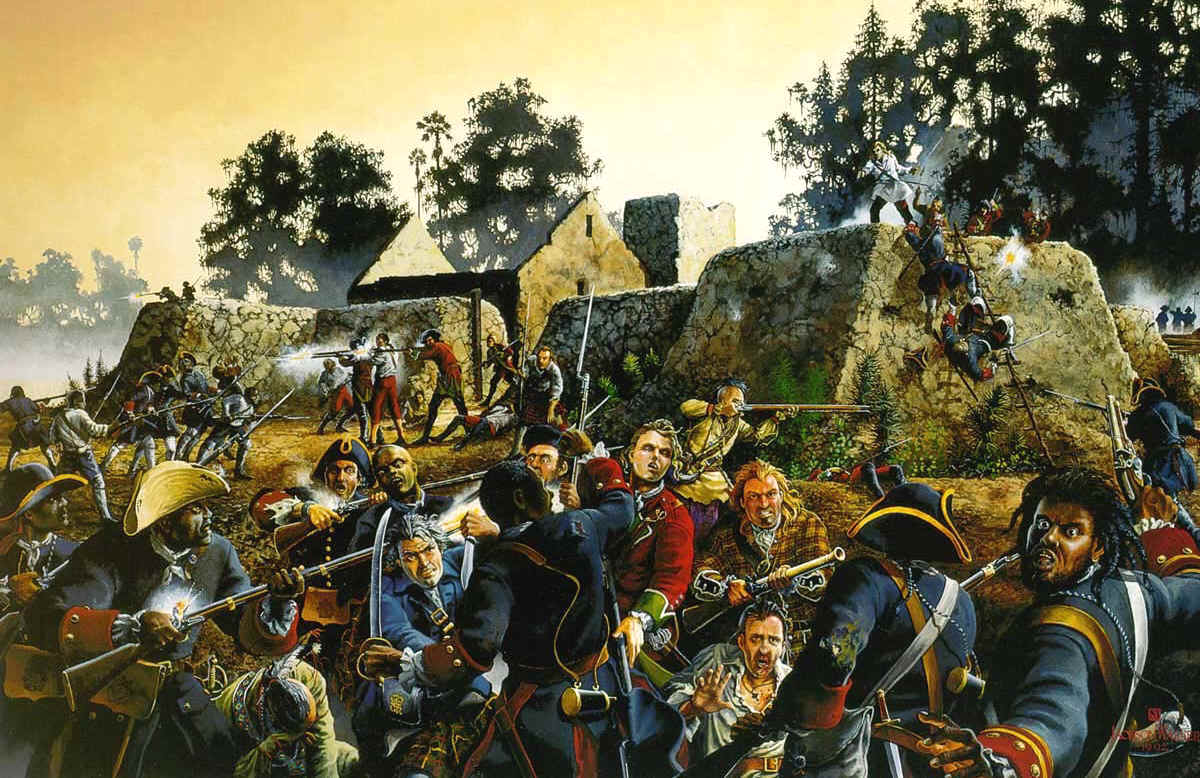 |
| “Assault
on Fort Mose, June 1740”, by Jackson Walker (http://jacksonwalkerstudio.com/),
from the collection of the Florida National Guard. The sixth, annual “Battle of Bloody Mose” Commemoration will be held on Saturday and Sunday, June 20-21, 2015, in St. Augustine, Florida, our nation’s oldest city. Hosted by Florida Living History, Inc., by The Fort Mose Historical Society, and by Fort Mose Historic State Park, this award-winning heritage Event will feature a re-enactment of the “Battle of Bloody Mose,” as well as interpretations and demonstrations of military and civilian life in colonial Spanish Florida during the War of Jenkins’ Ear (1739-1743). |
|
BATTLE . . . ST. AUGUSTINE, FL – May 19, 2015 – In the early morning hours of June 26, 1740, the village of Gracia Real de Santa Teresa de Mose (mo-SAY), the first, legally sanctioned free black settlement in the continental U.S.,became the site of the bloodiest battle in Florida’s part in the War of Jenkins’ Ear. That day saw Florida’s Spanish soldiers, black militia, and native Yamassee auxiliaries locked in a “clash of empires” with invading English and Scottish troops from Georgia, a battle that culminated in desperate, hand-to-hand fighting as Fort Mose, St. Augustine’s northern-most defense, burned around them. The decisive Spanish victory at “Bloody Mose” was one of the factors that ended British Georgia’s invasion of Spanish Florida.On Saturday and Sunday, June 20-21, 2015, Florida Living History, Inc. (FLH – http://floridalivinghistory.org/ ),along with the Fort Mose Historical Society ( www.fortmose.org/ ) and Fort Mose Historic State Park (www.floridastateparks.org/fortmose/ ), will host the sixth, annual Battle of Bloody Mose Commemoration. Now expanded to a two-day heritage Event, the award-winning Battle of Bloody Mose historical re-enactment will take place from 10AM to 3PM at Fort Mose Historic State Park – 15 Fort Mose Trail; St. Augustine, Florida; 32084. White, black, and Native American re-enactors and volunteers from across the state and the Southeastwill participate in this Event, which will include: period musket and artillery drills; period foodways demonstrations; a short, historical theatrical production by FLH’s own Theater with a Mission group; colonial Florida crafts demonstrations; and more! The National Park Service has named the annual Battle of Bloody Mose Commemoration as a Member Program of the National Underground Railroad Network to Freedom ( www.nps.gov/ugrr ). Admission to this heritage Event is free. There is a Museum admission fee of $2.00 per adult; children age 5 and younger are free.Photograph by John Alison, courtesy of Florida Living History, Inc. The Battle of Bloody Mose heritage Event is sponsored by the 501(c)(3) non-profit, educational Florida Living History, Inc., by The Fort Mose Historical Society, and by Fort Mose Historic State Park, in partnership with Viva Florida, the National Park Service/Castillo de San Marcos, the Tennessee State Parks Department, and with the support of volunteers from the Fort Mose Militia, Clann Nan Con, Deep Forest Historical Native American Programs, and other historical re-enactment groups from Georgia, Tennessee, and across the southeastern United States. Financial support for this Event is provided, in part, by the Florida Humanities Council( www.flahum.org/ ), the state affiliate of the National Endowment for the Humanities, and by the continuing generosity of FLH’s donors. Founded in St. Augustine, Florida, in 2009, Florida Living History, Inc. (FLH), is a community based, non-profit 501(c)(3) organization of volunteers dedicated to educating the public about Florida's colonial and territorial history, using living-history programs, demonstrations, and recreated portrayals of significant historical events. FLH's numerous heritage Events are funded solely through corporate/private donations, FLH fund-raising, and state/national grants. No local public funds are utilized. FLH supports educational initiatives that promote a greater understanding and appreciation of Florida's, and America’s, rich and diverse heritage. For more information on Florida Living History, Inc., please contact us via e-mail at info@floridalivinghistory.org or phone us, toll-free, at 1-877-FLA-HIST (1-877-352-4478)! Follow FLH on Facebook – https://www.facebook.com/pages/Florida-Living-History-Inc/258911030802706 ! Florida Living History, Inc., a 501(c)(3) non-profit, educational organization dedicated to the support of living history activities, events, and portrayals related to the history of colonial Florida. www.floridalivinghistory.org/For further information, please see the attached press release or contact us at
info@floridalivinghistory.org / 1-877-FLA-HIST (1-877-352-4478).
|
|
|
|
|
| FREE OUTDOOR SUMMER EVENT Live Bilingual performances, puppeteers, music, dancers and singers. La Plaza @ The Clemente 114 Norfolk Street, New York's Lower East Side June 5th - June 28th - 8PM Fridays, Saturdays and Sundays New York, NY The Society of the Educational Arts, Inc. (Teatro SEA) in collaboration with The Clemente and Teatro LATEA proudly presents the World Premiere of Sueño: A Latino take on Shakespeare's A Midsummer Night's Dream. The event is scheduled to take place in the parking lot behind the Clemente Soto Vélez Cultural & Educational Center, referred to as The Clemente. Performances will be completely FREE to the public. Teatro SEA is "Latinizing" a theatrical classic with the aim of inspiring interest in Shakespeare to young and underserviced audiences. Sueño will feature a diverse group of 20 actors, singers, musicians, dancers, and puppeteers. The show includes over 50 carnival puppets, stilt walkers and masks including"Vejigantes and Cabezudos"... folkloric characters from Puerto Rico, used in festival celebrations. The presentation of Shakespeare's work in Latin America dates back to the 1800s, but rarely do New Yorkers get a chance to see adapted Latino versions of the master's plays. "For over 30 years we have been integrating puppetry with actors and music. Shakespeare's Midsummer Night's Dream/Sueño fairyland realm is a rejuvenated modern musical production...one to be enjoyed by both young and old. We are excited to present Sueño as our first initiative at The Plaza @ The Clemente," claimed Teatro SEA's CEO and Clemente Board Chair Dr. Manuel Morán, who conceptualized the event. "As founders of The Clemente we recognize the importance of holding events that connect with local neighborhoods and that provide access to enriching cultural experiences to often excluded communities... an event like Sueño does exactly that, while equally offering testimony to the enormous Latino talent in our city," added Nelson Landrieu, Executive Director, Teatro LATEA and one of the stars of the production. "Our organizational capacity has increased dramatically. As our neighborhood and the City's demographics changed, so has The Clemente. We thank policy makers and our funders for their investment in such programming, that is critical to healthy communities. This event is also an expression of our vibrant, diverse and multiethnic institution, "added Jan Hanvik, Executive Director, The Clemente. For Creative Team and Cast click here Sueño is suitable for general audiences. Free tickets will be made available starting May 5th, at Teatro SEA's Box Office and The Clemente Cultural Center reception desk at 107 Suffolk Street (between Rivington & Delancey Streets), 7 days a week 3:30 - 11:30 pm. About the Award-Winning Organizers Teatro SEA is one of the nation's premiere Latino theaters for young audiences & bilingual Arts-in Education dedicated to the empowerment and educational advancement of children and young adults. LATEA Theater is an established theater created to support and promote the under-recognized talents and contributions of Latino artist as writers, producers, directors and as creative people. The Clemente is a Puerto Rican/Latino/multicultural multiarts institution in a landmark quality 1897 former PS160, named after Puerto Rican poet, activist, and patriot Clemente Soto Vélez, and is one of the City's largest arts institutions housing subsidized theaters (4), visual artist studios (43) and space for non- profit arts organizations (11). Sponsored in part by: The Jim Henson Foundation, Con Edison, The National Endowment for the Arts and New York City Department of Cultural Affairs and the generous support of the Cultural Immigrant Initiative, New York City Council Members Fernando Cabrera, Margaret Chin, Rafael Espinal, Mathieu Eugene, Julissa Ferreras, Vanessa L. Gibson, and Council Speaker Melissa Mark Viverito. Contacts: www.teatrosea.org SUENO Rehearsal link/teaser A sample of SEA's work.
Photos from previous productions: Click
here: Teatro LATEA - Google Search
Marta
Garcia
Co-Executive Director Teatro LATEA, Inc 107 Suffolk Street
New
York, NY 10002
(212) 529-1948 mgarcia@teatrolatea.com www.teatrolatea.org
|
|
|
|
|
African House in Louisiana, a National Treasure Please go to the Education section in this issue for: Strength through our roots: National Rosenwald Schools Conference, Durham June 17-20, 2015 The History & Current Status of Historically Black Colleges and Universities by Mimi Lozano |
|
African House in Louisiana as one of the newest National Treasures. |
|
African House was built by slaves and is located on the Melrose Plantation, considered one of the finest examples of a Creole plantation in America. It is a truly unique structure, steeped in history, and worthy of saving. http://www.melroseplantation.org/photos/
|
|
|
| H |
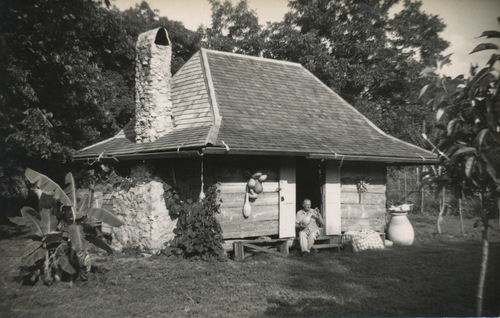 |
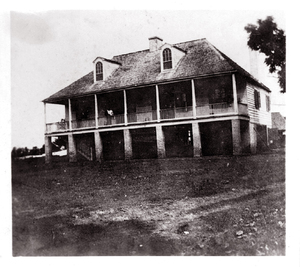 M MMelrose Plantation, also known as Yucca Plantation, is a National Historic Landmark in Natchitoches Parish in north central Louisiana. This is one of the largest plantations in the United States built by and for free blacks. The land was granted to Louis Metoyer, who had the "Big House" built beginning about 1832. He was a son of Marie Therese Coincoin, a former slave who became a wealthy businesswoman in the area, and Claude Thomas Pierre Métoyer. The house was completed in 1833 after Louis' death by his son Jean Baptiste Louis Metoyer. The Metoyers were free people of color for four generations before the American Civil War. In 1974 the National Park Service described the site as follows, based on historical knowledge at the time: "Established in the late 18th century by Marie Therese Coincoin, a former slave who became a wealthy businesswoman, the grounds of Yucca Plantation (now known as Melrose Plantation) contain what may well be the oldest buildings of African design built by Blacks, for the use of Blacks, in the country. The Africa House, a unique, nearly square structure with an umbrella-like roof which extends some 10 feet beyond the exterior walls on all four sides, may be of direct African derivation."[2] http://en.wikipedia.org/wiki/Melrose_Plantation The Association for Preservation of Historic Natchitoches owns the plantation and provides guided tours. Some early twentieth-century traditions associated with the plantation, such as its first owner and origins of architectural style, have been disproved by historic research since the 1970s. An archaeological excavation begun in 2001 has revealed more evidence about the early history of the site, its owners and construction. In 2008, the state included Melrose Plantation among the first 26 sites on the Louisiana African American Heritage Trail. |
|
|
|
|
Book: Junipero Serra:
California, Indians, and the Transformation of a Missionary Margil Sor María Initiative Update by Jerry Lujan ‘By Blood’ Tackles the Untold Legacy of Slave-Owning Cherokees |
Book: Junipero Serra: California, Indians, and the Transformation of a Missionary. By Rose Marie Beebe and Robert M. Senkewicz (Norman: University of Oklahoma Press, 2015) 514 pp. $39.95 hardcover.) Reviewed by Iris Engstrand. |
|
|
|
|
|
Dear
friends and friends of
the Margil Sor María Initiative I
leave for Spain on May 18th to attend the commemoration
of the 350th anniversary of Sor María’s (the Lady in
Blue) passing on May 24th at the Convent of the
Immaculate Conception in Agreda, Spain.
The
final scene of the documentary we have been working on for several
years, “The Needle and the Thread,” will be filmed in at the
convent as two members of the Jumano Apache Tribe (myself included)
and Governor Paul Torres and Tribal Council President, Frank Lujan
of Isleta Pueblo will be presenting very special gifts to Sor María
via the convent. It was
Sor María that brought the Jumanos and Isleta Pueblo in contact
with each other in the early 1600s. Sor
María has already performed three miracles that I am aware of here
in the Southwest, including her figure super imposed on a petro
glyph of the sacred symbol of Creation among Native Americans of the
Southwest, especially the Pueblos, the Holy
Hoop (a circle with a cross
in the center). These
petro-glyphs are in the San Angelo area.
I had it digitized and attaching it to this email.
It is very faint, but you can clearly see her figure behind
the Holy Hoop, if you look carefully, you can see a woman with a
dark cloak, looking down with head slightly tilted to her left.
You can see her eyes, nose and outline of a face.
I will attach several more of the petro –glyphs. A
big gathering will be held in San Angelo, TX on May 23rd &
24th in conjunction with events at Ágreda.
There is a big following of Sor María in San Angelo.
Gabriel Carrasco, Jumano Apache Tribal Chief will be there
and perform a special blessing. This
is all for now. Sincerely, |
|
|
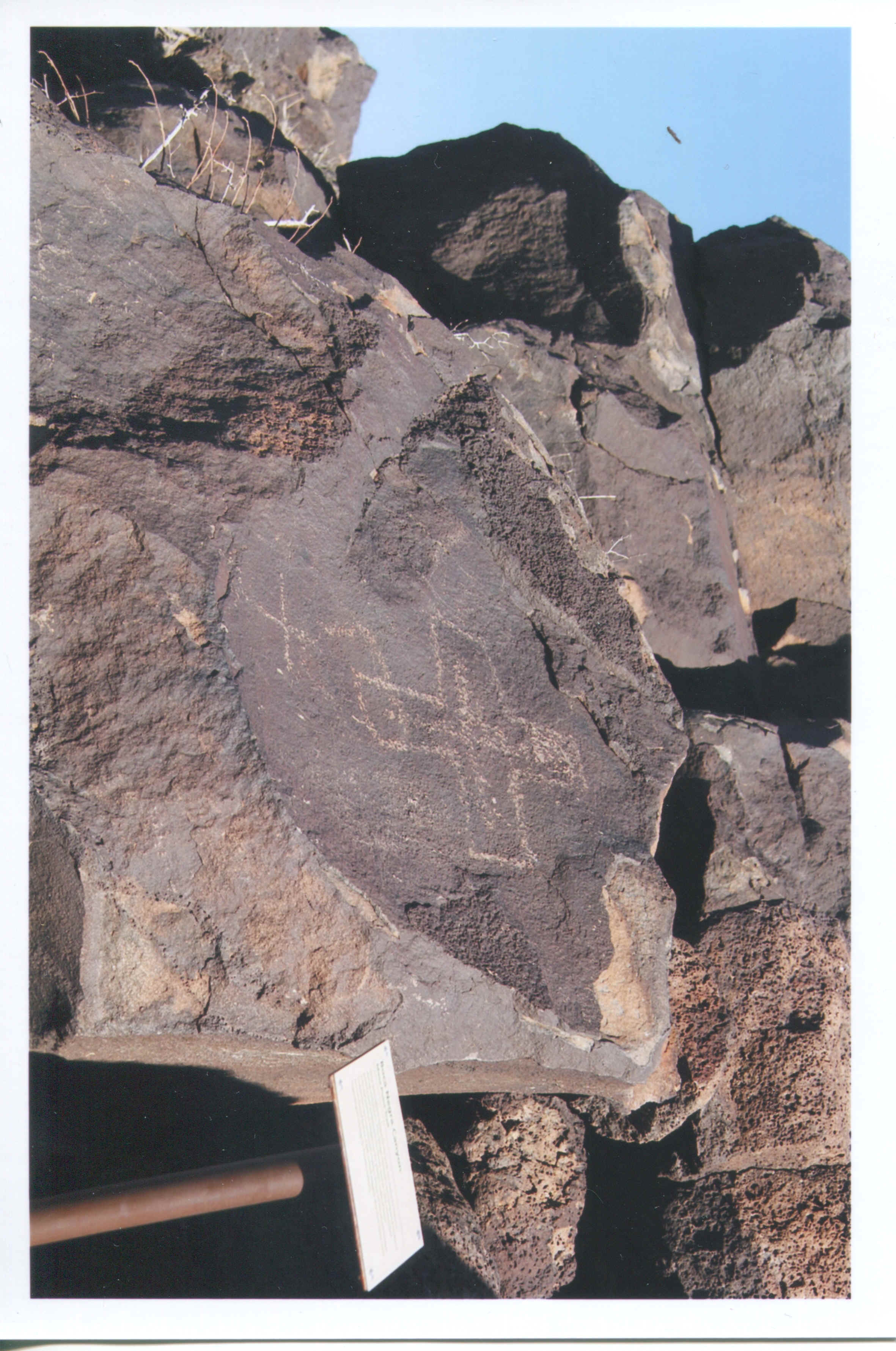 |
|
Apparition of Sor Maria on Petroglyph |
The Cross, a very significant symbol to Native Americans.
|
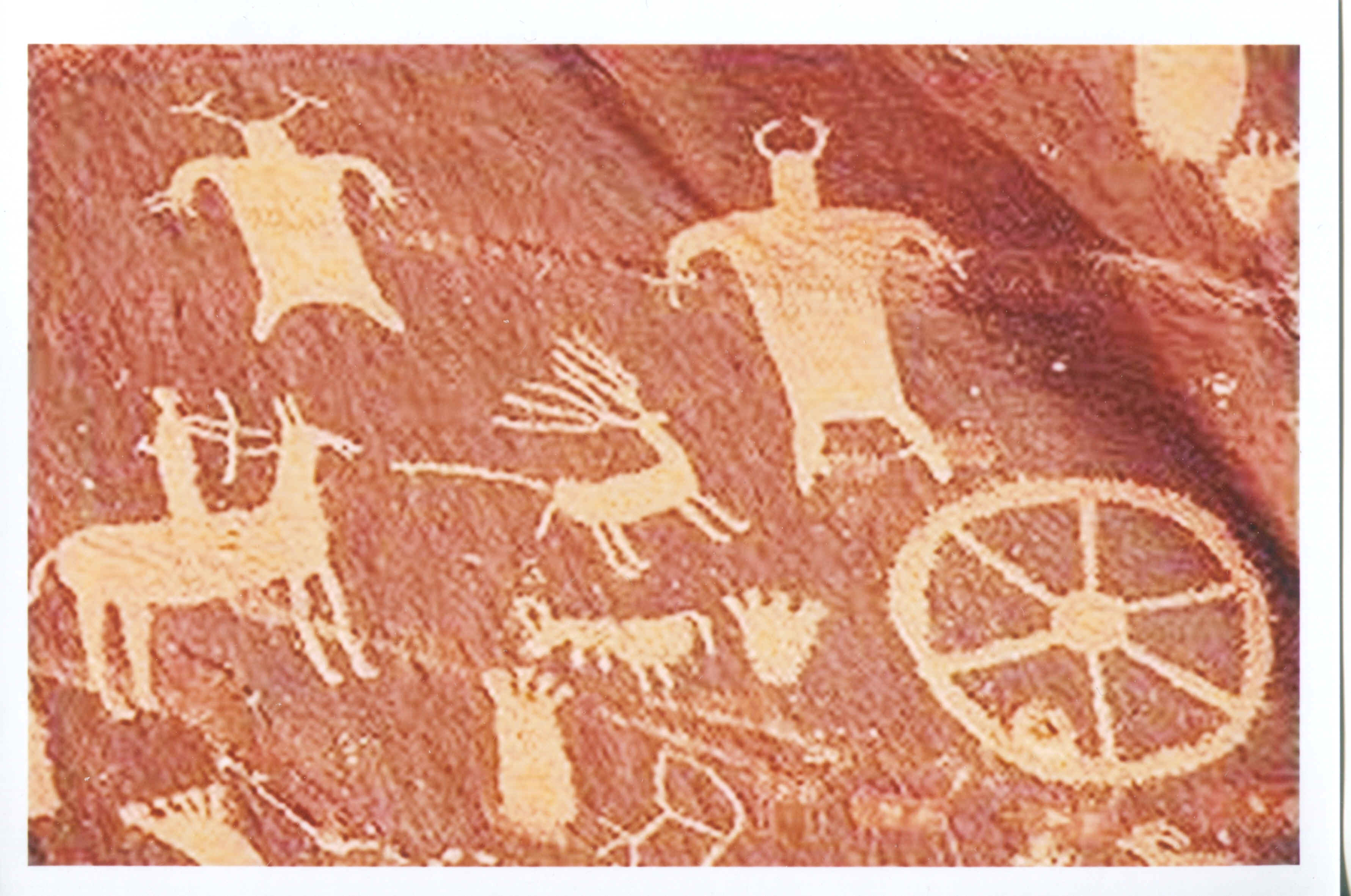
|
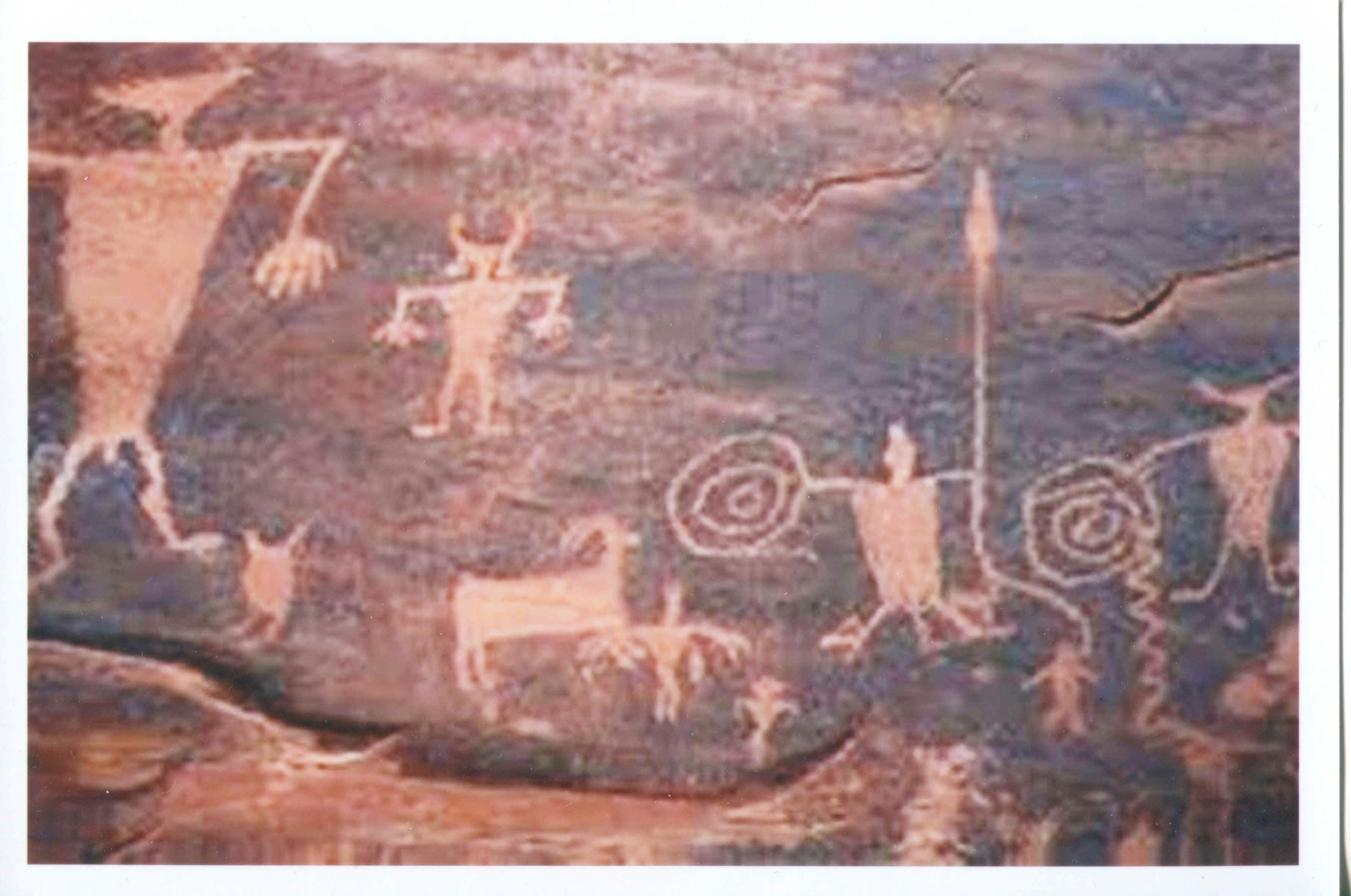 |
| European horse and wheel arrived. | The spiral symbol of cosmos and spiral of
life. |
|
|
It’s an obscure part of antebellum history, but members of no fewer than five Native American tribes participated in chattel slavery. Before they were driven from their lands in what’s now known as the U.S. South, the Cherokee, Chickasaw, Choctaw, Creek and Seminole nations all had members who bought and sold black people as property. In 1838 and 1839, when the U.S. government forced the Cherokee, the largest tribe, to relocate from their land east of the Mississippi River to what is now known as Oklahoma, enslaved black people, black spouses of Natives and mixed children joined them. Some 30 years after this forced march that Natives called the Trail of Tears, the Cherokee Nation was divided by the Civil War. Some supported and even fought for the Confederacy, while others sided with the Union. The Cherokee eventually signed the Treaty of 1866, an agreement with the federal government that granted enslaved black people who were freed voluntarily or by law "all the rights of the Native Cherokee." In addition, "all free colored persons" and their descendants who were living on Cherokee land or set to return in six months received these rights. With a population about 300,000 members, the Cherokee Nation determines its citizenship not by blood quantum, but by whether an ancestor is on what’s called the Dawes Rolls. In those records black Cherokees were designated as Freedmen without consideration of their lineage. As a result, the tribe has always questioned their membership. In a 2007 special election that resulted in a change to the Cherokee constitution, a majority of voters chose to strip some 30,000 Cherokee Freedmen of their tribal citizenship. These Freedmen have lost access to the healthcare, education and housing benefits funded by the billion-dollar Cherokee casino industry. The Cherokee Freedmen are the topic of a new documentary,“By Blood," which is on the festival circuit and due to hit select theaters in August. Colorlines spoke with Marcos Burbery who co-directed the film with Sam Russell.* Below is the interview condensed and edited for clarity. A lot of non-Natives don’t know about this history. How well known is it in the Cherokee Nation itself? My impression is that most people in the Cherokee Nation don’t even know about the Cherokee Freedmen. Many who I interviewed, who didn’t make it into the film, would say, “That’s crazy! We never owned slaves. I don’t even know what the Freedmen are.” So how did the special election to strip them of their citizenship come to be? A very small percentage of the Cherokee Nation, less than 10 percent of the tribe, voted in the special election to kick the Freedmen out. It was mostly very conservative, politically involved [members] of the Cherokee Nation from one of 14 counties in Oklahoma. There’s a lot of history there, and it just so happens that some of the most politically involved Cherokee look really white. There are lots of Cherokee who I’ve come across that appear traditionally Native. From what I’ve seen, they’re the ones who don’t have any involvement in the tribal politics—like, zero. So when critics say the Cherokee Nation’s racist, they’re making generalizations. You do a good job at letting people speak for themselves. For the Freedmen and their supporters, it’s an issue of racial discrimination and equity. For Cherokee Nation leadership, it’s an issue of sovereignty—of the Nation's right to decide how to determine citizenship. How did you approach all of that? It’s easy to get wrapped up in the emotion of the Freedmen’s plight and what they’re going through. But there’s this whole other side to it—and I don’t think the other side is all negative. There’s a huge history behind the Cherokee Nation being pillaged and taken advantaged of all these years. They certainly have a right to [claim] sovereignty. So I tried to stay away from being an advocate and I told everyone I interviewed that I was not there to take sides. I just wanted to do the story justice. What did you set out to accomplish with "By Blood"? I really wanted the film to be something the Cherokee Nation could stand by. It was pretty great and brave of them to allow me to interview their attorney general, Todd Hembree. I never took advantage of that or tried to cut any corners or make him sound like he was saying something that he wasn’t. But having said that, I think [our job] is to connect the dots. And having worked on this since 2011, there’s a part of me that thinks the truth of the matter is that the Freedmen were used as a political wedge issue. There were certain [Cherokee] politicians who wanted to gain control and they saw this as an opportunity to try to inspire people to vote for them. Why is this film important in 2015? I think it’s emblematic of what’s happening around the country. In the last six months or so, we’re seeing manifestations of race as it relates to police brutality, all around the country. We have to understand African-American history and I think part of the reason I’ve been so fascinated with this story is that it’s been excised from our historical narrative. It begs the question: Why? Why is it that everyone I talk to about this film don't know about Native Americans owning slaves? At some point in the film, [former U.S. Rep.] Barney Frank says, “Victims can be perpetrators, too.” It’s important for people to understand that. *Post has been updated since publication for clarity. - See more at: http://portside.org/2015-04-27/%e2%80%98-blood%e2%80%99-tackles-untold-legacy-slave- owning-cherokees#sthash.qO9I8sG2.dpuf Sent by Dorinda Moreno |
|
|
|
|
July
19-21, 2015: 25th Crypto-Jewish Conference Set for Miami, Florida
|
|
July 19-21, 2015
|
| Registration is open for the 25th Anniversary Conference of the Society for Crypto-Judaic Studies, an international academic and cultural secular association devoted to the history of the descendants of Iberian Jews persecuted in Spain and Portugal in the Middle Ages through the 18th century. Many of these were converts to Christianity and fled to the New World, settling in Mexico, the Southwest and various parts of North and South America, hiding their Jewish past. Scholars around the world continue to unearth fascinating documentation on the dispersion of these peoples who, over centuries, assimilated into Catholic communities until their 20th century emergence and growing awareness of Sephardic Jewish ancestry |
 The 2015 conference begins Sunday, July 19 through Tuesday, July 21, at the Double Tree By Hilton Hotel Miami in Miami, Florida at a special conference rate of $109.00 Attendees will enjoy two full days of
presenta- tions by scholars and members of the regional Crypto-Jewish community drawing from Florida, Central and South America, and many other areas. The 2015 conference begins Sunday, July 19 through Tuesday, July 21, at the Double Tree By Hilton Hotel Miami in Miami, Florida at a special conference rate of $109.00 Attendees will enjoy two full days of
presenta- tions by scholars and members of the regional Crypto-Jewish community drawing from Florida, Central and South America, and many other areas. |
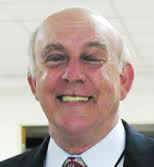 |
Keynote speaker is the celebrated Ainsley Cohen Henriques, Director/Chairman of the Heritage Center Committee of Kingston, Jamaica. |
| H |
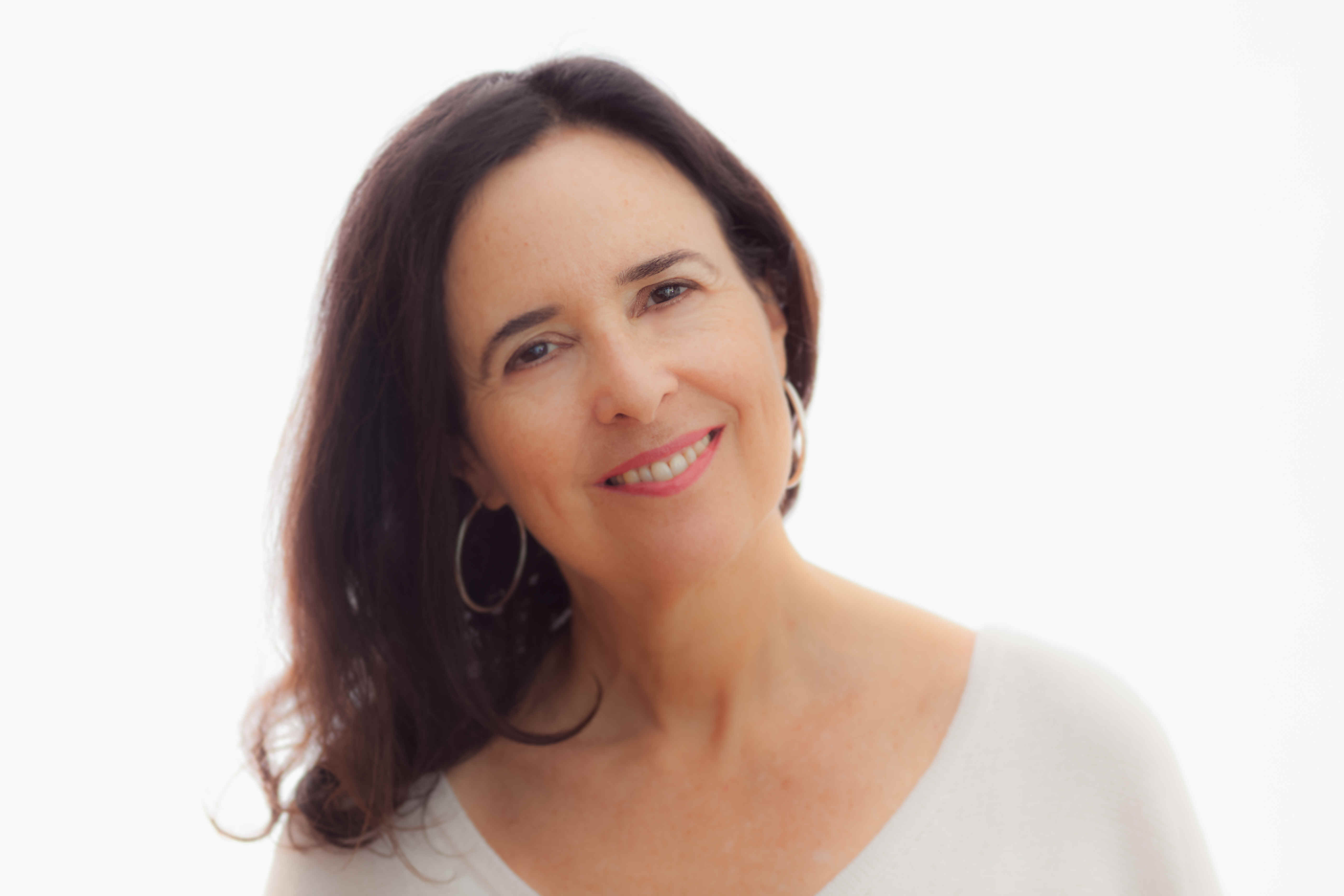 |
Ruth Behar, professor of Anthropology at the University of Michigan, born in Havana, Cuba will speak about the convergence of cultures. Ruth Behar |
| H | |
|
|
Dr.
David A. Wacks from the University of Oregon explores 16th century crypto-Judaism. A genealogy workshop is offered on Sunday from 12:00 until 4:00 pm and features Genie Milgrom, Schelly Talalay Dardashti and Bennet Greenspan. Full registration only $195.00 for all panels and meals; Kosher meals $270.00. For more information and online registration go to www. cryptojews.com . |
| H |
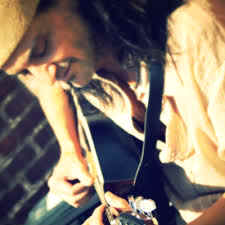 |
Neil Manel Frau-Cortes An arts panel and various arts presentations: Monday noon concert with Neil Manel Frau-Cortes, and a Monday evening musical presentation by Sephardic musician Susana Behar promises add extra value. |
| H |
|
Note: The Society for Crypto-Judaic Studies (SCJS) was founded in 1991 and fosters the research of the historical and contemporary development of crypto-Jews of Iberian origin. It provides a venue for the descendants of crypto-Jews, scholars, and other interested parties to network and discuss pertinent issues. Contact: Corinne Brown Corinnejb@aol.com 303-753-6353 Or Genie Milgrom Hatul72@aol.com Susana Behar |
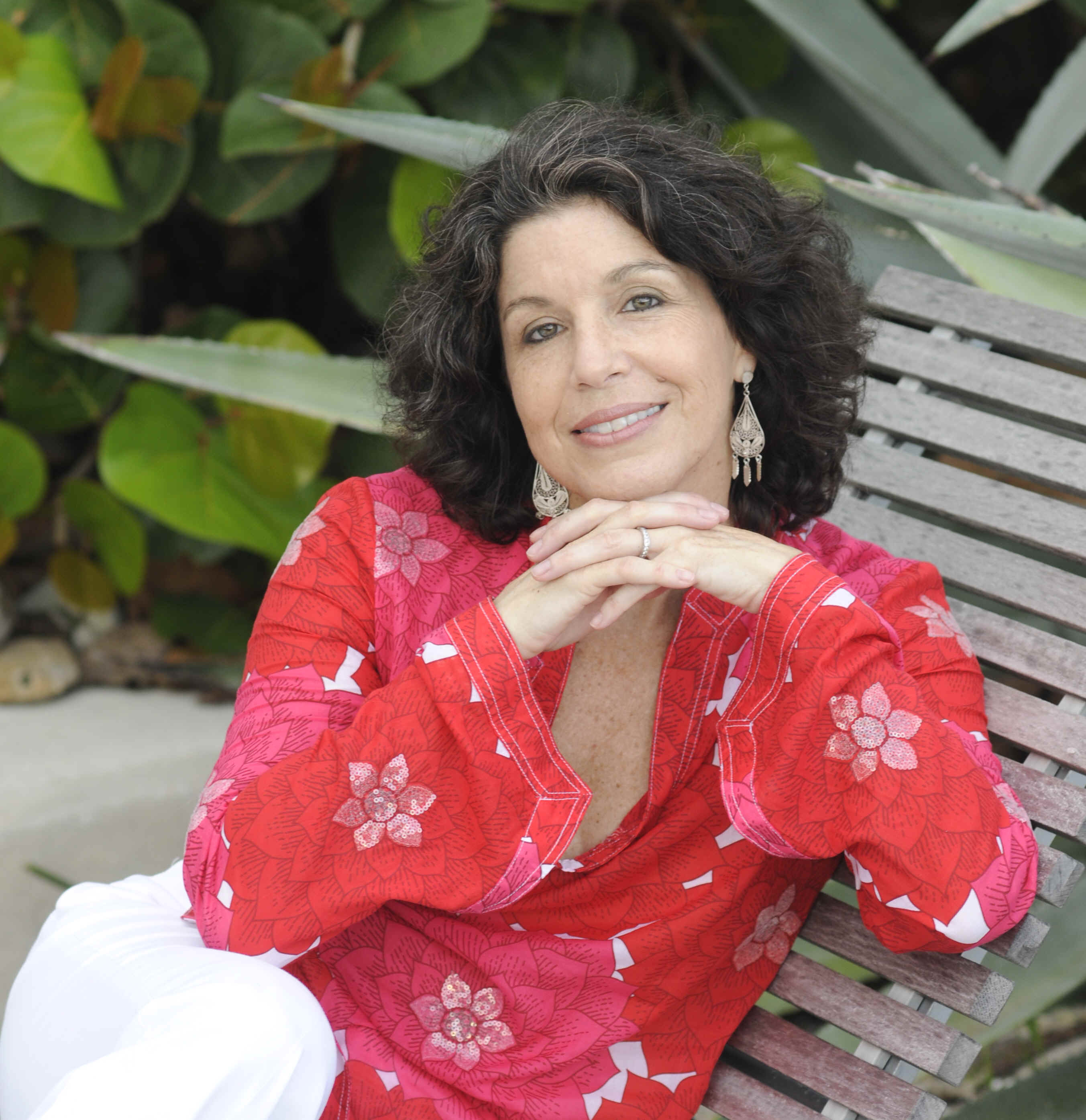 |
|
What happened when an anti-Semite found he was Jewish? |
| H |
|
Csanad Szegedi speaking as a member of Jobbik in 2012
|
|
Three years ago, a Hungarian far-right politician with a strong line in anti-Semitism discovered that he was Jewish. He left his party, and set out on a remarkable personal journey to learn and practise his Jewish faith. He comes across a bit like the American singer Johnny Cash. "Hello, I'm Csanad
Szegedi." And the schoolchildren of the Piarist Secondary School in Szeged hang on every word.
|
|
Hungarian national guard: Members of the Magyar Garda, or Hungarian Guard |
|
Not a man to do things in half-measures, he has now become an Orthodox Jew, has visited Israel, and the concentration camp at Auschwitz which his own grandmother survived. He discovered that his grandmother wore long-sleeved shirts, or a plaster in summer, to cover the tell-tale concentration camp number tattooed on her arm. As his old personality collapsed, Szegedi performed radical surgery on himself. He even set fire to copies of his own biography, I Believe in the Resurrection of the Hungarian Nation. |
| H |
|
|
|
Today he speaks to the students without notes, sometimes striding along the stage, sometimes sitting back in a chair, but keeping their attention with a mixture of confessions, family histories, and jokes. His volte-face seems complete - there are giggles from the girls, awkward squirming from the boys in the audience as he describes his circumcision. Then come the questions. "Did you know any Jews before you discovered your own Jewish roots? How do you react when you hear anti-Semitism expressed today? Were you a practicing Christian before you practiced Judaism? Was it hard to break with your party?" The answers are straightforward. "Anti-Semitism doesn't need Jews, because its based on false premises. It is the projection of one's own fears, and lack of self esteem." He had a Protestant wedding, but was never christened. Every rupture was hard, but he tried to do it peacefully, and state firmly his own mistakes. And also did his duty to point to the extremism in his old party. Later, we meet in a Budapest flat in a popular pedestrian street - one of several he rents out. While once he sold far-right paraphernalia, like T-shirts and flags, he's now moved into real estate, with equal success. It's as though everything he touches turns to gold. What does he think of the new, more moderate direction, imposed on his former party by leader Gabor Vona? I ask. If Vona succeeds, might he even consider rejoining it, this time as a practising Jew, rather than an anti-Semite? Szegedi laughs. "Only the BBC would ask me that question!" "Vona had to turn to the centre. But the party is still full of people who joined it for its radicalism, its nationalism, its extremism. And they don't want anything less now. So there is a limit to how moderate it can become." There is no way back into politics for him, he insists. Still a patriot, he defends his people from the slur of racism. Hungarian people are not anti-Semitic, although there is an anti-Semitic discourse in society, he says. In fact, Budapest is a great place to be a Jew in, he beams - with its kosher restaurants, synagogues, and Jewish shops. You can practice your culture, and practice your faith here. You might get funny looks if you wear a kippah - a traditional Jewish skullcap - but you won't be spat on, or physically threatened as you might be in France or Belgium. "The paradox of Hungarian nationalism," says the man who used to fly its banner, "is that we are proud of our own achievements, but we're not willing to look at those of other peoples. We're afraid their cultures might be as valuable as ours." http://www.bbc.com/news/magazine-32549099 Sent by John Inclan fromgalveston@yahoo.com |
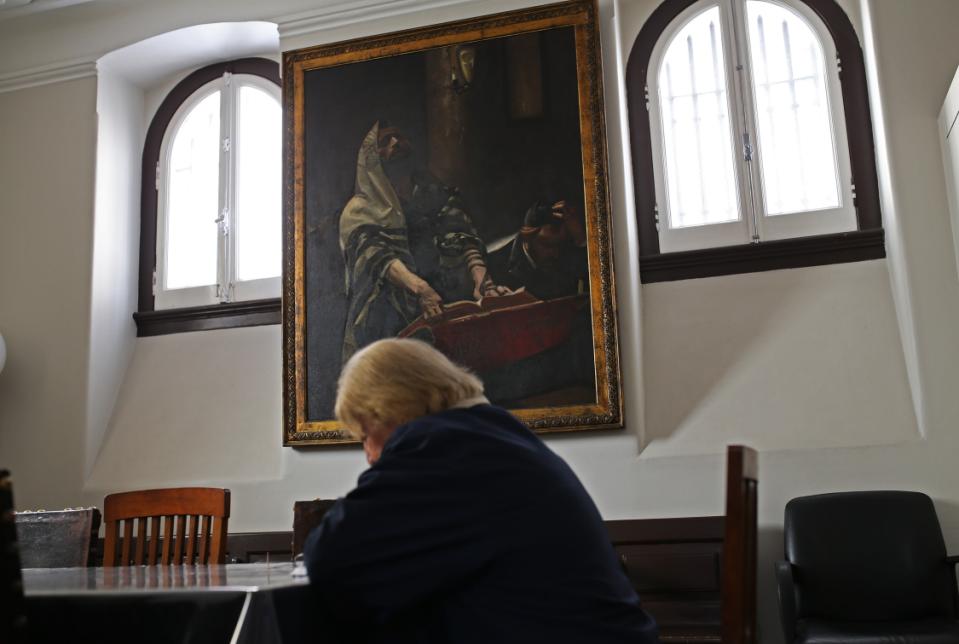 |
Spain Sephardic |
|
In this photo taken on Tuesday, May 5, 2015, a Jewish woman reads a book at the main Jewish synagogue in Lisbon. Portugal enacted in March a law to grant citizenship to descendants of Sephardic Jews exiled during the Inquisition 500 years ago. Spain is about to adopt a similar law but its different requirements have brought criticism. (AP Photo/Francisco Seco) MADRID (AP) — For Alfonso Paredes Henriquez, it was the opportunity not only of a lifetime — but of a half-millennium. The Panamanian real estate developer, a descendant of Sephardic Jews kicked out of Spain five centuries ago, was elated when the country announced it would atone for the Inquisition by granting citizenship to people who can prove lineage from exiled Jews.
Then came a long wait, as Spain's Sephardic Jew
citizenship law took two years to wind its way through Parliament.
Amendments were tacked on that made the application process tougher
and delayed approval for a bill that faced virtually no opposition.
Frustrated, Paredes Henriquez turned instead to
Portugal. The neighboring country had enacted its own law to grant
citizenship to descendants of Sephardic Jews exiled during the
Inquisition, which forced Jews to flee, convert to Catholicism or be
burned at the stake. He submitted his Portuguese citizenship
application in late March.
"Spain came out saying they would make a law but
Portugal did it first and it's easier in Portugal," said Paredes
Henriquez. "Portugal just swooped in."
Spanish lawmakers are finally preparing this month to
approve a law that potentially allows hundreds of thousands, and
possibly millions, of Sephardic Jews around the world a shot at
citizenship, though there are no reliable estimates of how many people
might be eligible.
A Spanish passport means those who get it would be able
to live or work anywhere in the 28-nation European Union, and apply
for citizenship for immediate family members. While some European
nations are experiencing a surge in anti-immigration sentiment, Spain
and Portugal are not, and the laws have not generated opposition.
Go to and view gallery In this photo taken on
Tuesday, May 5, 2015, a nine-branched …
In this photo taken on Tuesday, May 5, 2015, a nine-branched Jewish candelabrum, or Hanukkah Menorah … Many would-be applicants thought the Spanish law, announced in 2013, would carry few requirements beyond thorough vetting of ancestry. That's the case with the Portuguese law, which was proposed after Spain's but went into effect in March 1.
But Spanish lawmakers ended up adding amendments making
the process for Sephardic Jews similar to that faced by permanent
residents seeking citizenship. The hurdles are significant: Sephardic
applicants must learn and be tested in basic Spanish if they don't
speak one of several Jewish languages rooted in Spanish. They also
must pass a current events and culture test about Spain. And they have
to establish a modern-day link to Spain, which can be as simple as
donating to a Spanish charity or as expensive as buying Spanish
property.
Paredes Henriquez — whose Spanish ancestors were
driven into Portugal by the inquisition — predicted the extra steps
would translate into more lost time, money and frustrating red tape.
In Portugal, he only has to prove his family history and that he has
never been convicted of a crime punishable by three or more years in
prison.
"Portugal is being more friendly about the
process," he said. Indeed, the country is currently examining its
first round of applications with decisions expected in a few months.
"There's more willingness to do it, and they're doing it
right."
Spain's Jewish federation has received more than 5,000
requests for information about the Spanish law. For now, would-be
applicants are advised to start gathering family history as evidence,
to consider learning some Spanish and to think about establishing a
link to Spain, said federation president Isaac Querub Caro.
Go to and View gallery In this photo taken on Tuesday,
May 5, 2015, a jewish …
In this photo taken on Tuesday, May 5, 2015, a jewish woman walks past memorials stones at the main … The federation is also warning people the law isn't expected to become open to applicants until October, in order to give enough time to create the Spanish language and citizenship tests and set up a digital application system.
Once the law is in effect, applicants will have a
three-year window to seek citizenship. Querub said the amendments
added to the Spanish law were unexpected, but declined to criticize
them.
The law "has a series of conditions but they do
not take away from the value of the law," he said. "And we
appreciate this generosity of the Spaniards."
Spain's ruling Popular Party has brushed off criticism
of the amendments. In a parliamentary debate last month, Gabriel
Elorriaga, a senator, said that clearer rules were needed for granting
Spanish citizenship to all seekers — not just Sephardic Jews.
But there is one sense that the rules for Sephardic
Jews will be in a privileged class compared with many others seeking
Spanish citizenship: The Sephardic Jews will be allowed to have dual
nationality. Currently, Spain allows double citizenship for only for
applicants from former Spanish colonies, plus Andorra and Portugal.
Go to and View galleryIn this photo taken on Tuesday,
May 5, 2015, Jewish …
In this photo taken on Tuesday, May 5, 2015, Jewish ceremonial objects rest in the Jewish synagogue … In Israel, reaction to the Spanish law entanglements is mixed — even among those who seem to easily meet the requirements.
Take Jose Caro, who can trace his roots to Joseph Ben
Efraim Caro, a revered Jewish scholar believed to have fled the
country in 1492 — the year Spain's monarchy issued decrees ordering
Jews and Muslims in Spain to convert or leave. As a native of Chile,
Caro speaks fluent Spanish and studied Spanish culture and history in
Argentina, where he was raised.
But Caro, a 58-year-old insurance broker, has decided
not to apply because he sees the conditions Spain has imposed as an
affront to his family and its history of expulsion and persecution.
If only Spain's upcoming law were more like Portugal's
he would seek citizenship and a passport "for the honor of my
family."
Caro, who heads a group representing immigrants to
Israel from Latin America, won't apply for Portuguese citizenship
because he considers his ancestors' stay there "just a stop"
in their exile from Spain, their ancestral land. Virtually all of
Portugal's Jews fled to the country from Spain. The Jews who ended up
in Portugal were only there five years until they, too, were ordered
to convert or leave in 1497.
Go to and View galleryIn this photo taken on Tuesday,
May 5, 2015, few Jewish … In this photo taken on
Tuesday, May 5, 2015, few Jewish yarmulkes rest in a bowl at the
entrance of …
Haim Ashkenazi, a 22-year-old university student, said the possibility of getting a Spanish passport was tempting for historical reasons and for the opportunities it could bring. His ancestors left Spain for Turkey and moved to Israel three generations ago. He knows some Spanish.
But that enthusiasm fizzled when Ashkenazi began
researching the conditions for citizenship on behalf of his family. He
realized that proving his family's lineage was more difficult that he
thought. He interviewed his grandmother, looked up archival documents
and only got so far as his grandfather's grandfather. In the end, the
expense of hiring a genealogist, coupled with the cost of trips to
Spain for the citizenship process, proved prohibitive.
Leon Amiras, who heads a group representing
Spanish-speaking immigrants to Israel, said his group unsuccessfully
lobbied 30 Spanish members of parliament to soften some of the
citizenship requirements.
"This is scandalous," said Amiras. "I am
not naive and don't expect Spain to hand out passports without
conditions but there is a limit." He said that beyond costs, the
length of the process could deter elderly Sephardim from pursuing
citizenship.
But 89-year-old Mordechai Ben Abir said he's not
bothered by the extra steps he'll have to take.
Go to and View gallery. In this photo taken on Tuesday,
May 5, 2015, Jewish … In this photo taken on
Tuesday, May 5, 2015, Jewish prayer shawls are stored on a shelf at
the entra …
He completed a doctoral degree at a Barcelona university at age 82, and discovered his family's historic links to Spain. Ben Abir's thesis went back in time through 25 generations to tie him to the Caballero family that fled Spain.
Despite his age, Ben Abir, who was born in Argentina
and moved to Israel in 1955, said he is "going to get a passport
no matter what."
"My
goal is not to have a passport for the honor of having a European
passport," he said. "I want to feel that we returned to
Spain, so it would be clear that we won. That we still exist. That we
live."
http://news.yahoo.com/spain-sephardic-citizenship-plan-hits-snags-unlike-portugal-081444977.html Sent by Juan Marinez marinezj@msu.edu
|
|
|
|
|
|
Mexico registers 9 archaeological zones with UNESCO for special protection |
|
|
Nine archaeological zones in Mexico have been entered into UNESCO's International Register of Cultural Property under Special Protection, the Foreign Relations Secretariat said. The United Nations Educational, Scientific and Cultural Organization, or UNESCO, concluded the international process of registering nine zones that will have the institution's special protection, the secretariat said in a statement. The sites are specifically the pre-Columbian city of Palenque, Chiapas; the pre-Columbian city of Teotihuacan, Mexico state; the archaeological zone of Monte Alban, Oaxaca; the pre-Columbian city of Chichen Itza, Yucatan; and the pre-Columbian city of El Tajin, Veracruz. Also included are the pre-Columbian city of Uxmal and its three villages, Kabah, Labna and Sayil; the archaeological zone of Paquime, Chihuahua; and the ancient Mayan city of Calakmul, Campeche. These archaeological zones will now enjoy safety in times of war under the "special protection" guarantee of the Convention for the Protection of Cultural Property in the Event of Armed Conflict. "That corresponds as much to the intention that Mexicans' cultural heritage will progressively have greater protection as it does to commitments by the Mexican government to impose, promote and implement humanitarian international law," the secretariat said. In late 2013, several institutions including the Foreign Relations Secretariat and the National Anthropology and History Institute, or INAH, began the process of getting the nine archaeological zones enrolled in the registry, which has now been achieved. This registration will contribute, among other things, to the planning of emergency measures in case of natural or man-made disasters, the prevention and mitigation of damages, and the fight against the trafficking of cultural assets. In the coming days the "blue shield" emblem will be placed at each of the zones, a sign of their protection in all possible circumstances.
|
|
|
|||
|
María de la Reforma: New mural in Mexico City Case Study: A Footnote to Remember by Jaime Pacheco Another Spanish Explorer, Juan de Grijalva. Amigos de la Batalla de Monterrey de 1846 por Tte. Corl. Ricardo Palmerín Cordero Reunión Mensual de la Sociedad de Genealogía de Nuevo León, R. Palmerín Cordero Arts of Colonial Mexico, Richard Perry Brief History of Russians in Guadalupe de Valle by Barbara Zaragoza El estado libre y soberano de Nuevo León 1824-2015 Bautismo Señor General de División Don Miguel Negrete Novoa, Tte. Corl. Intdte. Ret. Ricardo R. Palmerín Cordero. Matrimonio de Don Julian de los Reyes y Doña Benita Parada, Tte. Corl. Intdte. Ret. Ricardo R. Palmerín Cordero. Parras y La Laguna, Por Gildardo Contreras Palacios Familias de Boca de Leones by John Inclan Datos sobre Conquistador Antonio de Carvajal por John Inclan Para Mis Hermanos Dragones, Tte. Corl. Intdte. Ret. Ricardo R. Palmerín Cordero |
| H |
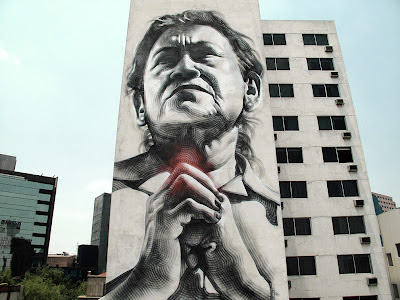 |
María de la Reforma: |
|
|
Letter to: Dorinda Moreno from muralist Jerry Velasquez The last few weeks have been hectic, but here are finally some shots of "María de la Reforma", the mural I painted this month for the All City Canvas public art project in Mexico City. |
||
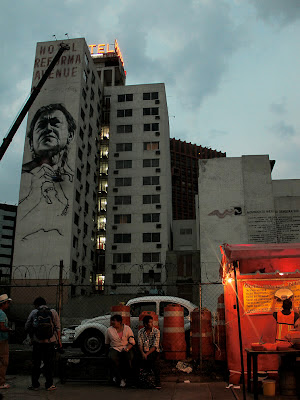 The last few weeks have been hectic, but here are finally some shots of
"María de la Reforma", the mural I painted this month for the All City Canvas public art project in Mexico City. The culture of Mexico and muralism go hand in hand so this was just a natural continuation of a long tradition there. The mural is over ten stories high, located by the Paseo de la Reforma, which is one of the city's largest, most famous thoroughfares. It was an honor for me to paint this there because not too far away on this same street in the IMSS building is one of my favorite murals ever, by the famous Mexican artist Jorge González
Camarena.
The last few weeks have been hectic, but here are finally some shots of
"María de la Reforma", the mural I painted this month for the All City Canvas public art project in Mexico City. The culture of Mexico and muralism go hand in hand so this was just a natural continuation of a long tradition there. The mural is over ten stories high, located by the Paseo de la Reforma, which is one of the city's largest, most famous thoroughfares. It was an honor for me to paint this there because not too far away on this same street in the IMSS building is one of my favorite murals ever, by the famous Mexican artist Jorge González
Camarena.Painting the mural involved a daily battle with the sun, lift problems, breathing constant exhaust smoke, and most especially- painting the entire thing from a little swinging basket that hung from a crane. I could have used a little more time to finish the mural but I'm still proud of how it came out. It was also humbling and overwhelming to see how supportive local people were. The image I painted is based on photos I took of a social activist & poet named María Guardado, who was tortured and left for dead in 1980 by government forces during the civil war in El Salvador. She was one of thousands of civilian victims of that war, during which the US-backed Salvadoran government employed death squads to kill & terrorize everyone from poor farmers to nuns to students. Maria survived and fled the country for Los Angeles, where today she is still a passionate fighter for social justice. Along with other economic and political problems, Mexico has been enduring a bloody six-year drug war which has left at least 50-60,000 people dead so far. In this election year in Mexico, I think many people are hopeful that things will get better. I'd like this mural to be seen as a symbol of hope and strength. Many thanks to Maria Guardado, la familia Celaya y ARTO, Claudia, Andrea, Martin y el resto del equipo ACC, Roberto Shimizu of the incredible MUJAM, Gonzalo de MAMUTT, Arturo & Fifty24MX gallery, John Carr & Eyerie, Kim & Djentrification of course..as well as everyone else that came by to show support Thank you Dorinda for sharing. Take care my friend. |
||
|
|
| Like many Mexican Americans in the United States, I was instilled with the importance of appreciating my genealogical past at an early age. My parents made sure to communicate to me the stories of our family and made me proud to be part of a continuous family chain that has existed in the Americas since the late 1500s. My ancestors come from the present north central Mexican state of Chihuahua and lived in that part of the Western Hemisphere for well over four hundred years. My research has allowed me to document my family's presence there for the past twelve generations. It has been an unbelievable journey researching the history of my family through its documented past, particularly when I sought to locate my seventh great-grandfather Captain Antonio de Villalva's most important and very elusive last will and testament. This would never have been possible if it were not for the Spanish colonial government's obsession with record keeping. For some time I had been trying to find my ancestor's will in the hope that it would shed new light on his very productive life and tie together other details that I had already found. Captain Antonio de Villalva had been one of the founding settlers that arrived at the mining settlement of San Francisco de Cuellar in the early eighteenth century. Most of these early settlers had arrived when the first silver mines were discovered in the area. Mop of the Sfote of Chihuohuo showing the location of some of the towns bordering states. These discoveries drew many settlers to the area where they also established several silver refining haciendas that sprouted along the confluence of the two rivers, Chuviscar and Sacramento. The intersection of these two rivers became the site of the Real de San Francisco de Cuellar. The town continued to grow in size and by 1 October 1718 it was elevated it to the status of a villa, and was then given the official name of the Villa of San Felipe el Real de Chihuahua. In attempting to track down my ancestor, I had learned that upon arriving at San Francisco de Cuellar in the early 1700s, de Villalva had established friendships and business relationships with many of the early founders of the area. The contacts he fostered allowed me to confirm his existence within the town. This provided me with an important navigational tool in the search for a possible testament he might have left behind. With some persistent effort, I managed to locate the proof that he had indeed written one. Antonio's death record, dated 21 April 1723, slates that he was buried with a high mass in the local church of the Villa de San Felipe el Real and that he had left a testament that was to be executed according to his wishes. Finding proof of the existence of this important document was a surprise. But I now knew that he had left a will and I was on the right track. But how and where would I be able to find his actual will? Did it even exist? My next move was to plot a course of action. Just when I had begun to make a concerted effort in trying to gather information on the possible location of his will, and realizing how difficult a task this might become, my luck changed. On many occasions I had discussed my family history with my good friend LeRoy Anthony Reaza, who was a lei-low researcher and a longtime memher of my genealogical association. He also happened to have ancestral ties to those early settlers of the Villa; two of his ancestors had held important positions on the Villa's first town council. By coincidence, I had previously found e-videnee-that confirmed the fact that our ancestors knew each other. As a result of his extensive knowledge of colonial Chihuahua, and his assorted and unique collection of books, the mystery of the location of Captain Antonio de Villalva's testament was finally resolved. The key to my ancestor's will was in a book I borrowed from LeRoy. It was a small, thin paperback with photographs entitled La Catedral de Chihuahua (The Cathedral of Chihuahua), written by Dr. Clara Bargellini. The book chronicled the general history of the Cathedral of Chihuahua from its founding and included detailed analysis of its architectural designs and the many important artifacts that were found within the cathedral. As I looked through it, I happened to come across a brief description of a carved life-size black wooden statue known as the Santo Cristo de Mapimi (Holy Christ of Mapimi). A silver and gold plated crown was permanently mounted on the statue's head and contained three symbolic spikes that represented the Father, Son, and Holy Ghost. The story associated with this Black Christ figure (which is currently displayed on an altarpiece in one of the main chapels in the cathedral) is said to have originated in the late 1600s. The statue was found when a group of Spanish soldiers battled a large group of Salinero Indians that inhabited a dry, desolate area located southeast from the jurisdiction of Chihuahua. The figure came to symbolize the Spaniards' determination and unwavering faith that they believed helped lead them to their victory over the hostile tribal Indians. It was from there that this Black Christ was first brought to the parish of Santa Rosa de Cusihuiriachic in the late 1690s and was subsequently relocated to the first primitive church of San Francisco de Cuellar about 1715. This small church would eventually become the present-day Cathedral of Chihuahua. At the end of the description was a tiny footnote and reference that provided me with the most definitive clue to date. The answer appeared at the bottom of the page in this simple phrase, "In 1723 Antonio de Villalva left in his testament 'to create a silver and gold plated crown of the three potentates for the Christ of Mapimi.' Might possibly be the one he still has. Protocol 1-1-2, ANCh (Notarial Archive of Chihuahua), £91-91v." (translation). At long last and after many exhaustive hours of intensive searching for the proverbial needle in the haystack, I had finally read the exact reference citation I had hoped for. The first thought that came to mind was to find a way to contact the author of the book, Dr. Clara Bargellini. Since she had cited and quoted from my ancestor's testament, I felt there was a chance she may have seen the entire document and might know how to obtain a copy. At this stage, the only task I had in mind was to track her down and hope that she would be the answer to my search. Knowing that Dr. Bargellini had published several books, I went to the Internet and executed multiple searches to find an e-mail address where I might be able to contact her. After several unsuccessful attempts, I finally managed to find her contact information. The front page of the Testament of Captain Antonio de Villalva Dr. Clara Bargellini is at present a professor at the Institute of Aesthetic Research at the National Autonomous University of Mexico. She has written various books and articles on the colonial art and history of Northern Mexico. Having found her e-mail address, I was excited to think that I might actually be able to contact her. I knew that my letter would have to capture her attention immediately; otherwise there was a chance she would disregard it since she didn't know who I was. While writing my letter one late afternoon and including every relevant bit of detail in an attempt to attract her interest, I never imagined that by the following morning I would have a response from her. Her e-mail was enthusiastic and included everything that I was seeking. She expressed her surprise at having received an e-mail from an individual in Los Angeles who had ties to a specifically referenced footnote she had published fifteen years earlier. She knew how much it meant to me to be able to obtain a copy of my ancestor's will and assured me that she would do everything possible to help me. She wrote, "I don't want to get your hopes up too much, but I may actually have a copy of it. I did the Chihuahua book quite a few years ago, as you-know, but I have kept documents and notes. I will need to go through them, of course, so it may not be too quick. But I shall make an effort to look for it. If I do not have it, I am sure I can help you get it." At long last, it seemed that I would be achieving the goal I had set out to fulfill. As luck would have it, I did not have to wait long for her reply. Slightly more than one week later, she wrote to me and stated that she had a complete copy of Captain Antonio de Villalva's testament dated 31 March 1723. After fifteen years of collecting dust in one of her many archival boxes, it would once again surface onto the stage of the new millennium. Dr. Bargellini offered to enlarge it for easier readability and to send it to me via FedEx within the week. I was on cloud nine and in complete astonishment. Sure enough, within a week of receiving that memorable e-mail, I had her FedEx package in hand with its all-important contents— my seventh great-grandfather Captain Antonio de Villalva's testament! It is a thorough document comprising more than thirty pages of invaluable information concerning his family, religious devotion, funeral rites, property, and business relationships. It has also afforded me the opportunity to dispel as well as confirm some of the many theories I had proposed concerning my ancestor's rewarding life. Family ancestral documents such as testaments are often rare and very difficult to locate. Finding and obtaining a copy of a much desired and obscure record is the ultimate gift that anyone can expect to receive when every single piece of the investigative puzzle is finally put in place. It is quite an extraordinary and momentous event to be able to view and read a signed document that pertained to an ancestor who died nearly three hundred years ago. Jaime Pacheco, a native of East Los Angeles, California, is an independent genealogical researcher and historian specializing in colonial Northern Mexico. He has written an article concerning the historic connections between Chihuahua and New Mexico included in this issue. Click. The article was sent by LeRoy Anthony Reaza, Jaime Pacheco's co-author of an article published in New Mexico Historical Review, Vol. 80, Number 1, Winter 2005. "The Municipal Origens of la Villa de San Felipe el Real de Chihuahua, 1718-1725" . The article won the Eleanor B. Adams Prize for best
article on Spanish Borderlands history published by NMRH. Durwood
Ball, Editor and Associate Professor of the New Mexico Historical Review
in describing the Municipal article wrote in a letter to Mr. Reaza:
"Your piece is one of the best Spanish Borderlands monographs that
the NMHR has published during my editorial
tenure." |
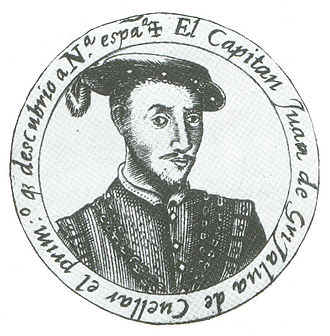 |
Another Spanish Explorer, Juan de Grijalva. Juan de Grijalva. Grijalva started his exploration in 1518 and Cortez started in 1519. Grijalva, was the first European to set foot on Mexican soil, and he made this statement to Bernal Diaz, who wrote down in his journal, this land reminds me of my home in Spain, so he called it Nueva Espana. that is where Nueva Espana comes from. |
| Juan de Grijalva. Grijalva started his exploration in 1518 and Cortez started in 1519. Grijalva, was the first European to set foot on Mexican soil, and he made this statement to Bernal Diaz, who wrote down in his journal, this land reminds me of my home in Spain, so he called it Nueva Espana. that is where Nueva Espana comes from. Juan de Grijalva (born around 1489 in Cuéllar, Crown of Castille - 21 January 1527 in Nicaragua) was a Spanish conquistador, and relation of Diego Velázquez.[1]:27 He went to Hispaniola in 1508 and to Cuba in 1511. Grijalva was one of the earliest to explore the shores of Mexico. According to Hernán Cortés, 170 people went with him, but according to Pedro Mártir, there were 300 people. The main pilot was Antón de Alaminos, the other pilots were Juan Álvarez (also known as el Manquillo), Pedro Camacho de Triana, and Grijalva. Other members included Francisco de Montejo, Pedro de Alvarado, Juan Díaz, Francisco Peñalosa, Alonso de Ávila,[1]:50 Alonso Hernández, Julianillo, Melchorejo, and Antonio Villafaña. They embarked in the port of Matanzas, Cuba, with four ships in April 1518. After rounding the Guaniguanico in Cuba, Grijalva sailed along the Mexican coast, discovered Cozumel, and arrived on 1 May at the Tabasco region in southern Mexico. The Río Grijalva in Mexico was named after him. He was also the first Spaniard to encounter Moctezuma II's delegation. One of the natives joined them, being baptized as Francisco, and became an interpreter on Cortes' expedition. Bernal Díaz del Castillo wrote about the travels of Juan de Grijalva in his book.[1]:27-43,82 Hernan Cortes stayed at Juan's home in Trinidad, Cuba, at the start of his Mexican expedition. He recruited men there, including the five Alvarado brothers.[1]:49-50 He died in Nicaragua on 21 January 1527. Juan de Grijalva (born around 1489 in Cuéllar, Crown of Castille - 21 January 1527 in Nicaragua) was a Spanish conquistador, and relation of Diego Velázquez.[1]:27 He went to Hispaniola in 1508 and to Cuba in 1511. Grijalva was one of the earliest to explore the shores of Mexico. According to Hernán Cortés, 170 people went with him, but according to Pedro Mártir, there were 300 people. The main pilot was Antón de Alaminos, the other pilots were Juan Álvarez (also known as el Manquillo), Pedro Camacho de Triana, and Grijalva. Other members included Francisco de Montejo, Pedro de Alvarado, Juan Díaz, Francisco Peñalosa, Alonso de Ávila,[1]:50 Alonso Hernández, Julianillo, Melchorejo, and Antonio Villafaña. They embarked in the port of Matanzas, Cuba, with four ships in April 1518. After rounding the Guaniguanico in Cuba, Grijalva sailed along the Mexican coast, discovered Cozumel, and arrived on 1 May at the Tabasco region in southern Mexico. The Río Grijalva in Mexico was named after him. He was also the first Spaniard to encounter Moctezuma II's delegation. One of the natives joined them, being baptized as Francisco, and became an interpreter on Cortes' expedition. Bernal Díaz del Castillo wrote about the travels of Juan de Grijalva in his book.[1]:27-43,82 Hernan Cortes stayed at Juan's home in Trinidad, Cuba, at the start of his Mexican expedition. He recruited men there, including the five Alvarado brothers.[1]:49-50 He died in Nicaragua on 21 January 1527. http://en.wikipedia.org/wiki/File:JuanGrijalvaCuellar.jpg Eddie Grijalva |
|
|
Athena Review Vol. 2, no. 1 Mimi, a little more information on "The Grijalva Expedition (1518)"Impressed
with accounts of the lands of Yucatán and Campeche discovered by Córdoba,
another expedition was outfitted in the following year by Diego Velásquez,
governor of Cuba. Early in 1518, four ships and 300 men were placed
under the command of Velasquez's nephew Juan de Grijalva, with Pedro
de Alvarado, Alfonso d'Avila, and Francisco Montejo serving as
captains. Veterans from the Córdoba voyage of the preceding year
included Anton de Alaminos as the chief pilot, with the Mayans
Melchior and Julian brought as translators. Bernal Díaz, who gives an account of Grijalva's voyage, claims he went along as an ensign, although this is doubted by Wagner (1945) based on careful examination of the documents. Another, often better source is the Itinerario de l'Armata by Grijalva's chaplain, Juan Díaz, from which much of the following summary is taken (Fuentes 1963.) Landa gives only a brief account of the Grijalva expedition, and Gómara, besides listing trade goods from Potanchán and San Juan de Ulúa, devotes only a few sentences to the events of the voyage itself.
[Fig.1: Route of the voyage of Grijalva in 1518 (Athena Review).]
Grijalva's
ships then crossed to the Yucatán mainland (at first thought to be an
island), and saw three large towns with stone houses and large towers
(probably around Xcaret). Sailing south, in two days they passed two
more large villages, one a "town or village so large, that
Seville could not be better or larger; and in it could be seen a very
large tower..." Resisting urgings by Indian inhabitants to land,
they came to a beach near the highest tower yet seen. The town was
perhaps the large Late Postclassic center Tulúm, and the
"highest tower" may have been the Castillo
at Tulúm. Grijalva's
fleet then sailed up past Isla Mujeres, where Juan Díaz mentions
"a very beautiful tower on a point said to be inhabited by women
who live without men." Rounding Cabo Catoche, they saw
"other towers apparently with towns, but the captain would not
permit us to land." Campeche:
Continuing southwest toward Campeche, Juan Díaz says they skirted
the coast "looking for the cacique Lázaro, a chieftan who showed
much respect to Francisco Fernandez" [Córdoba]. They landed near
Campeche at the river Lagartos, but failing (like Córdoba before
them) to find water there, they continued on to the town of Lázarus,
and anchored two miles from a tower on the shore. Two hundred men were
sent ashore with arquebuses (early matchlock rifles), and there a
tense parley ensued between Grijalva and a squadron of armed Mayans.
After Grijalva's party persisted another day, the Maya attacked,
shooting many arrows at the Spaniards. Despite confusion in the
Spanish ranks, the Maya were driven back to their town, with forty
Spaniards wounded and one killed. Landa says the battle site was named
Puerto de Mala Pelea (Harbor of the bad fight). Laguna
de Terminos: Grijalva's fleet then continued southwest, bypassing
Champotón after Córdoba's misfortunes the previous year, and seeing
"many mountains and many Indian barks, called canoes, with which
they thought to make war on us." Keeping attackers off with
cannon shots, Grijalva continued and on the last day of May, 1518,
discovered Laguna de Terminos, which they named Puerto Deseada. As the
surroundings were pleasing, with many edible fish called jurel, they
remained several days to repair their ships. Initially thought to be a
great river separating Yucatán from the rest of Mexico, the Laguna de
Terminos is actually a large bay or lagoon with three entrance
channels. At its west end was the large port Xicalango where Putún,
or Chontal, Maya, merchants had established themselves since the
Terminal Classic (ca. AD 850-1000). During Postclassic times Xicalango
was a politically neutral port of trade, visited by Aztec pochteca or
professional merchants. Postclassic Putún traders went as far south
as Central America in sea-going canoes 15 m long and 2 m wide,
similar to that described at Bonacca by Columbus
in 1502.
[Fig.2: Route of Grijalva along the Gulf Coast inYucatán and Mexico (Athena Review).] The
next day, the cacique came up in a canoe and asked Grijalva to come
aboard, where they dressed him in a golden crown, breastplate and
bracelets. In turn, as Juan Diaz reports, the Spaniards dressed the
chieftan in "a green velvet doublet, pink hose, a frock,
espadrilles, and a velvet cap." Bernal Diaz adds the Maya cacique
sent gifts of food (maize, zapotes, and roast fish and fowls) spread
on mats called petates, and gold diadems, necklaces, and jewels shaped
like ducks and lizards. Here, according to Bernal, Mayans said there
was more gold to the west in "Colua" and "México,"
names now first heard by the Spaniards. Veracruz
and Isla de Sacrificios: The fleet continued west along the coast
of lands called Coluacan or Oloa (Ulúa) by local Totonac peoples.
Just north of San Juan de Ulúa, the Spaniards explored a large gulf
with three islands, one named Isla de los Sacrificios from evidence of
Aztec-like human sacrifice. Here Juan Díaz reports finding several
large buildings of lime and sand, one described as a tower (or
pyramid) with the statue of a jaguar on the top. A hole was cut in
this statue's head for perfumes or incense, and nearby was a stone
basin full of blood they estimated to be a week old. Two posts nearby
were draped in textiles which concealed a plume-headed idol facing the
statue. One of the Spaniards also found two alabaster jars filled with
offerings of stones including jadeite. Like Martyr, Bernal Díaz
describes a grisly scene of " two masonry houses very well built,
each house with steps leading up to some altars, and on these altars
were idols with evil looking bodies, and that very night five Indians
had been sacrificed before them; their chests had been cut open, and
their arms and thighs had been cut off, and the walls were covered
with blood... At all this we stood greatly amazed, and gave the island
the name of the Isla de Sacrificios, and it is so marked on the
charts." Meanwhile,
Francisco de Montejo was sent to greet Indians seen on the mainland at
the Río Banderas, the first Aztecs encountered by the Spaniards. They
gave Montejo fine colored mantles, but he communicated that he desired
gold. They returned the next day and gave Grijalva many cotton mantles
"finely painted in diverse colors," pipes filled with
perfumes such as liquidambar and benjamin, and gifts of food. When
Grijalva said that they were only interested in gold, "they
brought gold cast in bars, and the captain told them to bring more of
this. On the following day they came with a beautiful gold mask, a
figurine of a man with a half mask of gold, and a crown of gold beads
with jewels and stones of various colors." The Spaniards remained
in their company for ten days before departing to continue north along
the coast. Rio Panuco: Grijalva's ships reached as far northwest as the mouth of the Río Pánuco (today, near Tampico) before turning back towards Cuba. Fine artifacts obained here included Aztec turquoise mosaic work. An inventory in Gómara of items received by Grijalva in trade includes 20 gold fishhooks, many gold earrings and necklaces, two suits of armor (one of thin gold, the other of gilded wood), a golden "dog's head" (probably a jaguar) covered with little stones, plus a cloak and shields made of feathers. On their return down the coast, the Spaniards stopped to repair their ships at a harbor called San Antonio, at the mouth of the Río Tonalá. Several of the ships were further damaged at a sandbar here, including the flagship which sprung a leak when it grounded on shoals. After two weeks, they resumed their course. Reaching Champotón, they landed to avenge the defeat of Córdoba, but departed before attacking. After another stop in Campeche to take on supplies, the ships returned to Cuba.
|
|
|
| Arts of Colonial Mexico. In May we continue with an illustrated review of the Augustinian monastery at Epazoyucan and its extraordinary murals. And we hope to add pages on colonial Jalisco, Michoacán and a couple more from Yucatán later in the month. Richard Perry rperry@west.net Arts of Colonial Mexico http://colonialmexico.blogspot.com |
|
The Russians In Mexico |
Vestiges still exist of Los Rusos or the Russian immigrants who came to the Guadalupe Valley in 1905. You’ll find a small house, a restaurant and a winery at Familia Samarin about 15 miles north-east of Ensenada. This vanished ethnic enclave once brimmed with a wide street where inhabitants spoke Russian and wheat fields stretched through the valley. This fascinating community disappeared within a generation, but several websites exist that document their life in Northern Baja. A Brief History of Russians in Guadalupe de Valle The Molokans (milk drinkers) came from Kars, Russia (now Turkey) and they were not Orthodox Christians like most Russians. They followed a strict diet of abstaining from pork, tobacco and alcohol. They also interpreted the term “spiritual milk” noted in the Bible to mean they should receive much of their nourishment from milk and dairy products. They were pacifists who refused to be conscripted into the military under Tsar Nicholas II., so they searched for a better environment where they could practice their religious views. They first moved to Los Angeles, but the urban setting didn’t suit them. Land prices also were expensive. In 1905 Mexican President Porfirio Diaz sold the group 13,000 acres of land in Guadalupe Valley. The 105 Russian families laid out a town the way they had at home with equal partitioned lots along a broad street. Their whitewashed adobe and wood homes had steep-pitched wooden (some thatched) roofs. They planted grains and vegetables, olives and grapes and raised geese and bees for honey. They baked Russian bread and drank tea or “chai” made in the samovar. The Molokans dressed simply with women covering their heads with homemade “kosinkas” or shawls, and the bearded men wore high-collared shirts called “rubajas,” which had drawstrings around the waist. In 1938 Mexican President Cardenas designated lands for the peasants and 3,000 Mexicans surrounded Guadalupe. The town was renamed Francisco Zarco and many Russians left at that time. Others stayed and have assimilated into the culture. By 2004 writer Greg Nieman reported that there were only about 20 pure Russians left in the Guadalupe Valley. There were another 240 who were half-Russian and half-Mexican. Familia Samarin Visit today and you won’t see much more than this property with a Russian restaurant that touts pizza. Their homemade cheeses are delicious. They sell red wines, which are excellent if you are an enthusiast. You can also receive a tour of the museum, which was built in the adobe Mexican style, but included a shingled inclined roof. The museum has objects from the kitchen that shows how they used to cook, pictures and other memorabilia. There’s also a Russian cemetery a little up the ways. If you’re an armchair traveler, you can spend hours at the Molokane website learning all about the Russians in Mexico. There’s also a book you can read for free on-line by George Mohoff called The Russian Colony of Guadalupe Molokans in Mexico. Sent by Dorinda Moreno pueblosenmovimientonorte@gmail.com |
|
|
|
Historiadores y Genealogistas.
El viernes 24 de Abril, los AMIGOS DE LA BATALLA DE MONTERREY DE 1846
asistimos a la 4a. Reunión Histórica en el Museo Metropolitano de la
Cd. de Monterrey, N.L.
Saludos afectuosos para todos los asistentes a esta memorable reunión
en recuerdo de los Héroes de nuestra Patria.
|
Expositores.
Dr. Pablo Ramos. " LA BATALLA DE CERRO GORDO "
Tte. Corl. Intdte. Ret. Ricardo R. Palmerín Cordero. "
TTE. CORL.
DON FRANCISCO R. MORENO. EL HÉROE OLVIDADO. COMANDANTE DE LAS COMPAÑÍAS
DE SAN PATRICIO ".
|
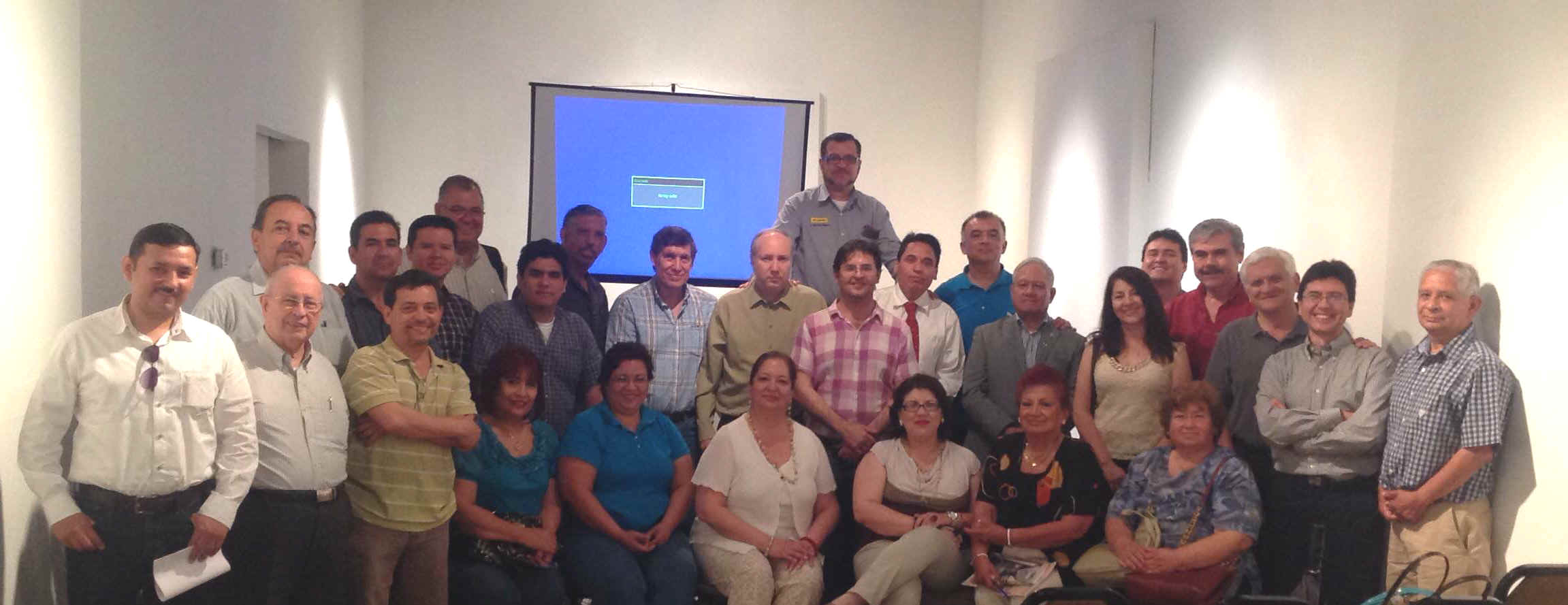
|
Estimadas amigas y amigos.
Envío unas fotos tomadas durante la Reunión Mensual de la Sociedad de Genealogía de Nuevo León en el Centro Cultural Plaza Fátima de San Pedro Garza García,N.L.
Conferencia presentada." El Comandante de las
Compañías de San Patricio Tte. Corl. Don Francisco R. Moreno
". investigación efectuada por el Tte. Corl. Intdte.
Ret. Ricardo Raúl Palmerín Cordero.
Saludos afectuosos. Tte. Corl. Palmerín
|
|
|
|
miércoles, 6 de mayo de 2015
|
|
Antonio Guerrero Aguilar escribe... Soy un trota sueños y buscador de símbolos y signos. Nací en Santa Catarina, N.L. en 1965. Fui becario del Centro de Escritores de Nuevo León en 1993. Cronista de Santa Catarina desde 1987. En De Solares y Resolanas, quiero expresar, manifestar, escribir mis reflexiones, vivencias y apreciaciones sobre lo que veo, de donde vivo, me muevo y existo. Mi divisa: "Alios vidi ventos aliasque procelas" (Virgilio) que traducida significa: "Otras tempestades y vientos he visto pasar".
El 7 de mayo de 1824, quedó formalmente establecido el estado libre y
soberano de Nuevo León, como parte federativa de los Estados Unidos
Mexicanos. Por eso conviene hacer un recuento histórico en torno al
origen y significado del estado del cual somos y en el cual vivimos.
Todo ello para replantear el sentido que tenemos los nuevoleoneses
como proyecto de conformar un estado de la unión y definir qué es lo
que queremos lograr como nuevoleoneses en el futuro.
El nombre de nuestra entidad es Nuevo León. Este procede del nombre
original del Nuevo Reino de León que Luis Carvajal y de la Cueva logró
a través de las capitulaciones otorgadas por el Rey Felipe II el 31
de mayo de 1579. La nueva provincia o reino perteneciente al
virreinato de la Nueva España, recibió su nombre en honor a la
provincia española de León, antigua colonia militar que los romanos
llamaron “Legio Septima Gemina”, una de las tres legiones que
protegían el norte de la península ibérica. Durante el medioevo, el
nombre se acortó en “Legión” para luego quedar en León.
Entonces el león quedó como símbolo del reino, mismo que aparece
también como uno de los símbolos de Castilla. El nombre también
hace referencia totémica a las cualidades del león: fuerte, atrevido;
es el rey de los animales. Y para recordar ese origen, en el escudo
oficial de Nuevo León aparece precisamente el león rampante y
coronado, majestuoso dispuesto a la lucha y a la defensa.
El septentrión novohispano estuvo conformado en la época colonial
por las provincias o reinos de Sonora, Sinaloa, las Californias, la
Nueva Vizcaya que abarcaba Durango, Chihuahua y Nuevo México y la
parte norte del actual estado de Zacatecas y todo la parte sur de
Coahuila correspondientes a Saltillo y Parras, la provincia de
Coahuila que abarcaba desde el centro del estado hasta el río Medina
al norte, Texas que llegaba hasta los límites con la Louisiana, el
Nuevo Reino de León y el Nuevo Santander cuyos límites se extendían
hasta el río Nueces al norte. Todas ellas dependían en lo
administrativo a la capital del virreinato, en lo jurídico a la Real
Audiencia de Guadalajara y en lo religioso a la diócesis de
Guadalajara.
Dada la imposibilidad de atender adecuadamente a todas las provincias
del norte de la Nueva España, en 1776 establecieron un sistema
administrativo que recibieron el nombre de Provincias Internas, para
lo cual eligieron a Arizpe en Sonora como su capital. Pero tal medida
no fue aceptada por el resto de los territorios, pues alegaron su
lejanía con respecto a otros puntos, lo cual dio lugar a que se
crearan dos provincias en 1787; las de Oriente y las de Occidente.
Como en ese tiempo se formó el sistema de intendencias, las
Provincias Internas de Oriente quedaron sujetas a la Intendencia de
San Luis Potosí.
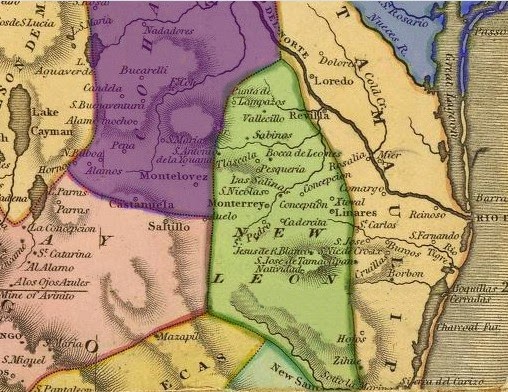 El
27 de julio de 1787, Saltillo y Parras fueron segregados de la Nueva
Vizcaya para incorporarlas a la de Coahuila. Es cuando comienza una
rivalidad entre la tradicional capital de Coahuila, la villa de
Santiago de la Monclova con la Villa de Santiago de Saltillo, pues ésta
también tenía los suficientes méritos como para convertirse en la
capital de la provincia. Apenas unos años antes habían creado el
obispado del Nuevo Reino de León, dejando en Linares la sede
episcopal, considerada el corazón geográfico de la región noreste. El
27 de julio de 1787, Saltillo y Parras fueron segregados de la Nueva
Vizcaya para incorporarlas a la de Coahuila. Es cuando comienza una
rivalidad entre la tradicional capital de Coahuila, la villa de
Santiago de la Monclova con la Villa de Santiago de Saltillo, pues ésta
también tenía los suficientes méritos como para convertirse en la
capital de la provincia. Apenas unos años antes habían creado el
obispado del Nuevo Reino de León, dejando en Linares la sede
episcopal, considerada el corazón geográfico de la región noreste.
La lejanía con la capital del virreinato, hizo que los lazos económicos,
políticos, sociales y religiosos de los cuatro estados se estrecharan
más. Incluso la región fue representada en 1812 al constituirse las
Cortes de Cádiz en España, que tenían la intención de buscar la
libertad del rey Fernando VII y echar a los franceses que se habían
apoderado de la península ibérica. Por parte del Nuevo Reino de León
asistió el canónigo Juan José de la Garza y por Coahuila y Texas,
el padre Miguel Ramos Arizpe.
También en 1814, el padre Morelos convocó a la formación de una
constitución en Apatzingán. Como nadie acudió por Nuevo León,
Morelos se proclamó representante por el Nuevo Reino de León. En ese
entonces había seis diputaciones establecidas en la Nueva España,
una de ellas con sede en Monterrey con diputados de las cuatro
provincias Internas de Oriente: el Nuevo Reino de León, Coahuila,
Texas y el Nuevo Santander.
México se proclamó república en 1824. En el Congreso General
Constituyente había dos fracciones encabezadas, una por Miguel Ramos
Arizpe que pugnaba porque México se convirtiera en un sistema federal
y la del padre Mier que buscaba un sistema intermedio entre el régimen
centralista y el federalista.
En el primer congreso constituyente había la esperanza de que las
Provincias Internas de Oriente se convirtieran en un estado. Pretendían
asegurar la continuidad política y administrativa que ya se tenían
con las diputaciones provinciales. Incluso había un nombre para ello:
el Estado Interno de Oriente. Pero de nueva cuenta la rivalidad de
Ramos Arizpe y del padre Mier se trasladó a sus lugares de origen;
Ramos Arizpe quería que Saltillo fuera la capital mientras fray
Servando Teresa de Mier quería que lo fuera Monterrey. En este
periodo salió a relucir el deseo autonomista de cada una de las
regiones. Por ejemplo, Ramos Arizpe ya había logrado que la
comandancia militar de las Provincias Internas de Oriente se
trasladara a Saltillo.
Pero Tamaulipas no aceptó su inclusión y solo se quedaron Coahuila,
Texas y Nuevo León dentro de ese proyecto. Precisamente el Nuevo
Santander fue quien rompió con esa balanza: mientras Saltillo y
Monterrey movían sus influencias para determinar cual de las dos sería
la sede de la nueva entidad, los de Tamaulipas ya mantenían cierto
control político dentro de su territorio. De hecho, los de Tamaulipas
contaban con una diputación provincial desde 1822, aprovechando que
había buenas relaciones con Iturbide y ya para 1823, dicho congreso
se constituyó en Junta Suprema de Gobierno.
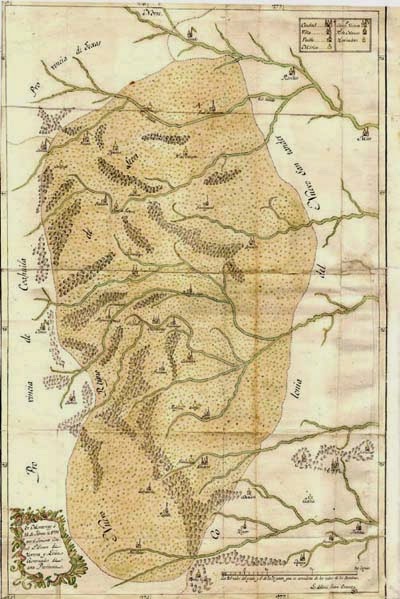 A
fines de enero de 1824, el Congreso Constituyente culminó la redacción
del Acta Constitutiva de la Federación que fue firmada por las nuevas
entidades federativas, entre las cuales ya figuraba el estado de
Tamaulipas. Se le puso ese nombre en honor a las serranías costeras,
haciendo alusión al pueblo que el misionero Andrés de Olmos
estableció en el siglo XVI. El 7 de mayo de 1824 Nuevo León no aceptó
formar parte del proyecto del Estado Interno de Oriente y así surgió
como Estado Libre y Soberano de Nuevo León y Texas junto con Coahuila
como un solo Estado. A
fines de enero de 1824, el Congreso Constituyente culminó la redacción
del Acta Constitutiva de la Federación que fue firmada por las nuevas
entidades federativas, entre las cuales ya figuraba el estado de
Tamaulipas. Se le puso ese nombre en honor a las serranías costeras,
haciendo alusión al pueblo que el misionero Andrés de Olmos
estableció en el siglo XVI. El 7 de mayo de 1824 Nuevo León no aceptó
formar parte del proyecto del Estado Interno de Oriente y así surgió
como Estado Libre y Soberano de Nuevo León y Texas junto con Coahuila
como un solo Estado.
¡Felicidades al estado libre y soberano de Nuevo León! Publicadas por Antonio Guerrero Aguilar
|
|
Bautismo Señor General de División Don Miguel Negrete Novoa |
|
Envío a Uds. la imagen del registro del bautismo
efectuado el día 8 de Mayo de 1825 del Señor General de División
Don Miguel Negrete Novoa, originario de Tepeaca, Pue.; concurrió a la
Batalla de las Cumbres de Acultzingo, Héroe de la Batalla del 5 de
Mayo de 1862.
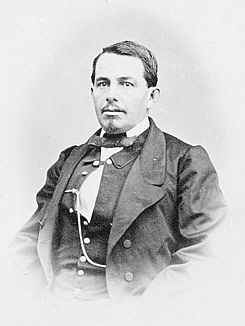 Combatió
contra los Norteamericanos durante la guerra de Intervención
1846-1848, en la Revolución de Ayutla para derrocar a Don Antonio López
de Santa Anna, en la Guerra de Reforma combatió de parte del Partido
Conservador, su frase " Yo tengo Patria antes que Partido "
perteneciendo al partido Liberal combatió contra los Franceses y
Conservadores. Fué Gobernador del Estado de Puebla y Ministro de
Guerra en el Gobierno de Don Benito Juárez 1864-1865. Combatió
contra los Norteamericanos durante la guerra de Intervención
1846-1848, en la Revolución de Ayutla para derrocar a Don Antonio López
de Santa Anna, en la Guerra de Reforma combatió de parte del Partido
Conservador, su frase " Yo tengo Patria antes que Partido "
perteneciendo al partido Liberal combatió contra los Franceses y
Conservadores. Fué Gobernador del Estado de Puebla y Ministro de
Guerra en el Gobierno de Don Benito Juárez 1864-1865.
Fuentes. Family Search. Iglesia de Jesucristo de los
Santos de
los últimos Días. Márgen izq. Jose Miguel de esta ciudad.
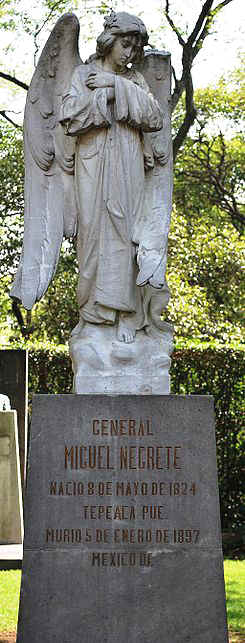 " En esta Parroquia de Tepeaca, á ocho de Mayo de mil ochocientos veinticinco: yo Dn. Franc°. Perez Teniente de Cura bautize solemnemente puse oleo y crisma á Jose Miguel Pascual Franc°. hijo legitimo de Dn. Cayetano Negrete y de Da. Aparicia Novoa; fueron sus padrinos Don José Santiso y Da. Agustina Cacho, á quienes advertí su obligacion de enseñar la Doctrina Cristiana á su haijado y el parentesco espiritual que en primer grado contraen con el y en segundo con sus Padres, y lo firmé. Franc° Perez. " Nota. En el Sepulcro de la Rotonda de las personas Ilustres está escrito como fecha de su nacimiento el año de 1824, es un error fué en el año de 1825.
Investigó y localizó el registro.
Tte. Corl. Intdte. Ret. Ricardo R. Palmerín Cordero.
duardos43@hotmail.com
Miembro de Sociedad Genealógica y de Historia
Familiar
de México y de la Sociedad de Genealogía de Nuevo León.
|
|
|
|
Matrimonio del Señor Gobernador del Estado de San Luis
Potosí
Don Julian de los Reyes y Doña Benita Parada. |
|
Genealogistas e Historiadores. Envío la imagen del registro eclesiástico del matrimonio del Señor Gobernador del Estado de San Luis Potosí Don Julian de los Reyes y Doña Benita Parada. Fuentes. Family Search. Iglesia de Jesucristo de los Santos de los últimos Días.
|
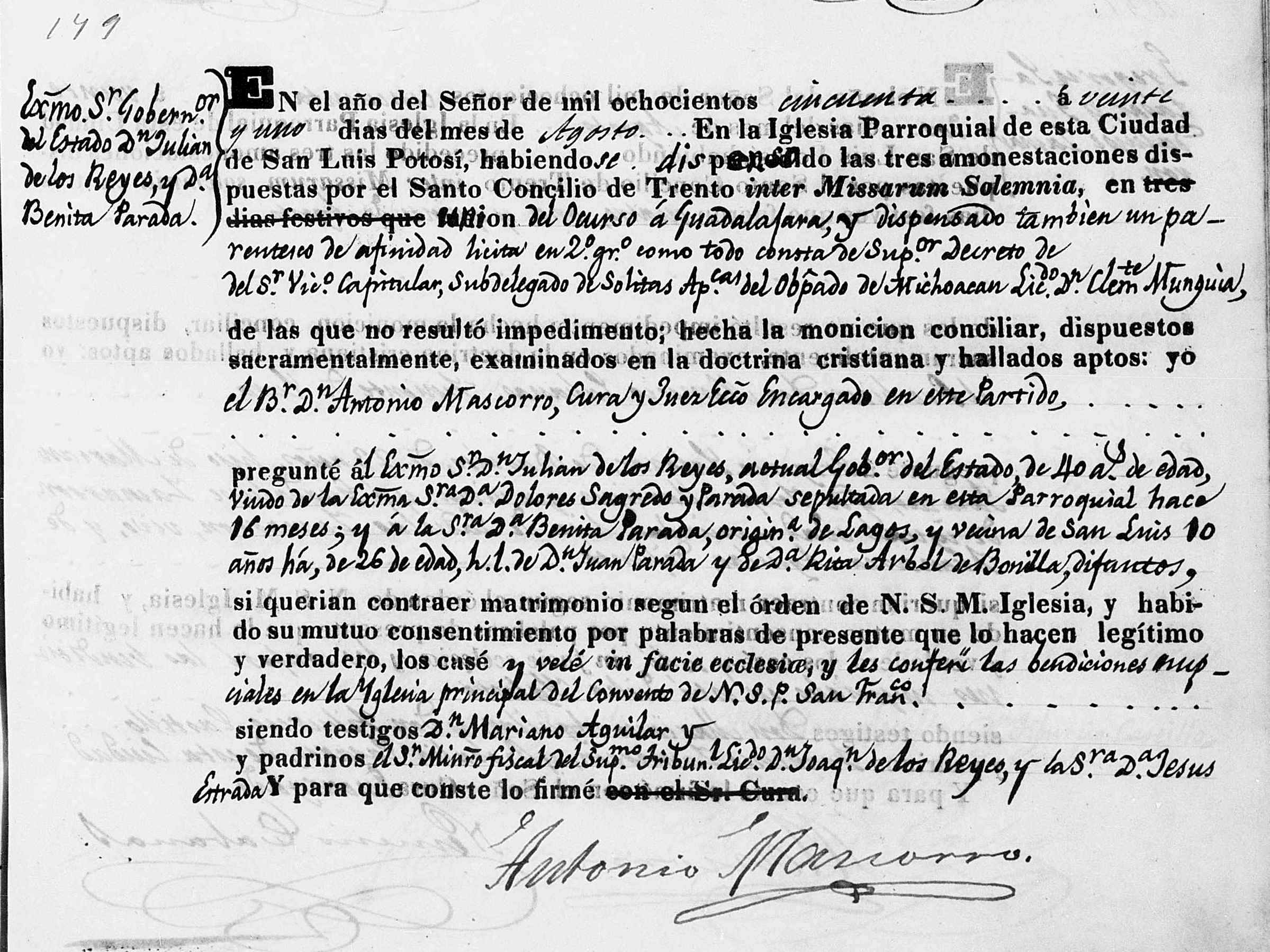 |
|
Exmo. Sr. Gobernador del Estado D. Julian de los Reyes,
y Da. Benita Parada.
En el año del Señor de mil ochocientos cincuenta... á veinte y uno días del mes de Agosto .. En la Iglesia Parroquial de esta Ciudad de San Luis Potosí, habiendose dispensado las tres amonestaciones dispuestas por el Santo Concilio de Trento inter Missarum Solemnia del Ocurso á Guadalajara, y dispensado tambien un parentesco de afinidad licita en 2°, grado como todo consta de Superior Decreto de del Sr. Vicario Capitular, Subdelegado de Solitas Apcas. del Obpdo. de Michoacan Licdo. Dr. Clemente Munguía, de las que no resultó impedimento; hecha la monicion conciliar, dispuestos sacramentalmente, examinados en la doctrina cristiana y hallados aptos: yo el Br. Antonio Mascorro, Cura y Juez Ecco. Encargado en este partido..... pregunté al Exmo. Sr. Dn. Julian de los Reyes, actual Gobor. del Estado, de 40 años de edad, viudo de la Exma. Sra. Da. Dolores Sagredo y Parada sepultada en esta Parroquial hace 16 meses; y á la Sra. Da. Benita Parada, originaria de Lagos, y vecina de San Luis 10 años há. de 26 de edad, h.l. de Dn. Juan Parada y de Da. Rita Arbol de Bonilla, difuntos, si querian contraer matrimonio segun el órden de N.S.M. Iglesia, y habido su mutuo consentimiento por palabras de presente que lo hacen legítimo y verdadero, los casé y velé in facie eclesia, y les conferí las bendiciones nupciales en la Yglesia principal del Convento de N.S.P. San Franc°..... siento testigos Dn. Mariano Aguilar y padrinos el Sr. Ministro Fiscal del Supremo Tribunal Licdo. D. Joaquin de los Reyes, y la Sra. Da. Jesus Estrada. Y para que conste lo firmé. Antonio Mascorro.
Investigó: Tte. Corl. Intdte. Ret. Ricardo R. Palmerín
Cordero.
Miembro de la Sociedad Genealógica y de Historia
Familiar de México y de la Sociedad de Genealogía de Nuevo León.
|
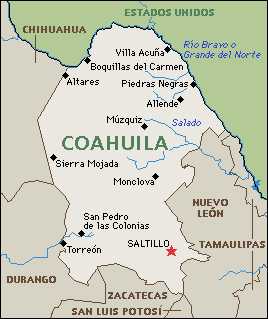 |
Parras y La Laguna
|
La Región de Parras y la Laguna, forma una comprensión situada en el sur, suroeste del estado de Coahuila y el noreste del de Durango, cuyo origen como tal, se remonta hacia finales del siglo XVI. La primera noticia que se tiene de la región de la Laguna, como se le conoció en sus inicios en los documentos jesuitas, sus creadores y conformadores, procede del año de 1591, la cual quedó registrada en una carta que el padre Visitador Diego de Avellaneda envió al padre Superior General Claudio de Acuaviva, con residencia en Roma, en donde le comentó la conveniencia de incursionar desde la residencia en Zacatecas, en la región de la Laguna, en donde había “una inmensa mies de indios infieles” que eran pacíficos. Sin embargo, al contrario de la anterior opinión, en mayo de 1592 hubo otro informe del entonces Padre Provincial Esteban Páez al Padre General, en el que se consideró la inconveniencia de misionar en la Laguna. El padre Páez, se basó en un reporte del padre Gonzalo de Tapia, que había sido enviado a la región de la Laguna con el fin de considerar la posibilidad o no de que los jesuitas evangelizaran dicha región. Al Provincial y al padre Tapia “les pareció que lo de la Laguna y todo lo de por allá era trabajo perdido”. Una tercera opinión al respecto la expresó alguno de los Padres Martín Peláez o Nicolás de Arnaya, de que “los indígenas de la región de la Laguna tenían mucha necesidad de ser evangelizados y observó que los naturales mostraban buena disposición de recibir el Evangelio”. Con las referencias anteriores, fue entre los años de 1592-1593, cuando el Padre Provincial Esteban Páez, tramitó ante el monarca español Felipe II, la autorización para poder atender a la Laguna. En abril de 1594, dicho monarca envió a la Casa de Contratación de Sevilla, la cual controlaba en lo absoluto lo relativo a los viajes marítimos que se hiciesen de España a tierras Novohispanas y viceversa, la autorización en la que se permitía al padre Pedro de Morales para que los jesuitas pasaran a Topia, Sinaloa y la Laguna. Sin embargo el Padre Provincial había decidido desde 1593, que los jesuitas atendieran la Laguna en ese año. Fue en el año de 1594, cuando se dieron las primeras incursiones de los misioneros jesuitas a la región de la Laguna, la cual podía ser atendida desde las residencias de Zacatecas o de Guadiana (Durango); fue de ésta última de donde partieron los primeros sacerdotes que vinieron a hacer su labor evangelizadora en la citada región. Para septiembre de ese año, ya habían salido de Guadiana y operaban en la Laguna, los padres Gerónimo Ramírez, Martín Peláez y Juan Agustín de Espinoza, poco después se les agregó el padre Nicolás Rodríguez. A partir de ese año las incursiones de los sacerdotes jesuitas a la región de la Laguna se incrementaron, sin haber establecido un puesto fijo de residencia, aún no localizaban el sitio ideal para hacerlo, iban y venían de Guadiana. En enero de 1595, el virrey Luis de Velazco, otorgó a dos misioneros jesuitas en la Laguna 650 pesos a cada uno, para que los utilizaran en la compra de los menesteres que necesitasen en su apostolado, tales como cálices, misales, libros, vestuario, vinajeras, caballos y para el sueldo de los guías indígenas. Así anduvieron los padre los dos primeros años de 1594 a 1596. En este último, asistían la misión en la Laguna, los padres: Francisco Gutiérrez de 37 años, Gerónimo Ramírez de igual edad, Pedro Segovia de 33 y Juan Agustín de 28, además del Hermano Juan de la Carrera; para principios de ese 1597 ya se les había asignado un nuevo colaborador en la persona de Bartolomé de Hermosa. En el trascurso de 1596 y 1597, dichos sacerdotes, hicieron sus primeras incursiones al valle de las Parras, en donde “…halló el padre Juan Agustín… lo que podía ser para juntar en modo de pueblo un gran golpe de gente, así de las sierras como de la laguna, es este valle muy fértil y abundante de agua que bajaba de las faldas de una de las más altas sierras de toda esta comarca, le riegan con gran abundancia y la tierra de suyo produce muchas parras y uvas silvestres… Aquí hizo pie el padre Juan Agustín y sin otra ayuda de costa ni bolsa que la de un pobre religioso para el mejor gasto que necesariamente había de tener semejante empresa…” La fundación de Parras fue la obra culminante de las incursiones jesuitas, en la región de La Laguna, en donde el padre Juan Agustín fue el principal protagonista para llevar a cabo aquella loable tarea. Para ello convocó a gente de la laguna, de las serranías comarcanas y del valle de las Parras, quienes en conjunto formaron un gran pueblo. Con las limosnas de algunos españoles de la región logró comprar algunos bueyes y arados “… y repartiéndoles la tierra se les enseñó a cultivar… dándoles cada día de comer y a veces sirviéndoles de cocinero… Tanta era la barbaridad de la gente y tanta la caridad del padre, que después los indios se aficionaron al maíz que aquel año cogieron de sus milpas, y se asentaron mas de propósito y el número de gente fue creciendo…” Aquella región a la que en primera instancia de le denominó como de La Laguna, a partir de la fundación del pueblo de Santa María de las Parras, la misión tomo el nombre de Parras y La Laguna; por ser dicho pueblo el principal asiento de los jesuitas en la mencionada región, allí establecieron Casa Residencia, y fue el punto de partida para las futuras misiones evangelizadores que realizaron los jesuitas por la región de la misma Parras y la región de la Laguna. Al parejo de Parras, los jesuitas habían fundado otra gran misión denominada de San Pedro de la Laguna, sin los alcances de la de Parras y que al dejarla los jesuitas en el año de 1641, pasó al clero secular y desapareció hacia el año de 1682, ante la falta de atención de los sacerdotes en turno y del constante acoso de los indios Cabezas y Tobosos. La Misión de Parras y La Laguna, abarcaba todo lo que es el valle de las Parras y al poniente hasta la región de Mapimí y San Juan de Casta, en el estado de Durango. En lo político a dicha región se le denominaba jurisdicción del Valle de las Parras, la Laguna y Río de las Nazas, o bien de la Laguna, Parras y Río de las Nazas y su titular era un Justicia Mayor, puesto, que siempre era ejercido por individuos de origen español, ultramarino. Esta región, como una unidad política, con un origen común, formó parte de la provincia de la Nueva Vizcaya, hasta el período de 1785-1787, tiempo en que se separó, a los municipios del hoy estado de Coahuila de los de Durango para pasar a formar parte, los primeros de la provincia de Coahuila y los segundos siguieron perteneciendo a la de la Nueva Vizcaya. Con la desaparición de las provincias, después de la Independencia, los municipios continuaron separados, unos pertenecientes a Coahuila y otros al estado de Durango. Actualmente a dicha región se le ha denominado Comarca Lagunera y sigue conformada por los municipios de Coahuila y Durango, que por siempre la han integrado y que a pesar de dicha separación, siguen conservado aquella identidad que los caracterizó desde su conformación como una región de las más ricas y prósperas del México Norteño. Los temas que trataremos en este sitio, son con el fin de rescatar algunos trozos de nuestra Región de Parras y la Laguna, muy rica en anécdotas referentes a personas, hechos y lugares que se dieron y existieron por acá, a través de más de cuatrocientos años que nos anteceden, en los sitios denominados, Parras, San Pedro, Viesca, Matamoros, Torreón, Gómez Palacio, Lerdo y Mapimí, entre otros lugares de esta región. Sent by Benicio Samuel Sanchez |
|
|
Boca de Leones |
|
Capitan Jose de Urrutia cc 2) Rosa Flores-de-Valdez
Su hija
Anna-Maria-Gertrudis-Josephina de Urrutia cc Antonio-Nicolas de
Trevino-Gutierrez
Su hija
Maria-Leonarda de Trevino-Urrutia se caso en Boca de Leones
(Enero 09,
1777) con Jose-Gabriel Villarreal-Gonzalez
Su hija
Maria-Ursula-Salome Villarreal-Trevino se caso en Boca de Leones
(November 26, 1802) con Jose-Manuel Flores-de-Valdez-Gonzalez.
Jose-Manuel Flores-de-Valdez-Gonzalez es el hijo de Pedro-Antonio
Flores-de-los-Santos-Coy y Maria-Eugenia Gonzalez-de-Paredes-Barbarigo.
------------------------------------------ El Capitan Francisco de Barbarigo era uno de los fundadores de la minas de plata de Boca de Leones.
Capitan Francisco de Barbarigo cc Juana Renteria-de-Oropeza
Su hijo
Francisco Barbarigo-Oropeza cc Antonia de Villarreal
Su hija
Maria-Juana-Eugenia Barbarigo-Villarreal cc Joseph-Ignacio
Gonzalez-de-Paredes-Villarreal
Su hija
Maria-Eugenia Gonzalez-de-Paredes-Barbarigo cc Pedro-Antonio
Flores-de-los-Santos-Coy
Su hijo
Jose-Manuel Flores-de-Valdez-Gonzalez cc Maria-Ursula-Salome
Villarreal-Trevino
Por John Inclan
|
|
|
|
Título de la unidad: "Escudo de armas para Antonio de Carvajal" Archivo: Archivo General de Indias Signatura: MEXICO,1088,L.1BIS,F.1R-2V Fecha Creación: 1530-3-22 Madrid Real provisión por la que se concede a Antonio de Carvajal, vecino de México, un escudo de armas con la siguiente forma: un escabel en campo azul, y en él dos leones que tienen una corona alta en las manos; por orla ocho leones en campo colorado y un armete cerrado y encima de él un águila negra con las alas abiertas. ------------------------------------------------------------------------------ Título de la unidad: "Concesión escudo de armas:Antonio de Carvajal:Nueva España" Archivo: Archivo General de Indias Signatura: PATRONATO,169,N.1,A.1530,R.6 Fecha Creación: 1530-9-22 Real Provisión a Antonio de Carvajal, vecino de México, concediéndole un escudo de armas por sus servicios en la conquista de México, Jalapa y Soconusco. Madrid, 22 de septiembre de 1530. Es una copia. Hay dos traslados hechos en Madrid el 19 de octubre de 1650, a instancias de Jerónimo Gómez de Cervantes de la Real Provisión citada y de la Real Cédula (Burgos, 8 de octubre de 1521) ordenando entregar y depositar en Juan de Cervantes la tercia parte de los indios vacos que se hubiesen quitado a ausentes. Esta Provisión, con el escudo inserto, de 22 de septiembre de 1530 ha pasado a: M. y P. Escudos y Arboles Genealógicos,13 ------------------------------------------------------------------------------- Méritos y servicios:Antonio Carvajal de y otros" Archivo: Archivo General de Indias Signatura: PATRONATO,62,R.4 Fecha: 29 Julio 1559 1) Información de los méritos y servicios de Antonio de Carvajal, conquistador de la isla de Cuba, a la que pasó con el almirante don Diego Colón en 1509 y después fue a Nueva España con Cortés. México, 29 de julio de 1559. 2) Información de los méritos y servicios del comendador Leonel de Cervantes, conquistador que fue de Nueva España. México, 18 de septiembre de 1581. 3) Información de los méritos y servicios de Gonzalo Gómez de Cervantes, poblador de los pueblos de indios chochimecos. Hijo de Juan de Cervantes y doña Luisa de Lara, hija de Leonel de Cervantes y yerno de Antonio de Carvajal. México, 13 de mayo de 1591. 4) Información de los méritos y servicios de Juan de Cervantes Casaus. Se halló en el alzamiento y pacificación de los indios cimarrones. Constan los méritos de Gonzalo Gómez de Cervantes, presbítero, y de don Jerónimo de Cervantes Carvajal, hijos legítimos de Gonzalo Gómez de Cervantes y doña Catalina de Tapia Carvajal. Juan de Cervantes fue de los primeros pobladores de Nueva España, casó con doña Luisa de Lara, hija de Leonel de Cervantes y de doña Leonor de Andrada. México, 1 de marzo de 1610. 5) Información de los méritos y servicios de Juan de Cervantes, uno de los que redujeron al servicio de Dios y del Rey varias provincias de indios. México, 30 de abril de 1618. 6) Testimonio sobre la muerte que acaeció en Sevilla, en 1518, al doctor don Gonzalo Gómez de Cervantes, que iba a Tlaxcala de canónigo de aquella catedral, cuya merced se le había hecho en 1614. Madrid, 8 de julio de 1637. Nota: Toda la familia de los Cervantes era natural de Sevilla y de Alcalá de Guadaira, hidalgos según ejecutoria litigada y ganada en la Chancillería de Granada por Diego de Cervantes en 1550. Sincerely, John Inclan |
|
|
|
|
|
Buenos días, estimados amigos y amigas.
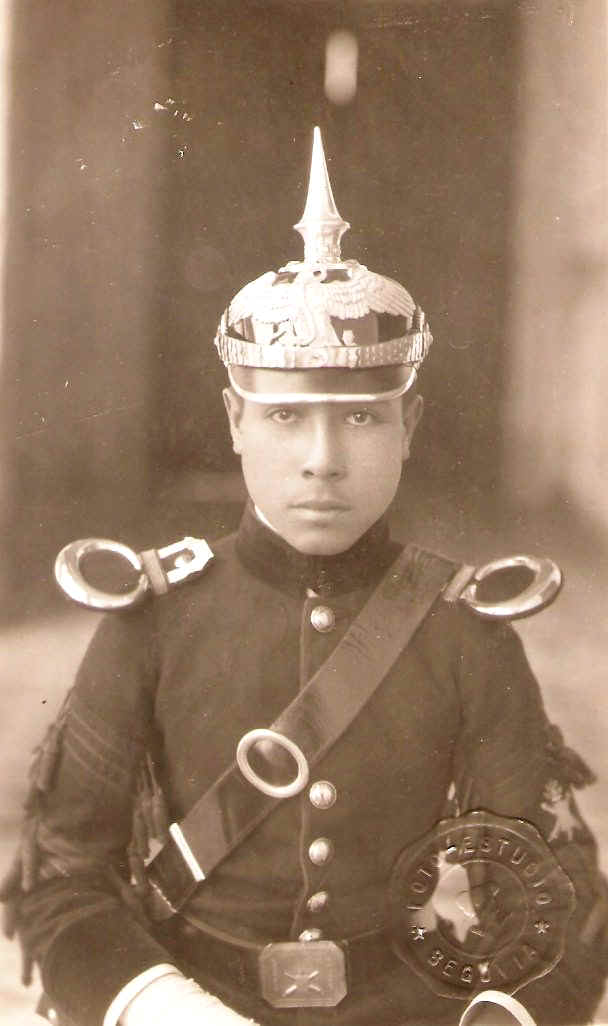
Reenvío a Uds. este Poema, con la Inolvidable Marcha
Dragona símbolo de los Militares Mexicanos de la Gloriosa Arma de
Caballería.
Me
lo envió mi compañero y amigo del Heroico Colegio Militar (
1964-1967 ) el Cap. 1° de Inf. Ret. Wilebaldo de la Torre G., nieto
del Extinto Gral. de Div. Don Juan de la Torre Villalbazo, ameritado
Dragón quien fuera Comandante de mi Padre el Cap. 2° de Cab.
Delfino Palmerín Mejía en el Primer Regimiento de Caballería de
Guardias Presidenciales y en el Décimo Regimiento del Arma, ( desde
fines del año de 1929 hasta Junio de 1935 y después en el 20
Regimiento a principios de los 40s ).
Desde fines de la década de los años 20s y principios
de 1930, el Corl. de Cab. Don Juan de la Torre Villalbazo era
el Capitán del Equipo de Polo de su Regimiento " LOS INVICTOS
POLISTAS DEL DÉCIMO DE CABALLERÍA " así los nombraban en los
periódicos, participaron en los III Juegos Deportivos
Centroamericanos en la República del Salvador obteniendo
MEDALLA DE ORO.
El equipo estaba integrado por:
Corl. de Cab. Juan de la Torre Villalbazo.
Cap. 1° de Cab. Jesús Gómez Vizcarra.
Cap. 1°. de Cab. Miguel Zavalgoitia Barrón.
Cap. 2° de Cab. Delfino Palmerín Mejía.
El General Don Juan de la Torre Villalbazo participó
en diferentes hechos de armas durante la Revolución, Campaña de la
Huertista, Cristera y la de 1929; Gómez Vizcarra, Zavalgoitia
Barrón y mi Padre egresaron del Colegio Militar con fecha 11 de
Diciembre de 1923, pertenecieron a la Legendaria Escuela de Caballería
fué su Comandante el Sr. Coronel de Cab. Don Rodolfo Casillas García,
siendo Cadetes integraron la escolta del Colegio Militar Institución
que una vez mas dió muestras de LEALTAD al Supremo Gobierno y al
Presidente de la República Don Venustiano Carranza a su salida de
la Cd. de México en Mayo de 1920, combatiendo en Apan,
Tepexpan, San Marcos, Rinconada, Aljibes y Apizaco y años después
en las Campañas Cristera y la de 1929 contra las fuerzas rebeldes
de los Generales Escobar y Caraveo.
Amable Lector, dirige tu mirada al cielo y los verás luciendo Uniformes de Gran Gala, Cascos Prusianos, se encuentran montando sus nobles caballos, galopando y saltando obstáculos efectuando carreras A LA COSACA O EN PIRÁMIDES lanzando al cielo con sus Trompetas los Marciales Toques de " CARGA EN LINEA, EN FORRAJEADORES Y LA DRAGONA. como lo hacían en los Torneos Ecuestres en el Ex Hipódromo de la Condesa, en los Desfiles de la Cd. de México, otras Ciudades y en el Colegio Militar. DESCANSEN EN PAZ DISTINGUIDOS DRAGONES
MEXICANOS.
" POR LA GLORIA DEL ARMA ".
Tte. Corl. Intdte. Ret. Ricardo R. Palmerín Cordero.
|
|
|
|
|
|
|
First Hispanic Superior Court Judge, Dean Bucci, Hits the Ground Running Charles Herbert Allen: first civilian governor, man who stole Puerto Rico. |
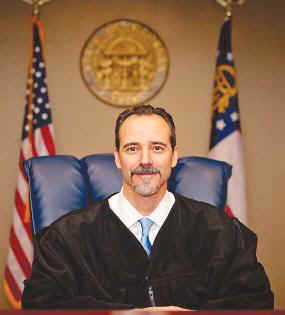 |
First Hispanic Superior Court Judge, Dean
Bucci, Hits the Ground Running
|
Bucci’s family is from Utuado, Puerto Rico, where his mother, like her father before her, worked as a school teacher. Though raised primarily in Georgia, Bucci briefly attended elementary school in San Juan, Puerto Rico. Bucci, 43, who has been practicing law for 18 years, was appointed to one of the judicial circuit’s three Superior Court judgeships on Jan. 7. Prior to being sworn in earlier this year, Bucci candidly stated in an interview with the Neighbor Newspapers that he anticipated a heavy workload once he took office as Paulding’s newest Superior Court judge. “Even with three judges, there was a lot on their plate. I expect to hit the ground running,” Bucci said. There is a reason why Bucci is hard at work; the Paulding Superior Court hears more than 7,200 cases each year. “What a historic honor for Judge Bucci. We applaud Gov. Deal for appointing him to the Superior Court,” said State Bar of Georgia President Patrise M. Perkins-Hooker. “The timing of his appointment is important as the Bar turns its focus toward programs that serve the growing needs of the under-represented in Georgia. The need to extend appointments to qualified members of the Hispanic community is important and will continue to demonstrate steady progress in the continuing efforts to diversify the judiciary in this state.” Prior to becoming the newest Superior Court judge in the Paulding Judicial Circuit, Bucci was a partner with Plumley & Bucci LLC. He is a former associate judge of the Paulding Juvenile Court and has been an attorney in private practice since 1998. Bucci is a 1997 graduate of the University of Georgia School of Law. He resides in Dallas, Ga., with his wife and two children. He has coached children’s baseball and soccer through the YMCA. His hobbies include tae kwon do, running and the outdoors. He and his family are members of West Ridge Church, where Dean has served as a volunteer in the children’s ministry. The State Bar of Georgia, with offices in Atlanta, Savannah and Tifton, was established in 1964 by Georgia’s Supreme Court as the successor to the voluntary Georgia Bar Association, founded in 1884. All lawyers licensed to practice in Georgia belong to the State Bar. Its more than 47,000 members work together to strengthen the constitutional promise of justice for all, promote principles of duty and public service among Georgia’s lawyers, and administer a strict code of legal ethics. Source: La Voz Sent by Dorinda Moreno pueblosenmovimientonorte@gmail.com |
|
|
Allen in Lowell, Maryland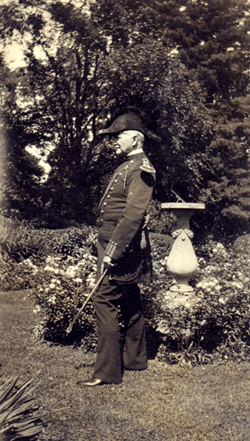 When we think of robber barons, the usual suspects include John D. Rockefeller, J.P. Morgan and Cornelius Vanderbilt. When we think of robber barons, the usual suspects include John D. Rockefeller, J.P. Morgan and Cornelius Vanderbilt. But one robber baron has gone under appreciated: the man who stole Puerto Rico. His name is Charles Herbert Allen, the first U.S. civilian governor of Puerto Rico. He served only 17 months, but that was all he needed to perform one of the most spectacular crimes of the 20th century. By the time Allen left Puerto Rico, the entire island was a crime scene. Allen hailed from Lowell, Massachusetts—famous for child labor and textile mill sweatshops. Though he never served in the armed services, he loved to dress in military regalia and have people address him as “colonel.” He arrived in Puerto Rico on April 27, 1900 like a Roman conqueror with a naval cannon salute, the 11th U.S. Infantry Band and a division of armed soldiers behind him. He marched through San Juan and into the Governor’s mansion.
|
|
|
Allen built the largest sugar syndicate in the world, and his hundreds of political appointees in Puerto Rico provided him with land grants, tax subsidies, water rights, railroad easements, foreclosure sales and favorable tariffs. | |
| By 1907 Allen’s syndicate, the American Sugar Refining Company, owned or controlled 98% of the sugar processing capacity in the United States and was known as the Sugar Trust. By 1910 Allen was Treasurer of the American Sugar Refining Company, by 1913 he was its President and by 1915 he sat on its Board of Directors. By 1930, Allen and U.S. banking interests had converted 45 percent of all arable land in Puerto Rico into sugar plantations. These bank syndicates also owned the insular postal system, the entire coastal railroad and the international seaport of San Juan. |
||
|
|
| By 1934, 80 percent of all the sugar cane farms in Puerto Rico (and their underlying land) were owned by a U.S. banking syndicate. Allen, and the American Sugar Refining Company, set the template for all of them.
Today the American Sugar Refining Company is known as Domino Sugar. As the first civilian governor of Puerto Rico, Allen used his governorship to acquire an international sugar empire, and a controlling interest over the entire Puerto Rican economy. *** Nelson A. Denis is a former New York State Assemblyman and author of the upcoming book, War Against All Puerto Ricans. http://www.latinorebels.com/2015/03/03/the-man-who-stole-puerto-rico/
|
|
|
|
| Celebration of the beatification of Oscar Romero, Archbishop of El
Salvador Confederates in the Jungles By Ron Soodalter SalvadorBoletín de Genealogías Colombianas, Editor: Luis Álvaro Gallo Martínez |
|
|
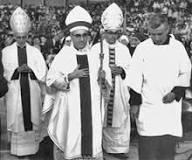 I IIn celebration of the beatification of Oscar Romero, Archbishop of El Salvador (1917-1980). A special evening Mass was celebrated at Christ the King parish, 2610 Perez, on May 20th, 2015. Dr. Antonio Ramirez gave a special reflection on his spirituality, his work for the poor and fight for justice and martyrdom. There was the unveiling of a mural honoring Archbishop Romero painted by Juan Hernandez. If you have any questions about this celebration please call the church office at (210) 433-6301. Sincerely, Rev. Mike Horan , Pastor Christ the King Catholic Church 2610 Perez Street San Antonio, Texas 78207 (210) 433-6301 Source; Carlos Gonzalez elgonzie@hotmail.com Gracias Carlos, There are many murals honoring Mons. Oscar Arnulfo
Romero, just google . . |
|
Confederates in the Jungles By Ron Soodalter, |
Confederates in the Jungles By Ron Soodalter, May 8, 2015 Disunion follows the Civil War as it unfolded. The Fourth of July celebration has all the hallmarks of a scene from “Gone with the Wind,” or a county fair in the most unreconstructed corners of Mississippi or Alabama. The men, dressed in Confederate gray shell jackets, yellow-trimmed frock coats, kepis and plumed black slouch hats, cross the dance floor to select their partners, elegant young women in colorful hoop-skirted ball gowns. Arm in arm, they step to the rhythms of ancient dances, as the fiddle and banjo strike up the old-time strains of “Dixie’s Land,” “The Yellow Rose of Texas,” “The Virginia Reel” and “Cumberland Gap.” Meanwhile, families gather around banquet tables loaded down with dishes that are the products of centuries-old Southern family recipes. Along the sidelines, vendors hawk rebel battle flags, Confederate campaign caps, and T-shirts, mugs and bumper stickers emblazoned with slogans like “Hell no, we won’t forget!” Nearby stands a small stucco-walled chapel. An old cemetery, shaded by Alabama pines and bougainvillea, contains over 500 graves with stones bearing such venerable Southern names as MacKnight, Miller and Baird, Steagall, Oliver, and Norris, Owens, Carlton and Cobb. The setting is, in fact, in the South – very far south, in Brazil. The Festa Confederada is held as often as four times a year in Campo, an area carved out of the sugar cane fields outside Americana, a modern city of some 200,000 residents in the state of São Paulo. All the participants are “Confederados” – fifth-generation descendants of Southerners who immigrated here in the days following the Civil War. The entire scene – the dress, the music, food, even the conversation – is a carefully rendered homage to those disaffected rebels who elected to leave their conquered nation and make a new home in a foreign land. By 1866, the future for countless Southerners appeared bleak. Not only had their bid for nationhood been destroyed; in many instances, so had their homes, their communities and their livelihood. The prospect of living under the harsh fist of the conquering North was more than many were willing to bear. As one Confederado descendant wrote, “Helpless under military occupation and burdened by the psychology of defeat, a sense of guilt, and the economic devastation wrought by the war, many felt they had no choice but to leave.” There were other reasons. For some, the prospect of laboring alongside former slaves was unacceptable. And then there were those adventurers who hoped to find gold or silver in what was being widely touted as a tropical paradise. Whatever their impetus, for tens of thousands of Southerners, the promise of a new beginning in a new land was irresistible, and Latin America beckoned. The Southerners’ knowledge of agriculture made them an attractive asset, and a number of countries, including Mexico, Honduras and Venezuela, competed to colonize the disaffected Americans. The most favorable offer, however, came from Brazil’s Emperor Dom Pedro II. Desperate to expand the cultivation of cotton in his country, he put together a proposal offering an impressive list of amenities, including the building of a new road and rail infrastructure for conveying crops to market. Brazil had been a strong ally to the Confederacy throughout the war, harboring and supplying rebel ships. And although Brazil had closed its ports to the African slave trade in 1850, it would not abolish slavery for another 38 years. Of all the Latin American nations, Brazil was the one with which the Southerners felt the strongest bond. Joseph Whitaker and Isabel Norris, two early Confederate migrants to Brazil. 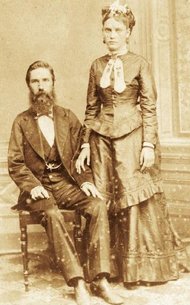 Credit Whitaker Family Archive Credit Whitaker Family ArchiveIn contrast to the often tired crops of the American South, Brazilian cotton was of a high quality, and could be harvested twice a year. Sugar cane, corn, rice, tobacco, bananas and manioc flourished as well, and Southern farmers, as well as doctors, teachers, dentists, merchants, artisans and machinists, envisioned a glowing future. Brazil would become the New South! The all-too-real obstacles – a foreign culture with a difficult language, strong native competition, an often hostile environment, a racially mixed society, a restrictive national religion, homesickness and the loneliness of distance and isolation – factored little in their plans. There are no accurate records documenting the exact number of émigrés; some historians have placed the figure at around 40,000, from across the former Confederacy, and even loyal border states. It was high enough, however, to necessitate the formation of colonization societies, with agents whose main functions were to gather information on living conditions and financial prospects, and to ensure a smooth transition. For most, the first destination was Brazil’s capital, Rio de Janeiro. The vessels in which they sailed ranged from small packets to large ships, and while some completed the 5,600-mile voyage in an uneventful month, for others the voyage was arduous, and sometimes fatal. The Neptune sank in a storm off the coast of Cuba, taking with it all but 17 passengers. And an outbreak of smallpox on the Margaret claimed the lives of nearly everyone aboard. When the Southerners disembarked, they were greeted by brass bands, parades and flowery speeches. One former Confederate general recalled, “Balls and parties and serenades were our nightly accompaniment and whether in town or in the country it was one grand unvarying scene of life, love and seductive friendship.” The emperor greeted many of the new arrivals personally, as the bands played “Dixie.” As he had promised, the new arrivals were given free temporary living quarters in a Rio hotel, and the food and accommodations far exceeded their expectations. Conditions would never be this elegant again. Dom Pedro’s grand promises of governmental support for the farmers went generally unfulfilled, through no fault of his own. Coincidentally, the year the Civil War ended brought the outbreak of the War of the Triple Alliance, in which Brazil played a major part. The booming economy of the previous decades collapsed, plunging the country into an economic depression. By the time the first Southerners arrived, the emperor was confronting enormous internal issues, and struggling with poor health. The colonists were left to make their own way. While most members of the Southern professional class settled in the larger cities, such as Rio and São Paulo, the rest chose to literally plant their roots farther down the coast or in the vast, dense interior. Their scattered colonies dotted a 250-square-mile stretch along the country’s east coast, and great distances often separated them. Many of the chosen locations were inhospitable and ill-suited for growing crops. Without the promised road and rail system, crops that did thrive often grew too far from the market. Farms failed, community leaders died and colonies fell apart under power struggles and losing battles with illness and the elements. The few planters who bought slaves and sought to replicate the old antebellum plantation system found only failure. Some disillusioned colonists returned home; others migrated to the most successful settlement — the Norris Colony, established in 1865 by Col. William Norris. The former Alabama senator had chosen the site carefully, and it soon became the most populous and productive American colony in Brazil, eventually containing some 100 families. And when the railroad finally did come through, the settlers built the beginnings of the nearby market town that survives today as Americana. Even here, though, life could be brutal. The former rebel Col. Anthony T. Oliver had immigrated among the first settlers, along with his wife, Beatrice, and two teenage daughters. Within the first year, Beatrice died of tuberculosis, followed shortly by both daughters. When locals denied his wife burial in the Catholic graveyard, Oliver donated a section of his land – dubbed “Campo” – for a Protestant cemetery exclusively for the Confederados. Soon, the colonists built a small chapel nearby, which became the center of worship and connection for the transplanted Americans. Hard though the life could be, many who chose their locations well and put in the work succeeded. Through the use of what the native Brazilians perceived as advanced cultivation methods and tools, the colonists’ crops flourished. In addition to raising native produce, they introduced such homegrown crops as watermelon and pecans. So popular was the “Georgia Rattlesnake” watermelon that by the late 19th century, Confederados were shipping 100 carloads daily from Americana to various parts of Brazil. Within a short time, the displaced rebels established a reputation as hard workers and as diligent and independent citizens. They did, however, go to great lengths to maintain their own identity. Although subsequent generations intermarried with the Brazilians, they never lost sight of their history and traditions. This was not always viewed in a positive light. Wrote one former Georgia planter in 1867, “The Anglo-Saxons are completely ignorant of amalgamation of thoughts and religion. Naturally egotistical, they do not admit superiors, nor do they accept customs which are in disagreement with their preformed ideas. They think it is their right to be boss. In my opinion … the Anglo-Saxon and his descendants are birds of prey, and woe to those who get in their way.” One clear indicator of the fierceness with which the rebel settlers maintained their identity is in their speech. Despite five generations of assimilation, the English language has survived, perfect and intact, among a number of the bilingual Confederados. Amazingly, although most have not visited the United States, their speech clearly reflects that of the American South. When Jimmy Carter, then the governor of Georgia, visited Campo in 1972, he was stunned: “The most remarkable thing was, when they spoke they sounded just like people in South Georgia.” The Confederados represent a human treasure trove for modern-day linguists. Throughout the past century and a half, scholars have puzzled over what the Southerners of the Civil War era actually sounded like. The Brazilian descendants’ English, in the words of one latter-day rebel, has been “preserved in aspic”; in its purist form, it stands virtually frozen in time, reflecting the pronunciations and speech patterns of their forebears, dating from the third quarter of the 19th century. Similar settlements in Mexico and other Latin American countries faltered; Brazil was the only place where the Confederate émigrés managed to carve a life and an extended community from the jungle, and to found a thriving dynasty. Today, the living descendants of Brazil’s original rebels are scattered throughout the country, and they enjoy the richness of a dual culture. They see themselves as Brazilians, but also as distinctly American – the last rebels of the Civil War. Says one historian, “They are proud to have Brazil as their mother country, and the United States as their grandmother country.” As one descendant, who learned English before he learned Portuguese, put it, “Actually, we’re the most Southern and the only truly unreconstructed Confederates that there are on Earth. We left right after the war, and we never pledged allegiance to the damn Yankee flag.” Ron Soodalter is the author of “Hanging Captain Gordon: The Life and Trial of an American Slave Trader” and a co-author of “The Slave Next Door: Human Trafficking and Slavery in America Today.” He is a frequent contributor to America’s Civil War magazine, and has written several features for Civil War Times and Military History. Follow Disunion at twitter.com/NYTcivilwar or join us on Facebook. Follow The New York Times Opinion section on Facebook and Twitter, and sign up for the Opinion Today newsletter, Opinionator http://opinionator.blogs.nytimes.com/2015/05/08/confederates-in-the-jungle/?emc=edit_ty_20150508&nl |
|
|
|
Calle 94 A Número 63-28 Mail: luis.a.gallo@gmail.com Teléfono (57-1) 2264081 Bogotá D.C. – COLOMBIA ISSN. 1794-8959 LA FERIA DEL LIBRO DE BOGOTÁ. Termina este fin de semana, la Feria del Libro de Bogotá, un evento muy comercial, con promociones muy atractivas para el público en general. Con respecto a temas de genealogía, le corresponde a uno, mirar muy detenidamente para ver que se encuentra, y lo mejor es recorrer los puestos de las Universidades y de las Gobernaciones, es así como en la Gobernación del Huila, se encuentra está el libro de la doctora Gómez Alvira, su obra sobre el apellido Alvira. Vimos como cosa curiosa en el pabellón de la Librería Panamericana, la oferta de un libro titulado “Gran Enciclopedia de los nombres de Personas”, en pasta dura y a un precio muy económico. Y en el Instituto Colombiano de Antropología e Historia, ICANH, instituto que heredó lo que había hecho el Instituto Colombiano de Cultura Hispánica, con temas de genealogía, en una forma clara de rematar los saldos que tienen de este material vendiéndolos a unos precios muy inferiores al costo. Algunos de ellos, casi regalados. El ICANH, como que quiere borrar de su memoria todo lo que tenga que ver con genealogía, este tema, está vedado para ellos. Allí se encontraban obras como: Antioquia, bajo los Austrias, (dos tomos). Genealogías del Nuevo Reino de Granada, los tres tomos. Índice de Dotes, Mortuorias y Testamentos…, La serie de libros como: Índice de documentos para la historia de Antioquia; y sus compañeros de índices. La ventaja de esta promoción, es que estos libros llegan a manos de estudiosos de las genealogías. LIBRO SOBRE EL APELLIDO DUARTE El señor Juan Carlos Duarte Forero, nos ha contado que tiene muy avanzado su libro sobre el apellidos Duarte, en Colombia. Su libro, relaciona el apellido Duarte, desde 1391, pasando por primeros Duarte en el Nuevo Mundo y finalmente de los Duarte en Colombia. Este material se puede comenzar a ver en http://duartehistory.wordpress.com 1 Y a su autor se puede contactar en: jcduarte45@hotmail.com PRESENTACIÓN DE LIBRO SOBRE SANTA TERESA Con el título de: Santa Teresa de Jesús y Pasto. Linaje de los Cepeda.Silvyo Pereira Solarte, presentará en su ciudad de Pasto, en los primeros días del mes junio, en los salones de la Cámara de Comercio, éste su libro sobre Santa Teresa, y la influencia de sus hermanos, los Cepeda y Ahumada, en la región de Nariño, Ecuador, Argentina, donde dejaron descendientes y muchos recuerdos materiales. De Santa Teresa de Ávila, se acaban de celebrar los 500 años de su nacimiento. LOS RUSSI EN COLOMBIA. Jorge Armando Russi Rojas, ha entregado a la familia Russi, su libro con la investigación sobre el apellido Russi en Colombia, labor a la que le dedicó varios años y diversos recorridos por la geografía de Colombia. El primer acto ha tenido en la ciudad de Ibagué, con motivo del encuentro en esa ciudad de un buen conglomerado de esta familia. Tiene proyectado en los próximos meses poderlo presentar en la ciudad de Bogotá. Tan pronto tengamos confirmación de la fecha avisaremos oportunamente. COMO ORGANIZAR UN ENCUENTRO DE FAMILIA María Emilia Naranjo, que acaba de tener una muy agradable experiencia en la organización de un encuentro familiar, ha resumido su experiencia en esta labor y ha presentado en su página misraicespaisas, un resumen en el que da orientaciones y comentarios para animar a otros apellidos a realizar esta actividad. Con este número del Boletín de Genealogías Colombianos, anexamos estas recomendaciones. Academia Costarricense Ciencias Genealógicas Acaba de presentar sus boletines números 116 a 118, que pueden ser consultados en la siguiente página Web: http://www.genealogia.or.cr/publicaciones.html#seccion2 Luis Alvaro Gallo www.genealogiascolombianas.blogspot.com Sent by Benicio Samel Sanchez |
|
|
|
| Maria Elizabeth del Valle Embry, an Outstanding Philippine-American Woman by Eddie AAA Calderón, Ph.D. Cynthia Alcantara Barker, The First Filipina Elected to a Government Office in the United Kingdom by Eddie AAA Calderón, Ph.D. Filipino American Attorney General Sean Reyes is in Washington, D.C. to combat human trafficking. by Jared Bray, May 14, 2015 |
Maria Elizabeth del Valle Embry, an Outstanding Philippine-American Womanby Eddie AAA Calderón, Ph.D.
It is indeed a great pleasure for me to devote
this month of June, 2015 by making Ms Maria Elizabeth
del Valle Embry the feature of my article. I have known Ms Embry via
cyberspace since the year 2010. Her championing the plight of the
Oversea Filipino Workers (OFWs) has really
caught my attention from the very start. She also introduced me to
Mimi Lozano, editor of Somos Primos, in August, 2011 and
suggested that I wrote an article for that magazine. I have since
written monthly articles for this magazine starting in September,
2011. I am happy that she made that introduction as I have enjoyed
writing for Somos Primos. Writing makes one not only
mentally active but productive as well as it gives a great
opportunity to create assortment of new, interesting, and important
ideas which can be shared to the readers. As writing is an important
mental activity, health professionals tell us that it is a good
deterrent to the onset if not the onslaught of senility.
I have called Ms Embry in Tagalog, the national
language of the Philippines, as Lakambini. Lakambini
is an honour title for a woman in our culture for her work, her good
character, and devotion to duty. In ancient Philippines before the
Spaniards came, Lakambini was a noble title for a woman. Lakan was
the male title for a ruler. I will be using the name
Lakambini as well as Ms Embry interchangeably for the rest of
this article.
I certainly would like to have Lakambini's picture
in this article but she has repeated told me that she is camera
shy and thereafter politely and graciously excused herself for
not granting my request. She has provided me a brief biography of her
life and voluntary work which I am referencing for this article.
The rest of her achievement which is too numerous to narrate
here is widely known in the facebook page accounts and I will cite one
particular source later. I would like to inform the readers that I am
using the names Lakambini and Maria Elizabeth Embry interchangeably in
this article.
Lakambini Maria
Elizabeth Del Valle Embry was born on March 27, 1949 in Paniqui in the
province of Tarlac, Philippines. Her paternal grandfather,
Thomas Embry, came to the Philippines from Texas in 1898
as a 2nd Lieutenant in the US Army during the Spanish-American
war. He had since settled in the Philippines after the war, raised a
family, and retired in Paniqui, Tarlac until he met the Maker in 1946. Lakambini's
maternal great grandfather was from Cuba and died there during
the Cuban Revolution. Her great grandfather's daughter Mrs.
Valentina Suarez-Valdez whose ancestral origins were Spanish
and Portuguese was the wife of Lakambini's grandfather, 2nd Lt.
Embry.
Lakambini's mother, Mrs. Narcisa
Juana Natividad del Valle, who was born in the Philippines, was
of Filipino, Chinese and Spanish ancestries. Her maternal grandfather,
Ponciano Estrella del Valle, also born in the Philippines, fought
during the First World War with the U.S. Army in Europe. Lakambini's
grandmother through Mrs. Narcisa Natividad del Valle was the daughter
of General Mamerto Natividad, also born in the Philippines, who
was in the Philippine revolution against Spain during the turn of the
19th century. See http://en.wikipedia.org/wiki/Mamerto_Natividad
for more information.
Lakambini's background has shown
her fighting spirit like her male ancestors, not in military
affairs but in civil matters and that is working for the
welfare of the OFWs especially in those countries where the observance
and enforcement of human rights laws for non-citizens are not observed
as a major priority.
In 1970 when Lakambini was 21
years old, she moved with her family to the U.S.A. She went
to school to be a nurse. Now a retired nurse residing
in Antioch, California, she spends most of her time being a very
active advocate for the OFWs. She has two married
children to Latin-Americans: a son to a Peruvian, and a daughter to a
Nicaraguayan.
Lakambini has become involved with the
OFWs starting the year 2010 after she became aware of
several human trafficking victims involving Filipinos in Los Angeles,
California and later in the Middle East and other countries. She began
contacting Walden Bello, a member of the Philippine Congress
(House of Representatives who has since retired last March, 2015) and
others later in the Philippine government like Foreign Affairs
Under-Secretary Rafael Seguis and our diplomats in foreign
countries including in particular Consul-General Raul Dado who is
at present stationed in Kuwait. Congressman Bello then visited Los
Angeles and investigated human trafficking allegations by the victims
and submitted a report to the Philippine Congress.
The United Nations Trafficking Protocol defines human
trafficking as:
(a) [...] the recruitment, transportation, transfer, harbouring or receipt of persons, by means of threat or use of force or other forms of coercion, of abduction, of fraud, of deception, of the abuse of power or of a position of vulnerability or of the giving or receiving of payments or benefits to achieve the consent of a person having control over another person, for the purpose of exploitation. Exploitation shall include, at a minimum, the exploitation of the prostitution of others or other forms of sexual exploitation, forced labour or services, slavery or practices similar to slavery, servitude or the removal, manipulation or implantation of organs;
Lakambini then decided to involve the U.S.
State Department by posting news items focusing on Philippine
human trafficking matter after becoming aware that the US had
been spending tremendous amount of funds for the Philippine anti-human
trafficking campaign. She said that the Philippine government, as she
had gathered from news and from the OFWs themselves, was not doing a
very good job in preventing human trafficking. The U.S. State
Department, as she describes it, gathers all these information from
the U.S. agencies, the Phil government, and other sources
including public contributions in their data base. She also states
that the US State Department has since published an annual
report based on these gathered materials on human trafficking
"in person".
The report according to Lakambini does not respond to
individual report as per their protocol so she has started to
monitor the activities of the recruitment agencies licensed by
the Philippine government that deploy Overseas Filipino workers (OFWs)
mostly in the Third World Countries. She has therefore begun submitting
report about these agencies to the U.S. State Department
annually and sharing this news to our OFWs who may need or are in
actual need of help. The OFWs have then started requesting assistance
from her via facebook communication and emails in finding
solutions and remedies to their problems. She says that every
problem encountered by the OFWs is unique and she has tried her best
to accord them whatever assistance she is able to muster
including her pleas to the government authorities especially
for justice the OFWs sorely need to remedy if not to ease their
problems. They include among other things their safe
return to the Philippines, being sold or being transferred to one
employer by the recruitment agencies to another employer without
the OFWs' consent, getting the salaries that were not paid to
them, withholding of travel and identity documents, and physical
abuses (forced labour, extra long hours of work without extra
salary, sexual abuses and rapes, beatings, verbal and inhuman
humiliations, sometimes being set up to be unwitting drug couriers,
etc.) which have to involve judicial action in both
the Philippines and respective countries they are staying. She has
then written frequently to our government officials both in the
Philippines, the host countries, and our diplomatic delegation
abroad for OFWs' assistance.
Lakambini continues to say that the assistance she has
sought for the OFWs and the efforts of the OFWs to get help from
other sources including OFWs groups is for a number of times very
"illusive." But that has not discouraged her from doing what
she has been doing and it has even given her more incentives to
work even harder. Some of her efforts have paid off as she has
reported a number of successes. She credits this from some
officials of our government who are also concerned with the plight of
our OFWs, and in particular former Congressman Walden Bello. In
addition let me quote her statement below:
"I did not do all these by myself (to
provide the needed assistance to our OFWs, writer's note) because
I have an informal group of folks helping me & Dr. Eddie as
we know you are a part of
my informal group who forwards and circulates my e-mails that
call the attention of Philippine government officials to the
distressful situation of the OFWs. Since everything that we do is all
online we don't have to use any funding from any govt or public
sources, the best part of my advocacy that I like best because I hate
to do any accounting & paper works
......it is very personally rewarding."
Of course Lakambini's generous humanitarian efforts have
generated good results and successes with the help also of others
in both the public and private sectors, but they have also
suffered many setbacks as abuses keep on recurring. The
OFWs, both as individuals and groups, have kept informing her of their
plight via facebook and Lakambini has then judiciously answered their
emails and also wrote our government officials back home and our
diplomatic delegation abroad for assistance. If the readers have
facebook accounts, they will be able to read her very intricate notes
and activities on our OFWs every day and you can view it at:
https://www.facebook.com/mariaelizabeth.embry?fref=ts
(note also that my own
facebook accounts and group.com emails also display the many thanks she has so far received from many OFWs for her invaluable assistance.)
The OFWs who are very grateful to her, former
Congressman Walden Bello, and other officials have thanked Ms Embry
for her indefatigable crusade for and in behalf of our OFWs
in their request for assistance and in the pursuit of justice. I also
have passed along via email to my numerous lists the sublime efforts
of Ms Embry. I also have received emails from the OFWs needing
assistance daily and do as much as I can to help them but I always
tell them to continue communicating with Ms Embry for further
help. I have kept telling them that she is the most effective
OFWs' advocate to date.
Because of the noble and very humanitarian action of
Lakambini, I have via emails recommended to many officials of our
government including the President, Vice President, Speaker of the
House, others, and recently Senator Juan Edgardo Angara to acknowledge
her officially as an outstanding Filipino. Senator Angara comes
from the province of my late father, and his grandfather Juan Calderón
Angara was a cousin of my father Plácido Angara Calderón.
Per the March 20 issue of Bagong Aurora Website, Senator Angara
has recently filed a resolution in the House of Senate "to
conduct a broad reexamination, in aid of legislation, of
the government's migration policies, including existing labor laws and
regulations, amid continuing issues, problems, abuses and
exploitations faced and experienced by .... OFWs." Refer
to:
As of this writing, I received a series of
successive emails from a distressed female OFW in one
of the Middle Eastern Country (Saudi Arabia) and I referred
her to Senator Angara. I also emailed Senator Angara of her
situation and ask for his help. When she shared to me her letter
to the Senator I told her that her unhappy situation should also
be brought to the attention of others. I therefore took the
liberty of sharing her situation and concern to a wider audience
via cyberspace communication as it may help those in
the same abusive situation as she is and they can relay their not so
good situations to the proper authorities for assistance. I have
received a facebook message from Ms Embry and later from the OFW lady
that the latter is now in the Philippine embassy. I
received later a letter from Senator Angara in answer to my email to
him:
"Your
message as well as the email messages of Ms. .... in
our yahoo account have been forwarded to our Chief of
Staff for initial review and appropriate action. Rest assured that you
will be notified as soon as feedback is available."
The OFW lady told me later that Senator Angara was one
of the officials who was able to help her move into the Philippine
Embassy shelter.
I now begin Io realise the importance of
having internet communication capability for our OFWs. Having a
cellular phone with email capability has really helped this particular lady
in distress to call for help and to later move out of her
employers' house to our Embassy shelter in Saudi Arabia. She was
able to inform me and Ms Embry of her situation while living with
her Saudi employers via cyberspace communication. I have also
found out from Ms Embry that the officers of the POLO/
OWWA (Philippine Overseas Labour
Office/Overseas Workers Welfare Administration) of
the Philippine Department of Labour and Employment (DOLE) who are
supposed to help our OFWs, forbid the OFWs from carrying
cyberspace communication instruments while in the Philippine
diplomatic delegation custody and that the former have confiscated communication
instruments if they are found in the OFWs' possession.
This was confirmed to me as true by the OFW now
staying in the Philippine Embassy shelter in Saudi Arabia. Refer
to facebook message of Lakambini which involved other OFWs
in other Middle Eastern countries at: https://www.facebook.com/mariaelizabeth.embry/posts/1152335828126224?
comment_id=1152740564752417¬if_t=like
Regarding the statement made by the OFWs that our
government authorities abroad prohibit them for using internet devices
while in our shelter abroad, our government may have reasons for
doing that. One may only conjecture and to provide a possible or
probable reason from the other side that the devices may
interrupt or create problems in the daily workings of our government and/or
the entire buildings where the OFWs are staying may be harmed by the
cyberspace communication electronically speaking. If the
prohibition were indeed the real case in toto, it may explain why
many of our OFWs being abused and staying in the shelter are
not able to communicate with the outside world, especially to their
relatives and friends, and to get the needed, expedited, and
effective help from other government officials. Lakambini, however,
exempts Consul-General Dado of Kuwait stating that that he
has allowed OFWs to have cellular phones with cyberspace communication capability
according to the statements given to her by the OFWs (Lakambini
always writes highly to me and to others of Consul-General Dado's
continued and consistent invaluable assistance to the OFWs)".
However, it is to be noted that the OFWs needing assistance are
able to make contacts via facebook to the outside world (to Lakambini,
myself, and others especially other government officials) and
describe their adverse situation and the outside world in
their desire to get assistance if they are allowed to keep the
cyberspace communication devices with them.
In going back to the issue of Lakambini Ms Embry getting the
official recognition our government for her work with the OFWs,
Lakambini has kept telling me that she does not need such official
recognition of her work as she, a very concerned person, is
very happy advocating for the OFWs and others without being
awarded or credited for her work. I keep telling her, however, that
she should receive the highest official Philippine award for her
sublime efforts to help our OFWs in need of assistance. After
all as I would also state this in my conclusion, our OFWs have
provided our country with billions of dollars in remittances and
investments each year. Being a shy person Lakambini informs me
again that an officlal recognition of her work from our
government is not necessary. I have not met the Lakambini
in person. Her very good character and excellent humanitarian work
for and behalf of our OFWs and others is nonetheless the
primary reason why I am paying her that much deserved attention
and tribute.
One thing more to say about the goodness and genuine
concern of Lakambini is that despite the fact that she has not felt
good lately and has to see a physician for her health, she continues
to work for the OFWs. Remember that she is in "el
verano tarde de la vida (late summer of life)"
but she continues doing the Lord's work. She has inspired many
people to work for the plight of the OFWs including myself, now
"en el otoño
de la vida (in the autumn of life)", who does not have
the same strength, youth, and vigour that he used to have
during the Spring and Summer of life. I do feel lately
tired, weak, and also have to see the doctor for some health
issue but my situation does not hinder nor make me take that
much needed rest of helping our OFWs like what
Lakambini is doing. I am amused to have sometimes missed lunch
and supper when I am busy sharing both good and sad news of the
plight of our OFWs and assisting them via internet among
other things. I see to it, however, that this focused activity
does not interfere with my taking care of my 10 and 7 year olds sons
when they get home from school, taking them to the parks and other
activities, and other important and basic things I have to do.
Before I submitted this article to Mimi Lozano of
Somos Primos for the June, 2015 issue I received a
facebook email from Lakambini stating that a Philippine Mayor, Ms
Helen Fernandez of the city of Dagupan, Pangasinan in
the Philippines, has rescued a female OFW being abused by her
employer in Saudi Arabia and began offering her assistance upon return to
her hometown. Lakambini describes Mayor Fernandez as very
active in assisting the OFWs especially those coming from her
province. Refer to:
Of course, there are alsohappy endings in this
saga and you can view them, both and not so good news at Lakambini's
facebook column:
As I stated in my previous Somos Primos
article, Lakambini's genuine crusade to help our OFWs is worth
mentioning again and again because they have
contributed much to the Philippine economy with their more than a
billion dollar remittance each year to their relatives
and doing substantial investments in the Philippines. Refer to:
http://somosprimos.com/sp2015/spjan15/spjan15.htm#THE
PHILIPPINES
One Million Filipinos and the Booming Outsourcing Business
Though a
resident of California for a very long time, Lakambini also is
concerned with the Filipino people in the Philippines but all over
the world and not solely for the cause of the OFWs
Also an Arab newspaper has written a good report on
the Filipinos and the OFWs. Refer to:
Imagine a World Without Filipinos by Abdullah Al-Maghlooth
And last and this may
not be directly related to this article, it is the month of June.
I am then being reminded of my May, 2015 article on the topic
of love and this has inspired me to digress from this
article. I could not help but mention that famous Mexican song Muñequita
Linda which is sung in English by the title Magic
is the Moonlight. I particular reference this song
because it mentions the month of June. Let me quote the first
stanza:
Magic is the moonlight on this lover's June
night
As I see the moonlight shining in your eyes.
It is indeed magic for all lovers every night
in June as this song is dedicated to all especially our
women as the light of the moon begins to shine in their eyes
when their hearts are being pierced by the arrow of Cupid/Eros .
|
|
Photos of OFWs |
|
|
| Every Sunday, overseas Filipino workers gather in huge numbers below the HSBC building in Central, Hong Kong, claiming the space for a day in a week but will never benefit from the bank’s riches they help create. - See more at: http://bulatlat.com/main/2011/01/22/street-shooter-teeming/#sthash.DM9NXdPi.dpuf |
 |
Mayor Bautista distributes
financial relief assistance to Overseas Filipino Workers. http://balita.ph/2011/03/11/qc-mayor-bautista- distributes-financial-relief-assistance-to-ofws -from-libya/ |
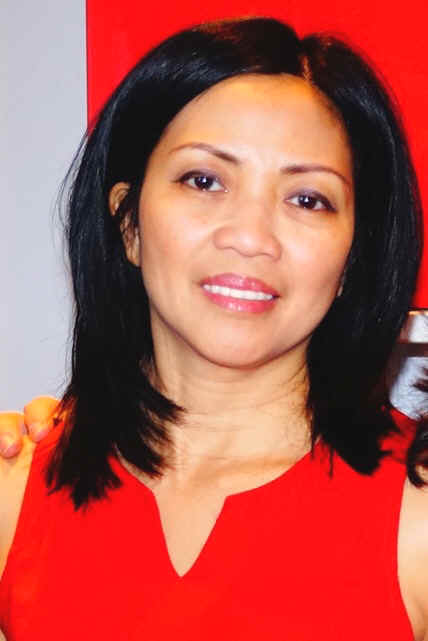
|
by
Eddie AAA Calderón, Ph.D.
|
| Thanks Mimi for your email and your interest for the first Filipina OFW who was elected as town council member of Elstree and Borehamwood in the United Kingdom. Here is my article. I am sure that my countrymates all over the world would love to see this article in the Somos Primos Magazine. I say all over the world because I share my Somos Primos articles to my countrymates and friends in my many facebook pages and email groups. There are at least 10 million Filipinos outside the Philippines, and they are included in the 100 million people we have in the Philippines. | |
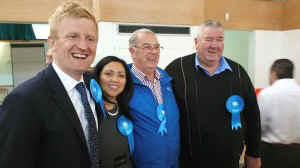
Filipina-British Cynthia Alcantara Barker with new Conservative MP Oliver Downden and co-councillors after elections on May 8, 2015 http://globalnation.inquirer.net/122771/first-ever-filipina-town-and-borough-councillor-elected-in-the-uk
In all my monthly articles for the Somos
Primos online magazine starting in September, 2011, I have written
good, cheerful, pleasant, and even outstanding things about my people,
the Filipino people. This is the first time I am writing about a
countrymate winning an elected position and in this case it is
in the United Kingdom (UK). We do have also Filipino elected
officials in the United States but again this is the first time that
we have one in the United Kingdom where our people have long found
their abode for a great number of years. Writing about this
subject matter for the month of June of this year did not occur to me
as I already have one for this month which I already submitted and
that is about Ms Maria Elizabeth del Valle Embry,
a very outstanding Filipina-American for her suburb and unbelievable
work for the Oversea Filipino Workers (OFWS). But Mimi Lozano, editor
of Somos Primos magazine, read an article I shared with her
and my long email and facebook page lists regarding the election
of a countrymate for the first time in the UK. She has shown interest for
this subject matter and therefore has convinced and thereafter
motivated me to write a second article for the June, 2015
issue of this magazine in addition to the one written for Ms. Embry.
For this matter, I would like to thank Mimi Lozano and the Somos
Primos Hispanic magazine for letting us Filipinos contribute articles
on this magazine sharing the good news about our people and their
situation all over the world.
It is then with pride and pleasure for me
as a Filipino to share with you the news of the first Filipino to
be in an elected governmental position in the United Kingdom.
British-Filipina Cynthia Alcantara Barker was elected as councilor of
the borough of Hertsmere and councilor of the town of Elstree and
Borehamwood in the recently held general elections in the United Kingdom
on Thursday, May 8, 2015. Cynthia Alcantara Barker's mother, a
school teacher in the Philippines, went to the UK alone as an OFW, leaving
her five children including Mrs. Barker as an OFW in the 70's to be
able to fully support financially her family. Considering her
mother a hero, Mrs. Barker later moved to the UK in the
mid-80's. She said that her mother made the same
sacrifice that most OFWs make by sending remittance back home while working
long hours to ensure that her family was well-fed and educated. Mrs.
Barker said that there are now four generations of her family living
in the UK. According to her older brother Gene Alcantara, an
immigration adviser in the UK, said that Mrs. Barker, his sister,
used to be married to an Englishman. What this story tells us is that it is an inspiration for Filipinos oversea to get involved in politics and to help themselves. This will also be an advice to Filipinos (OFWs) in the Middle Eastern countries where they number in millions to run for politics if that is an opportunity for them and therefore help solve the problems that have afflicted them since they set foot and live in those countries. And this article as read by my friends and acquaintances world wide via cyberspace will the help in getting this message to my countrymates in foreign countries where they have not thought of being involved in politics. This is Mrs. Barker's story in two abbreviated reports: 1) http://www.rappler.com/move-ph/balikbayan/news/92816-cynthia-barker-filipino-borough-councilor-elected-uk -------------------------------------- Cynthia Barker, a Filipino-British
who hails from San Pablo City in Laguna, has made history in the United
Kingdom
Barker ran to become Town Councillor for Elstree and Borehamwood
and Borough Councillor for Potter’s Bar Furzefield under the
Conservative Party, colloquially known as the Tories. Barker was
elected for both local positions. |
|
| Filipino American Attorney General Sean Reyes is in Washington, D.C. to combat human trafficking. by Jared Bray, May 14, 2015 |
|
UTAH – Filipino American Attorney
General Sean Reyes is in Washington, D.C. to combat human
trafficking. Reyes testified Thursday before Congress on an
undercover child trafficking sting operation he was a part of last
October in an effort to advance H.R. 515 — a law that would create
a notification system among countries about suspected child
trafficking.
Last October, Reyes joined Operation Underground Railroad to rescue 54 children from a child trafficking cartel in Colombia. Regarding his experience, Reyes said, “Having witnessed such atrocities with my own eyes last October, I can tell you this deplorable multi-billion-dollar industry continues to flourish and must be stopped.”
Video news coverage about a FilAm achiever...nephew daw ni late
president Magsaysay..
Sent by Eddie AAA Calderón, Ph.D. eddieaaa@hotmail.com |
|
|
|
|
La escultura de Don Juan de Oñate en Texas The Basque Connection to California Historia y ficción. Catalanes, los primeros españoles: Cataluña, constructora de España (04) José Antonio Crespo-Francés |
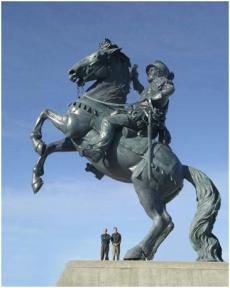 |
La escultura de Don Juan de Oñate en Texas busca hermanarse con una homóloga en Madrid
Los ciudadanos de El Paso, las autoridades civiles, personal del
aeropuerto, viajeros y curiosos quedaron impresionados por la fuerza y majestad del bronce
Colosal tamaño de la estatua dedicada en memoria de Juan de Oñate en la ciudad norteamericana de El Paso. Mandado por 18/03/2015 - José Antonio Crespo-Francés, Coronel de Infantería en situación de Reserva |
|
Desde antes de 1992 un grupo de entusiastas norteamericanos trabajan, de forma ilusionada y con el apoyo de mecenas
privados, para estudiar, mantener y difundir el legado que hoy forma parte del
pasado del suroeste de los Estados Unidos de América. Los trabajos de la Fundación XII Travelers Memorial of the
Southwest comenzaron con el objetivo central de revitalizar la ciudad de El Paso en Tejas, reactivar el desarrollo económico, el
turismo y la calidad de vida. El monumento es un homenaje a través de la escultura a la historia que honra a unos hombres y mujeres y
la diversidad cultural con la que contribuyeron al desarrollo histórico
de la ciudad y de la región. La Fundación se propone la erección de doce esculturas en broce que dramaticen la historia de El Paso y del suroeste norteamericano. En el mes de abril, previo a las celebraciones de día 30 de ese mes de 1998 (400 aniversario de la fundación de Nuevo México por el Capitán General y Gobernador Don Juan de Oñate, antecedente norteamericano de la Guardia Nacional) tuve la oportunidad de conocer personalmente, a través de Don Manuel Gullón de Oñate, tanto al maravilloso artista John S. Houser, como al Honorable Cónsul de España en el Paso, señor Sheldom Hall (†), quien desde años antes había tenido la iniciativa, de forma privada, de recorrer y promocionar en colegios y centros educativos de muchos de los estados que componen ese inmenso país para mostrar y explicar lo que fue el Primer Día de Acción de Gracias Español (The First Thanksgiving Spanish Day) anterior al de los peregrinos de Virginia. A partir de 1992 comenzó su andadura la Fundación Memorial XII Travelers del Suroeste, XII Travelers. Memorial of the Southwest, Inc., como organización sin ánimo de lucro, cuya mesa directiva presidía en ese momento Keith James (executive board of directors) que contaba con Antonio P. Piña como miembro de la mesa de asesores, se marcó como objetivo la pretensión de recordar dentro de un ambicioso proyecto el legado de aquel territorio mediante una serie de esculturas conmemorativas, en este caso al que nos referimos a través de una escultura grandiosa, en honor de Juan de Oñate Primer Gobernador y Capitán General de Nuevo México, primero en la lista de sus Gobernadores, elaborada por el artista John S. Houser y que nos habla de la historia de la Ciudad de El Paso en Tejas. Esta obra y la Fundación tratan de promover y recordar la rica herencia, la diversidad cultural, y la atracción hacia las tierras de El Paso del Norte y territorios circundantes, que dan entrada a lo que fue el gran suroeste español que iba de Tejas, pasando por Nuevo México, Colorado y Arizona hasta California, y de esa manera llamar la atención del público en general, estudiantes, educadores, visitantes, artistas y amantes del arte, e historiadores. Una grandiosa escultura ecuestre de Don Juan de Oñate, explorador y colonizador novohispano de los siglos XVI y XVII, fue instalada en la ciudad estadounidense de El Paso, Texas, en octubre de 2006, como la segunda de doce esculturas en bronce que se pretenden erigir dramatizando la historia de esta ciudad y del suroeste norteamericano. Un martes lluvioso, precisamente el día 24 octubre de 2006, la estatua ecuestre de Don Juan de Oñate a caballo fue descendida lentamente por dos grúas sobre la base del monumento a la entrada del aeropuerto de El Paso, obras de exquisita manufactura del escultor John Sherrill Houser y su asociado, Ethan Taliesin Houser. La estatua de bronce de 16 toneladas de peso, 36 pies de altura, unos 11 metros, fue anclada fuertemente a una base cimentada de casi tres metros por el equipo de la fundición Eagle Bronze Foundry. Este acontecimiento trascendental, culminó 8 años de esfuerzo en su delicada elaboración más dos años para llevar a cabo su fundición e instalación, lo que hace un total de 10 años. Los ciudadanos de El Paso, las autoridades civiles, personal del aeropuerto, viajeros y curiosos quedaron impresionados por la fuerza y majestad del bronce. El proceso de instalación se prolongó durante ocho días, del 24 al 31 de octubre. La comisión de la Fundación XII Travelers fraguó la conjunción de esfuerzos entre la ciudad de El Paso, el departamento de aviación, y el sector privado. Finalmente el jinete fue dedicado e inaugurado el sábado 21 de abril de 2007. Esta Fundación se propone, en un gesto similar al de la torre Eiffel entre París y Nueva York, como agradecimiento a España y al pueblo español, cree que el territorio de la Comunidad de Madrid es la representación capital de todas las comunidades españolas, y sería el lugar idóneo para la erección de una estatua gemela a la de El Paso que mantenga y recuerde el hermanamiento de las gentes y las culturas de ambos lados del océano para con ello reactivar una corriente permanente de intercambio en un canal de doble dirección en todos los campos, desde el cultural e histórico, al turístico y económico. Sobre el lugar idóneo se pueden citar muchos lugares, la propia capital Madrid, o la bella Aranjuez que fue protagonista en primera persona de todo lo que tuvo que ver con América desde los Austrias hasta Carlos III y las ayudas a los patriotas norteamericanos para la Independencia. *José Antonio Crespo-Francés es Coronel de Infantería en situación de Reserva Sent by Juan Marinez marinezj@msu.edu and Tom Saenz saenztomas@sbcglobal.net
|
|
|
|
|
The Pyrenees mountain range separates Spain and France. The Basque occupy the range, speaking both the language of their county and the Basque language of Euskara. Their relationships with one another do not appear to observe the political boundaries, interacting freely with each other. Many Hispanics researchers have stumbled upon Basque lines on their pedigrees. Between 1860-1890, Basque migrated to Southern California and entered into sheep raising and general farming. The following couples established homes and have descendants in Southern California: DOMINGO BASTANCHURY-MARIA OXARART BAUTISTA DUHART-————-MARIE YDELARAY JEAN PIERRE DAGUERRE—MARIE DUGENIA DUQUET JOHN ERRAMUSPE—————GRACE ETCHEVERRIA MIIGUEL ERRECA——————- MARIE ORONOS FRANCISCO ERROCART——JUANITA ESPINAL JOSE SANSINENA——————DOLORES ORDOQUI, 1ST YSIDORO ESEVERRI————DOLORES ORDOQUI,2ND MIARTIN LABAT————————MARIE CASSOU SALVADOR LABAT-—————YSABEL ARAMBELL STEVE OYHARZABAL-———-LUCY DARIOUS FELIX YRIARTE———————-CELESTINE LOREA BERNARD ARROUES————MARCELINA YTURI Researched by Editor Mimi . . . |
|
"Historia y ficción.
Catalanes, los primeros españoles: |
| http://www.elespiadigital.com/index.php/informes/9483-historia-y-ficcion-catalanes-los-primeros- espanoles-cataluna-constructora-de-espana-04 http://www.elespiadigital.com/images/stories/DEPOSITO/img13/cat4.jpg Poco después de la firma del Tratado de los Pirineos en noviembre de 1659, Luis XIV se apresuró a eliminar el régimen foral tradicional, sustituyéndolo por la legislación general francesa. En junio de 1660 firmó el edicto por el que ordenaba la supresión para el Rosellón y la Cerdeña del Consejo Real de Cataluña, la Diputación y todas las demás instituciones catalanas. Diez años después, el 2 de abril de 1670, el Rey Sol prohibía el uso oficial del catalán por ser “contrario a mi autoridad y al honor de la nación francesa”. Por el contrario, Felipe IV no tocó el régimen foral catalán, que quedó incólume. Por José Antonio Crespo-Francés Los tres trabajos anteriores de la serie: En la publicación digital www.elespiadigital.com el domingo 19 de abril de 2015 publica el trabajo titulado “Historia y ficción. Catalanes, los primeros españoles: Cataluña, constructora de España (01)”. http://www.elespiadigital.com/index.php/informes/9237-historia-y-ficcion-catalanes -los-primeros-espanoles-cataluna-constructora-de-espana-01 En la publicación digital www.elespiadigital.com el domingo 3 de mayo de 2015 publica el trabajo titulado “Historia y ficción. Catalanes, los primeros españoles: Cataluña, constructora de España (02)”. http://www.elespiadigital.com/index.php/informes/9365-historia-y-ficcion-catalanes -los-primeros-espanoles-cataluna-constructora-de-espana-02 En la publicación digital www.elespiadigital.com el jueves 14 de mayo de 2015 publica el trabajo titulado “Historia y ficción. Catalanes, los primeros españoles: Cataluña, constructora de España (03)”, para remarcar la importancia de Cataluña como elemento partícipe voluntario y decidido en la construcción de España en contra de lo que los separatistas difunden. http://www.elespiadigital.com/index.php/informes/9465-historia-y-ficcion-catalanes -los-primeros-espanoles-cataluna-constructora-de-espana-03 Sent by Juan Marinez marinezj@msu.edu |
|
|
|
|
Serra receives official nod for Sainthood by Nicole
Winfield |
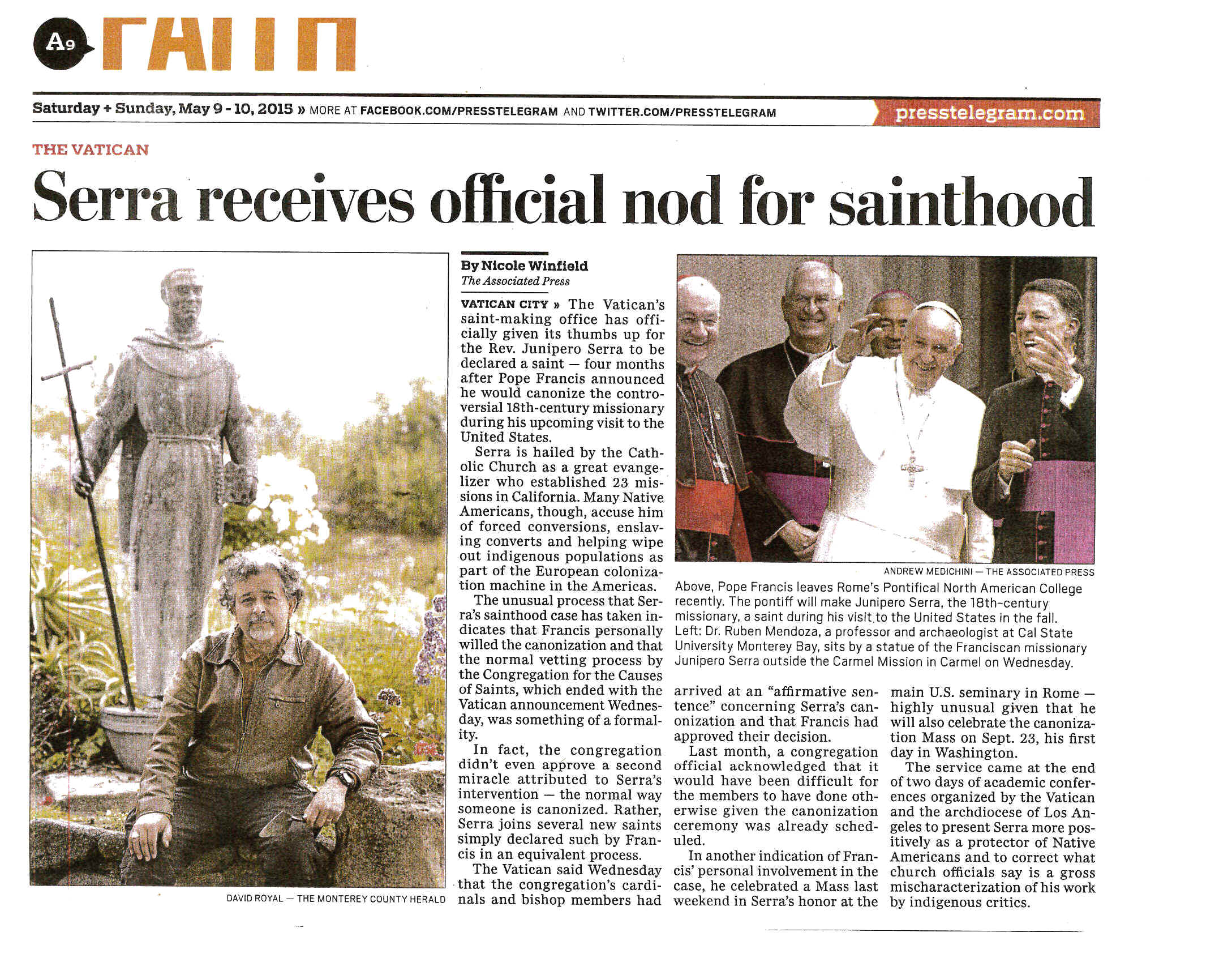
|
|
Lost Jews of China |
| In the Middle Ages, Jewish traders following the ancient Silk Road spice route settled in China, forming a community in the city of Kaifeng. Kaifeng was then one of the “Seven Ancient Capitals of China” and one of the world’s largest metropolises, with a population of close to one million. China’s ruling Song Emperors welcomed the Jews as welcome guests, bestowing seven family names that these Kaifeng Jews could use – some of which are still carried by their descendents in the town today.
Kaifeng’s Jewish community thrived at first, building its first synagogue in 1163, and eventually swelling to several thousand members. Smaller Jewish communities sprung up in other towns in China. Unlike many Jewish communities elsewhere, it seems that China’s Jews faced little or no persecution. Ironically, the lack of discrimination they faced in China seems to have hastened their end. A model of the Kaifeng synagogue at Beit Hatfutsot, The Museum of the Jewish People, Tel AvivA model of the Kaifeng synagogue at Beit Hatfutsot, The Museum of the Jewish People, Tel Aviv. Within a few hundred years, the Jews of Kaifeng began to drift away from their religion. They intermarried with their Han Chinese neighbors and gradually lost their Jewish knowledge and traditions. When Kaifeng faced a devastating flood in 1642, its small Jewish community was able to recover and rebuild their synagogue. When Kaifeng was again heavily damaged by floods in 1841 – which wiped away the town’s sole remaining synagogue, among other buildings – the Jewish community never rebuilt. |
|
|
LOS ANGELES COUNTY
ARCHAEOLOGY
PHILIPPINES
SPAIN
|
06/01/2015 11:06 AM